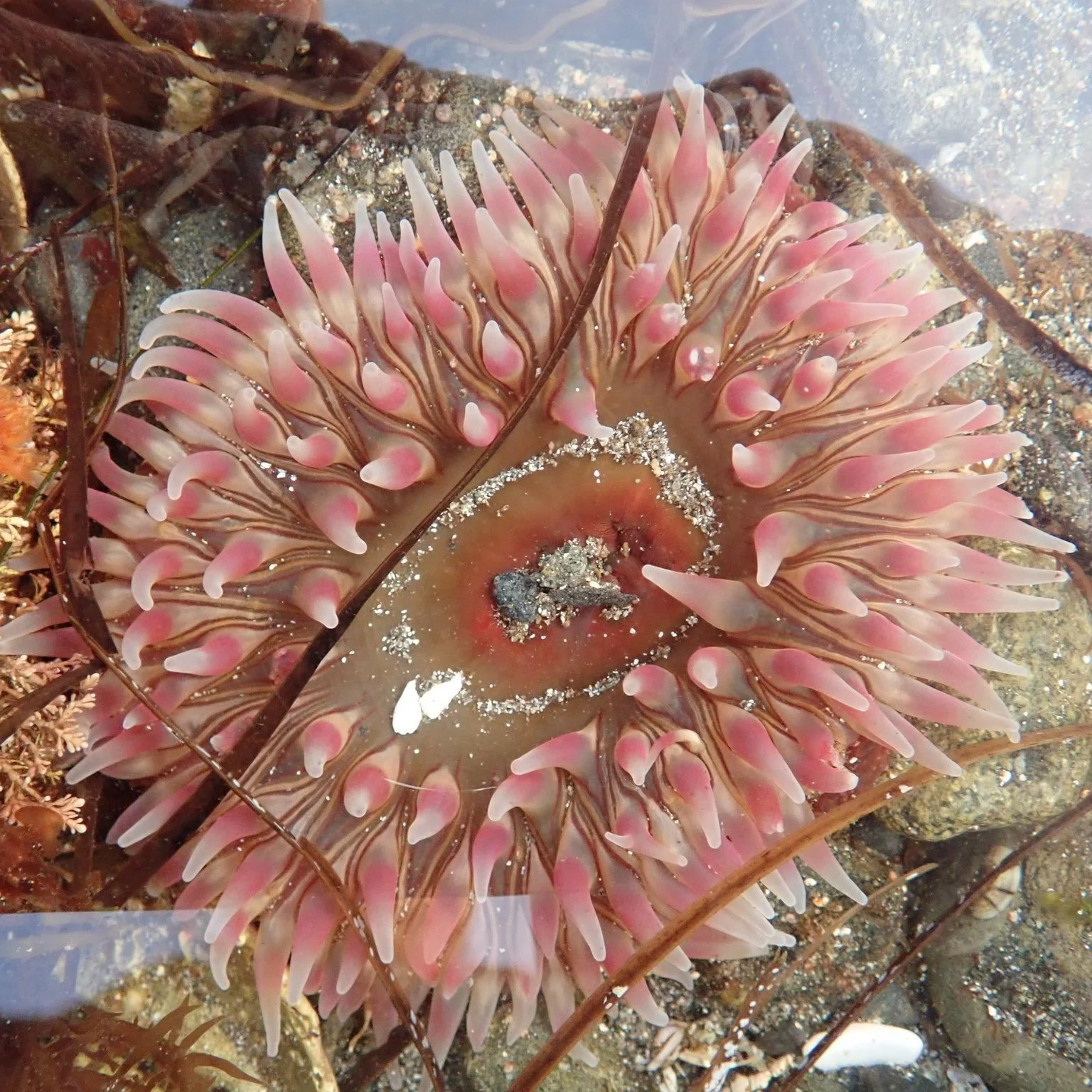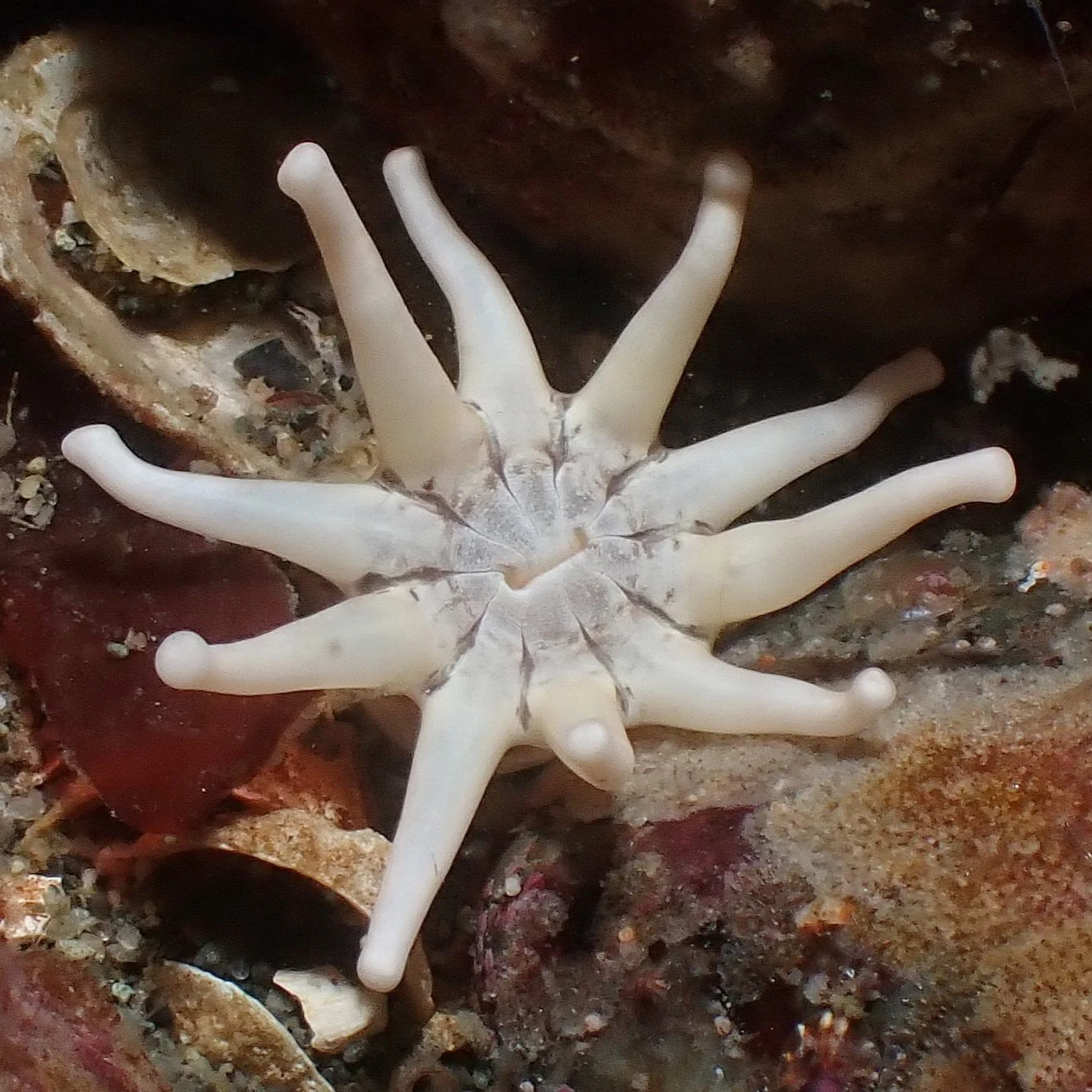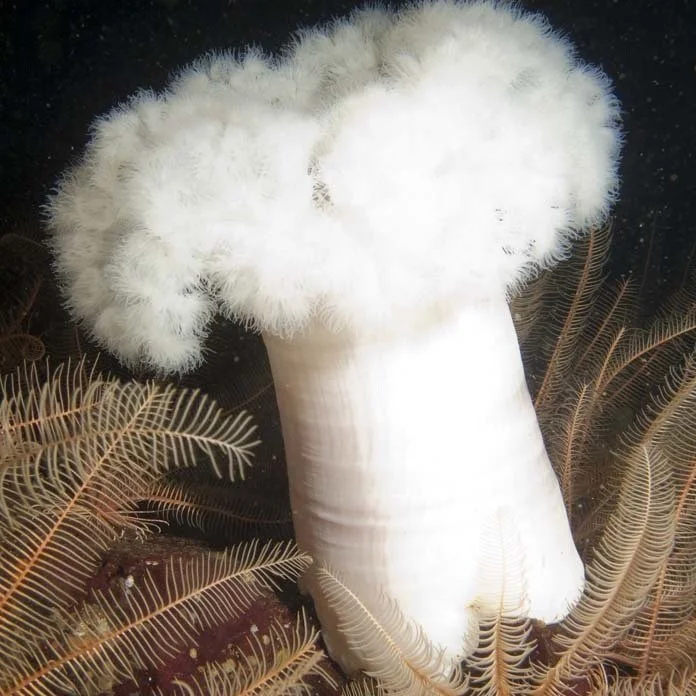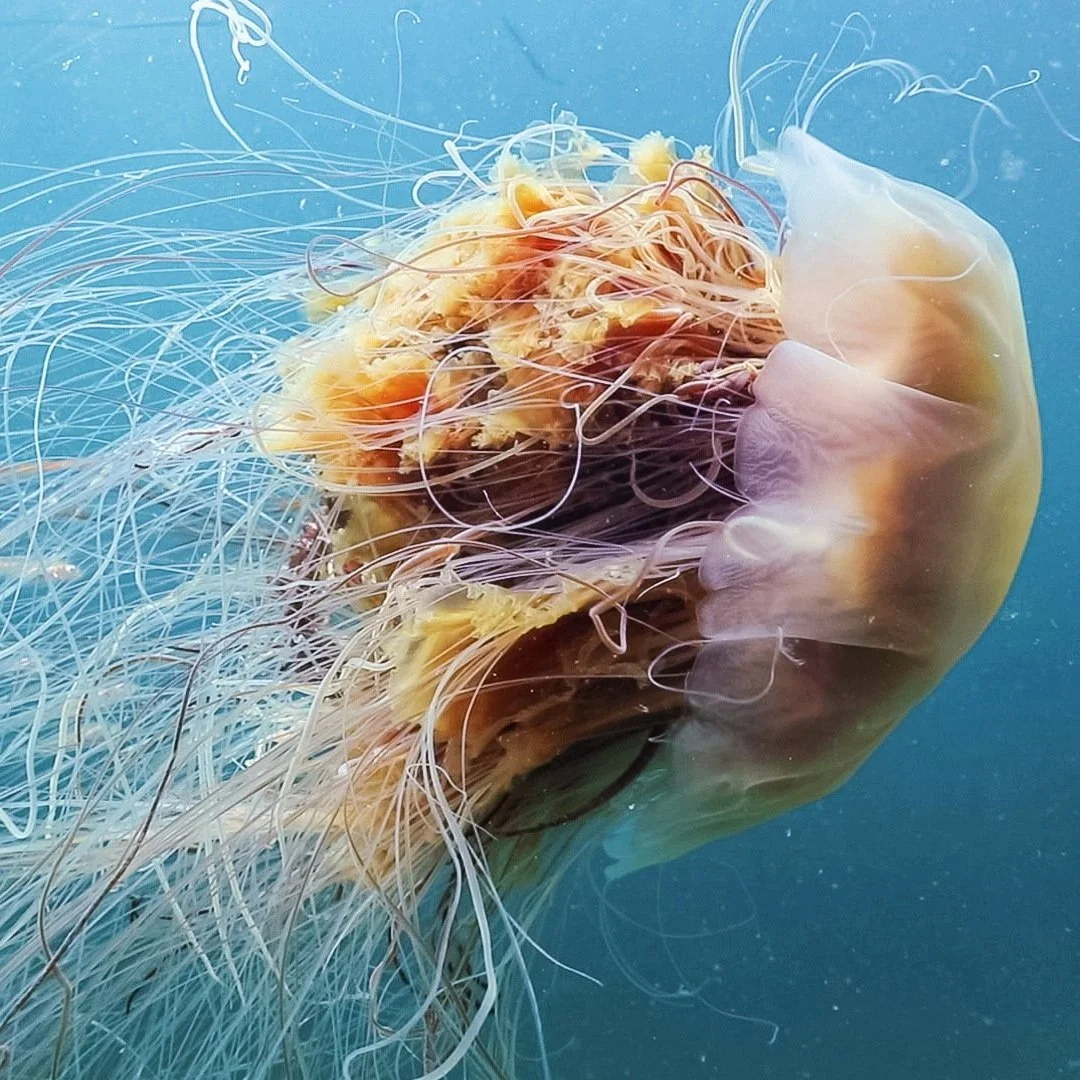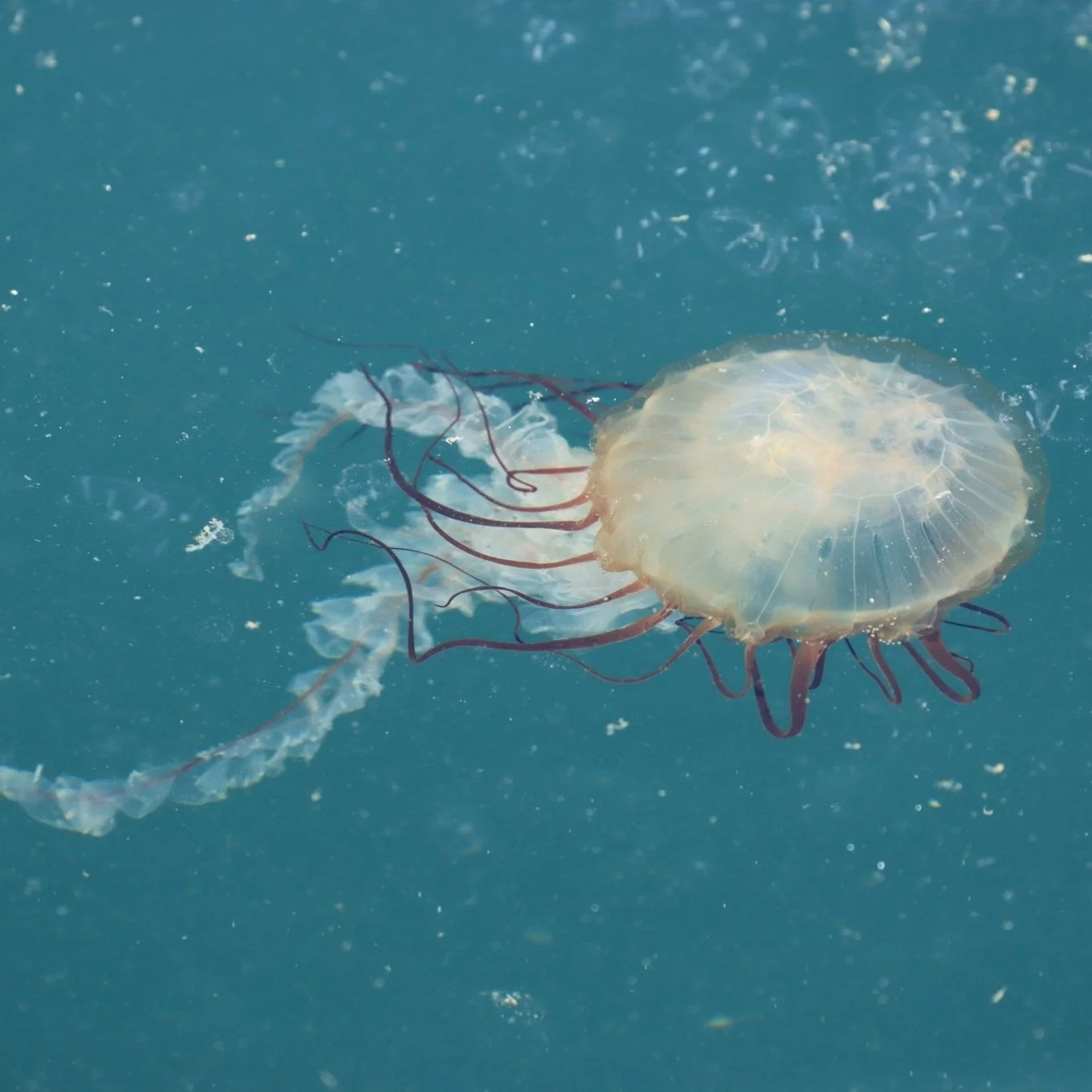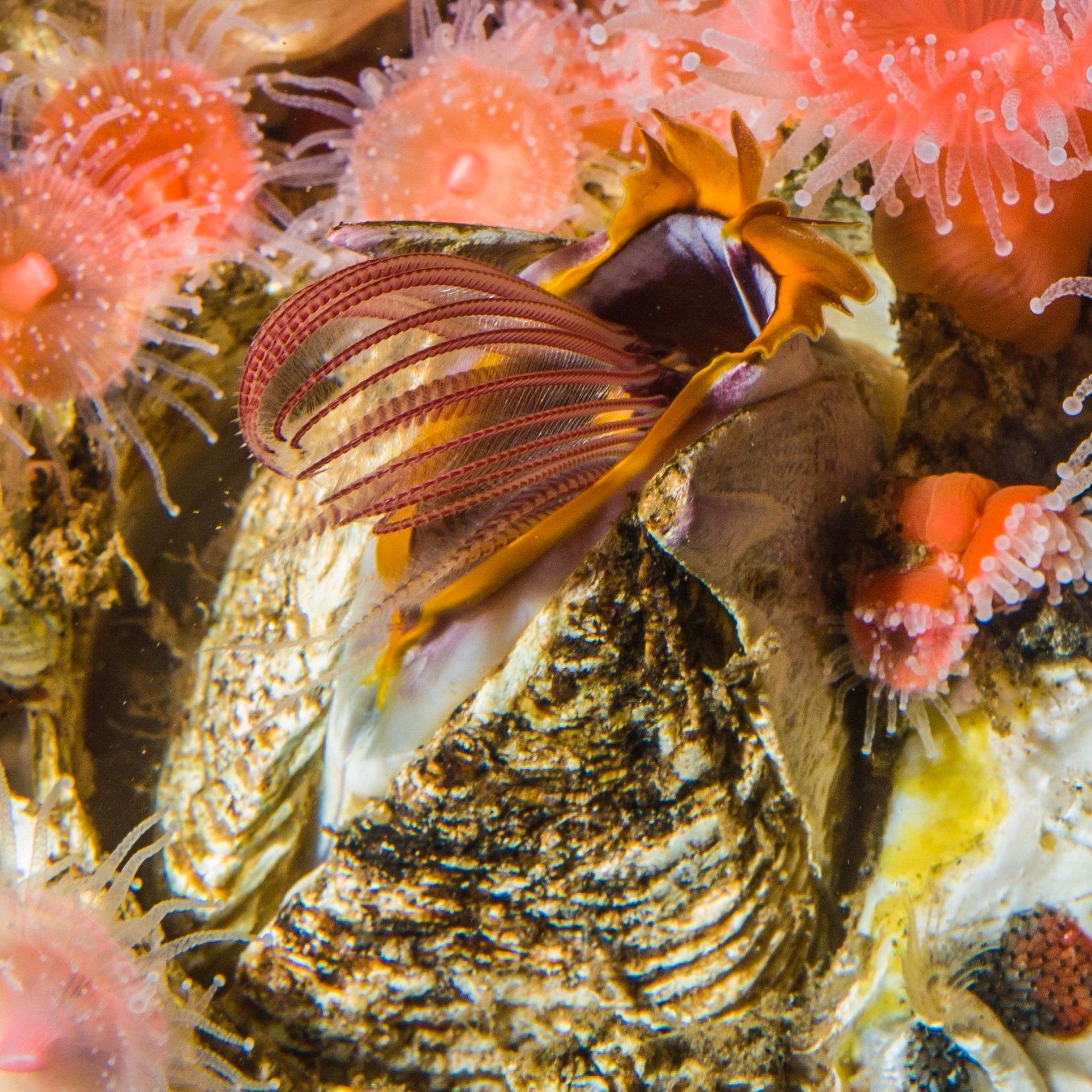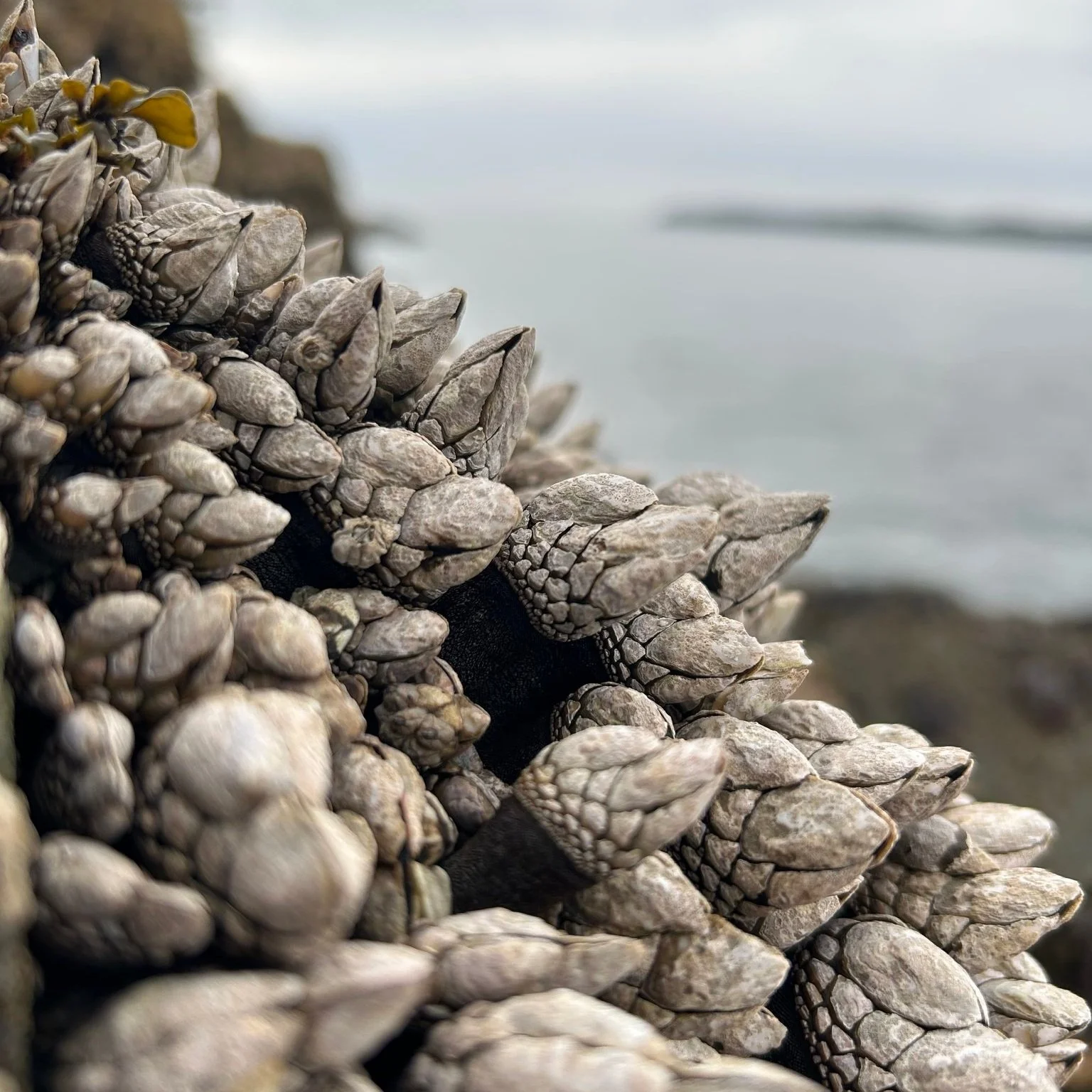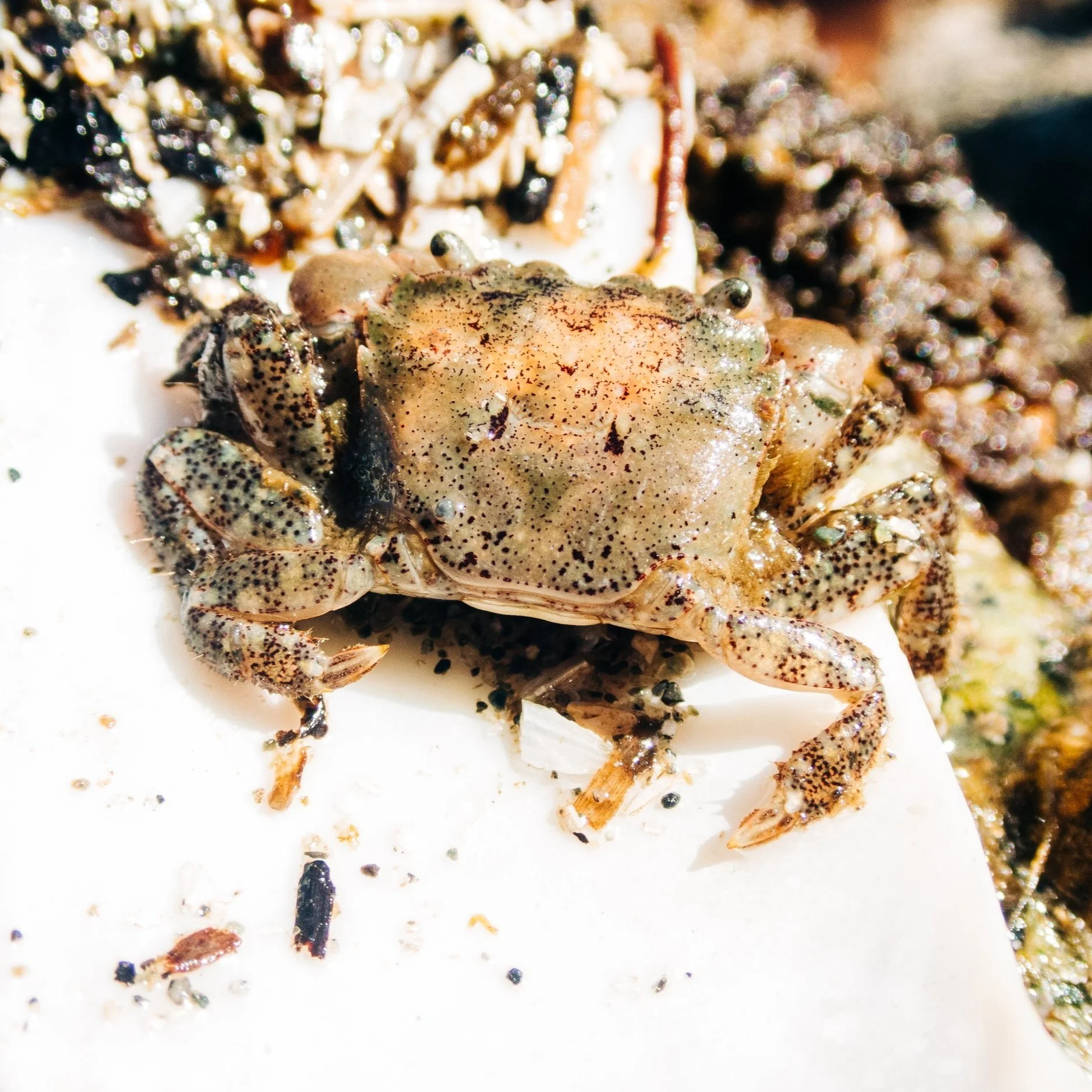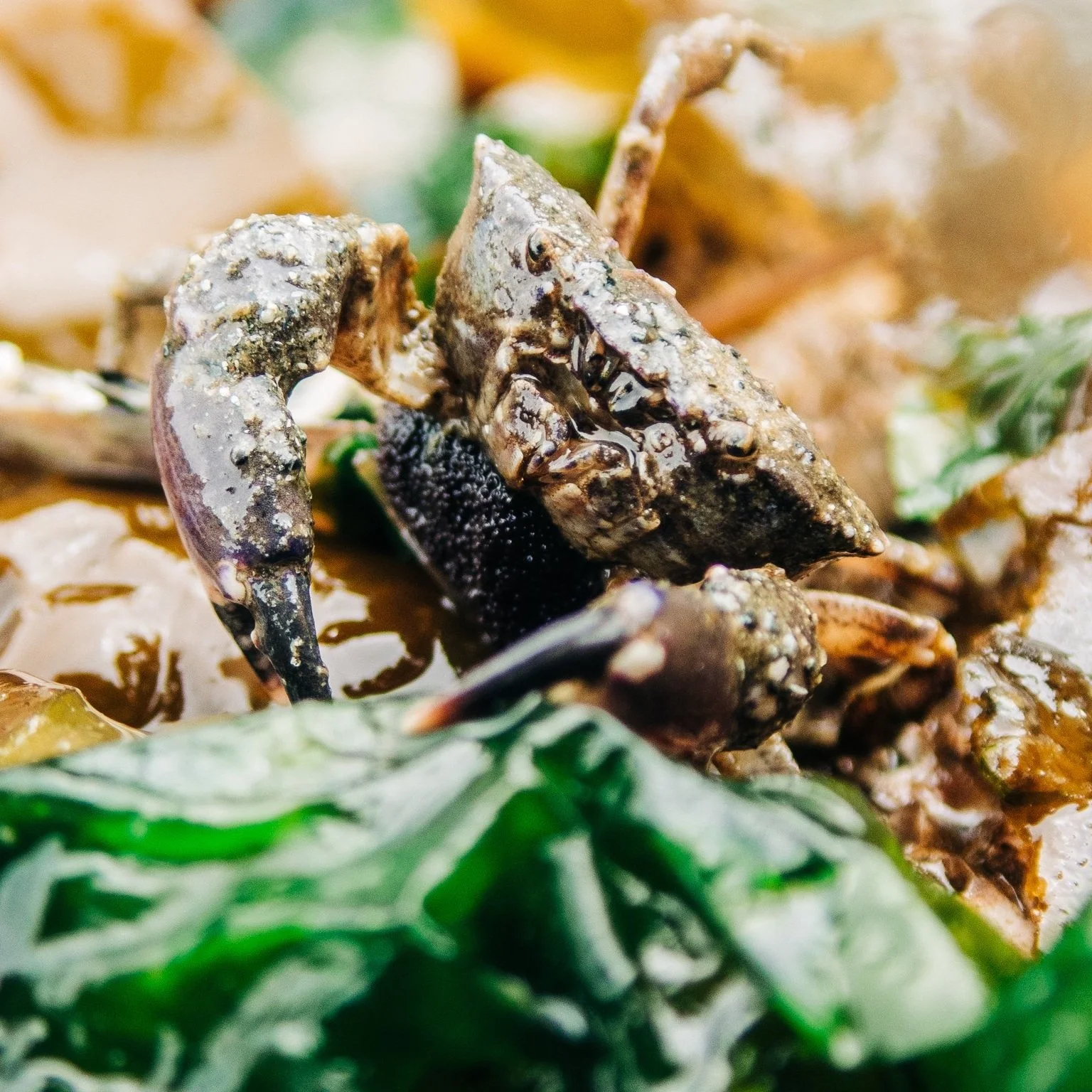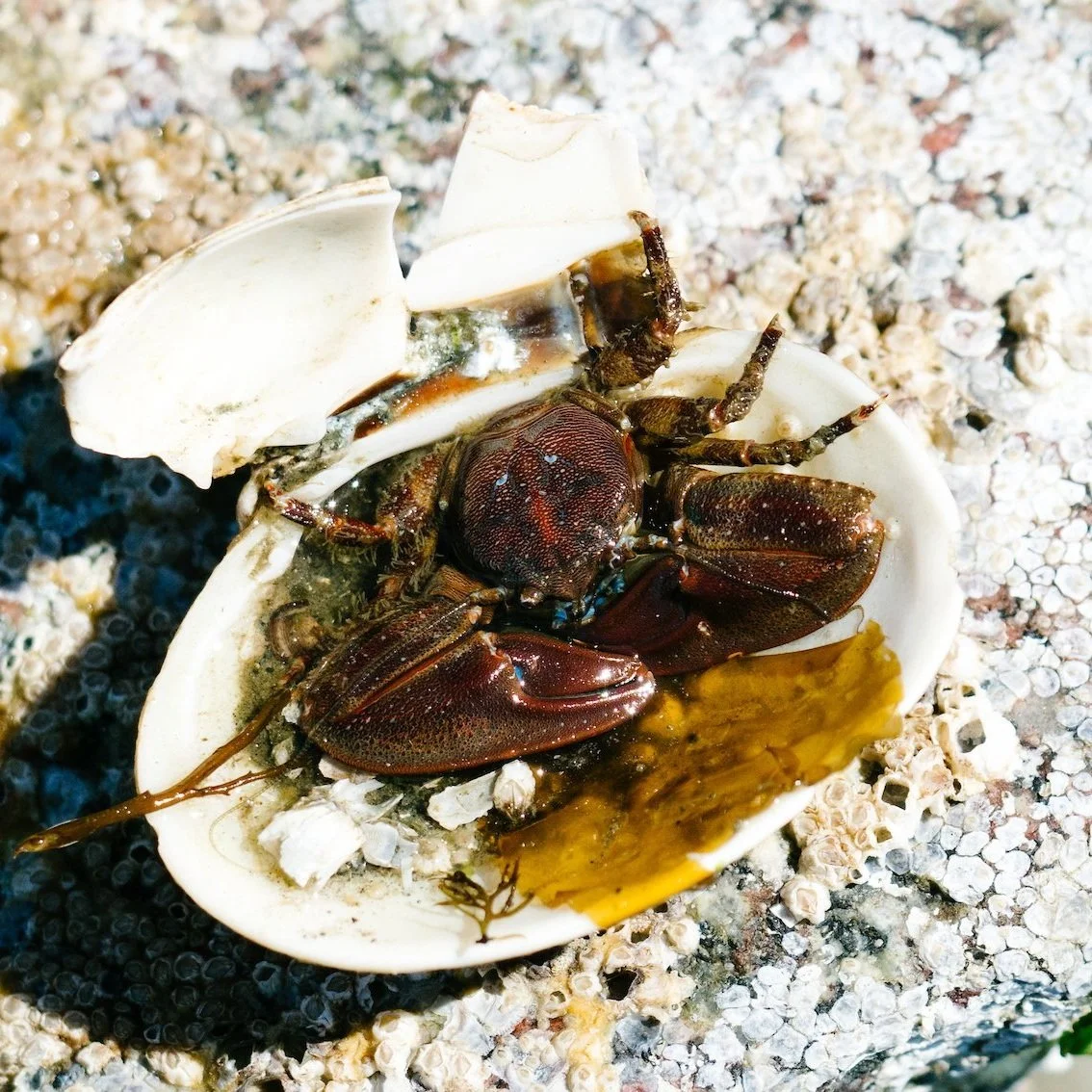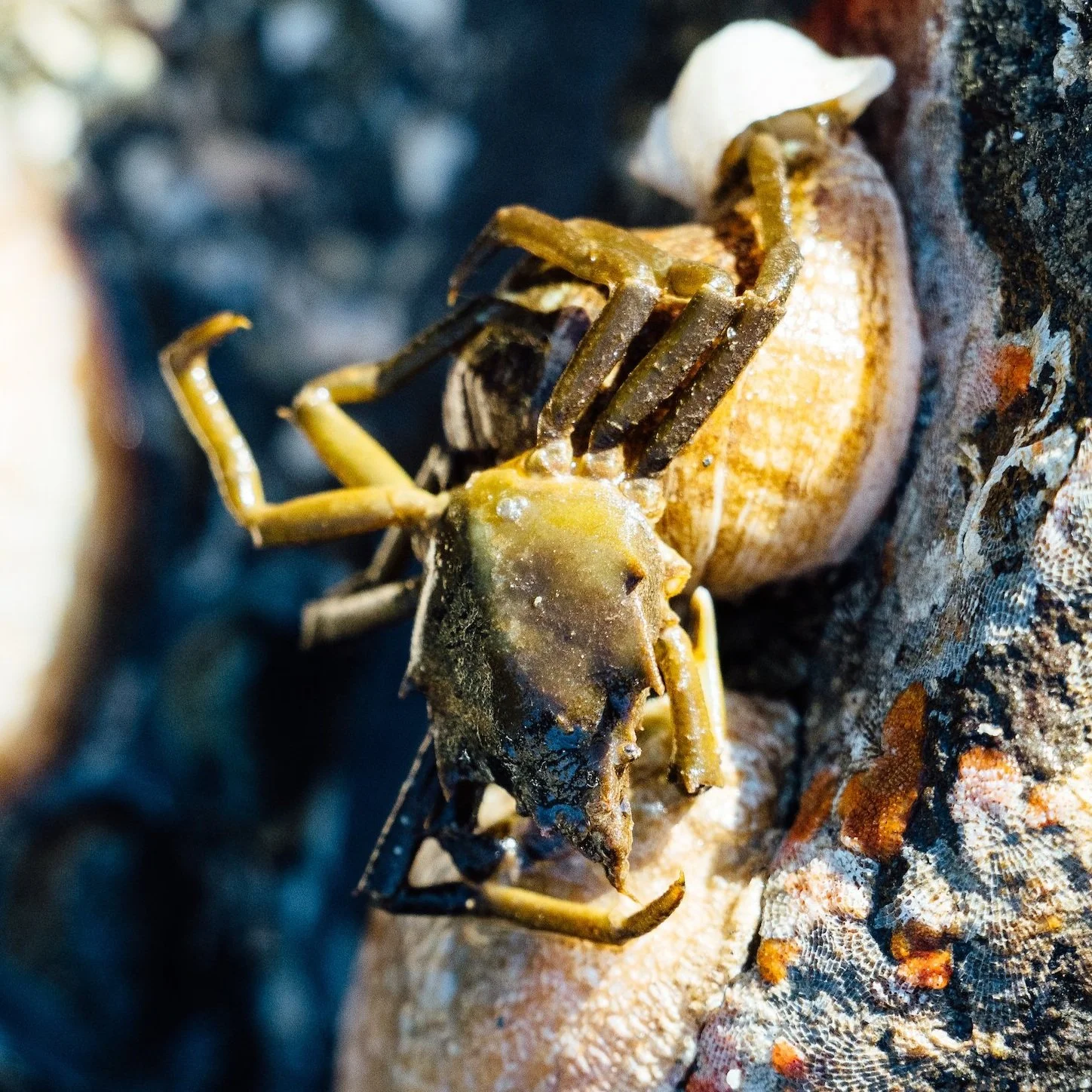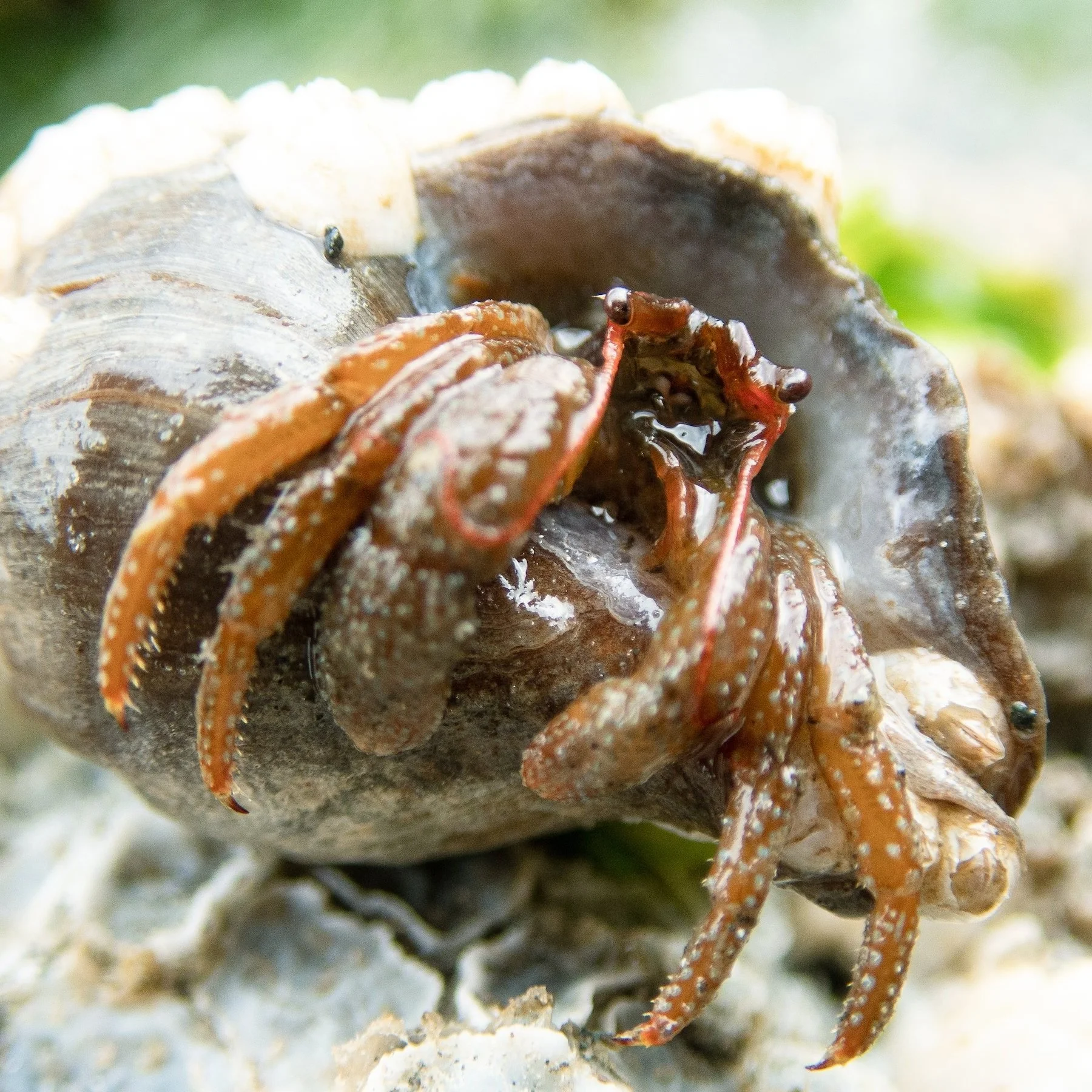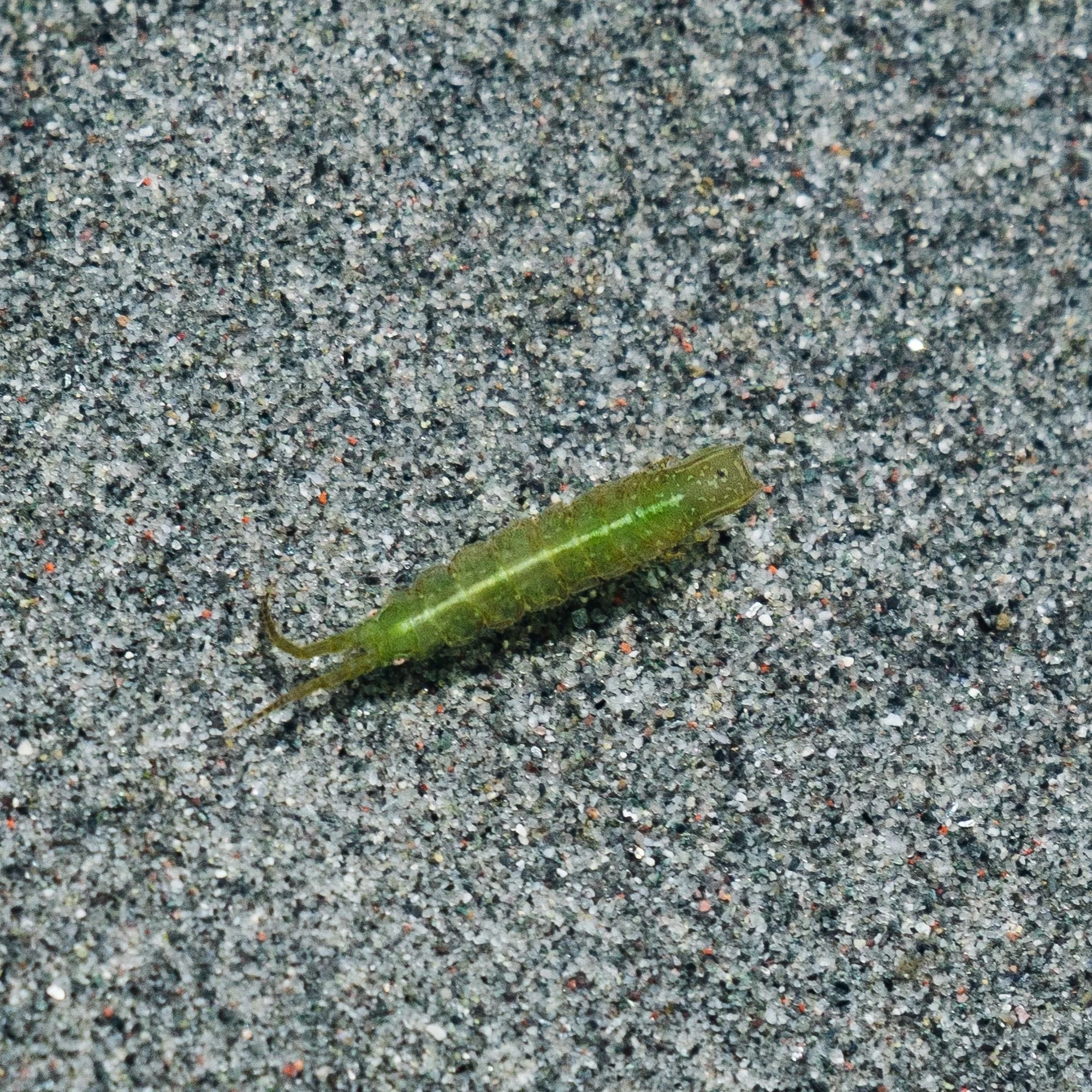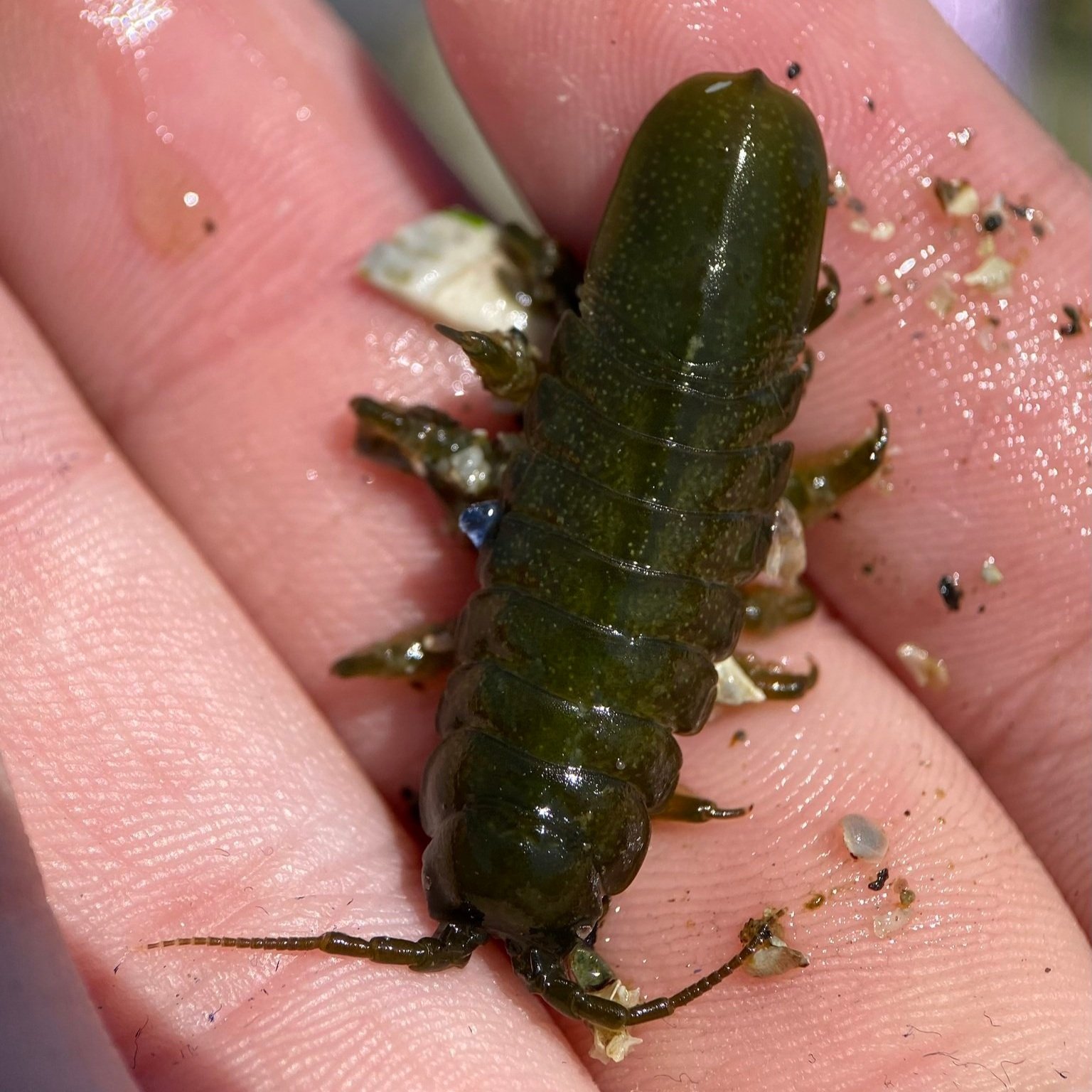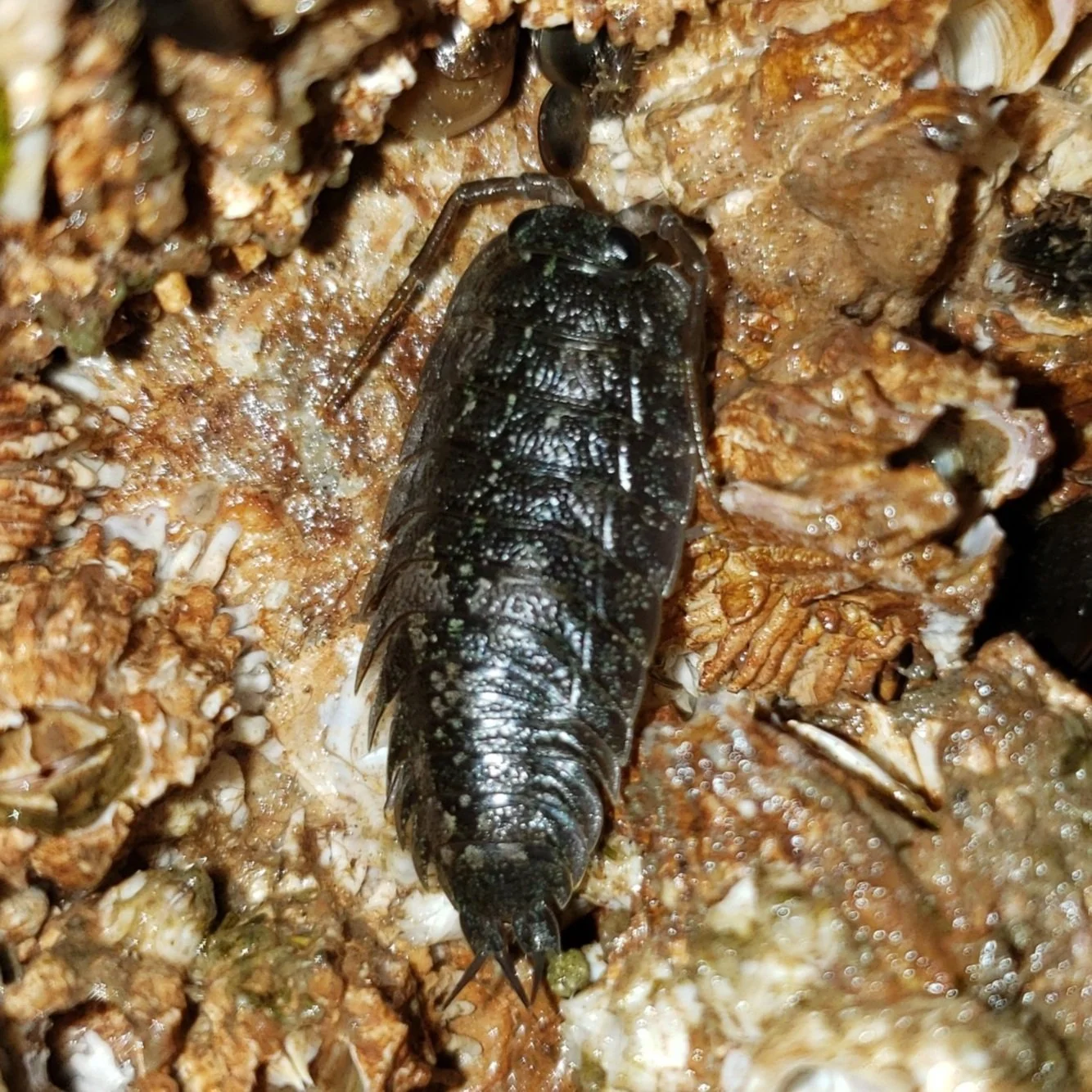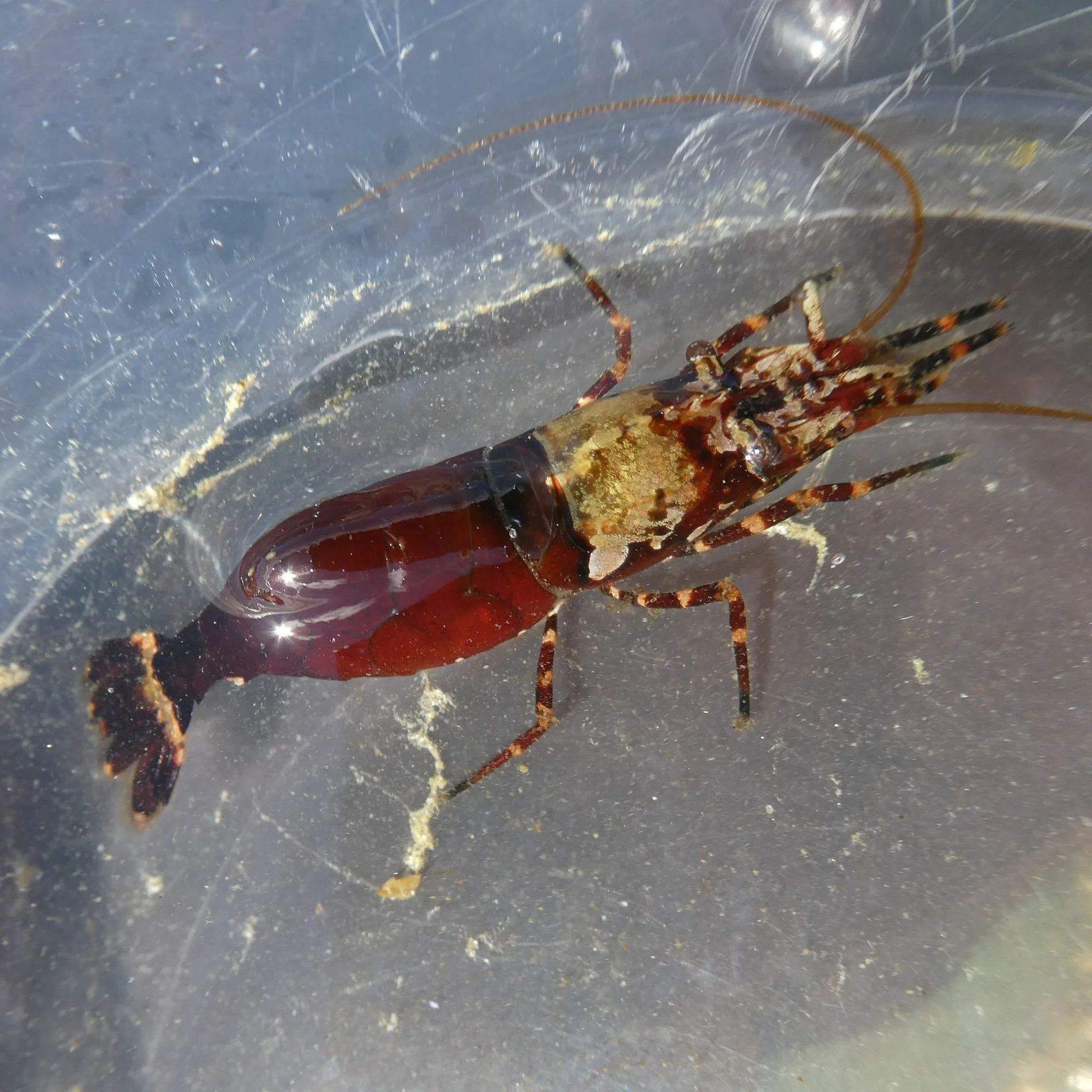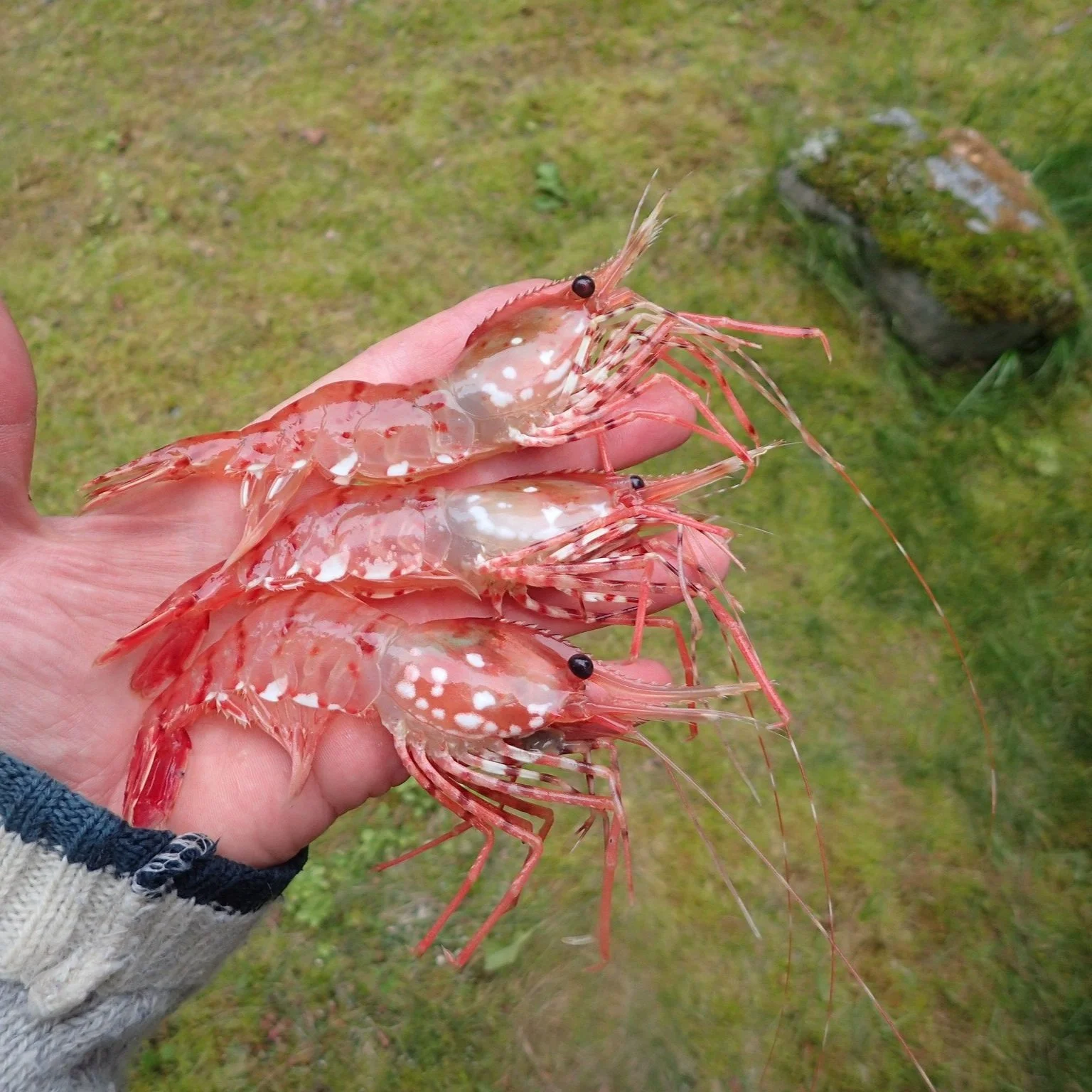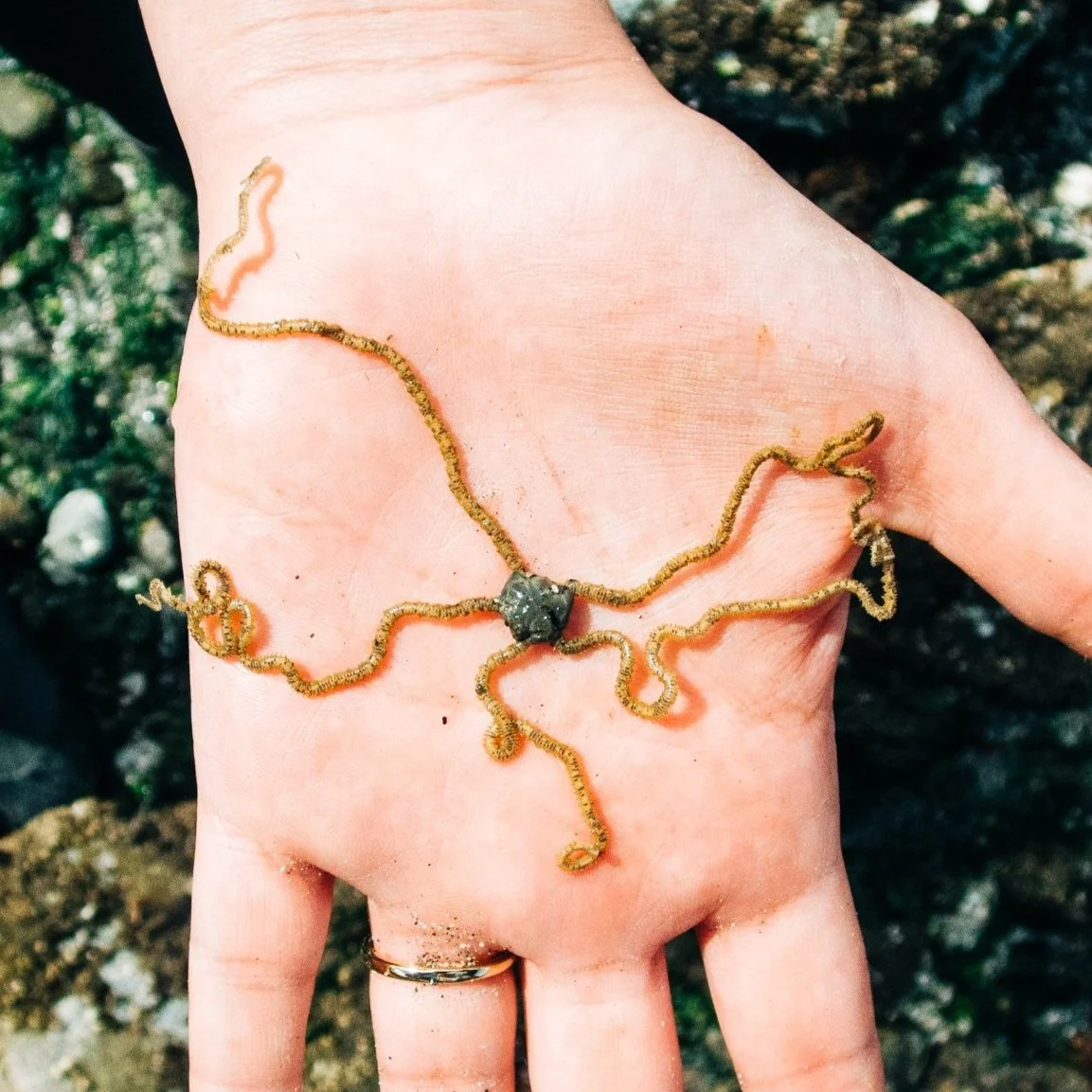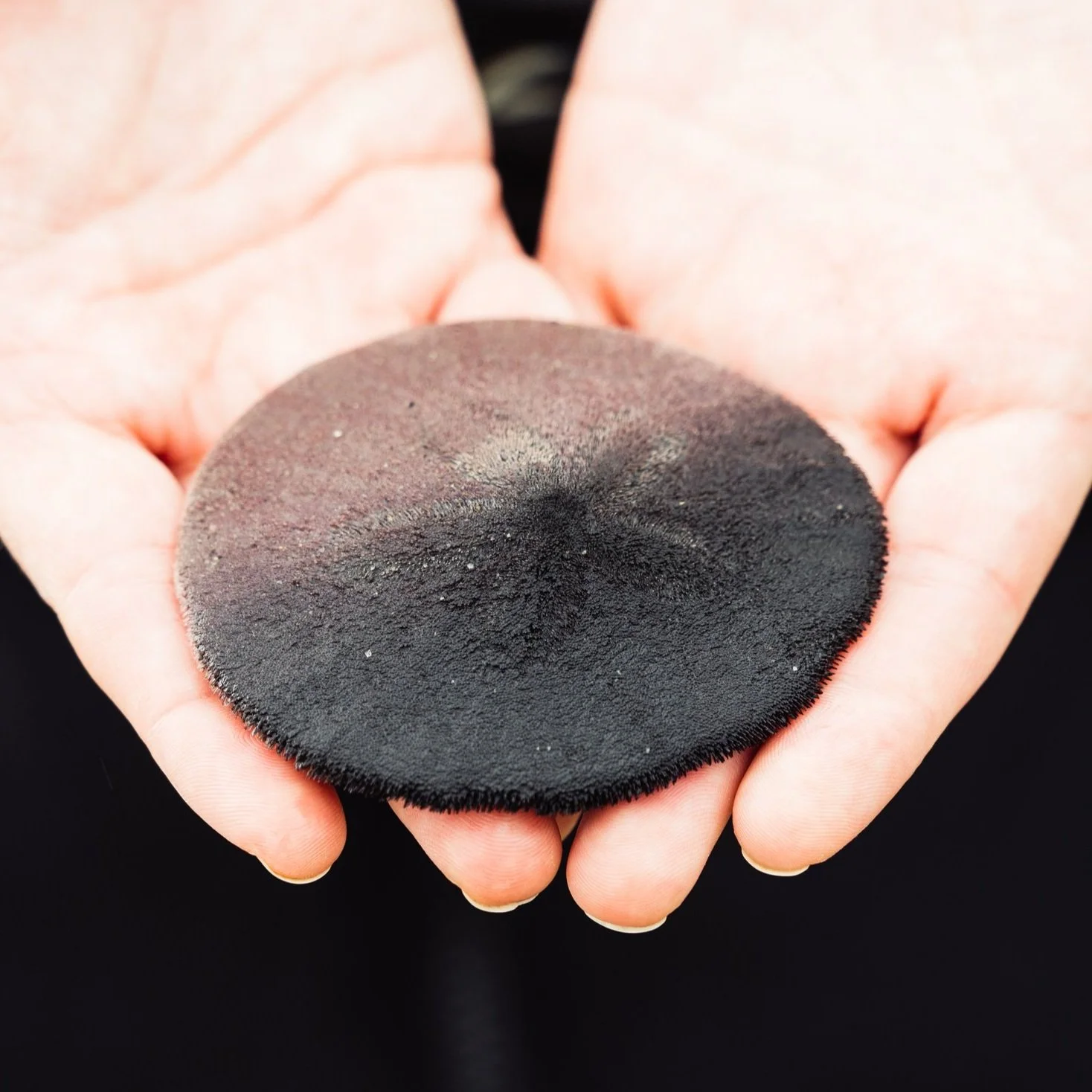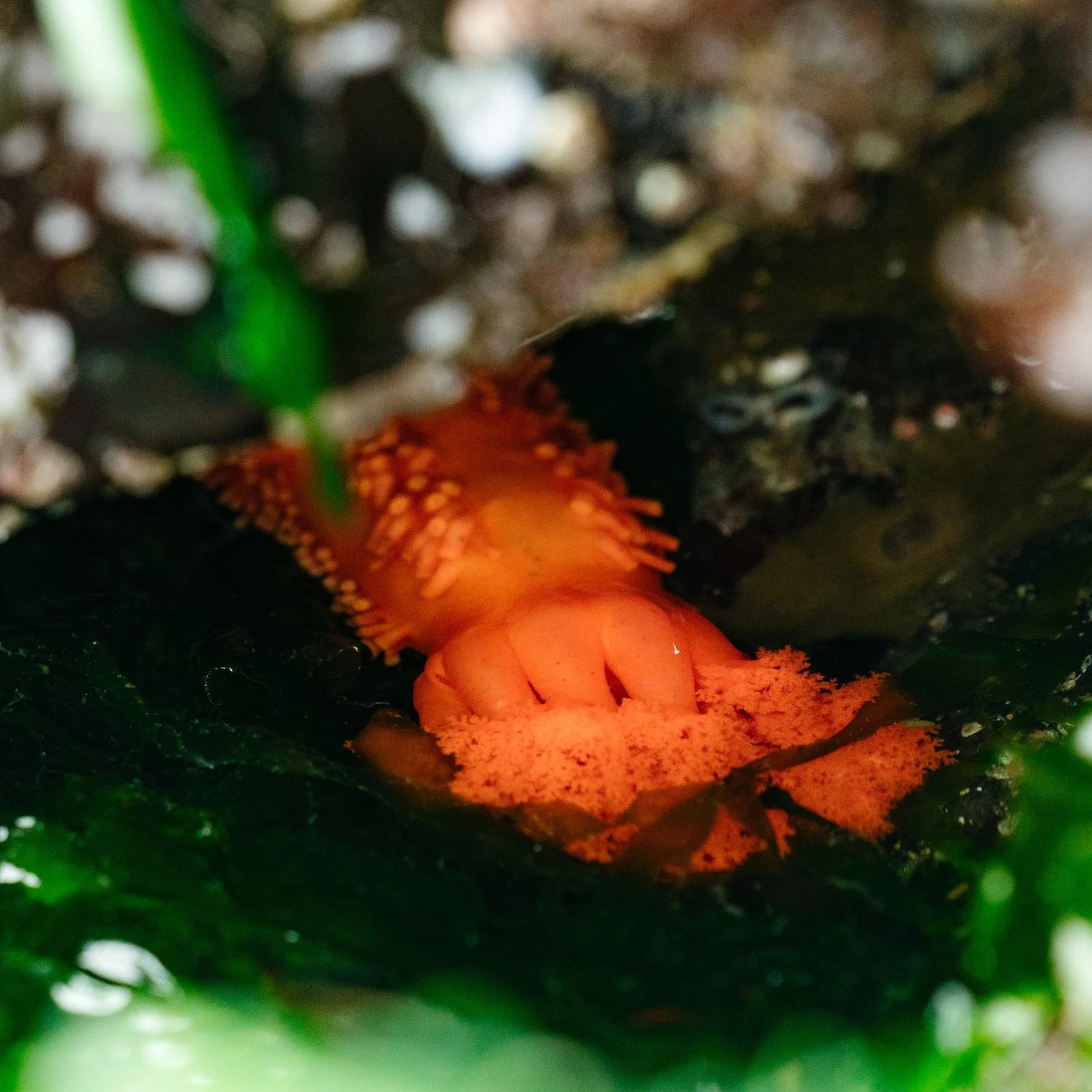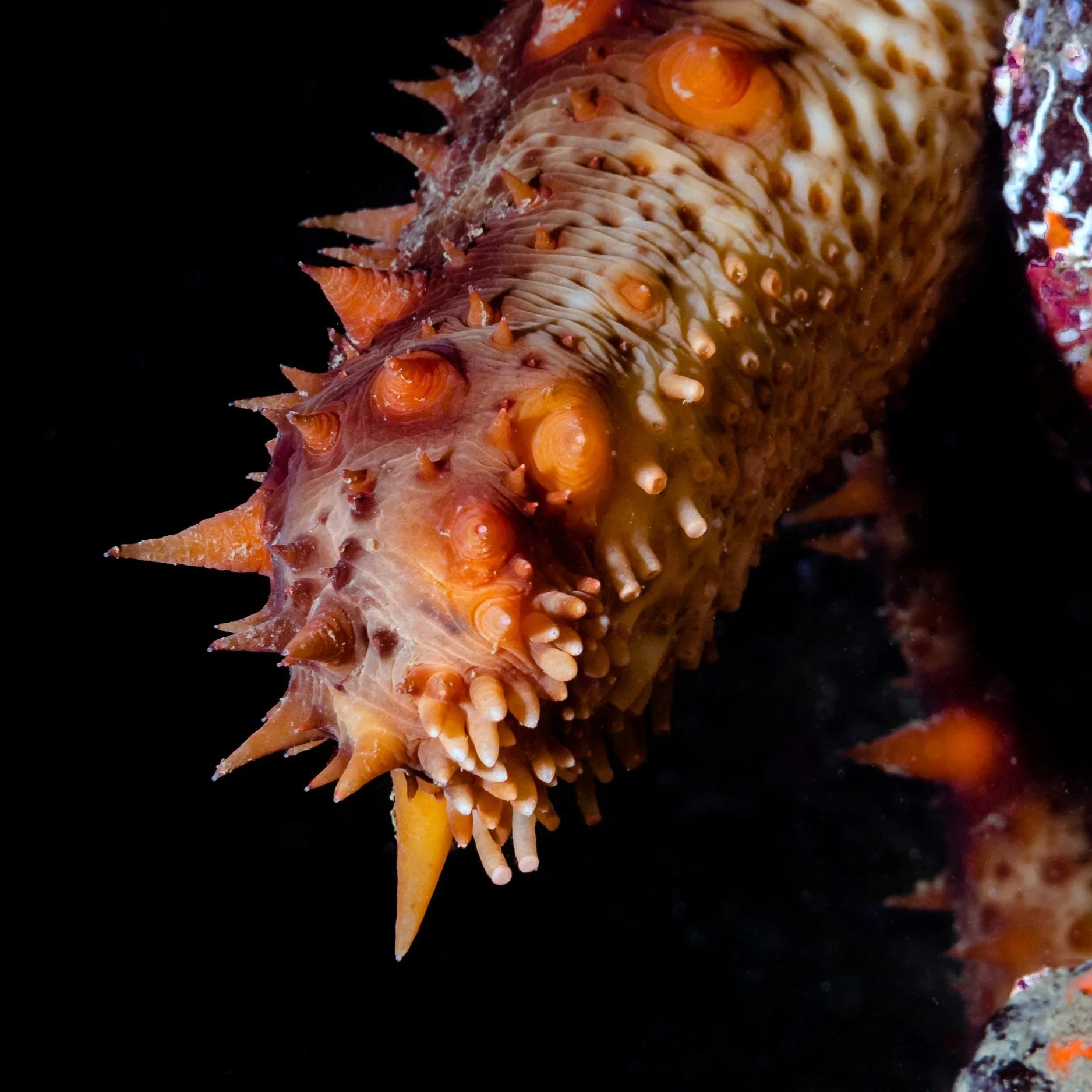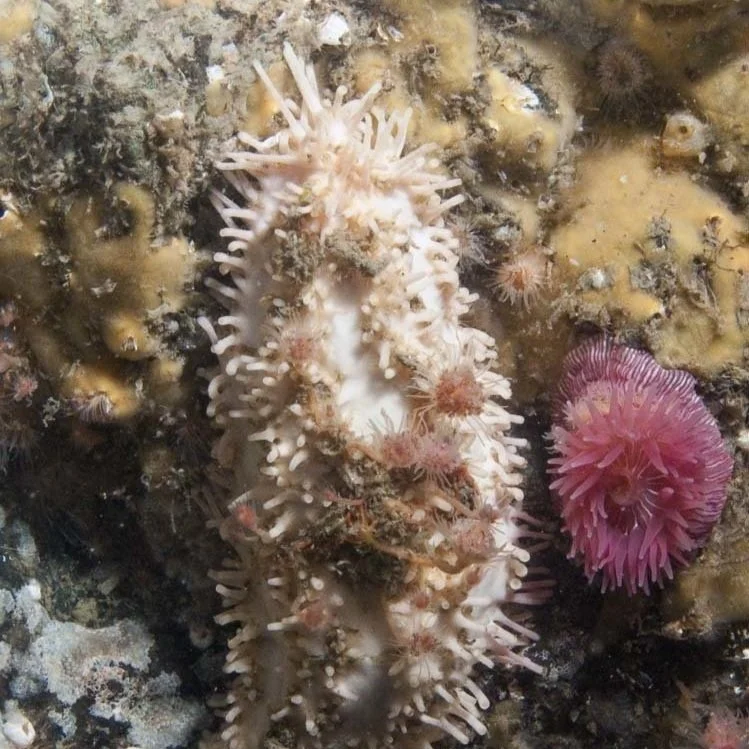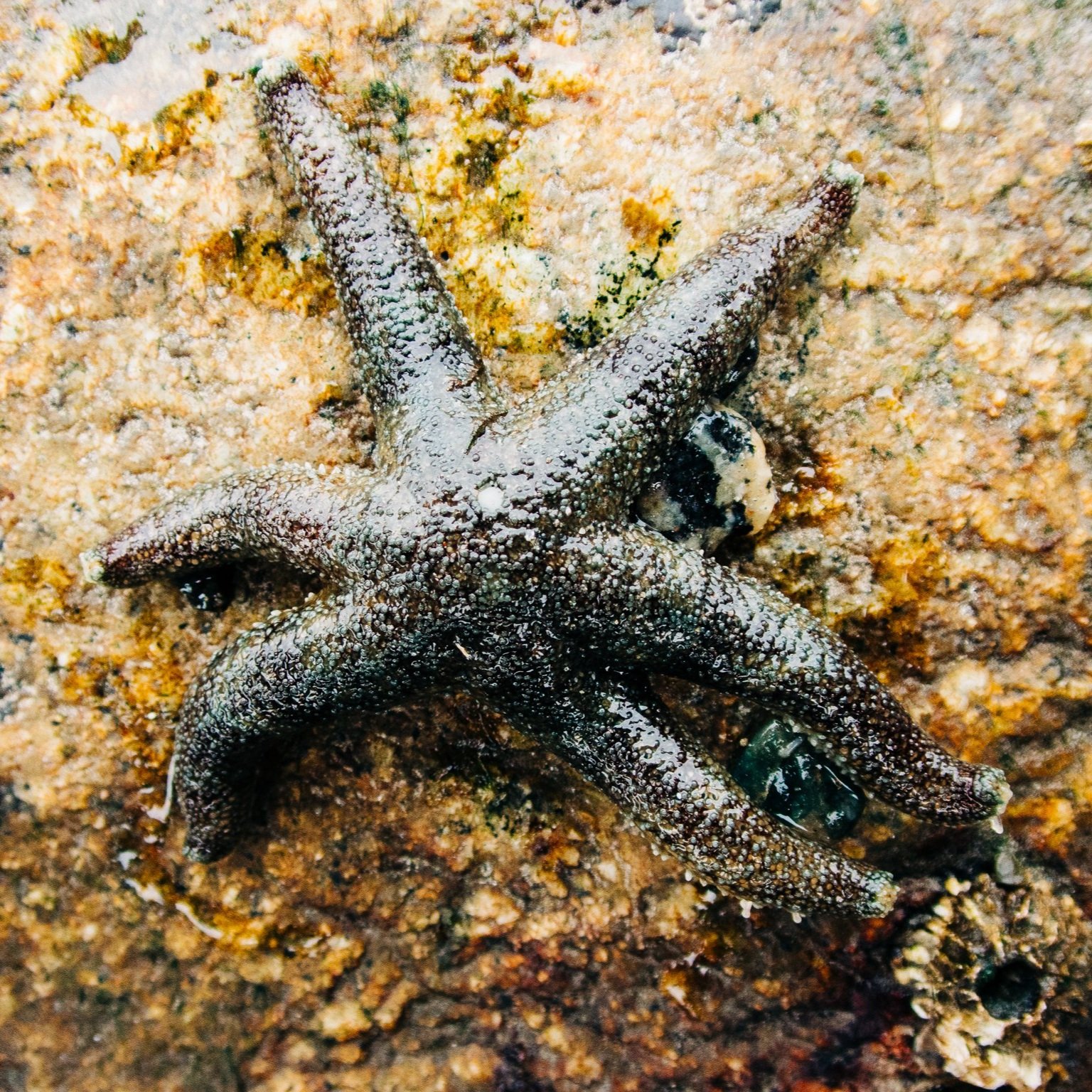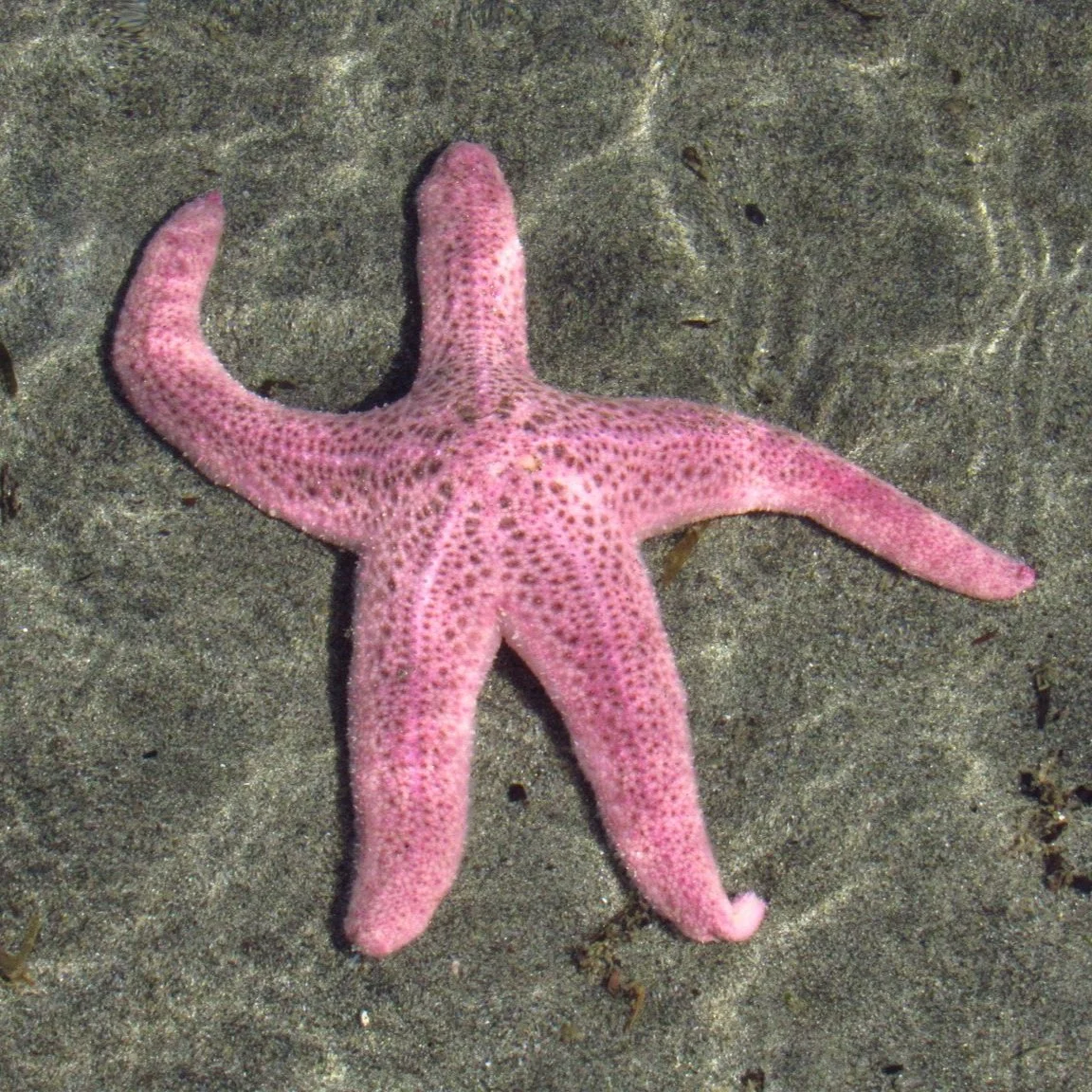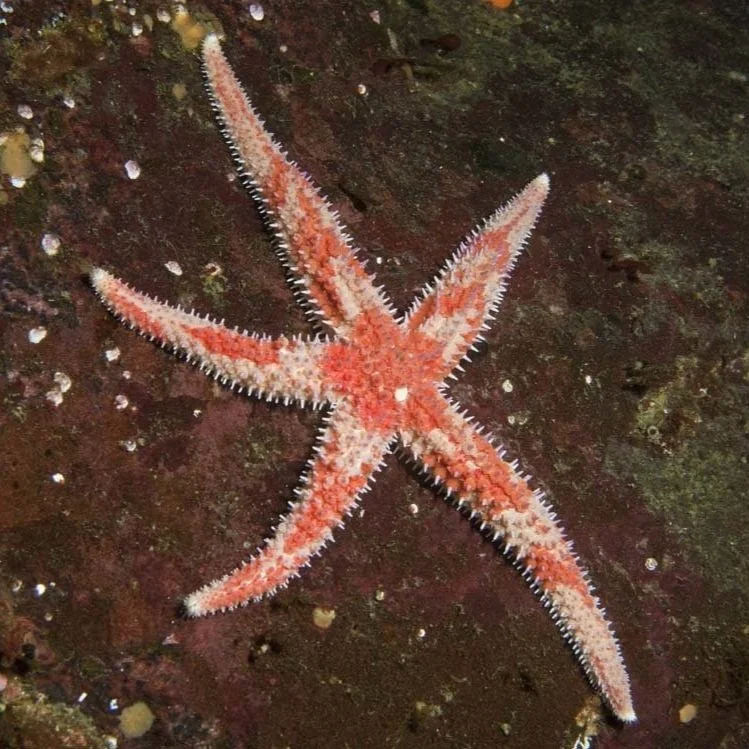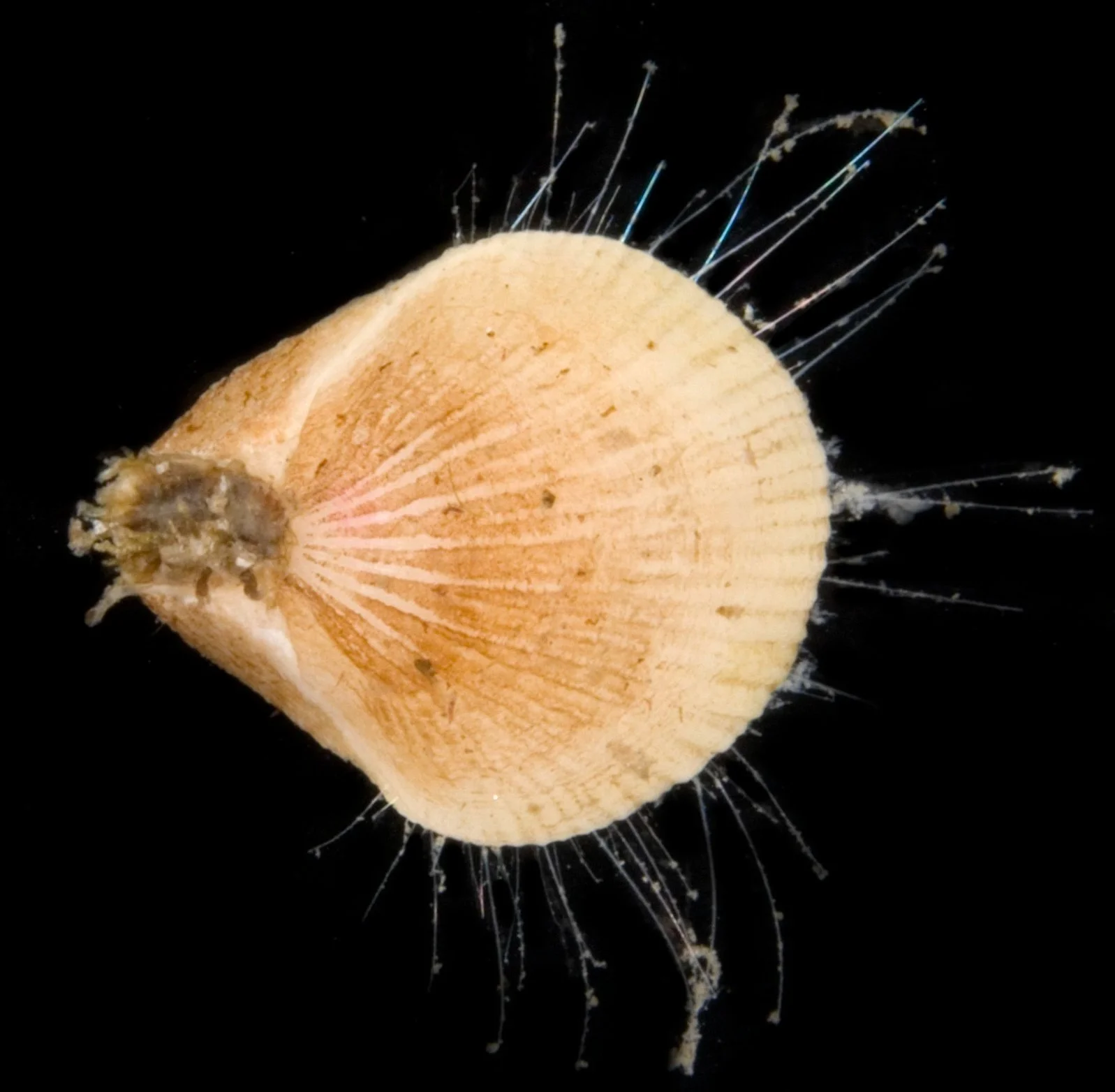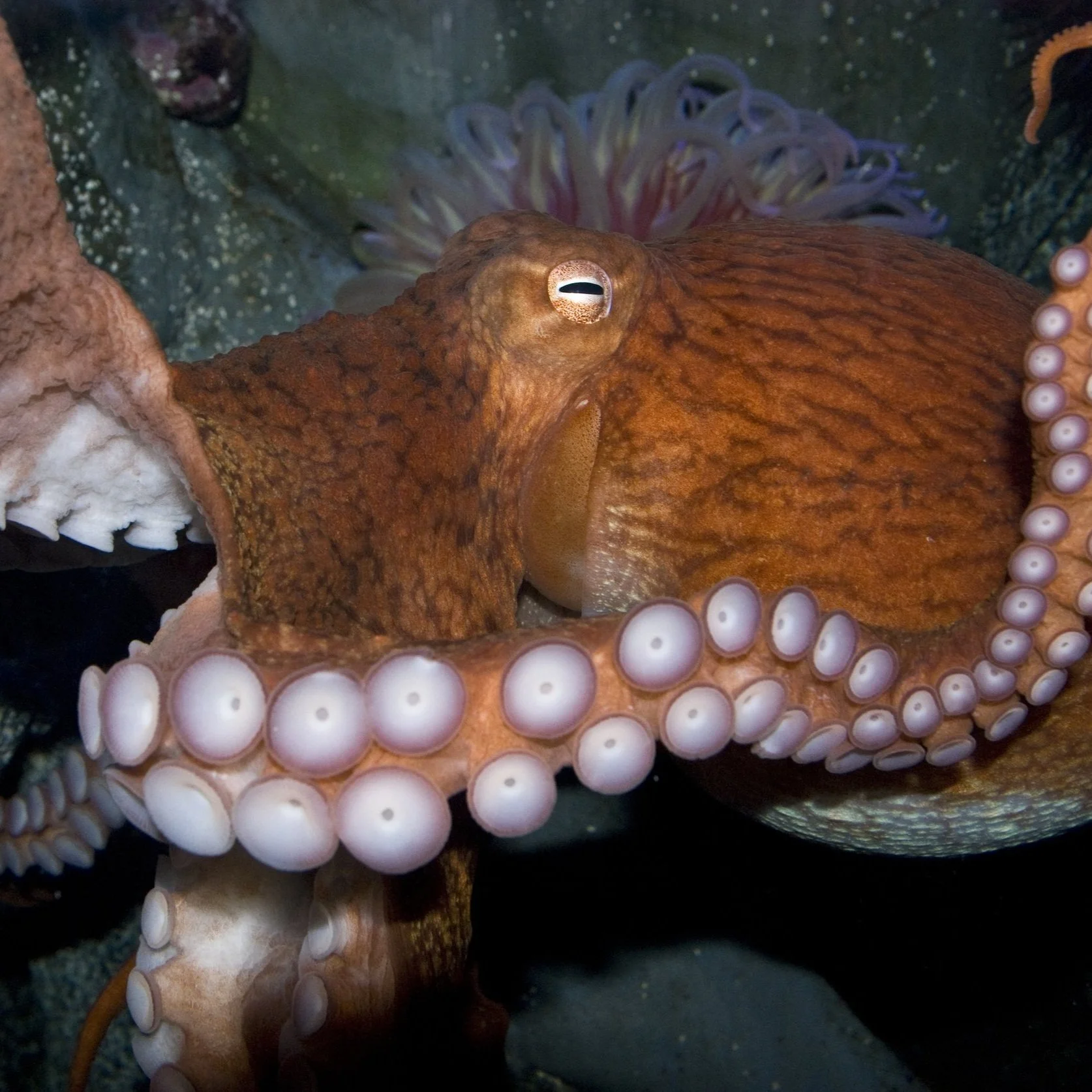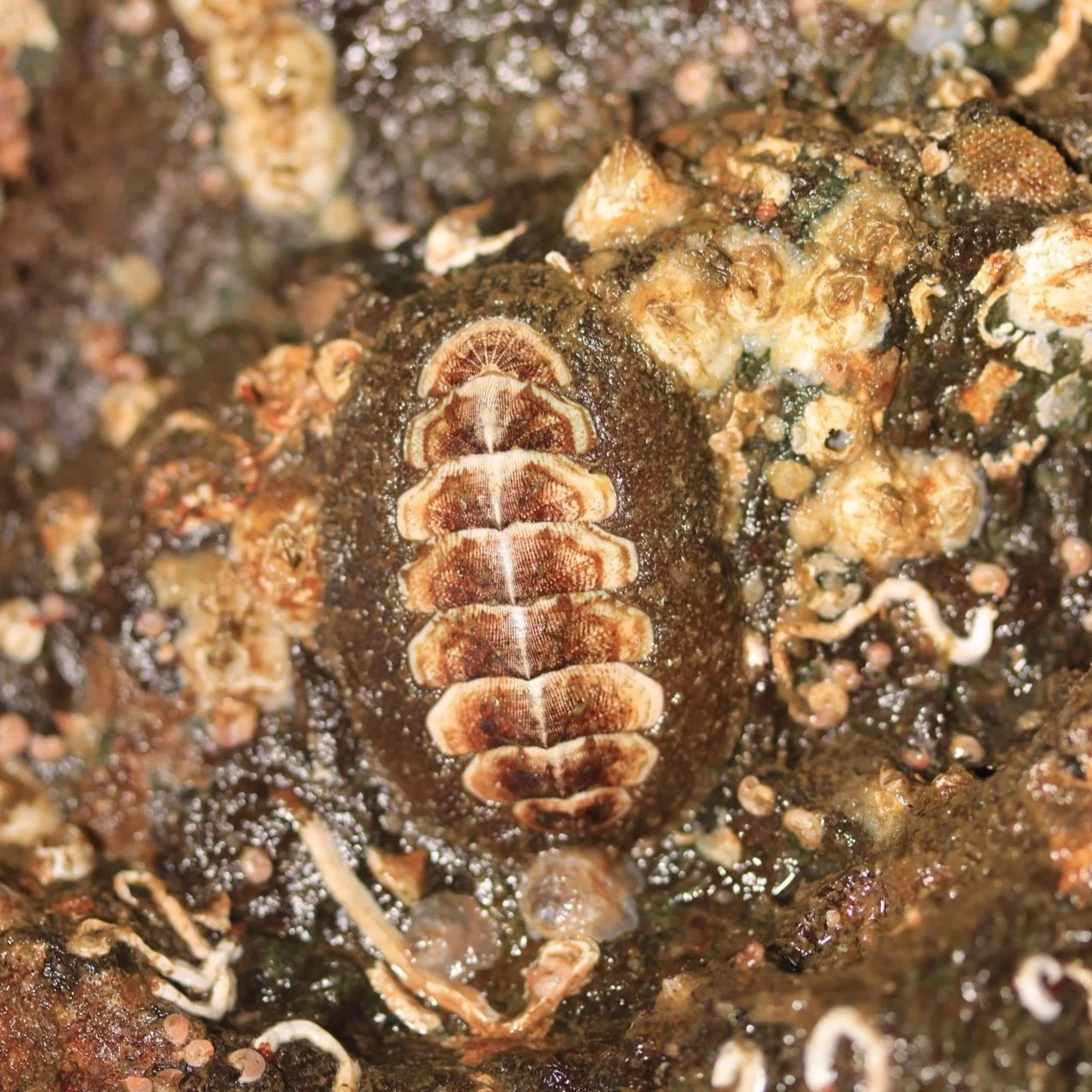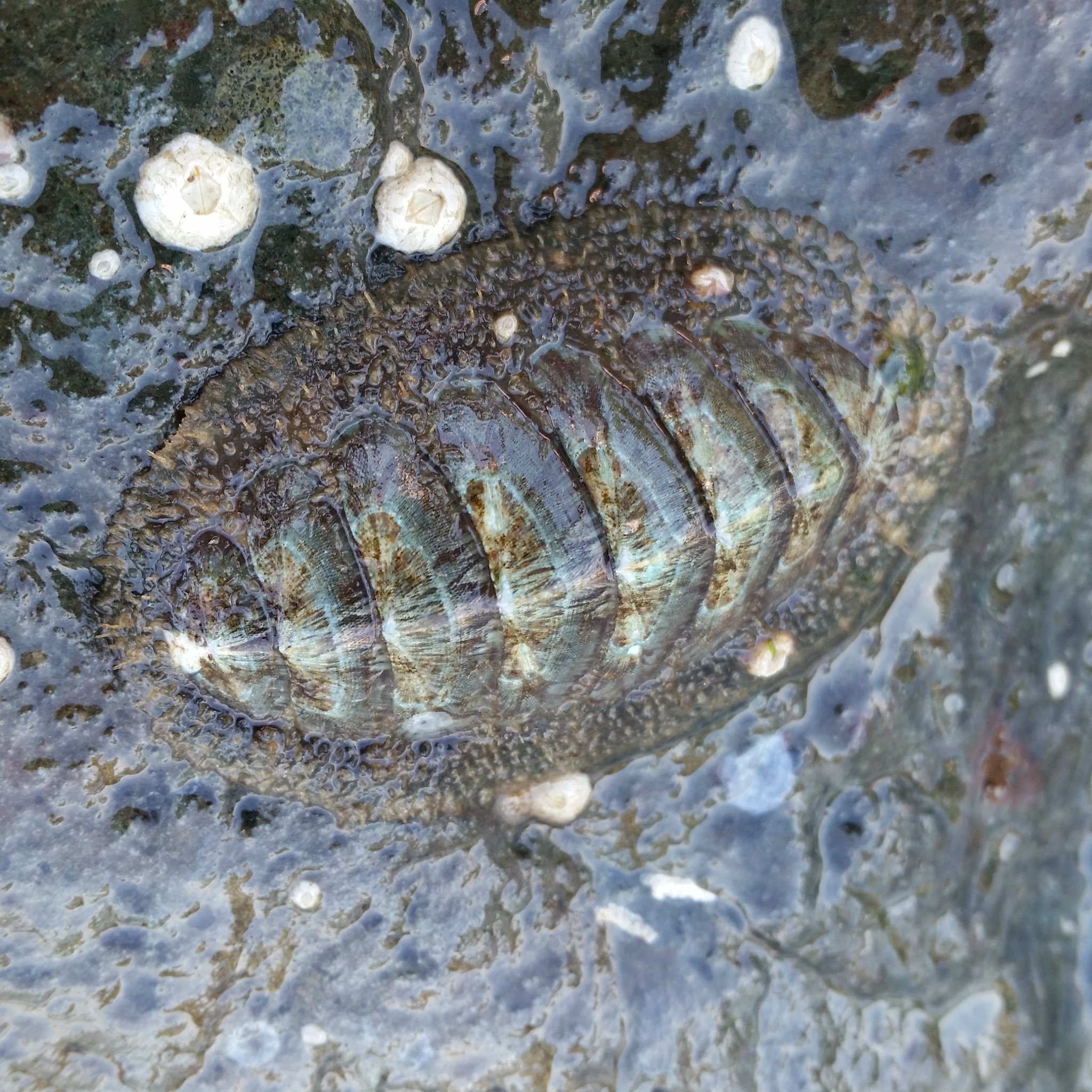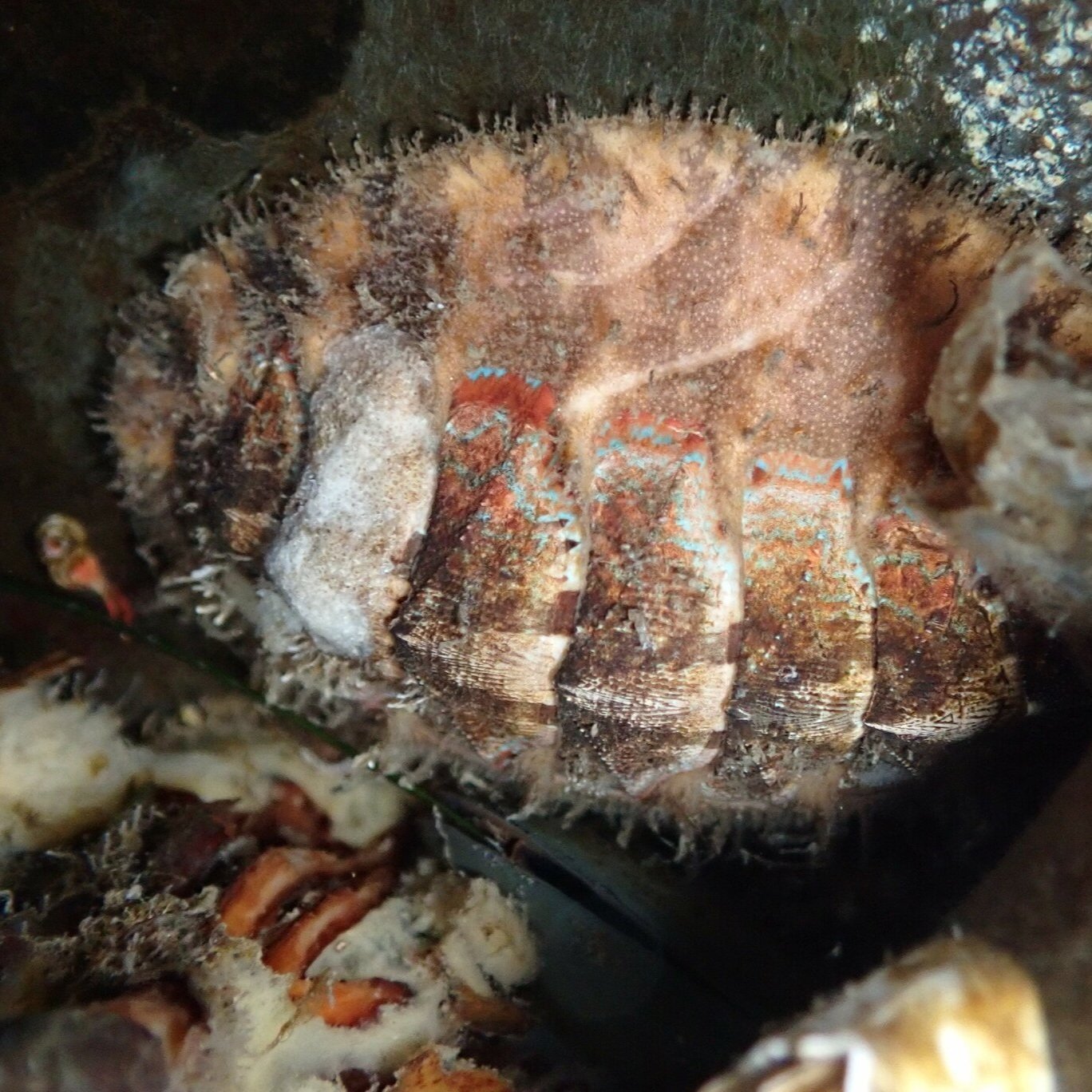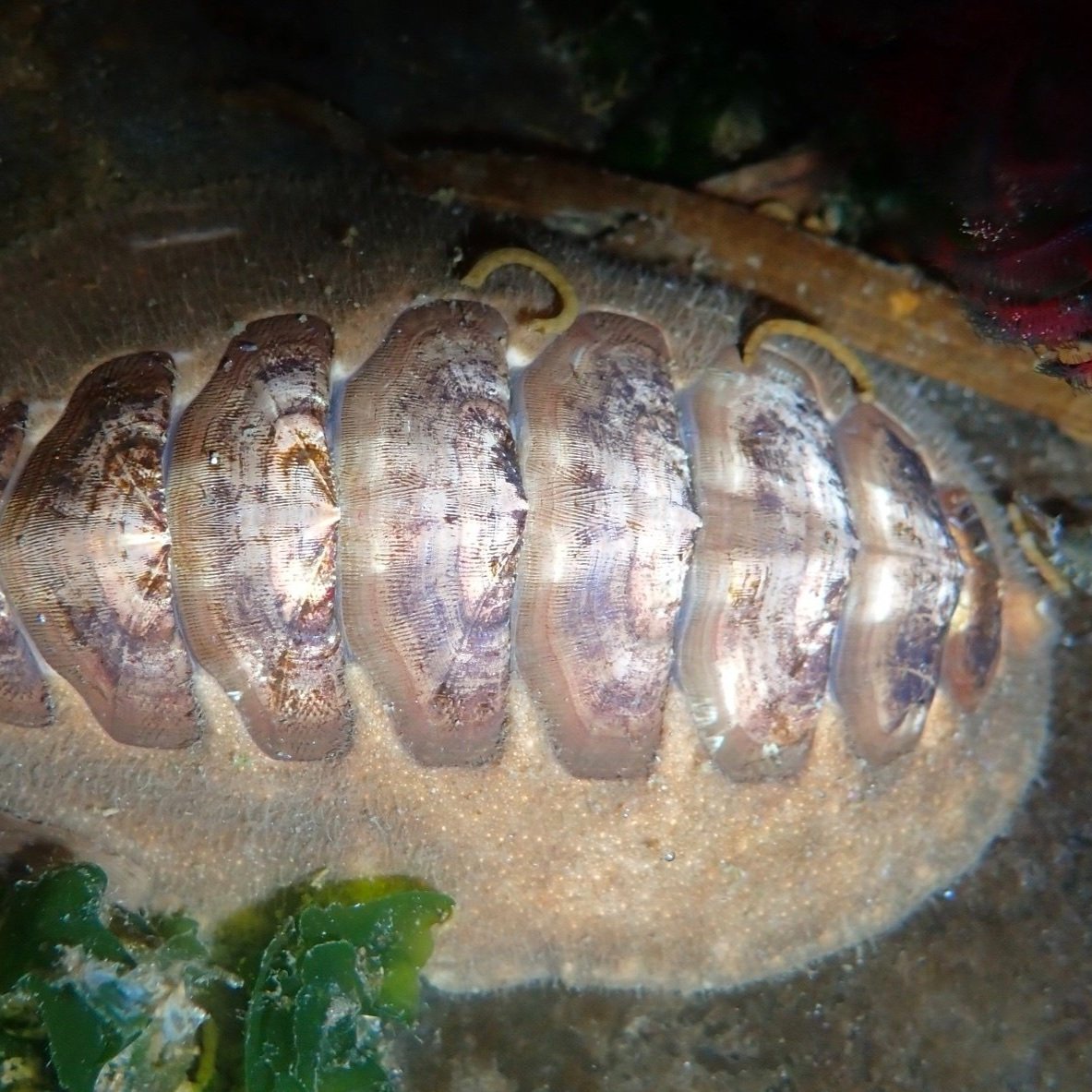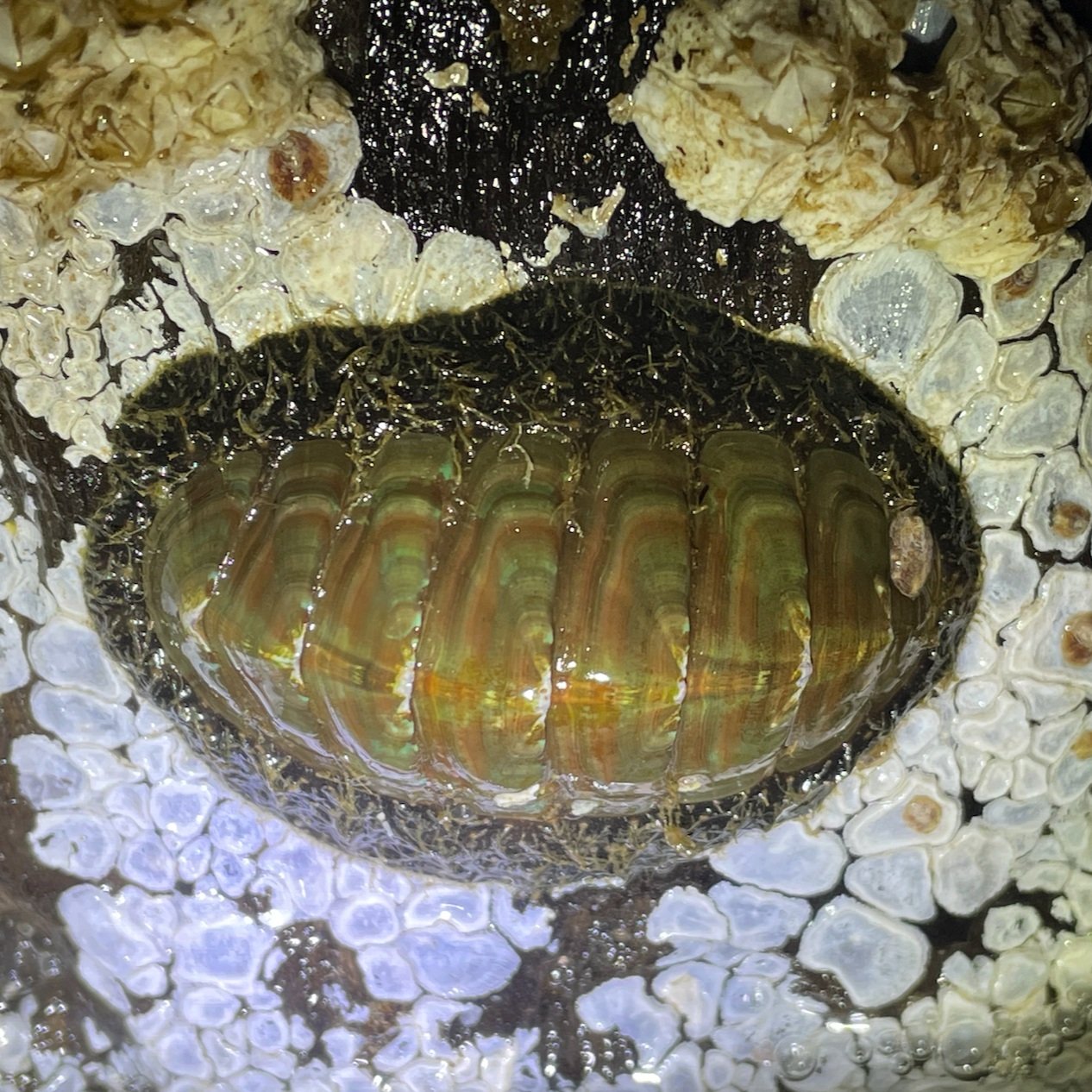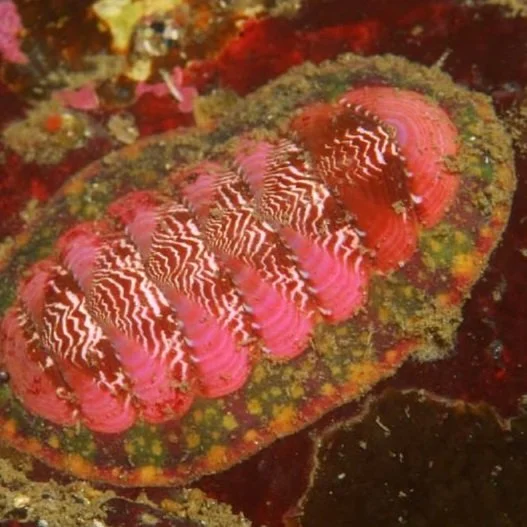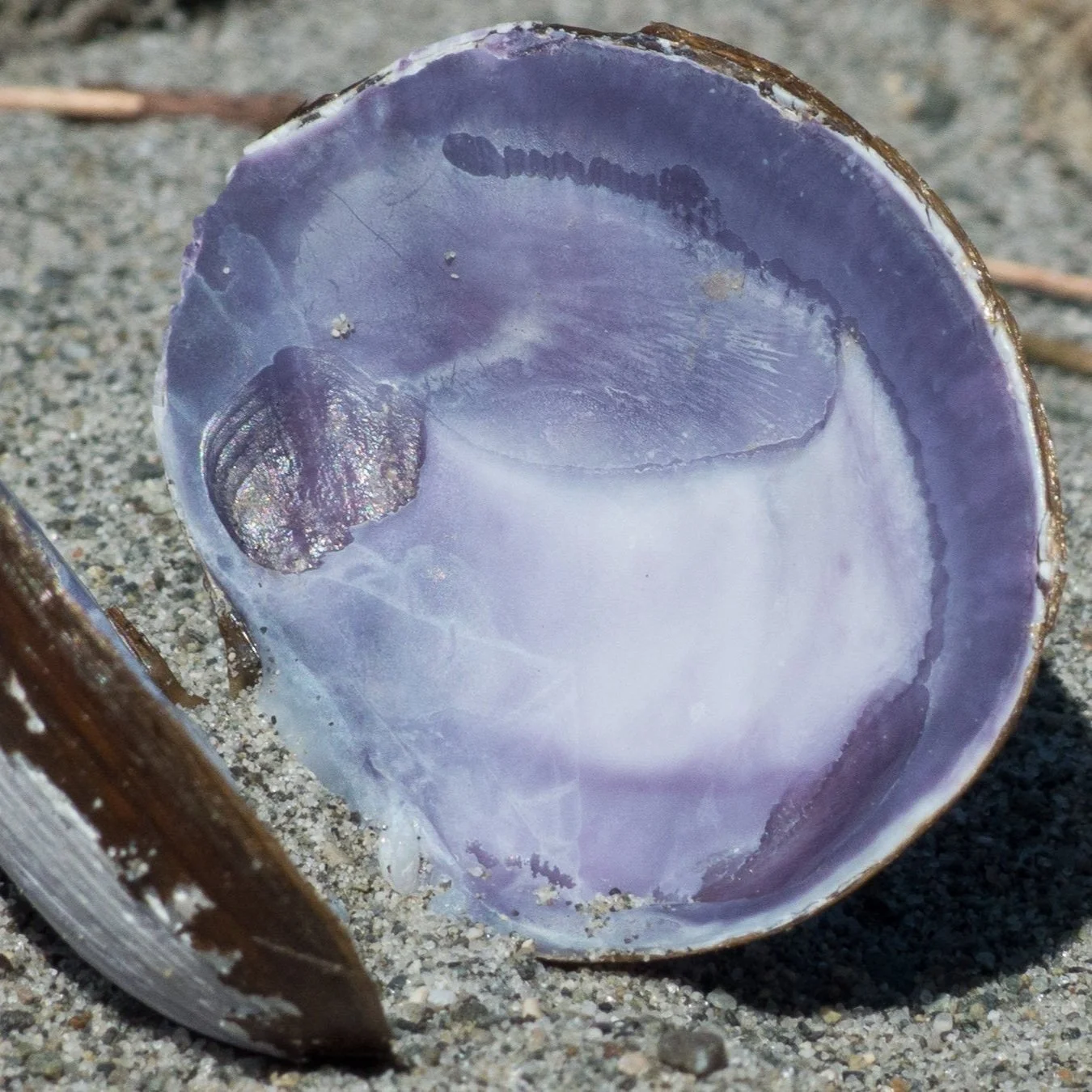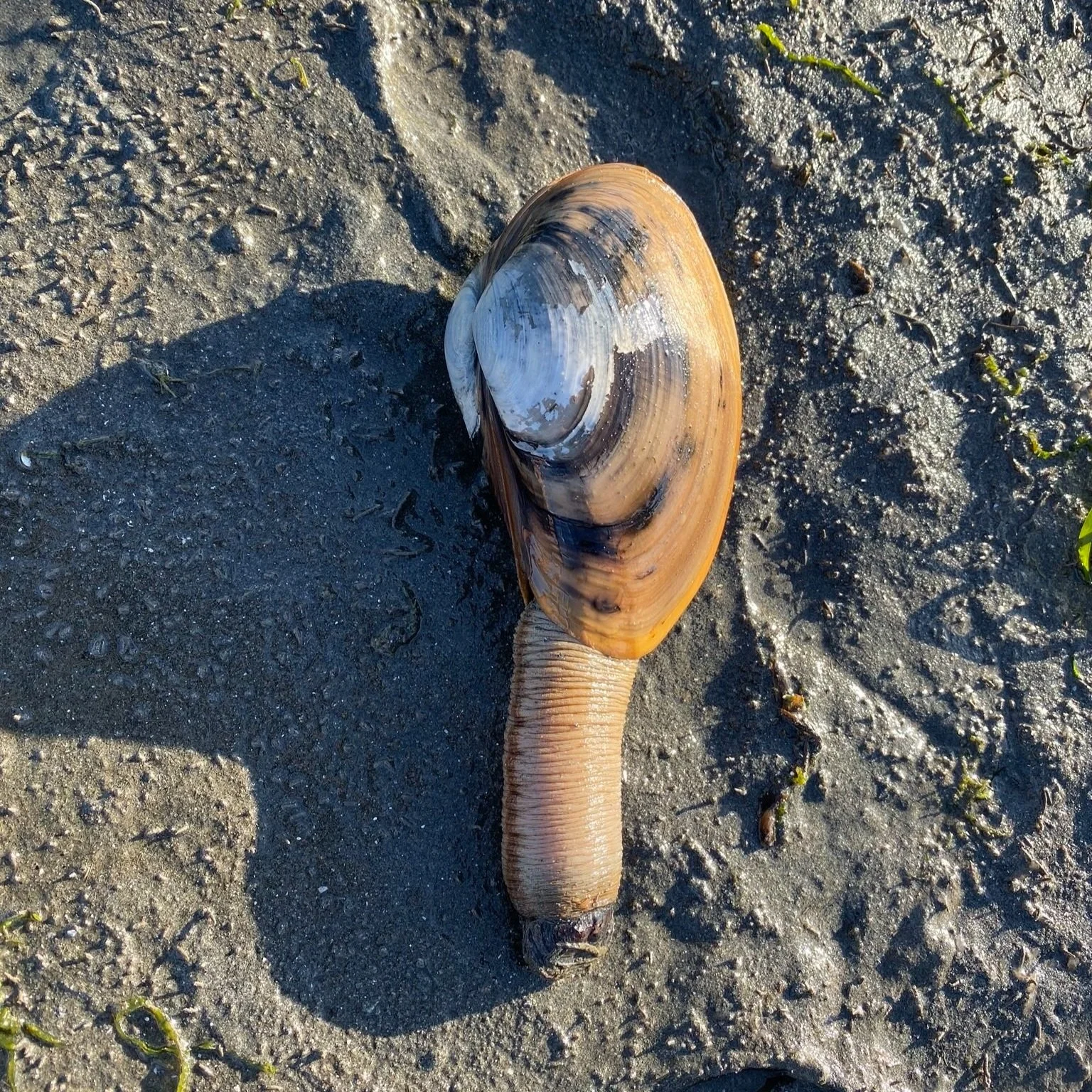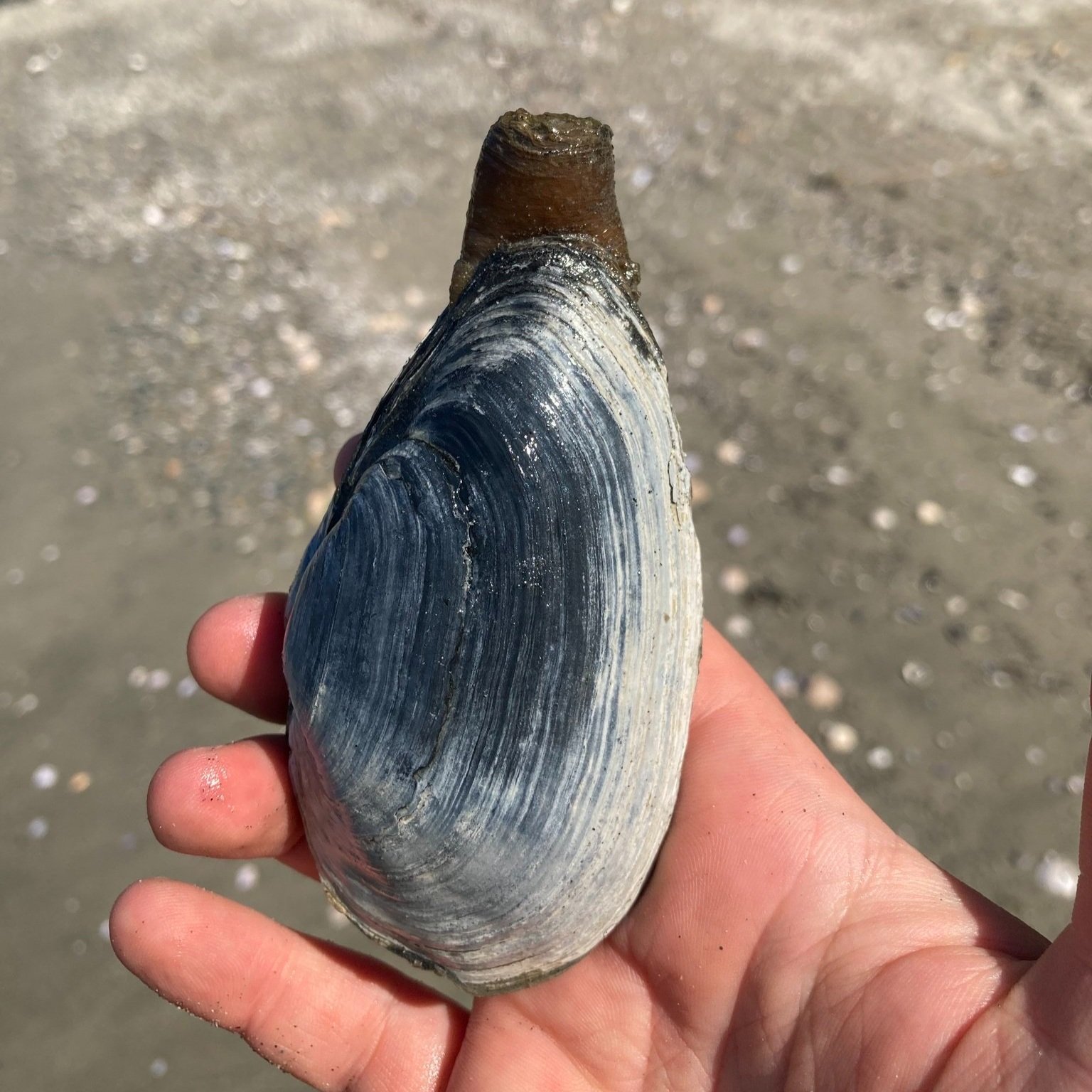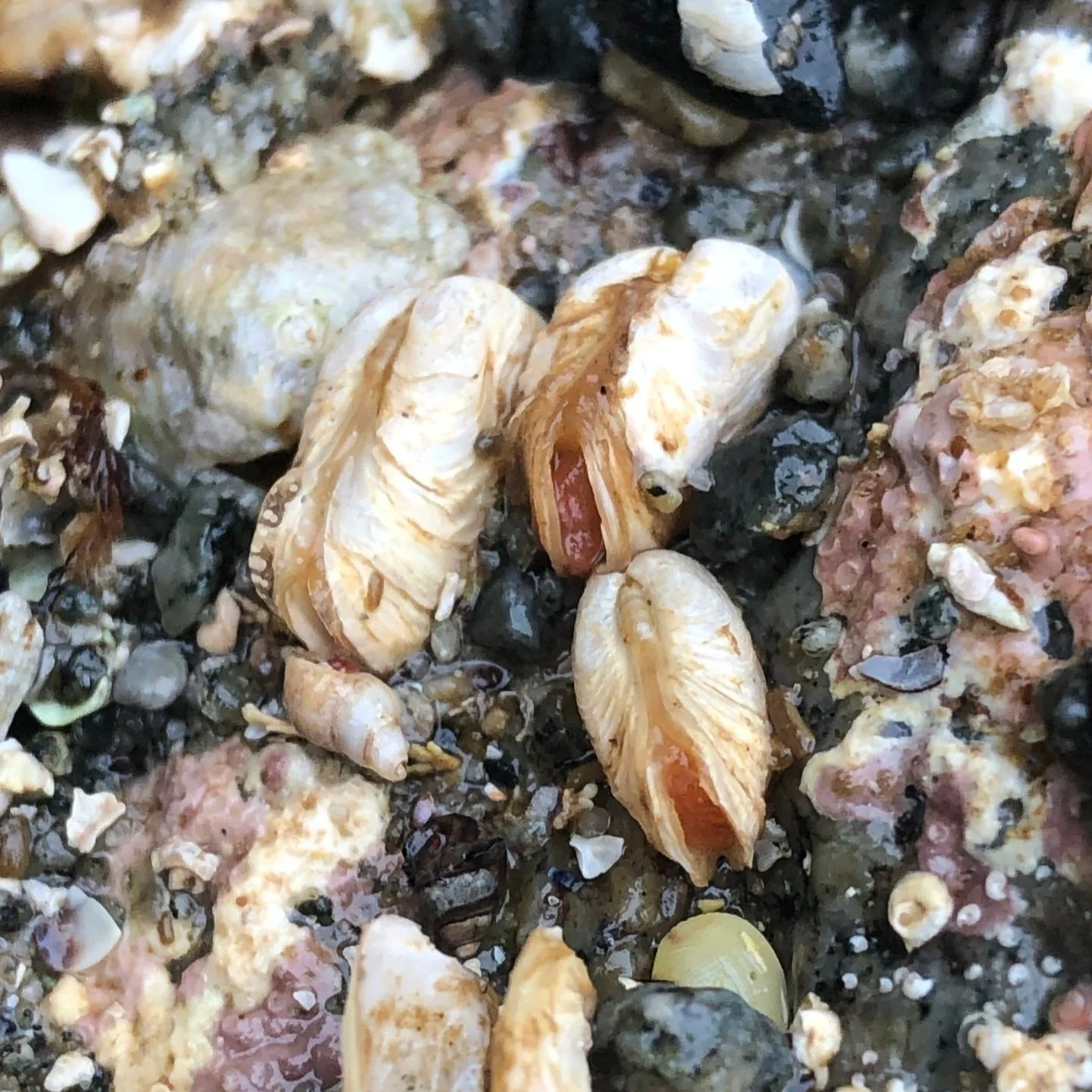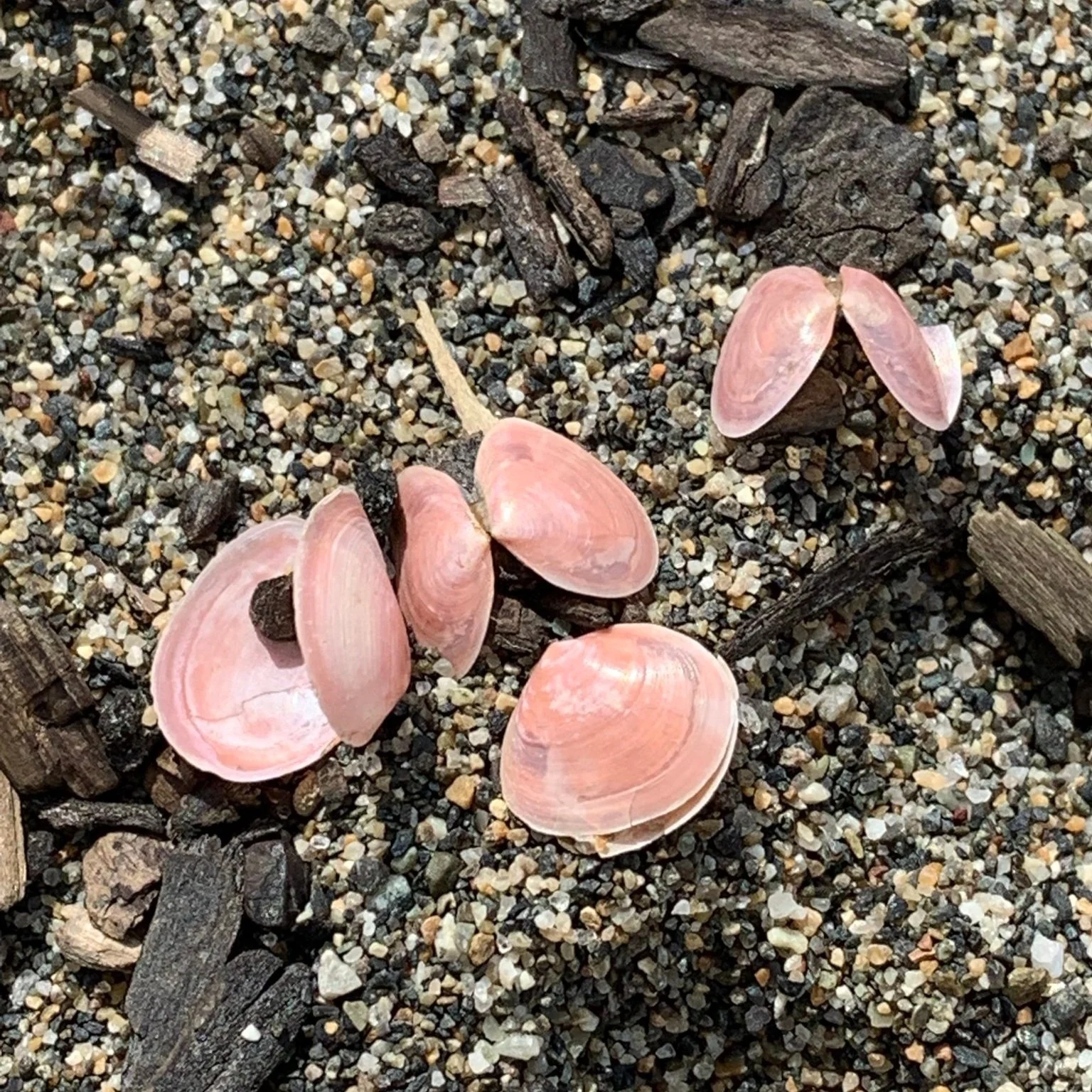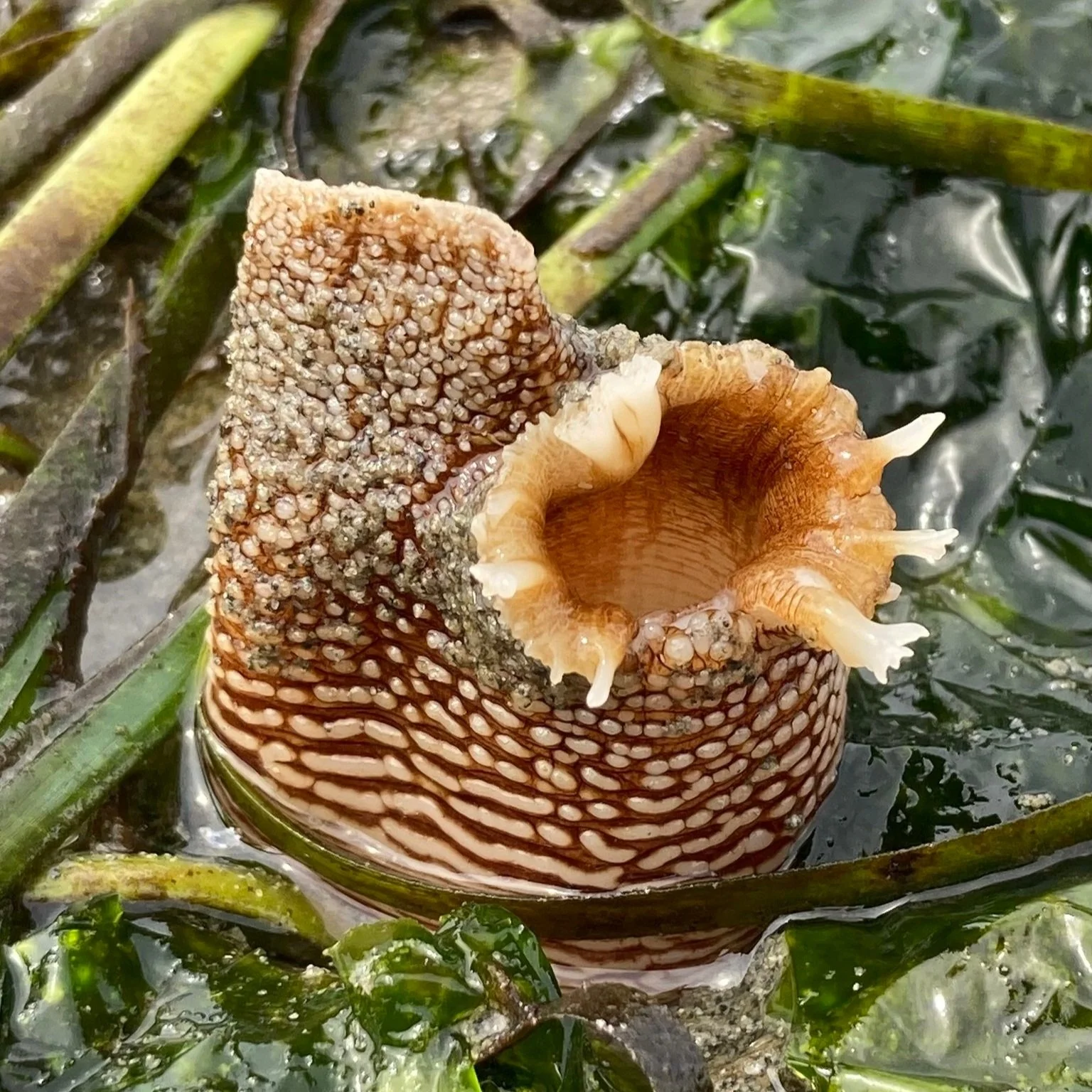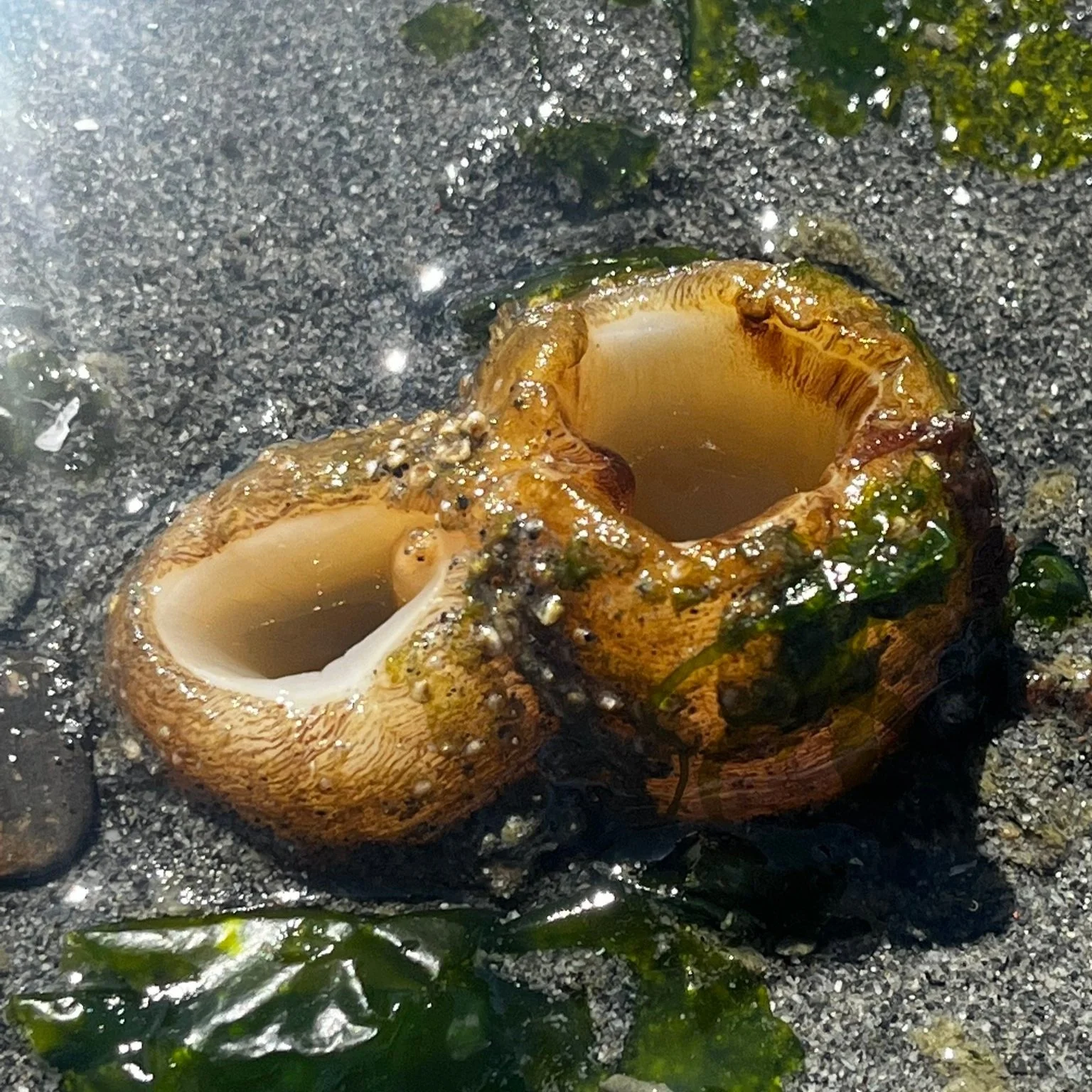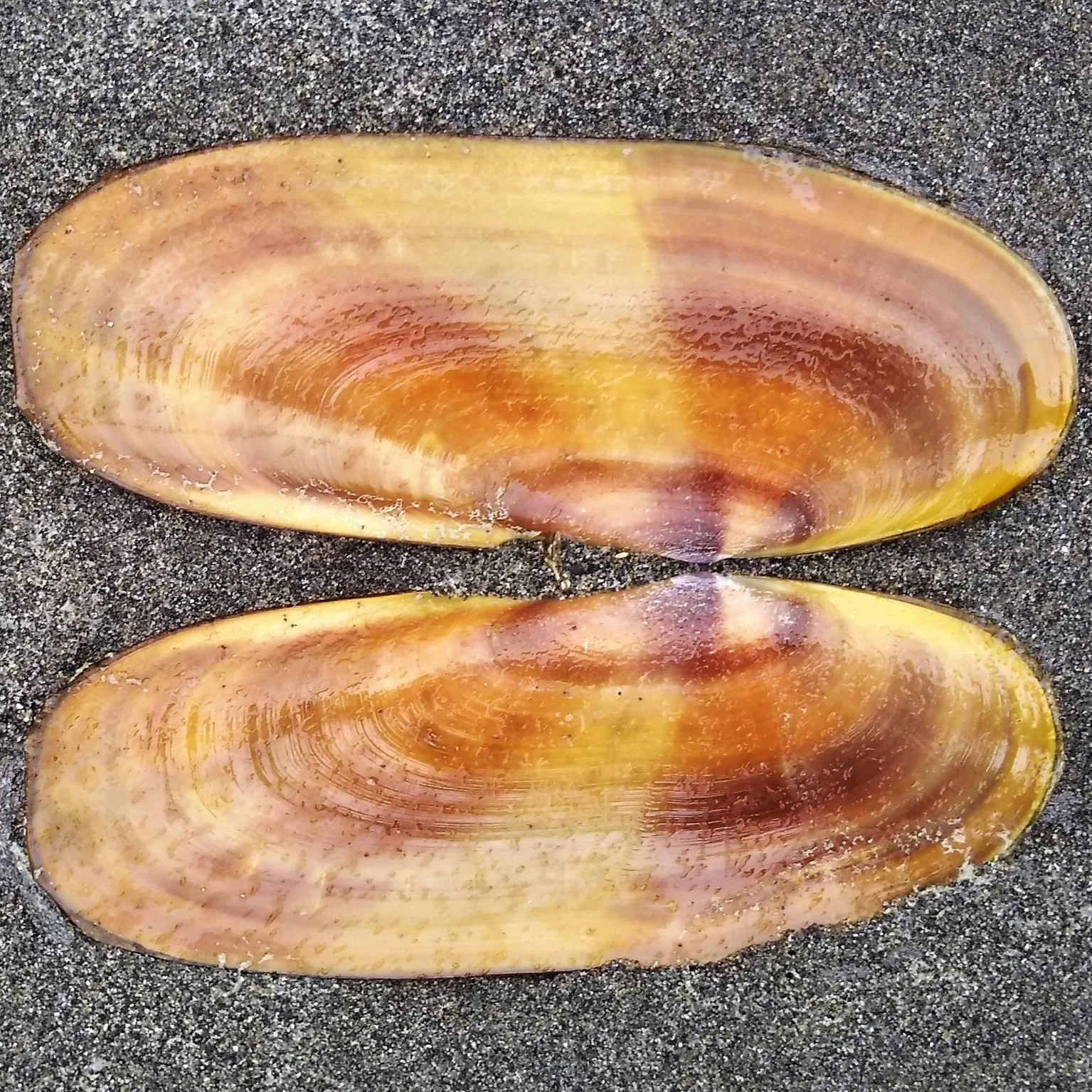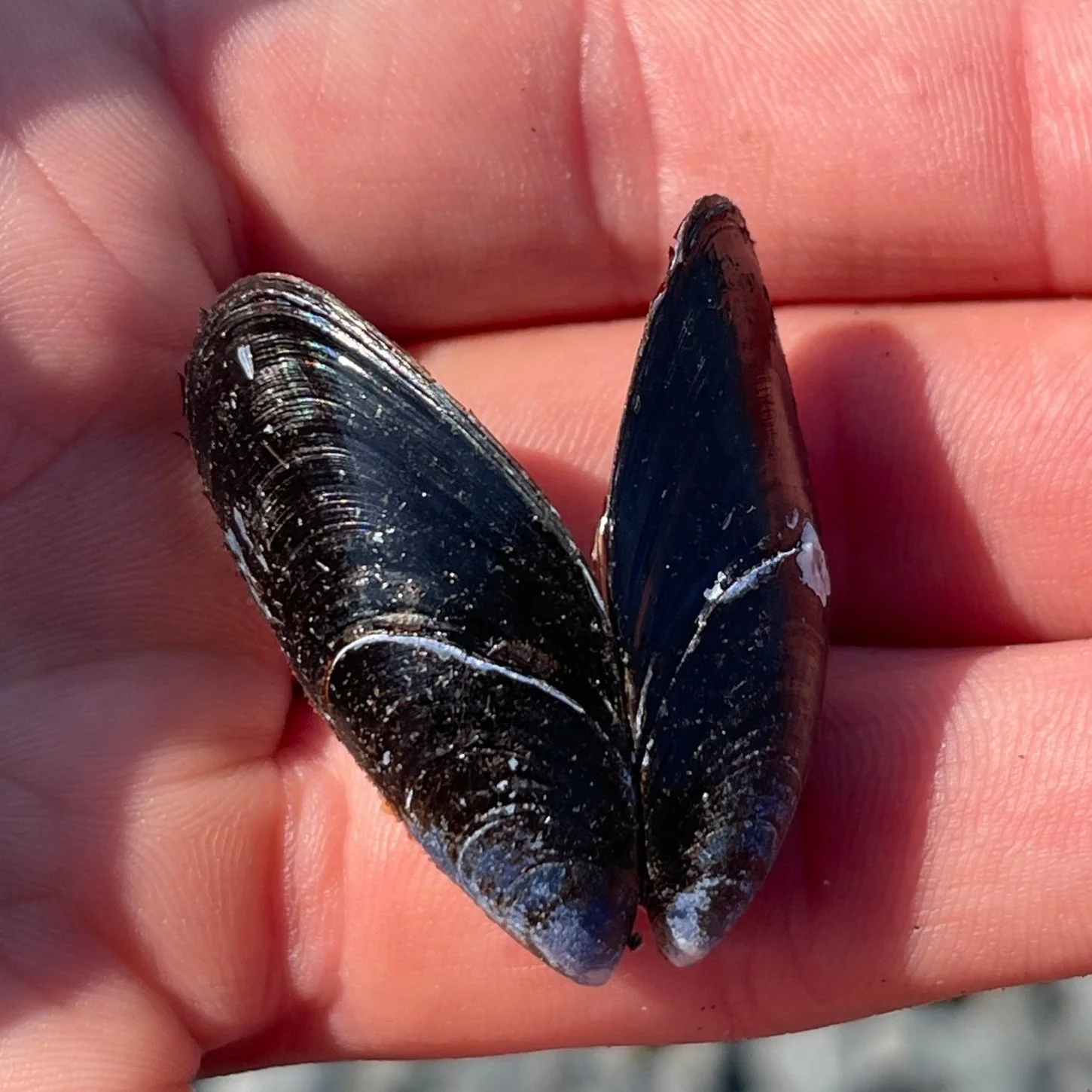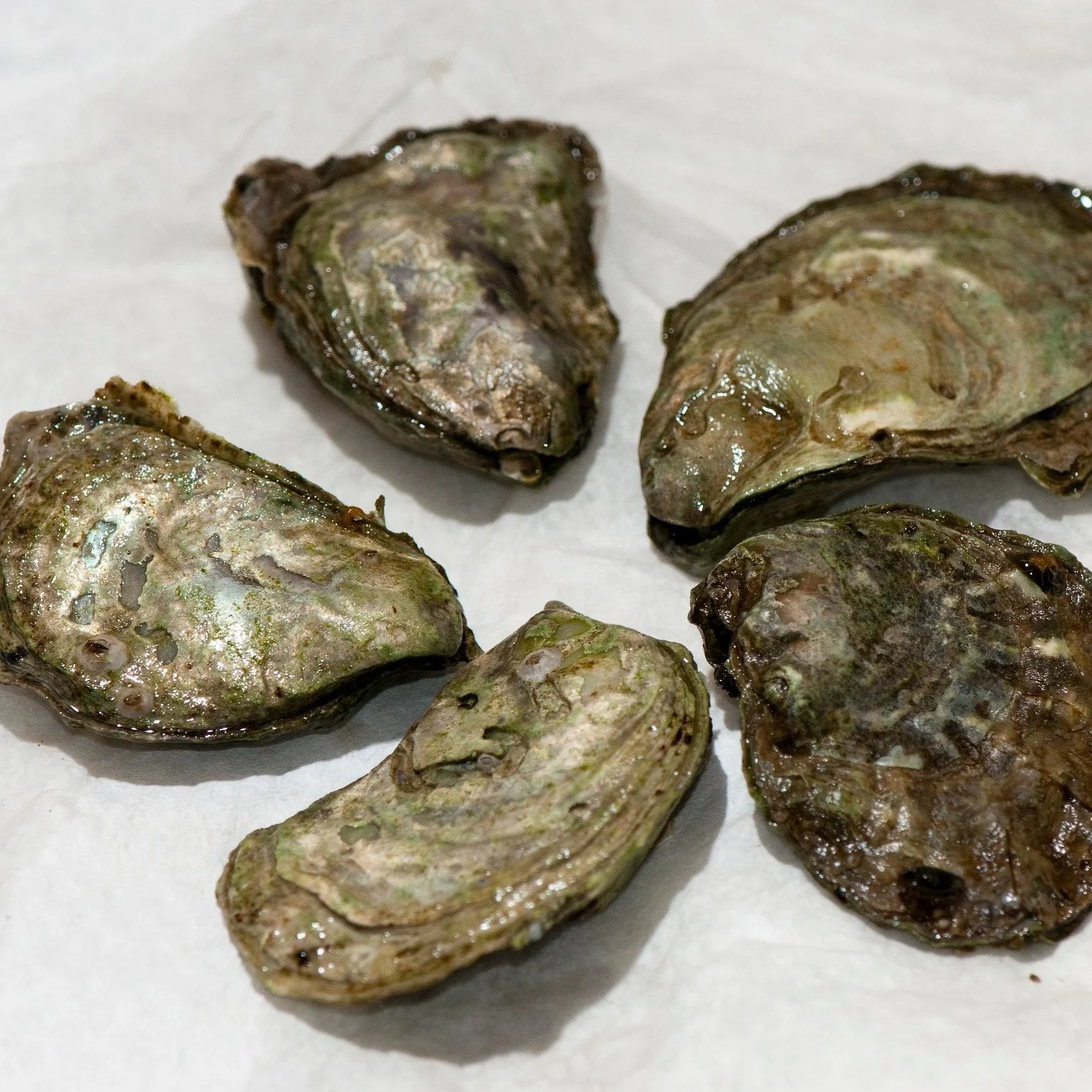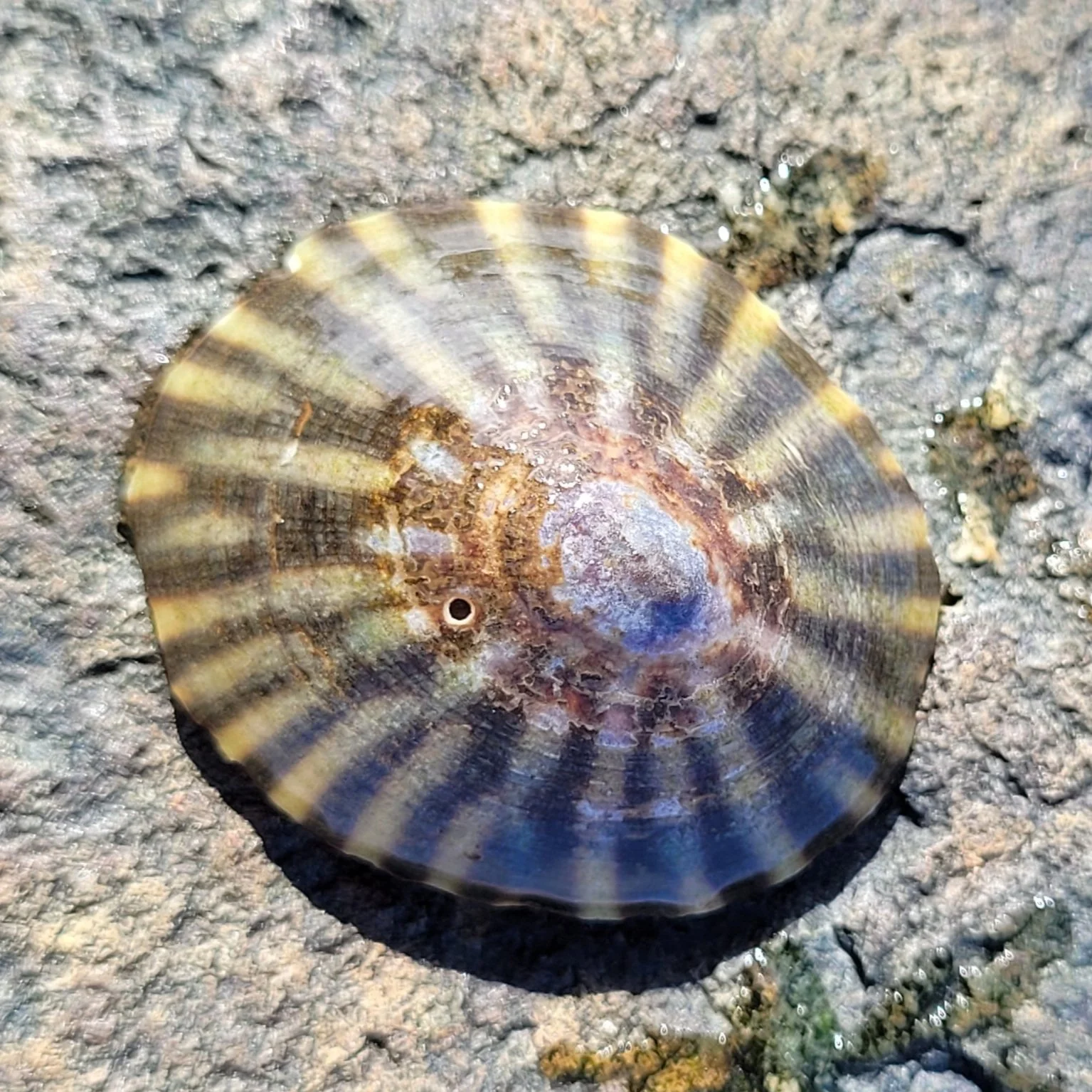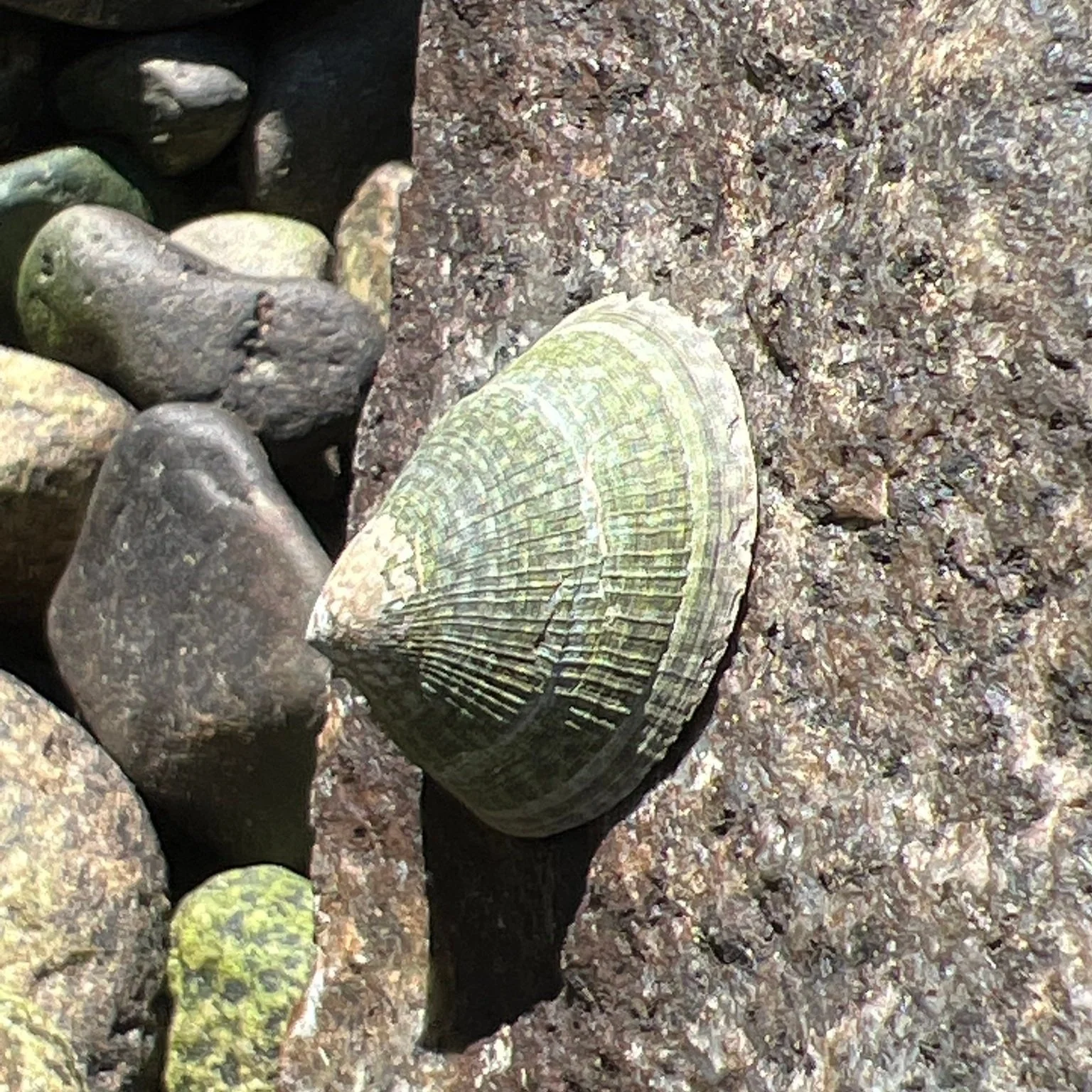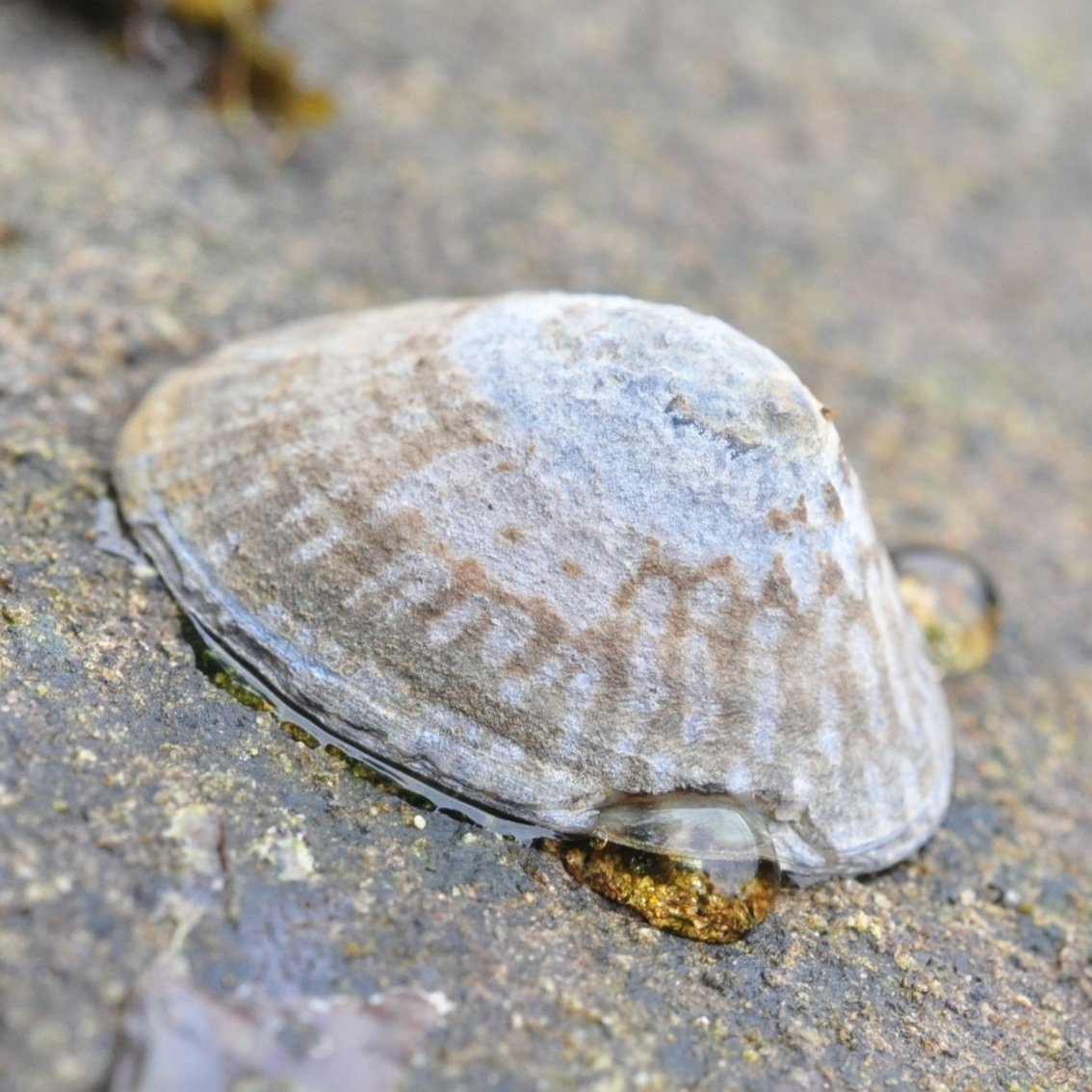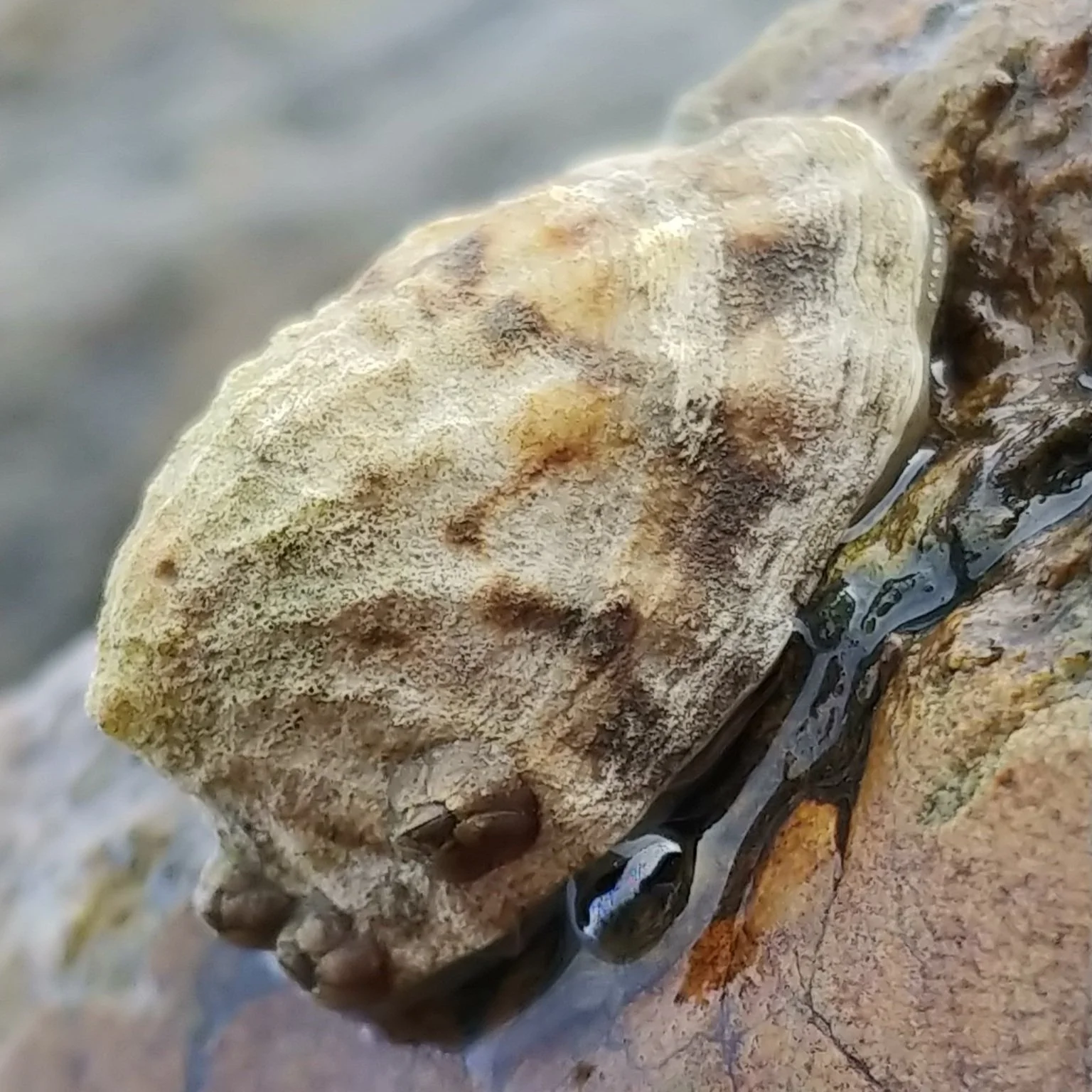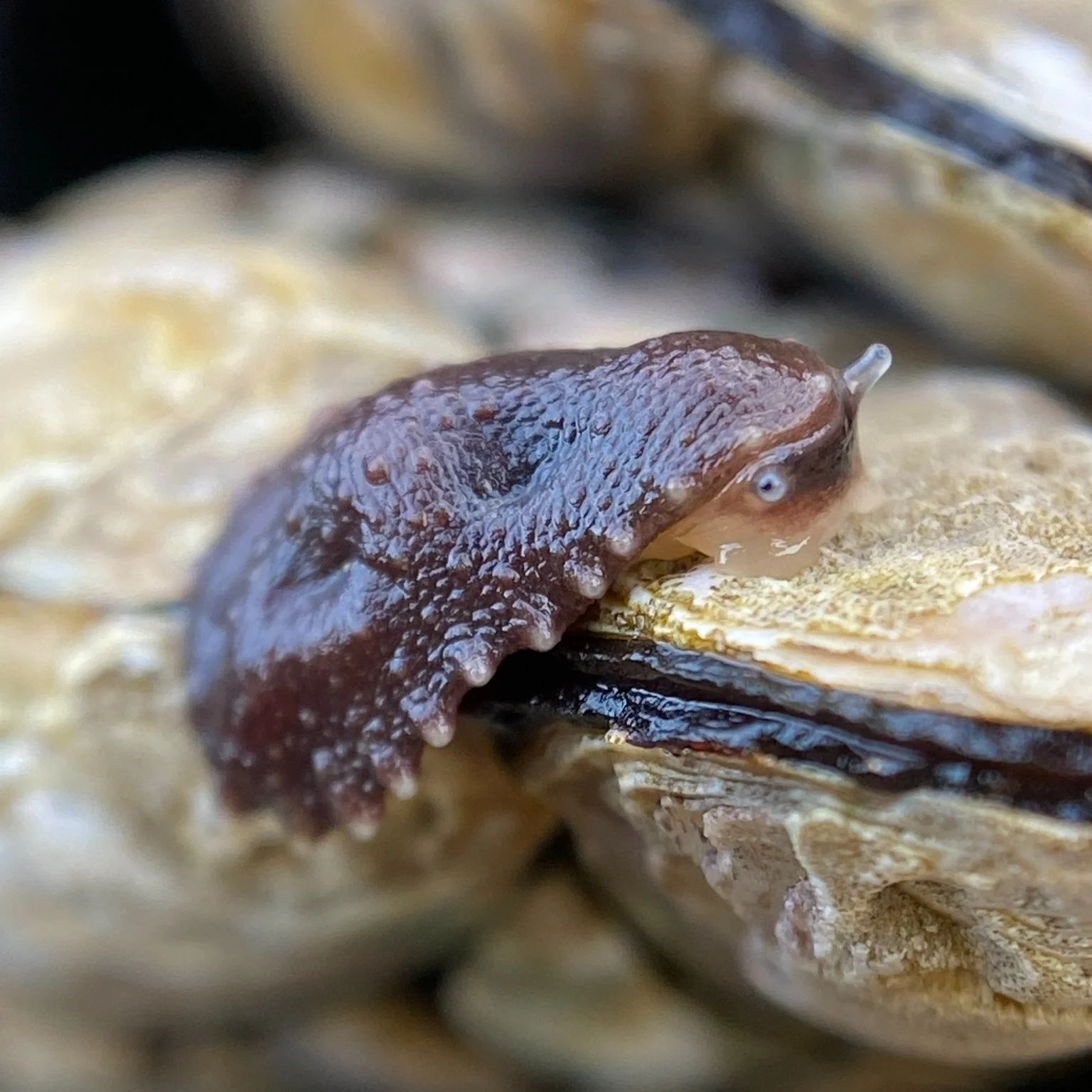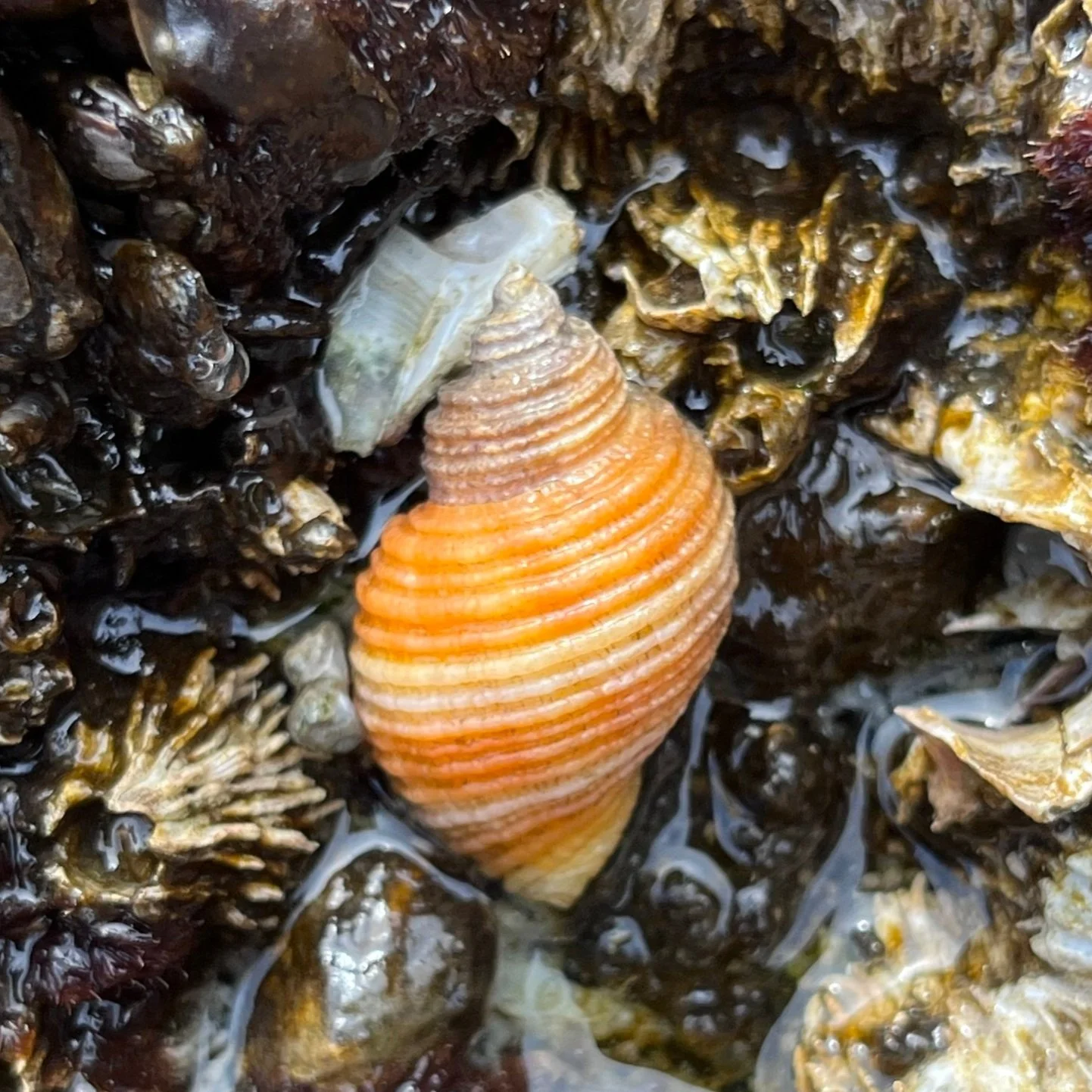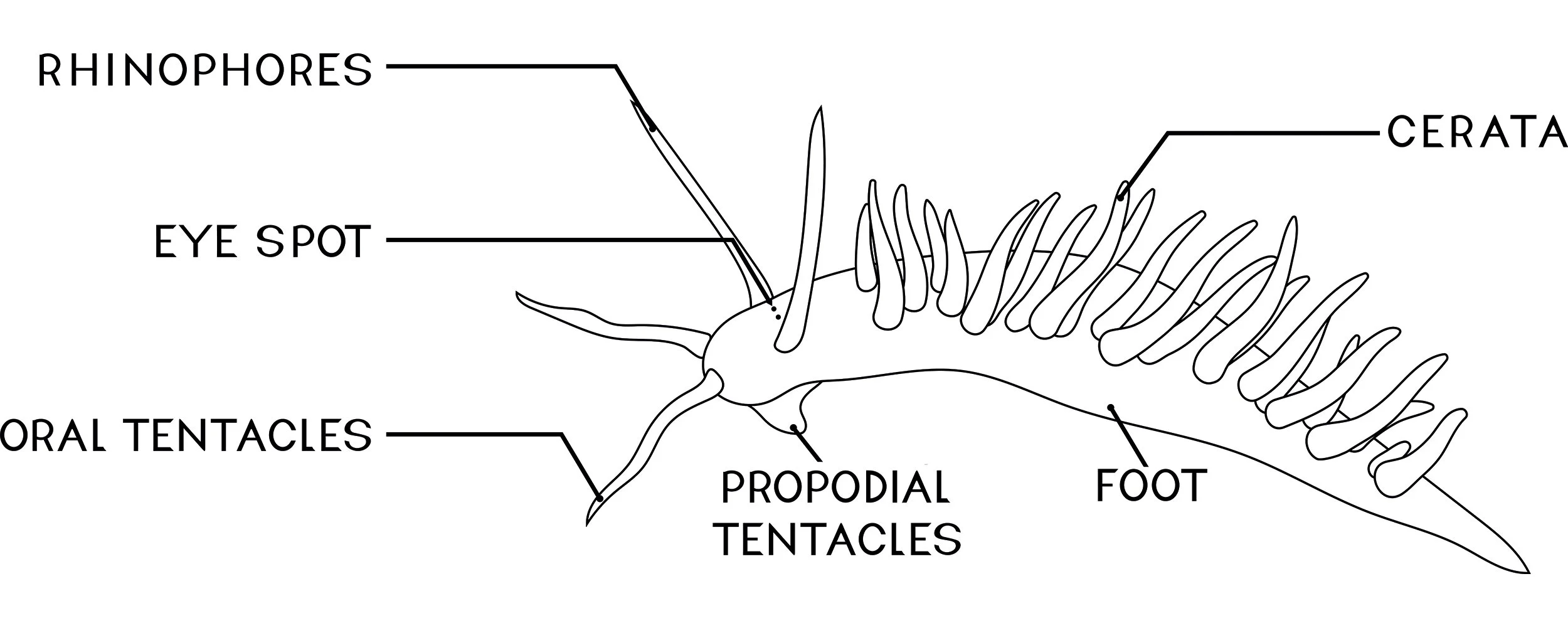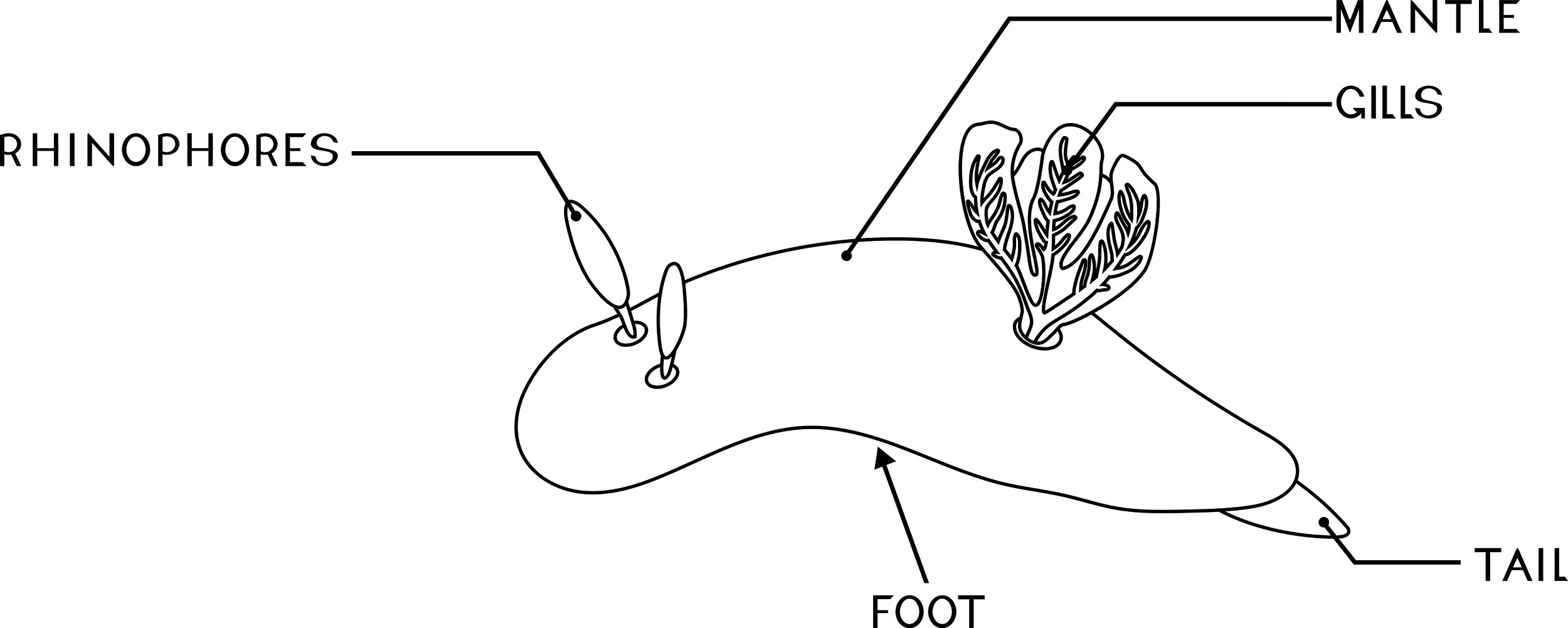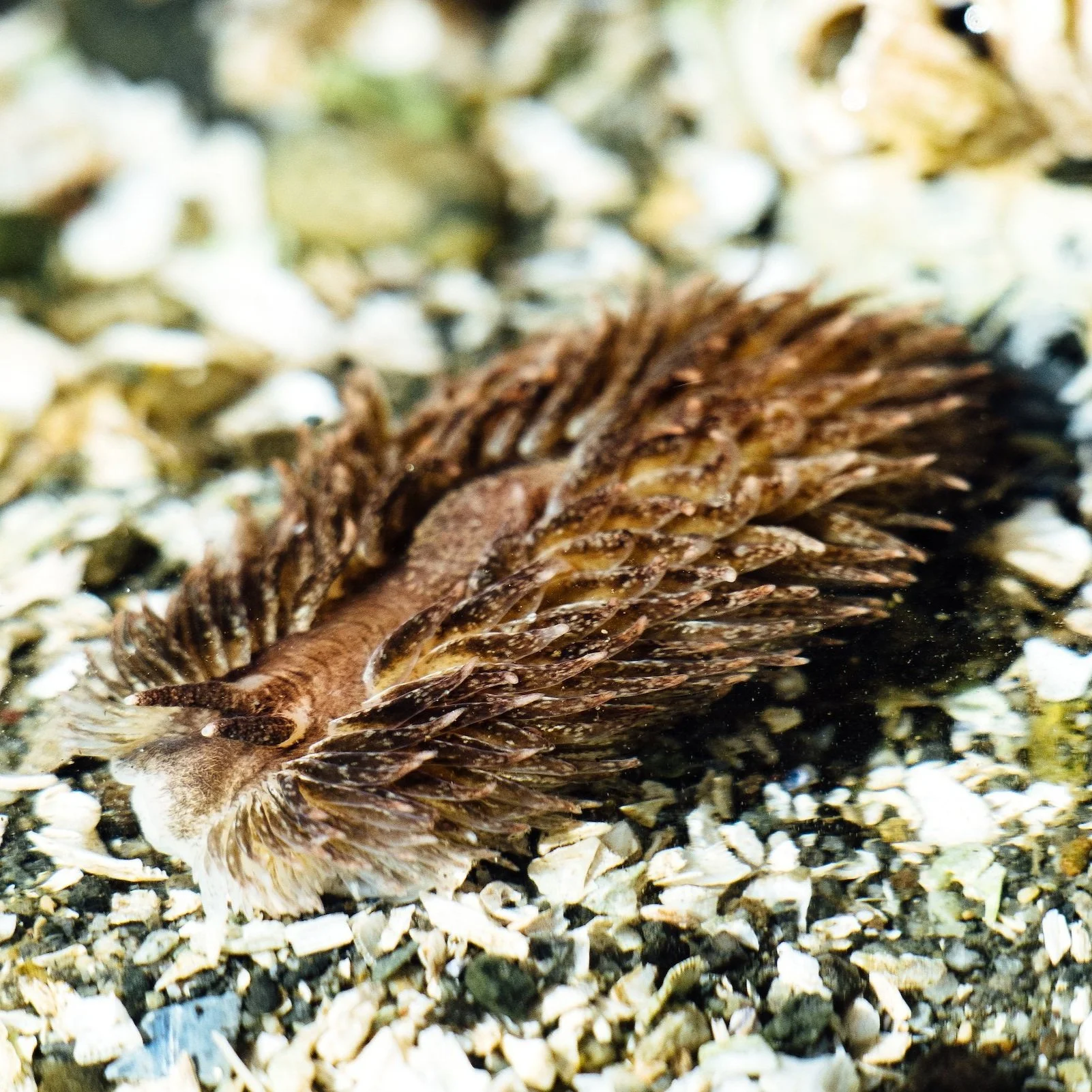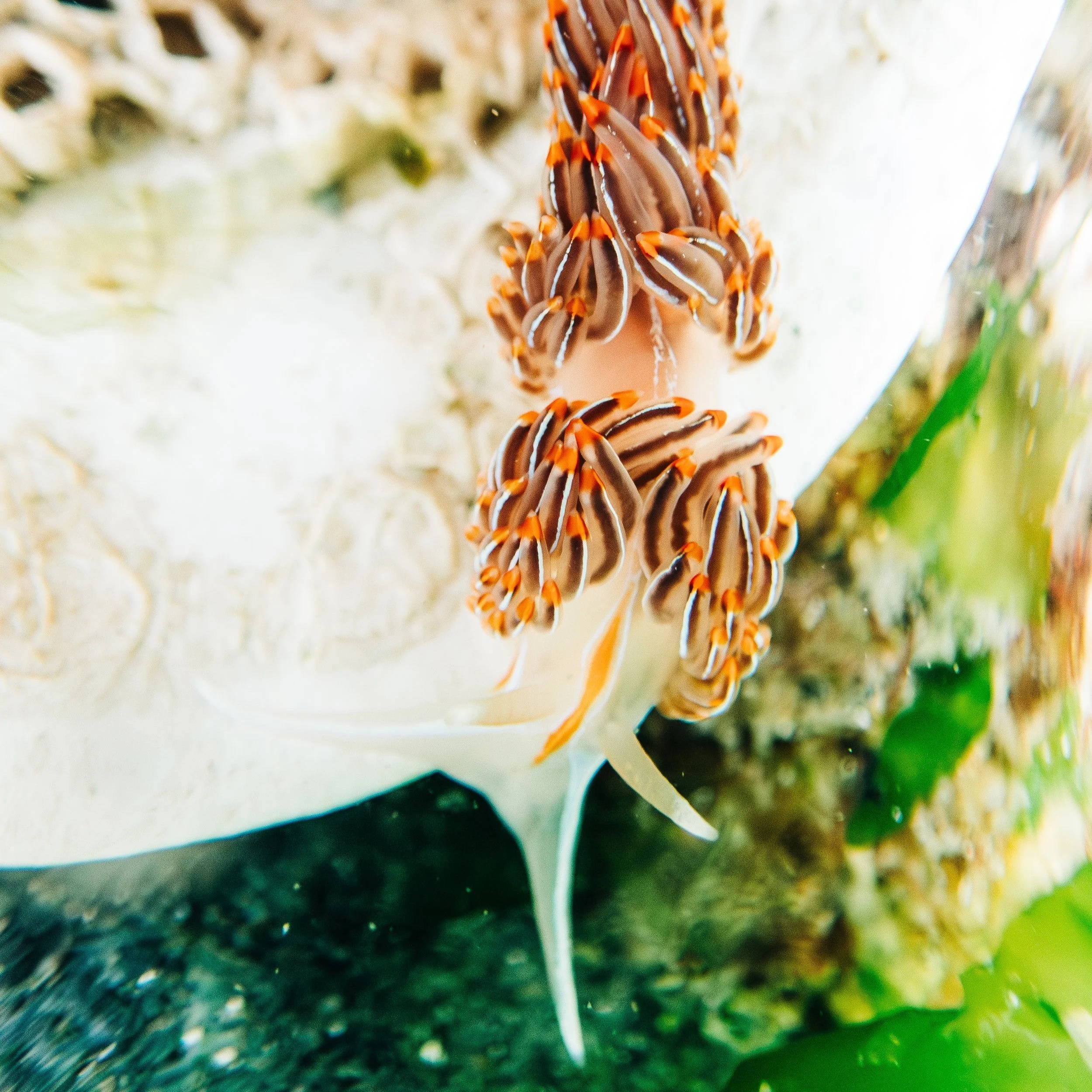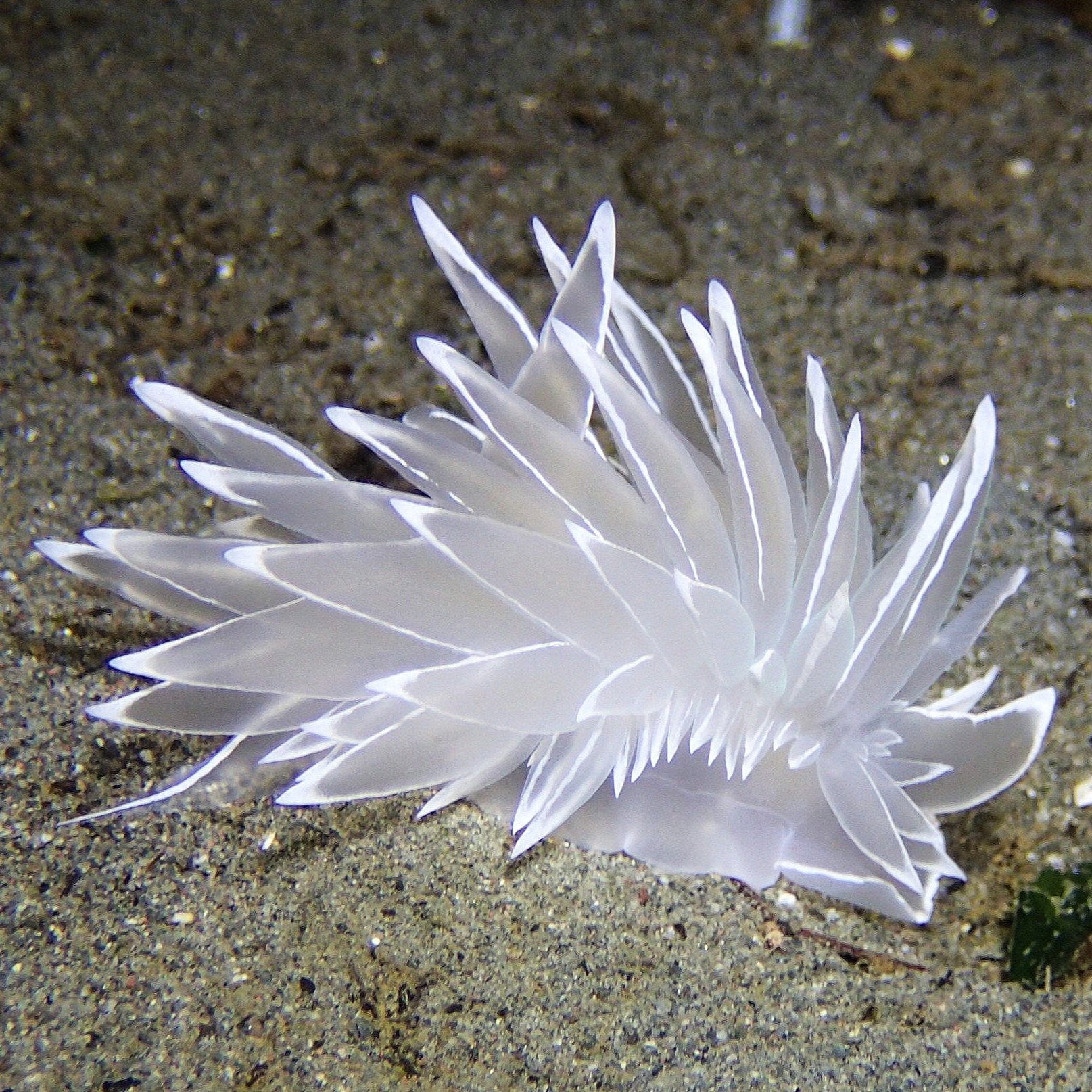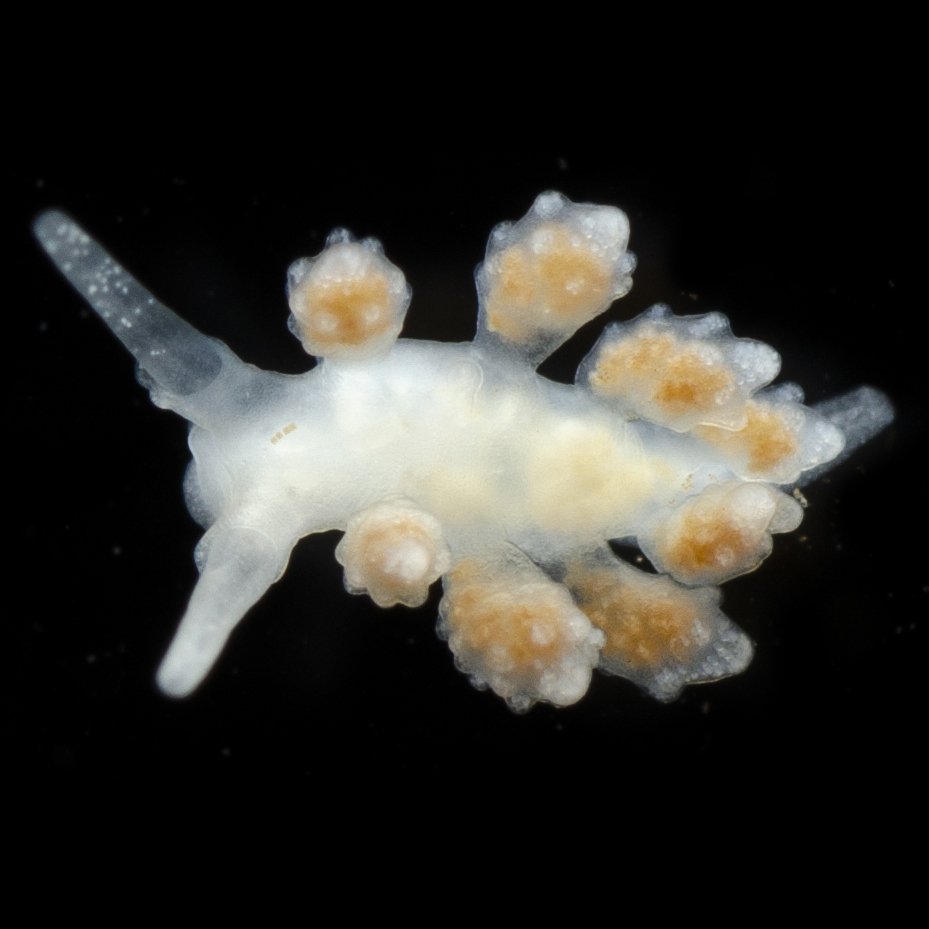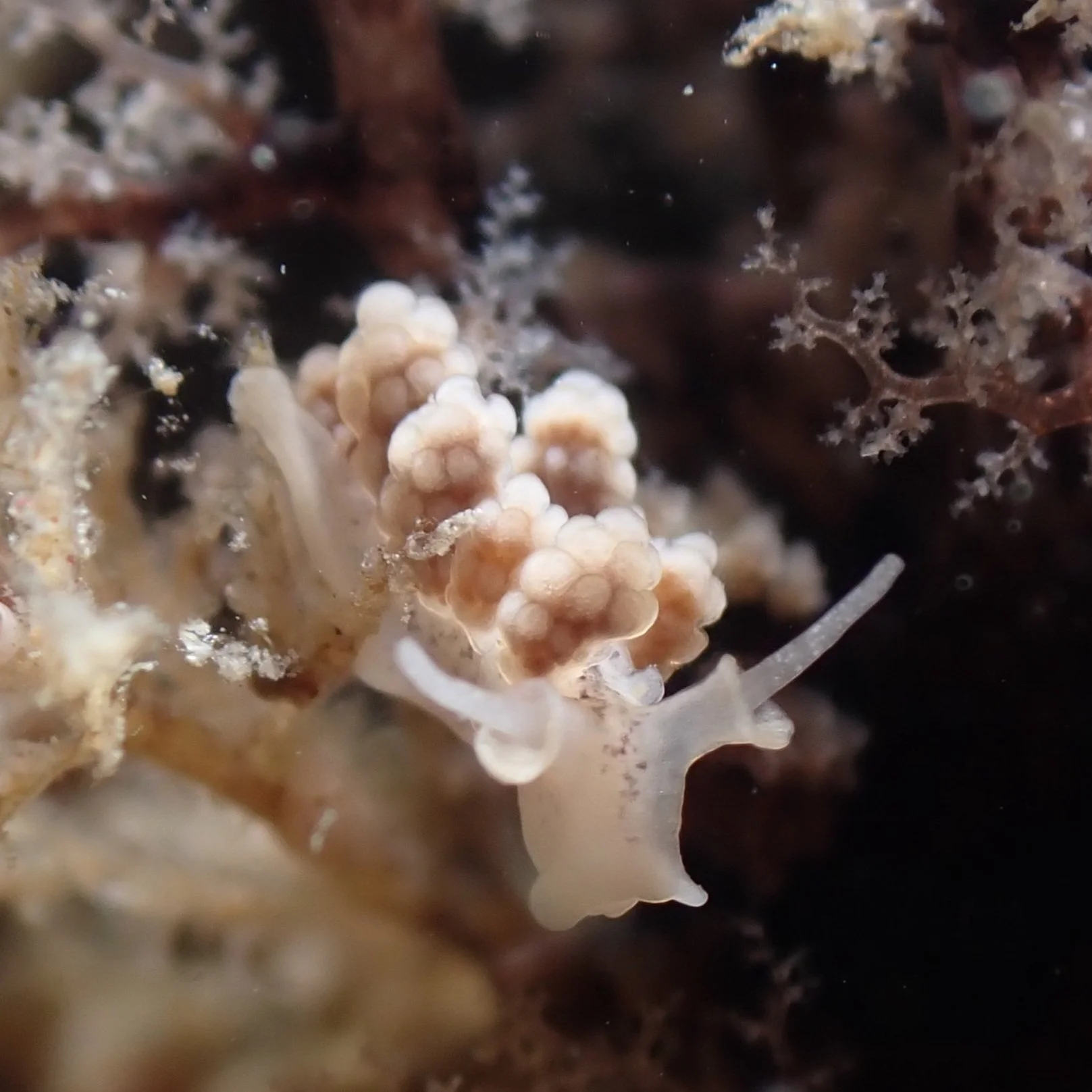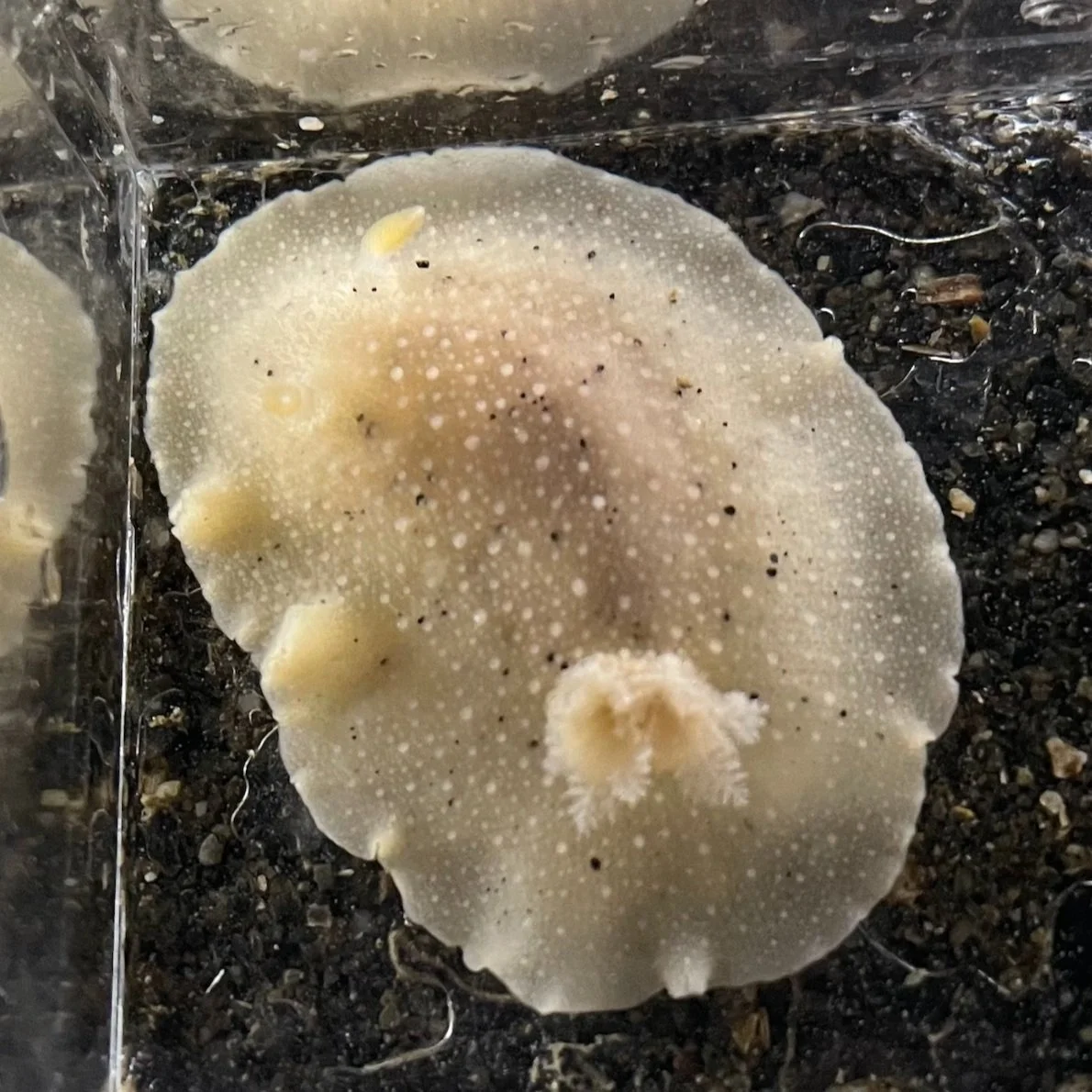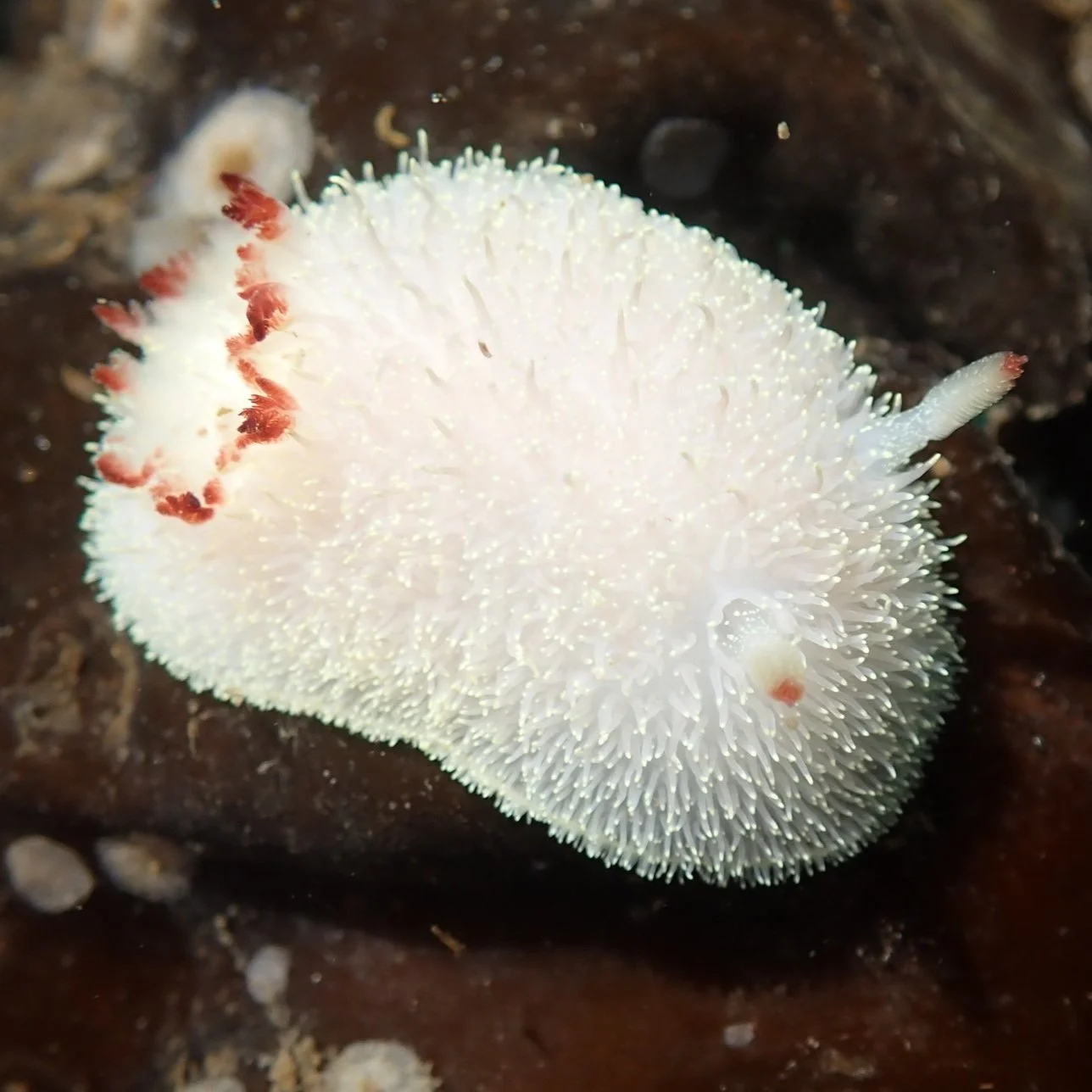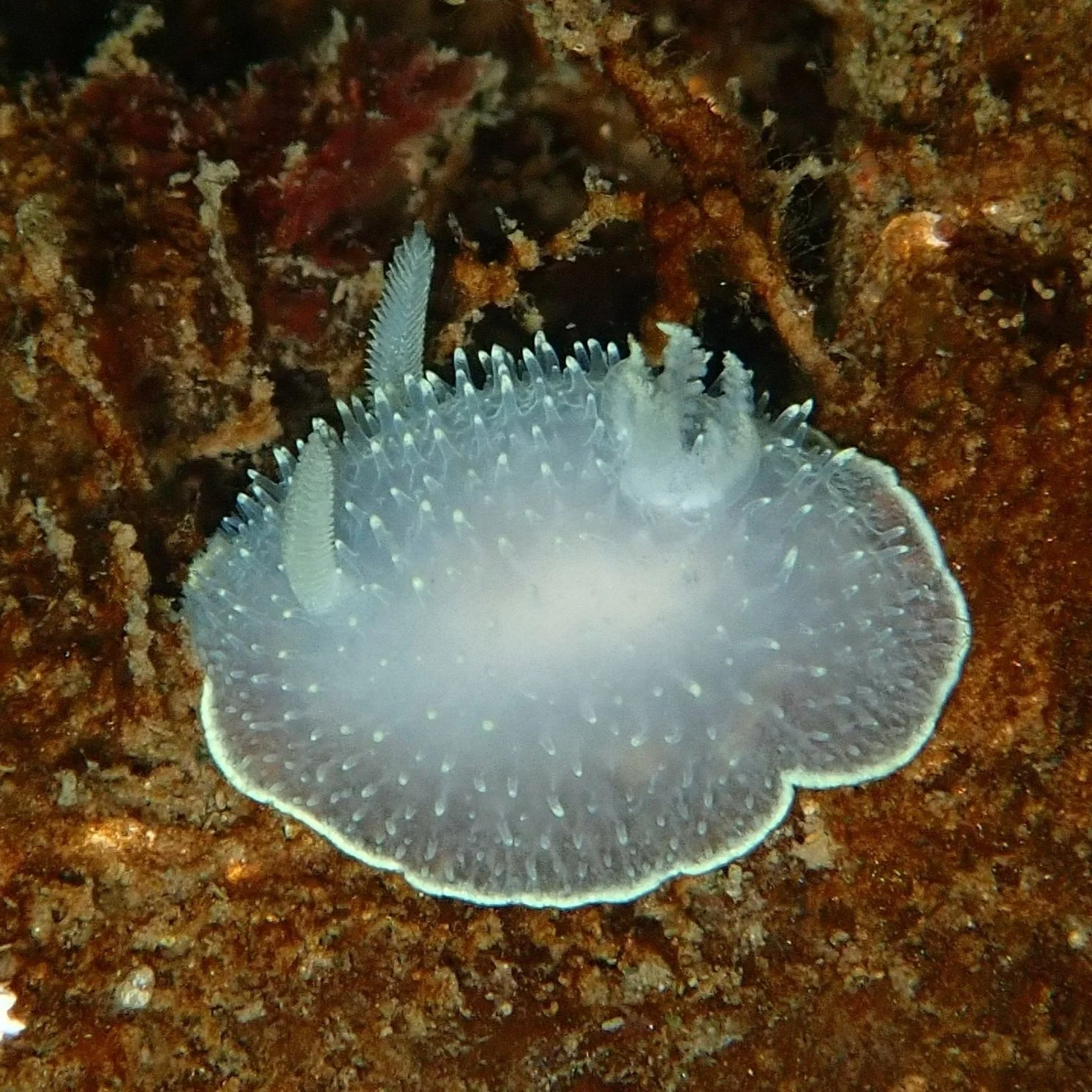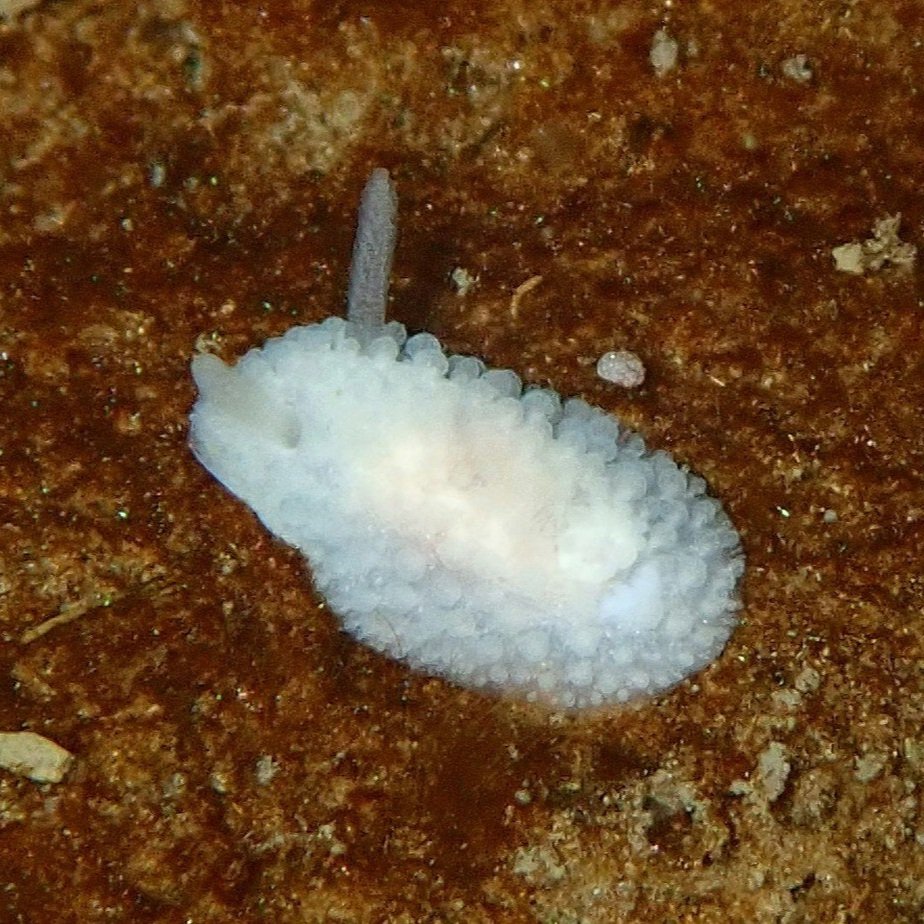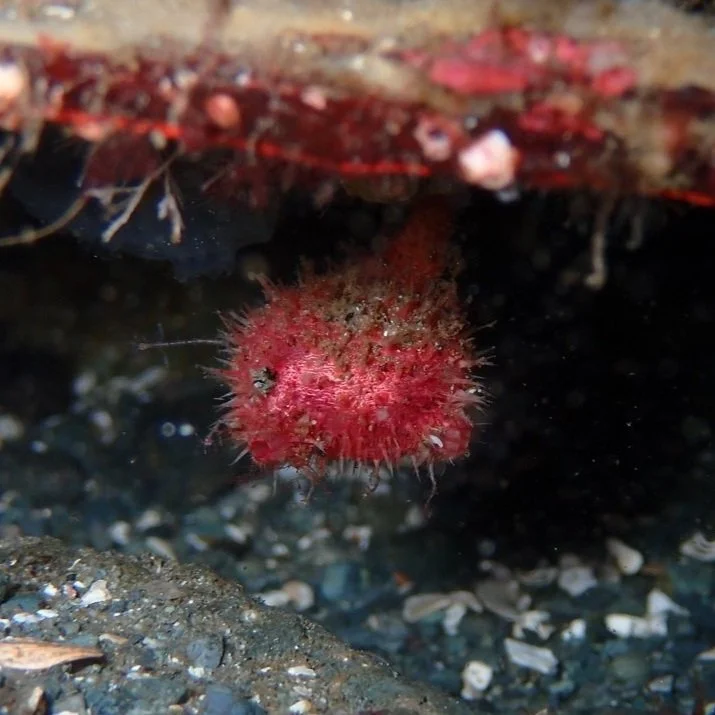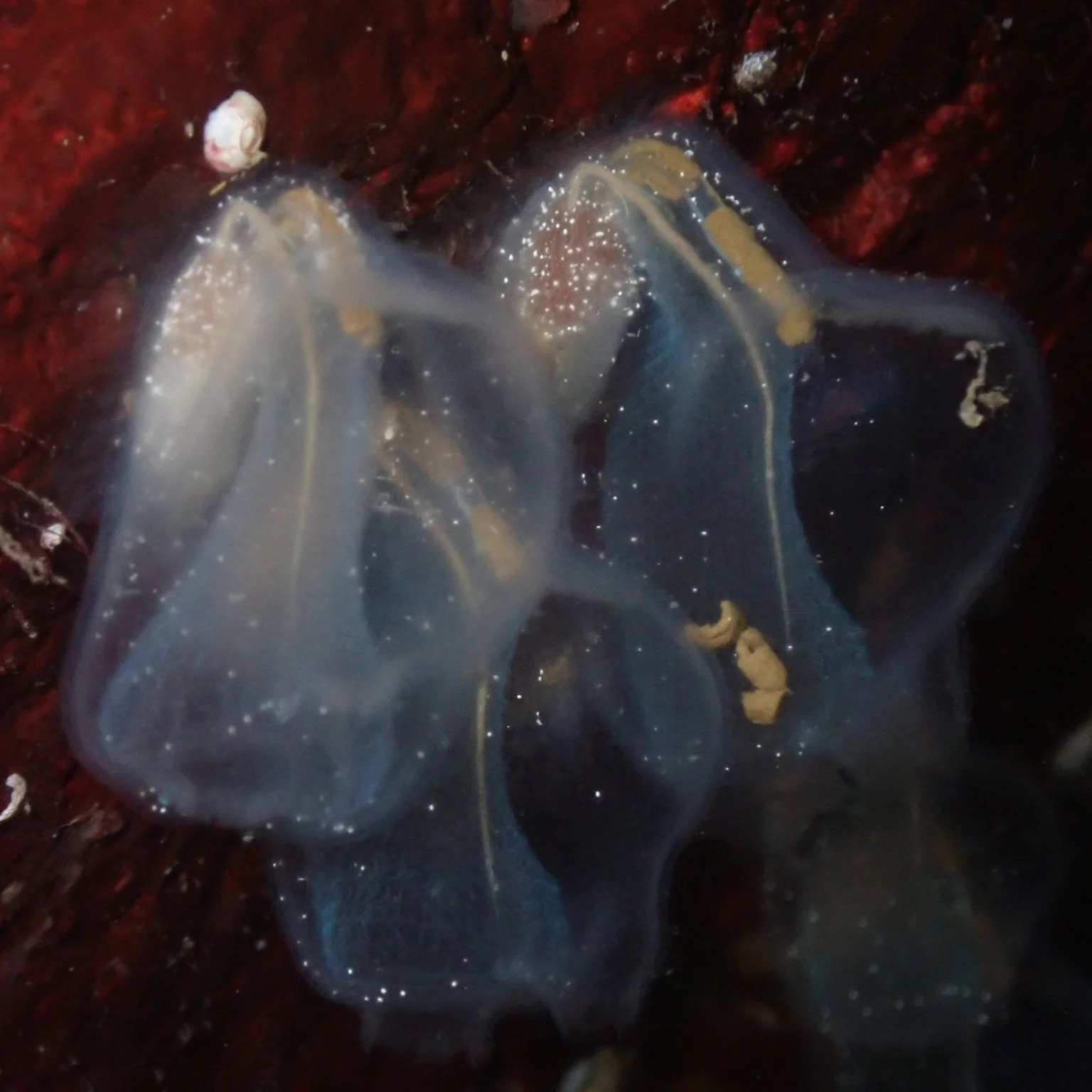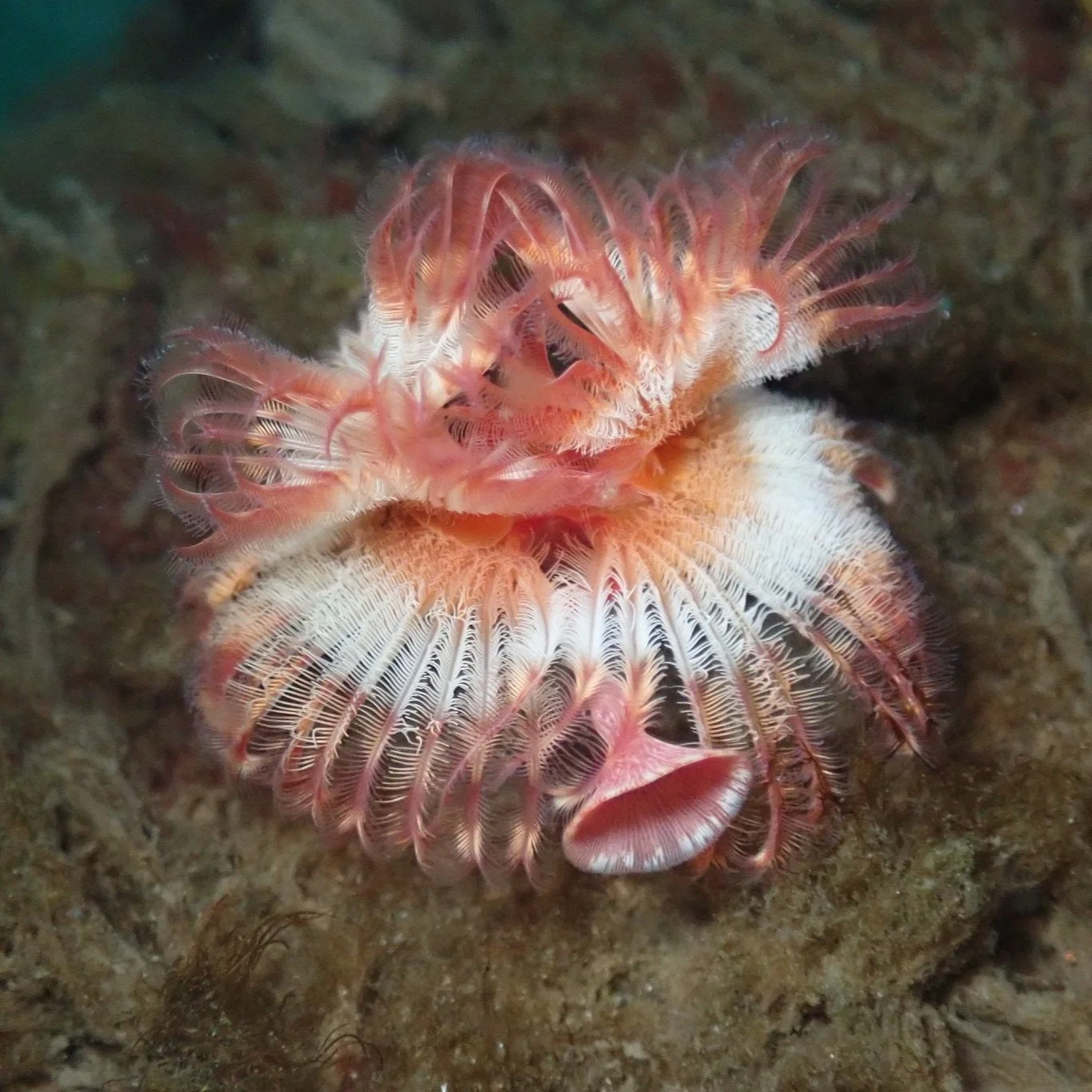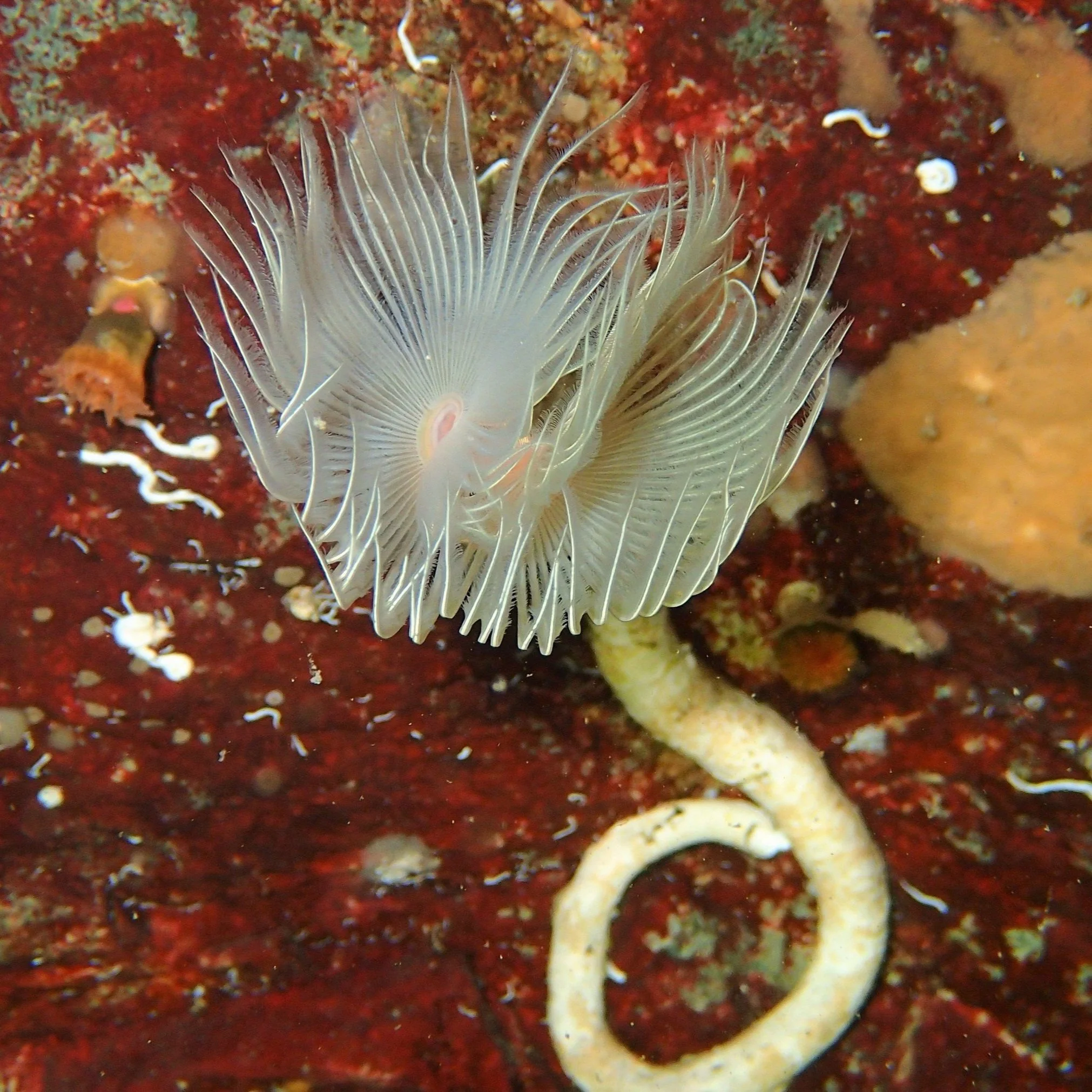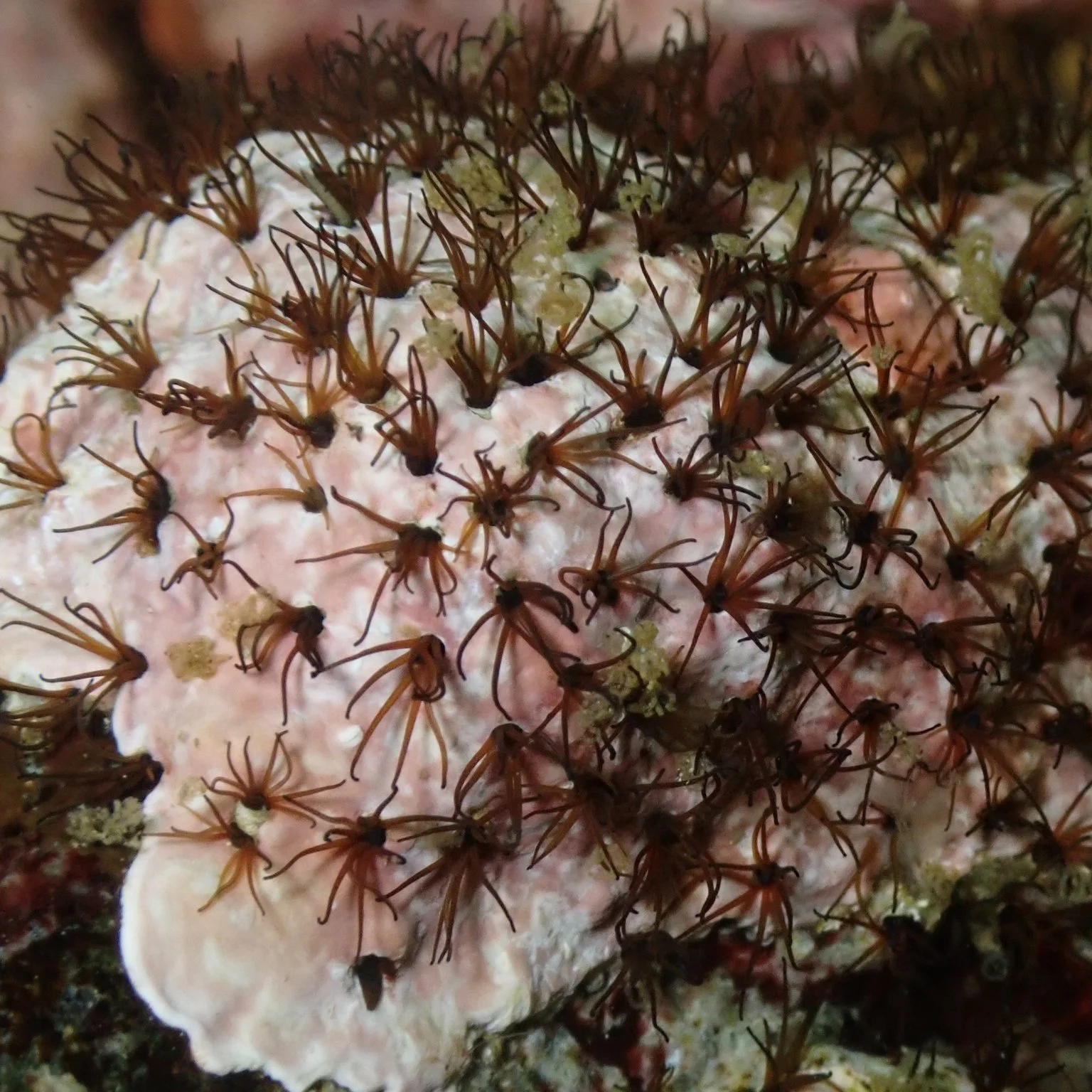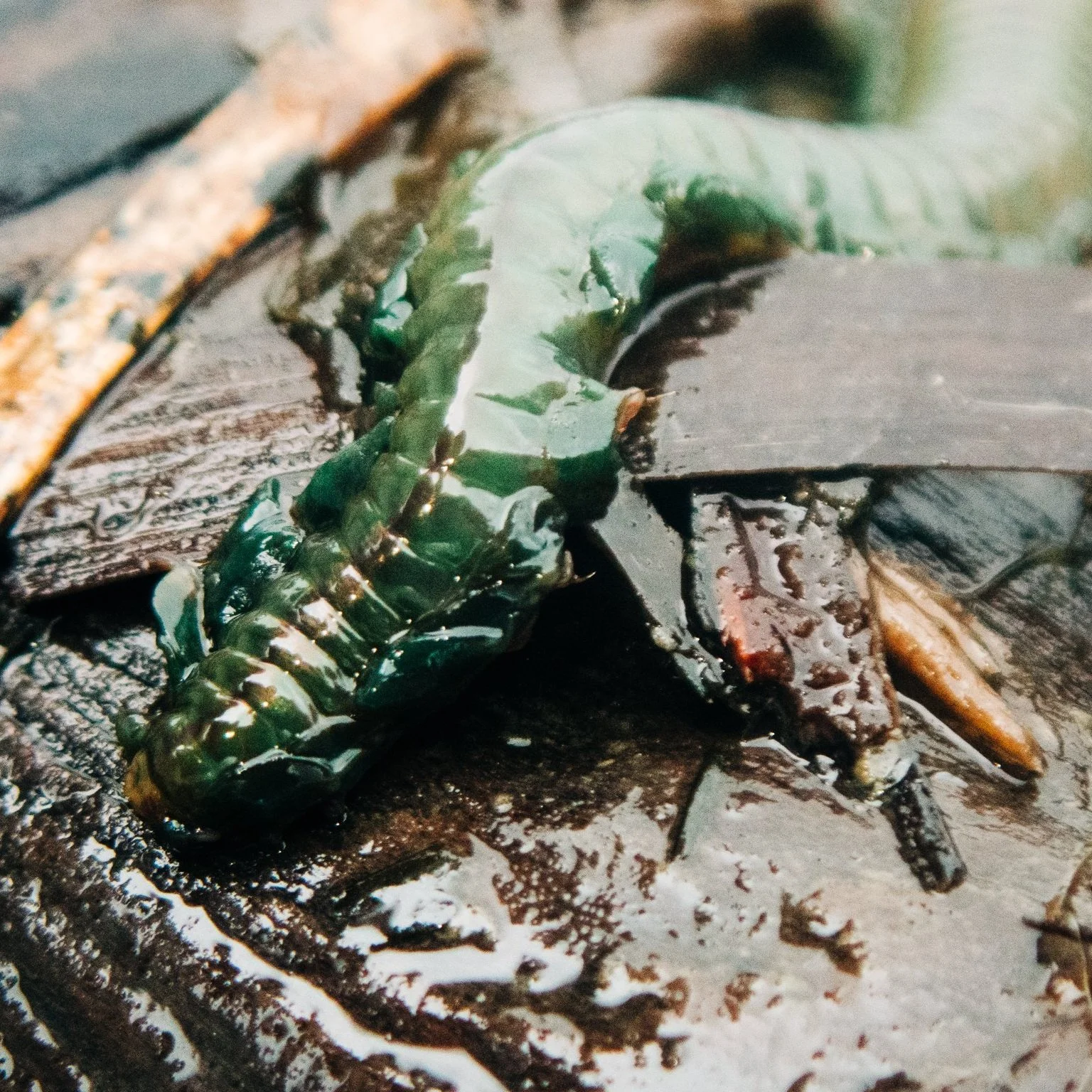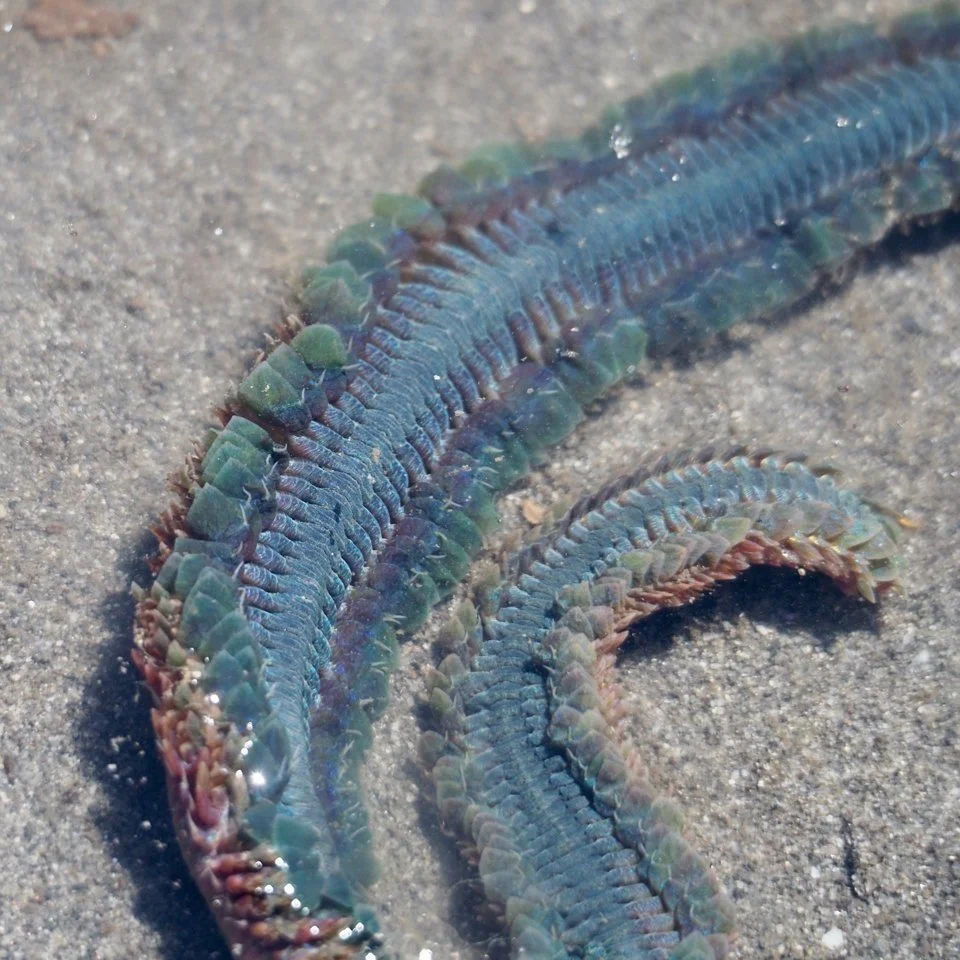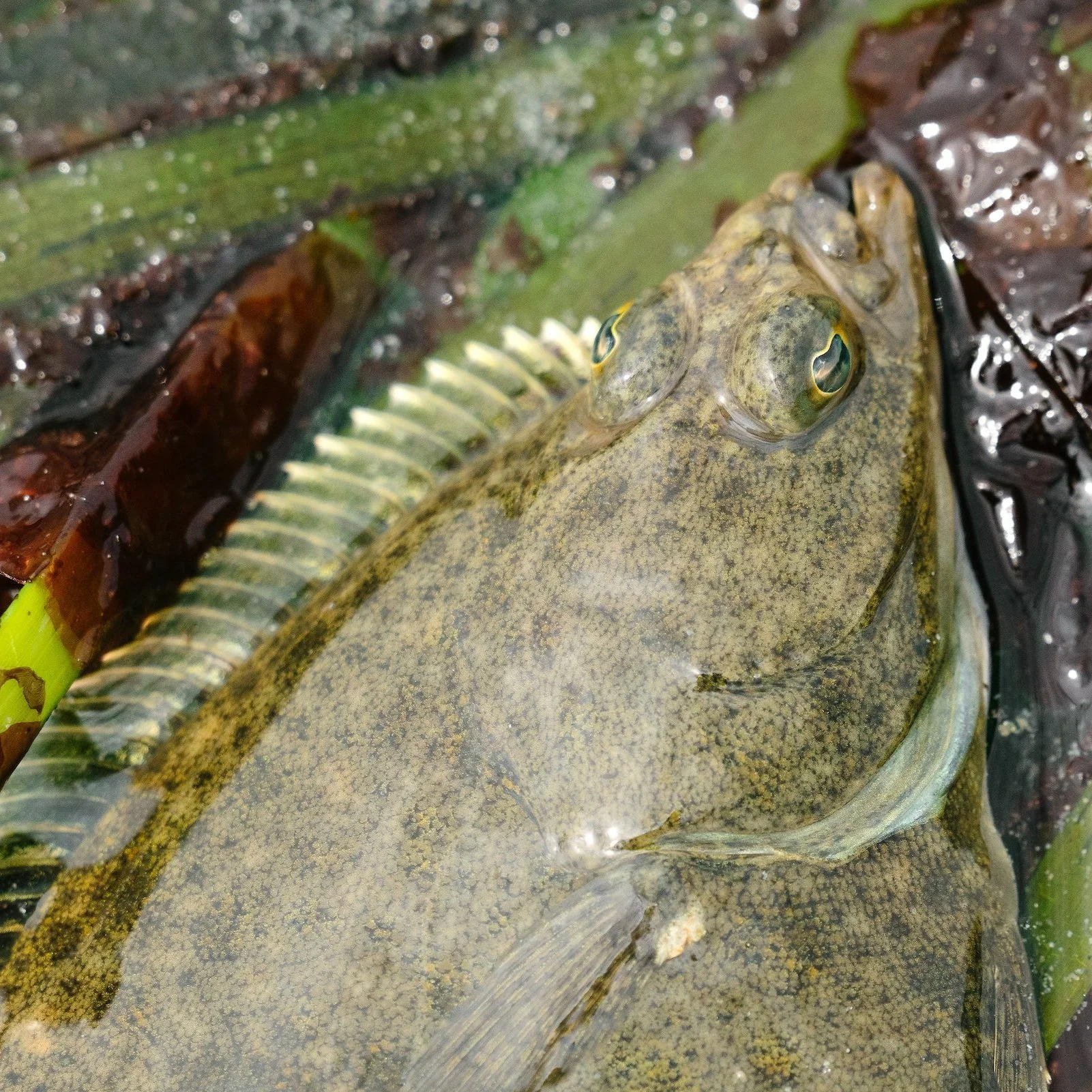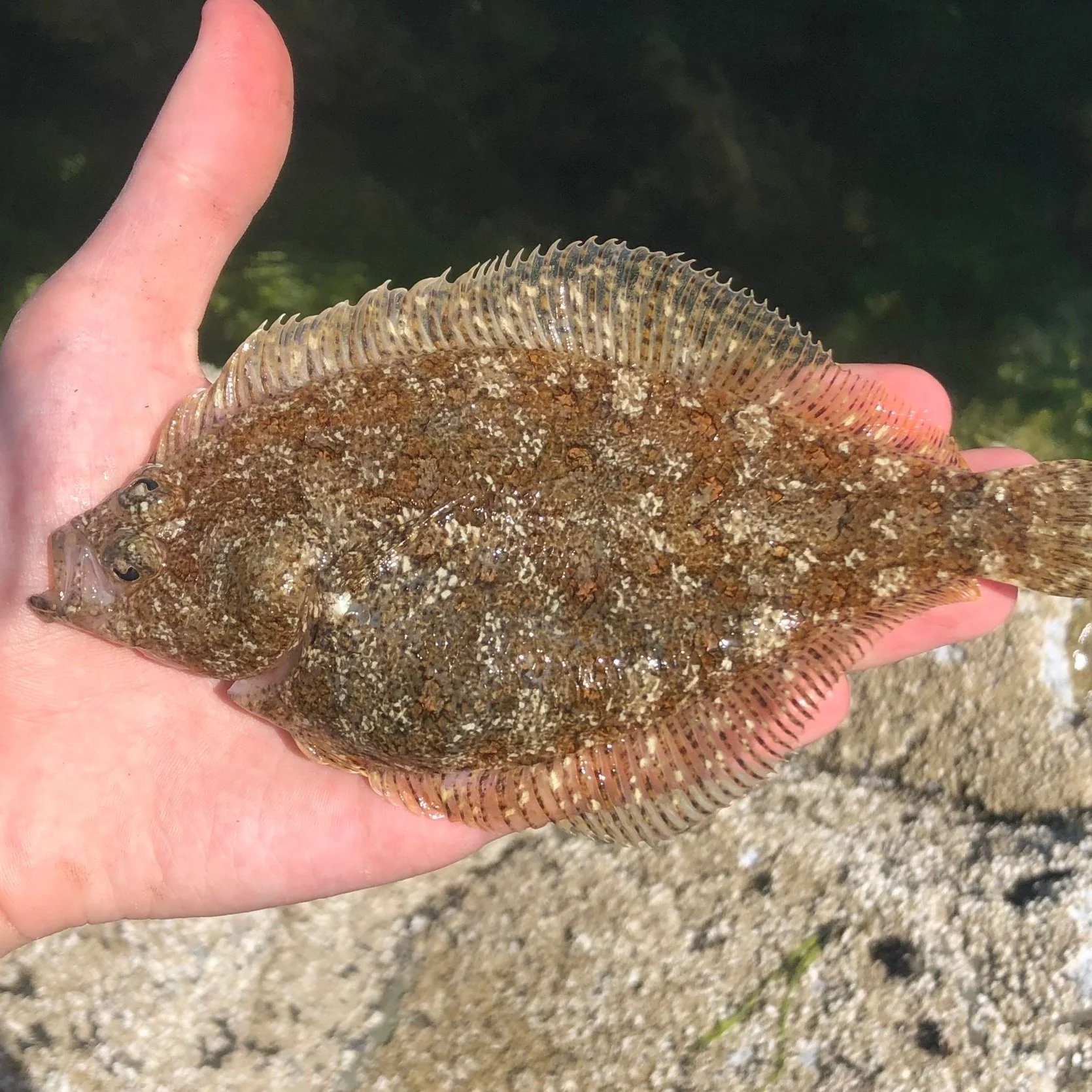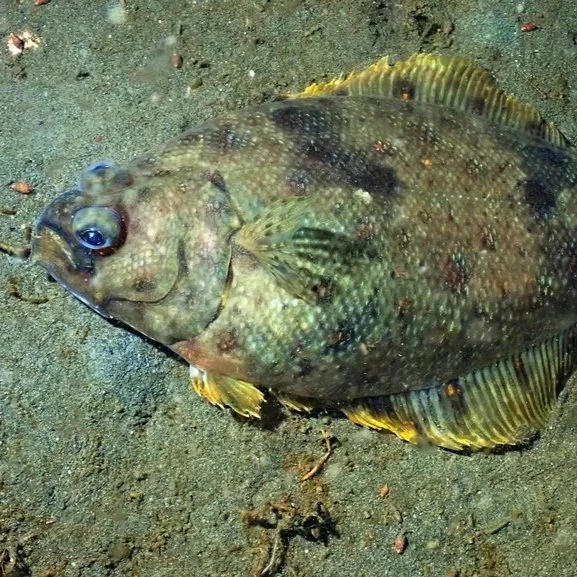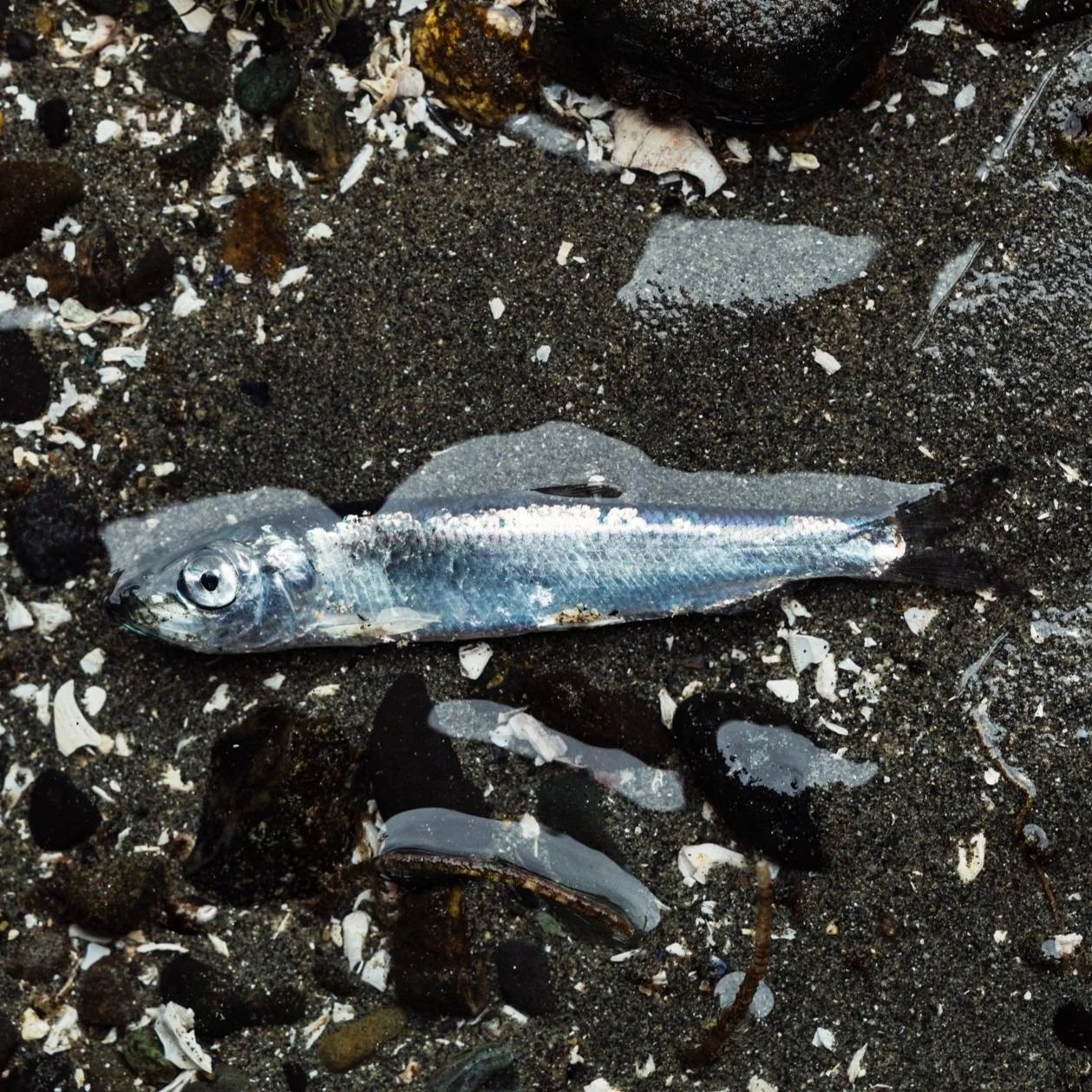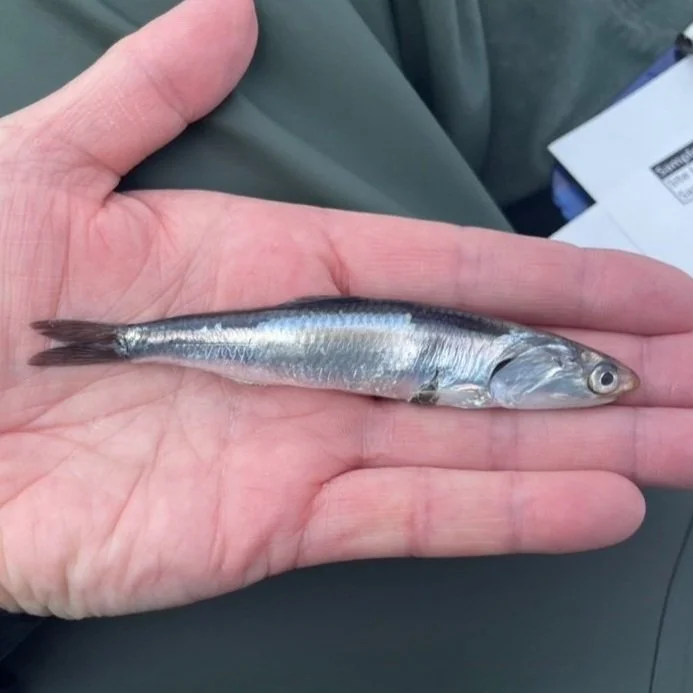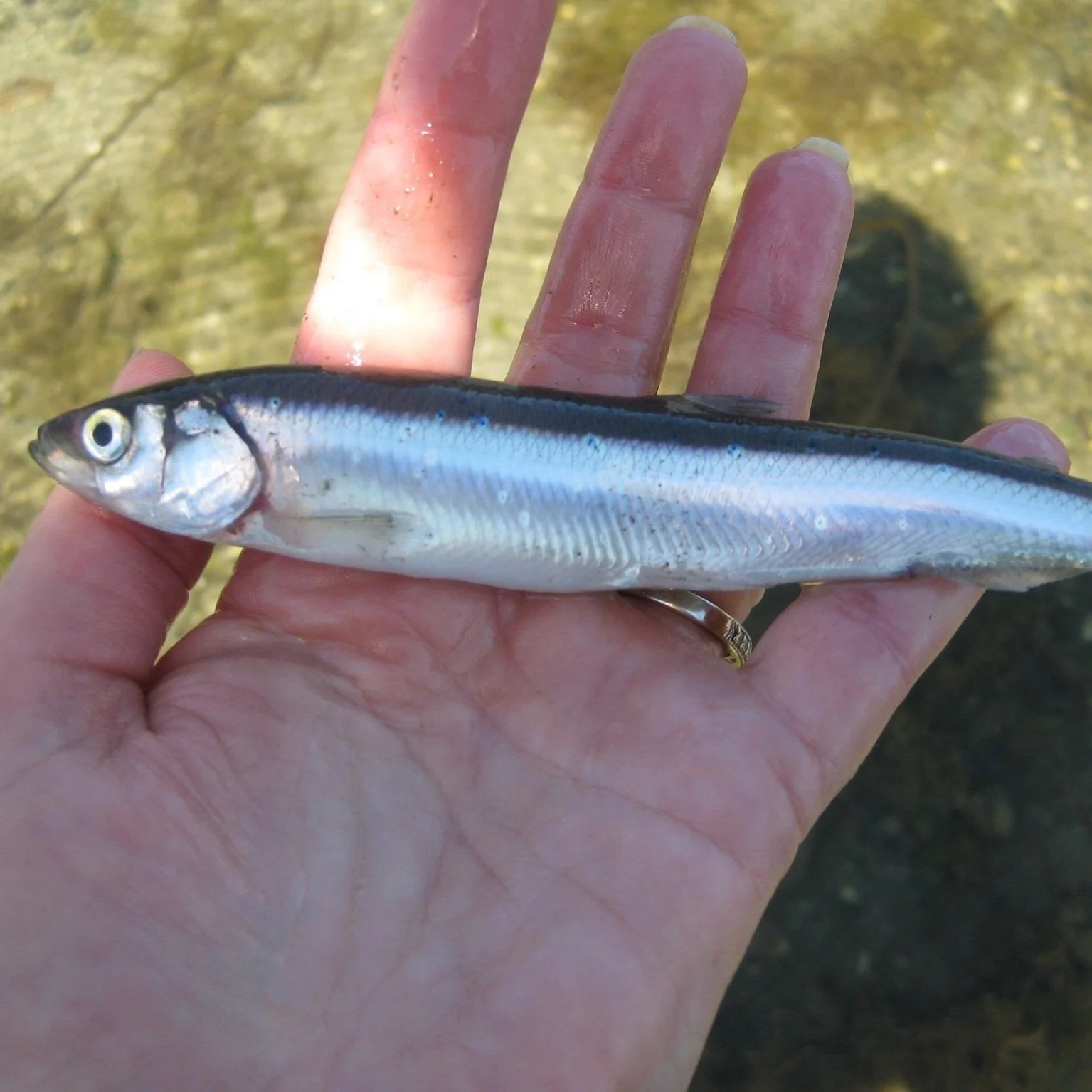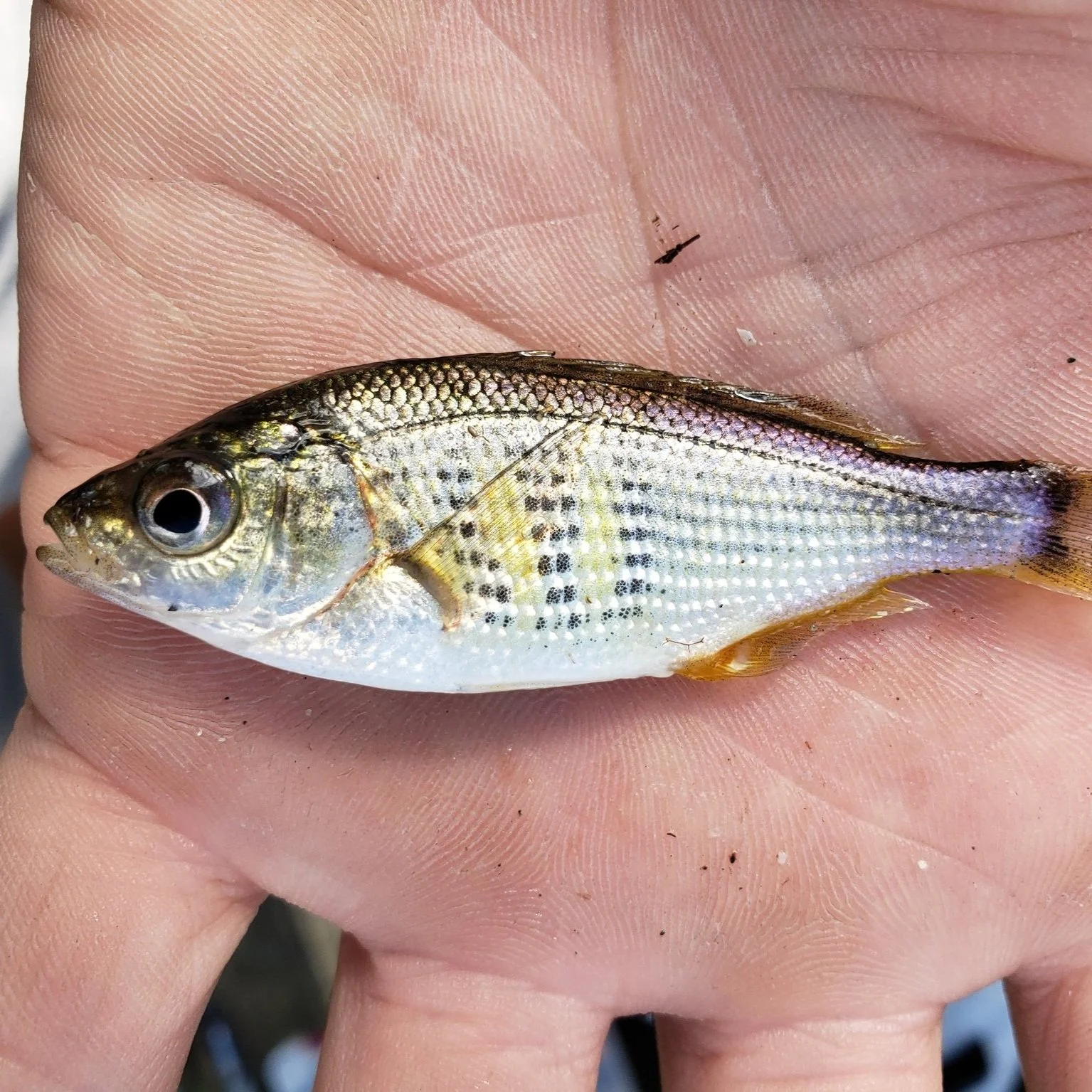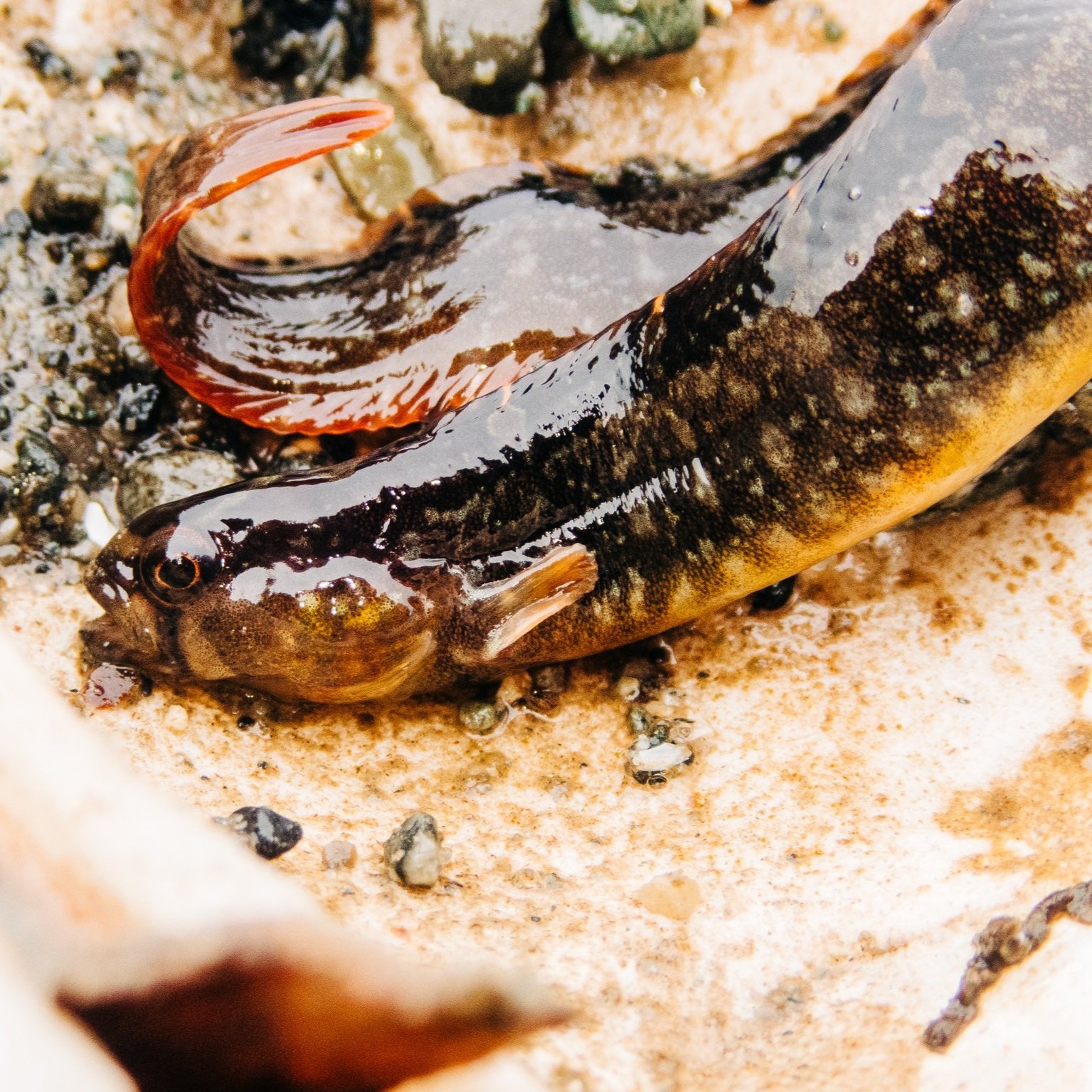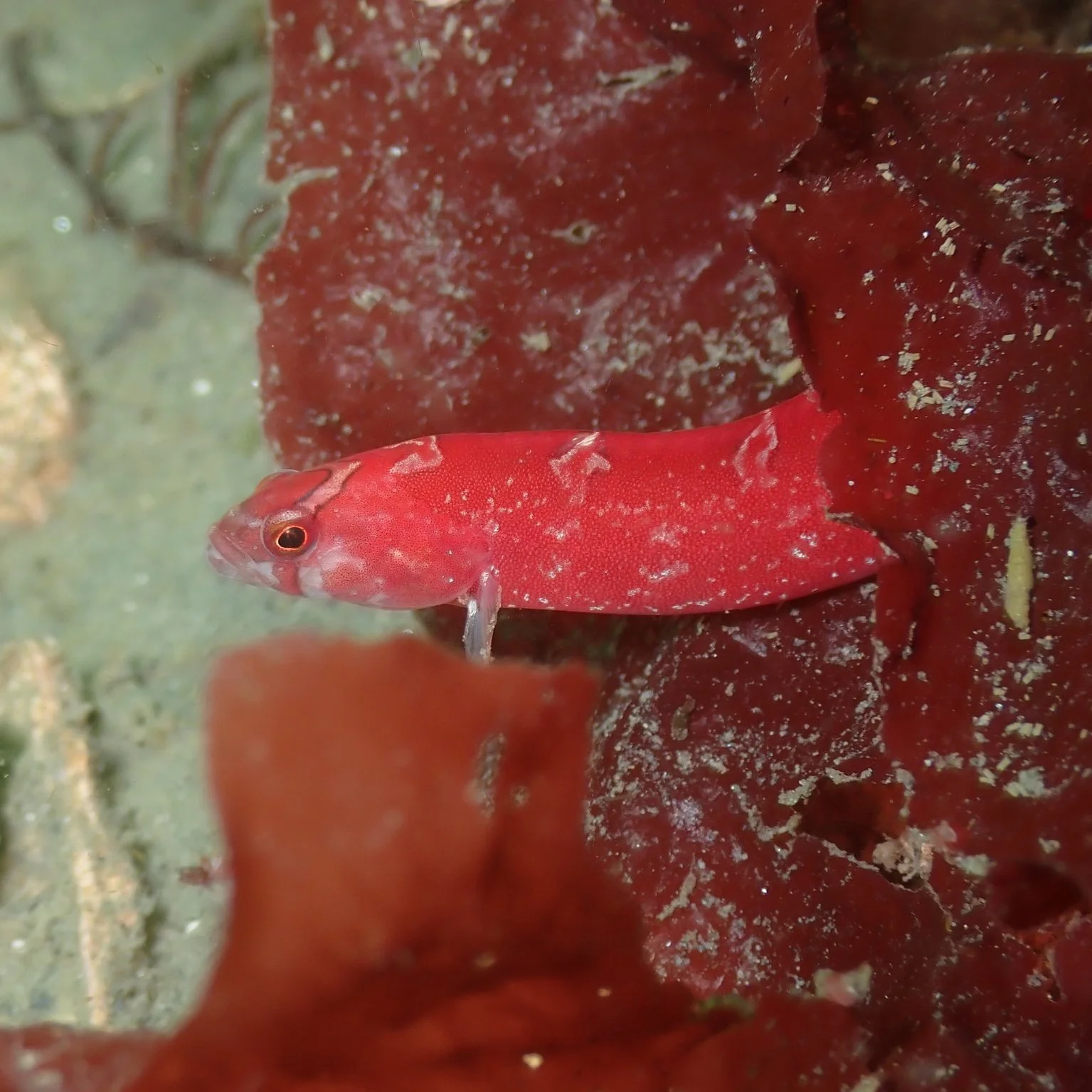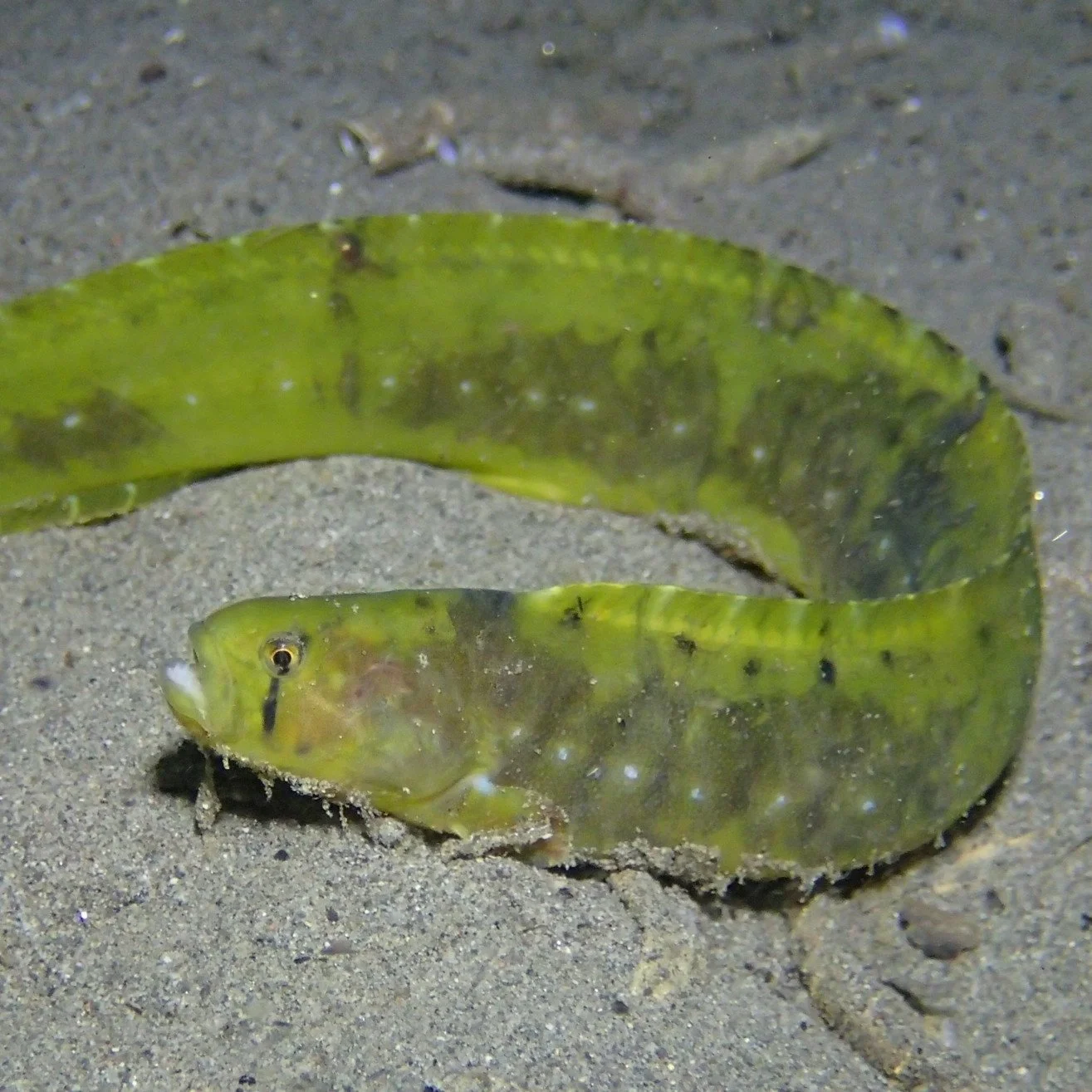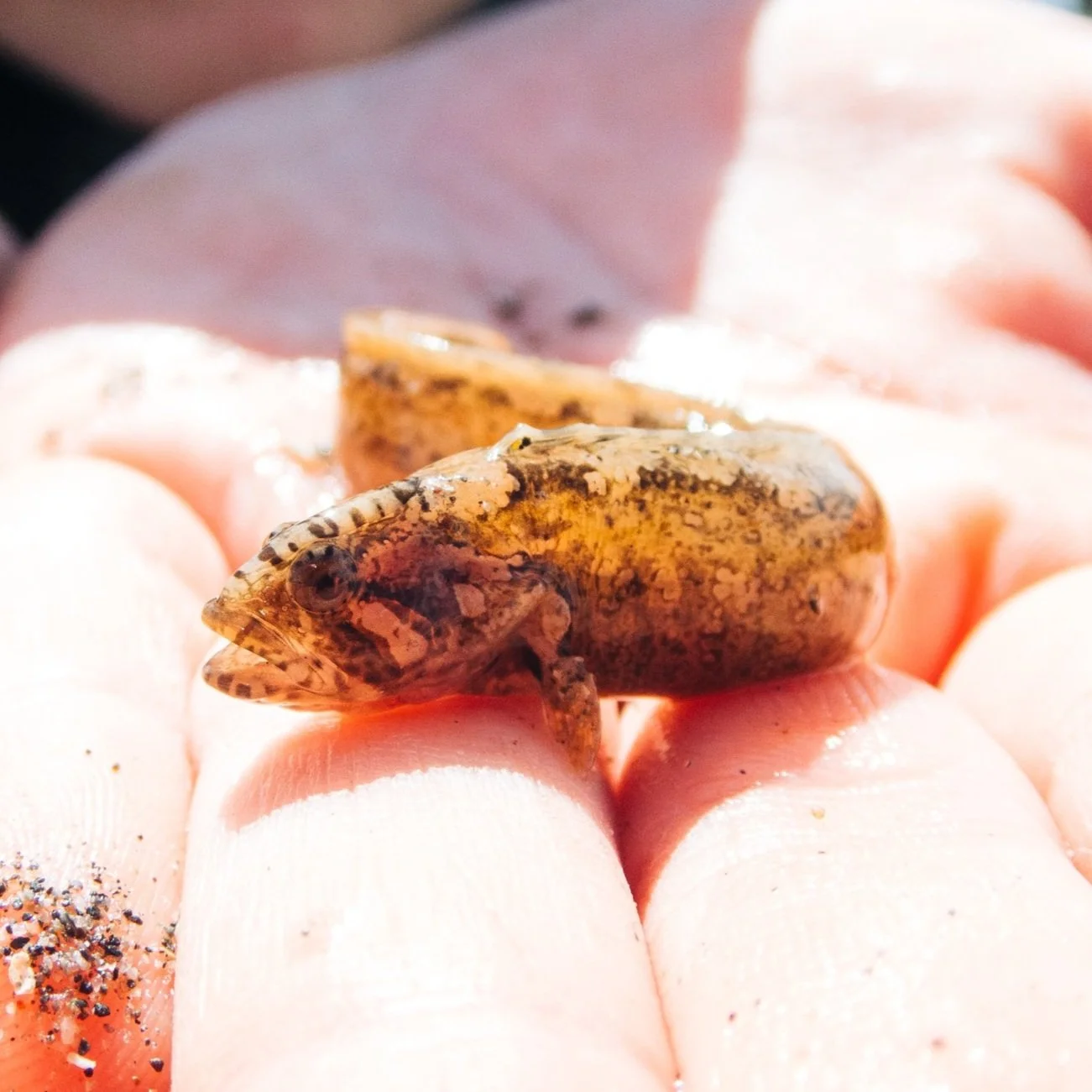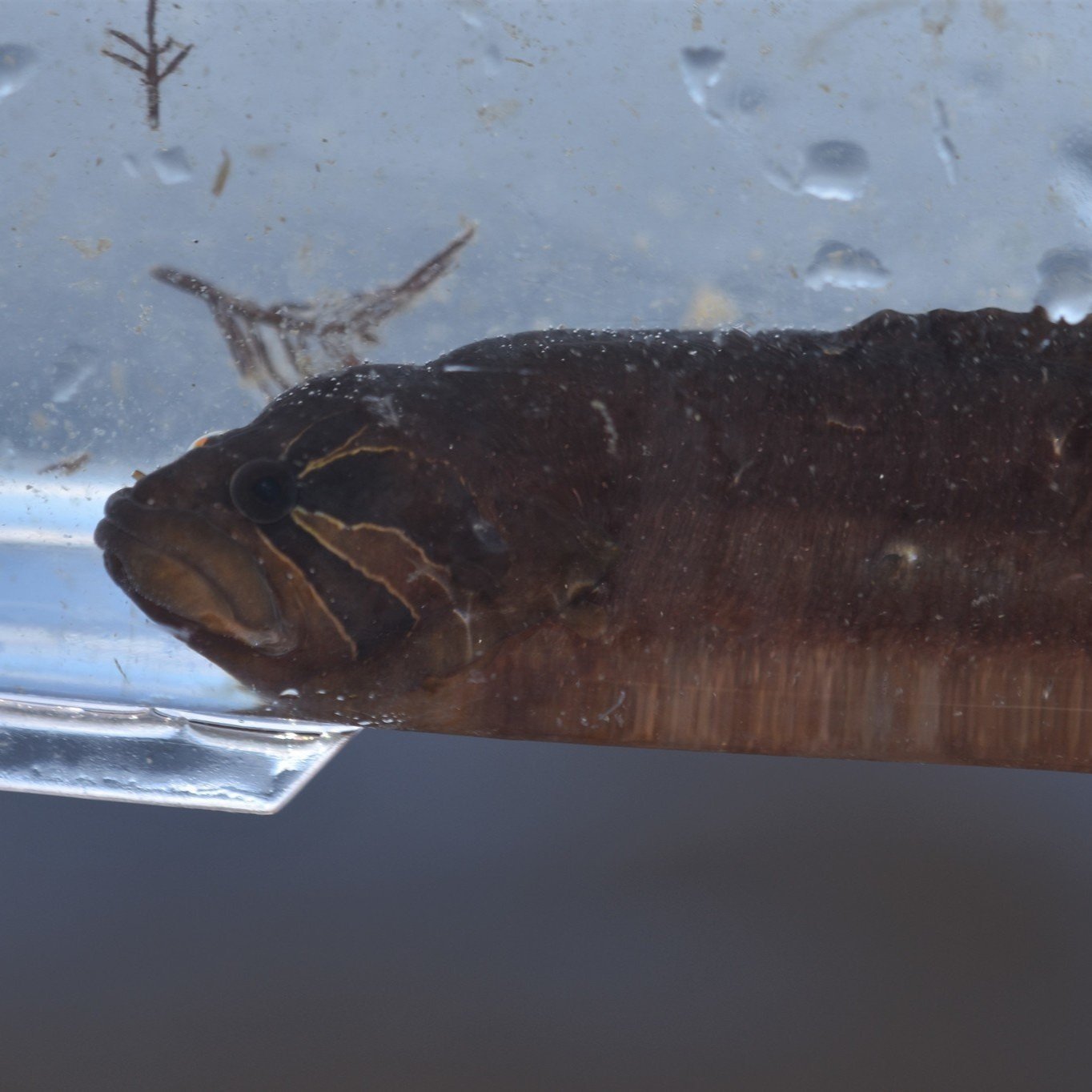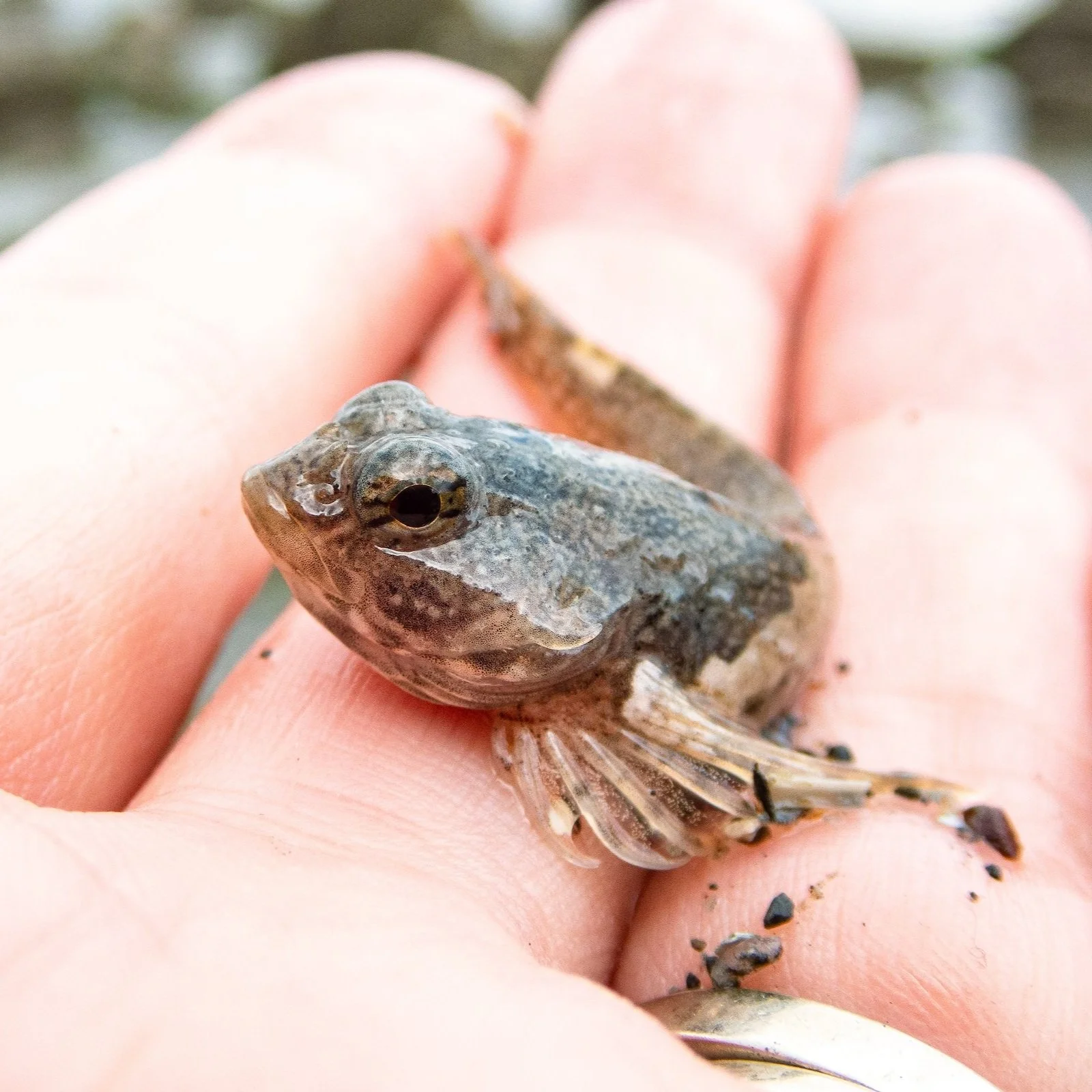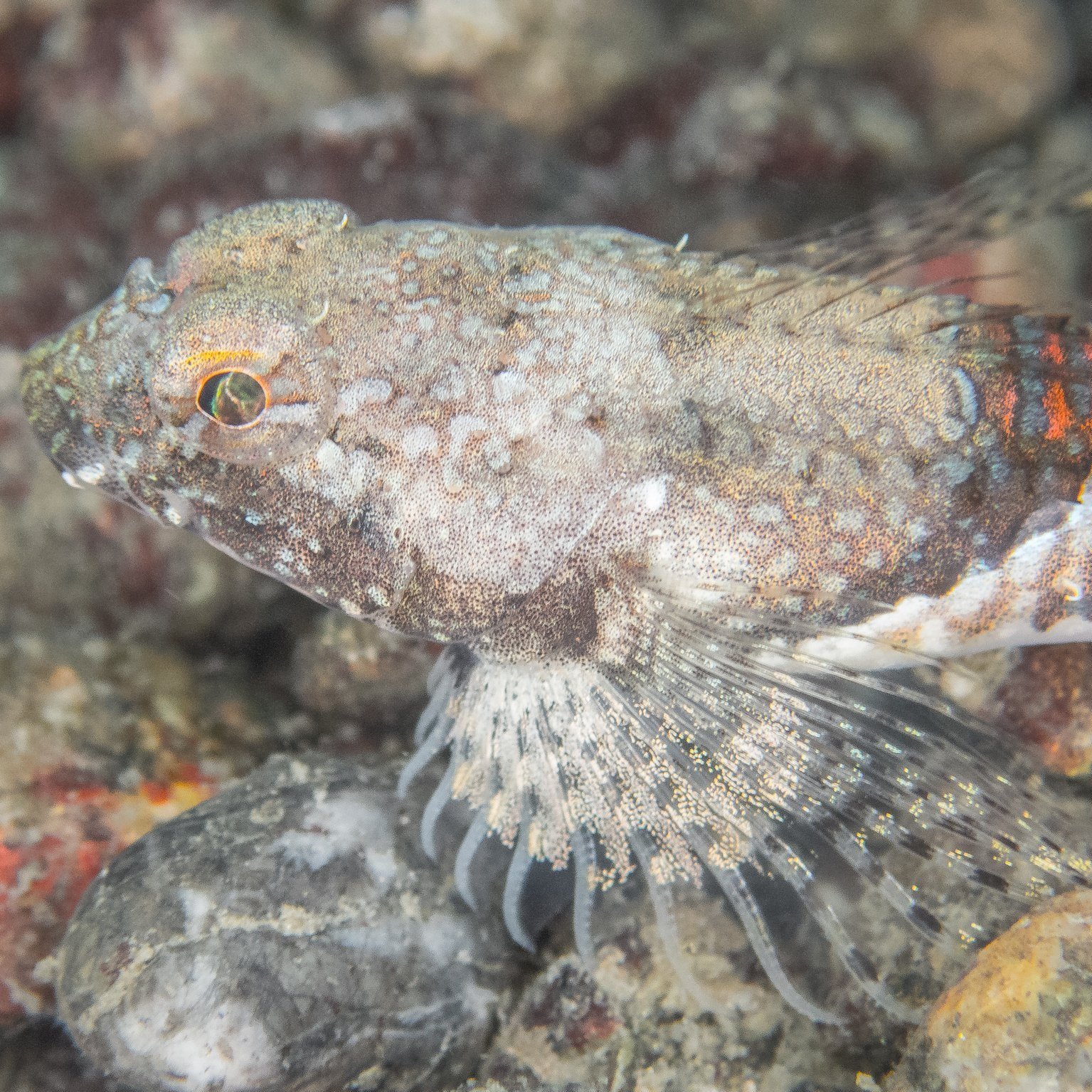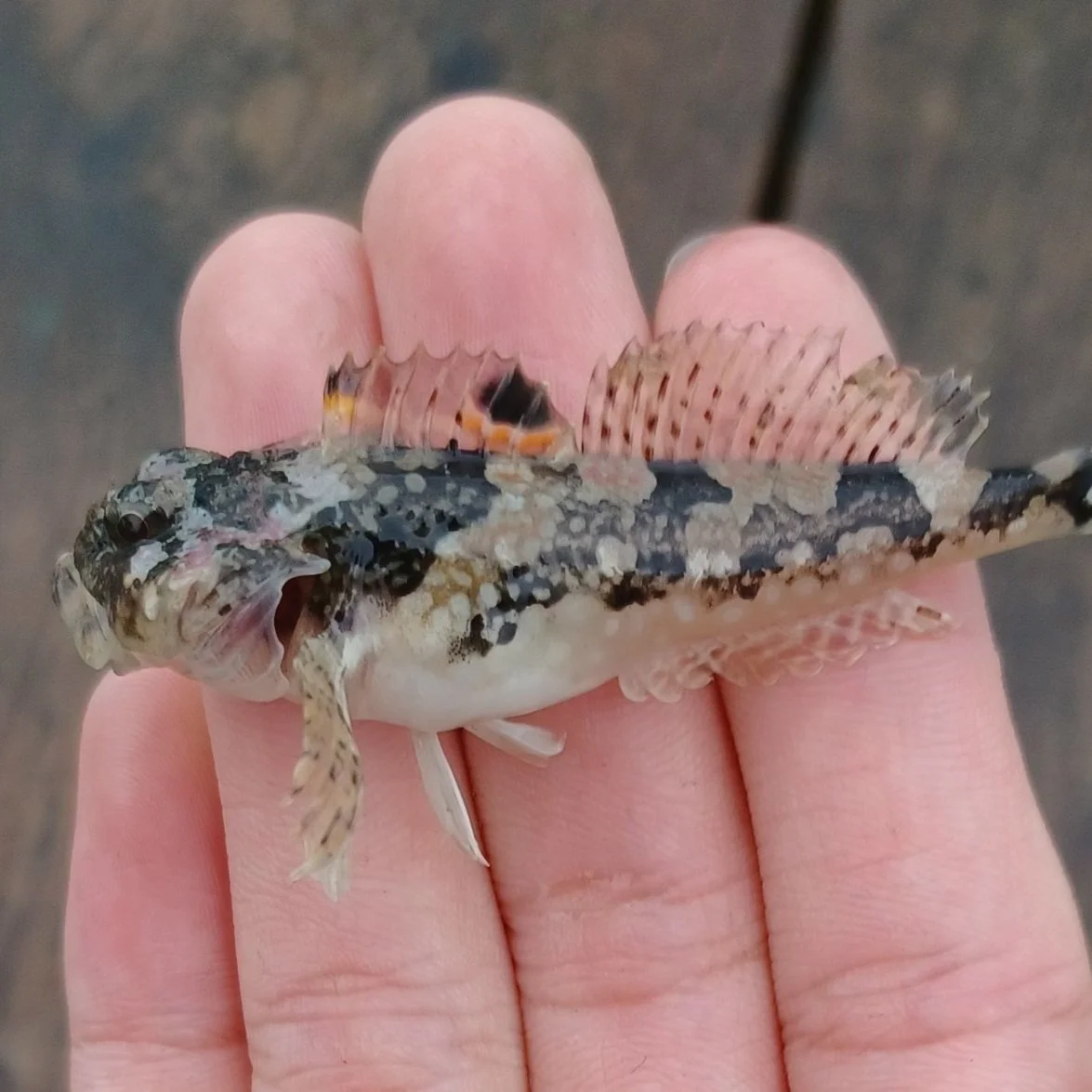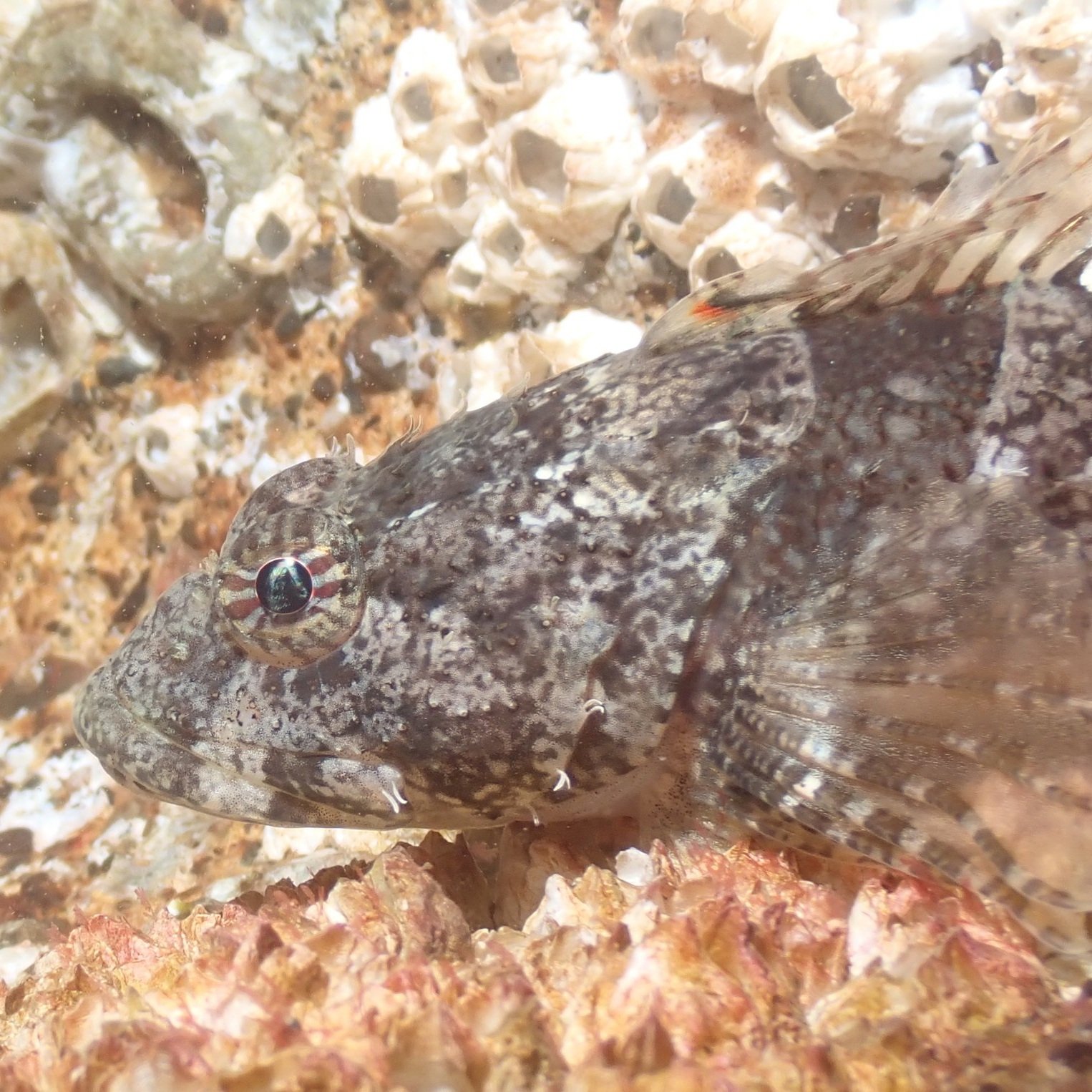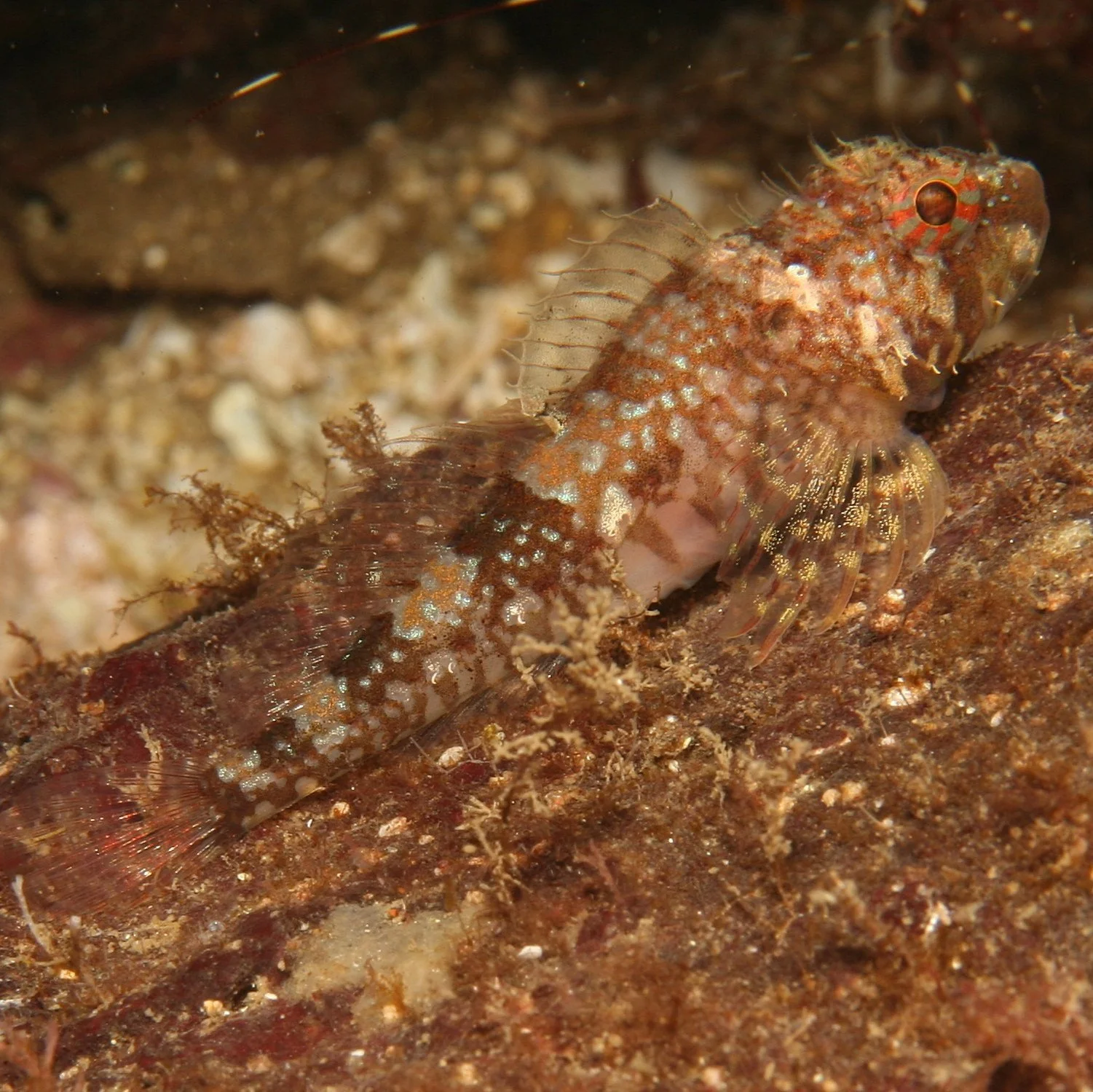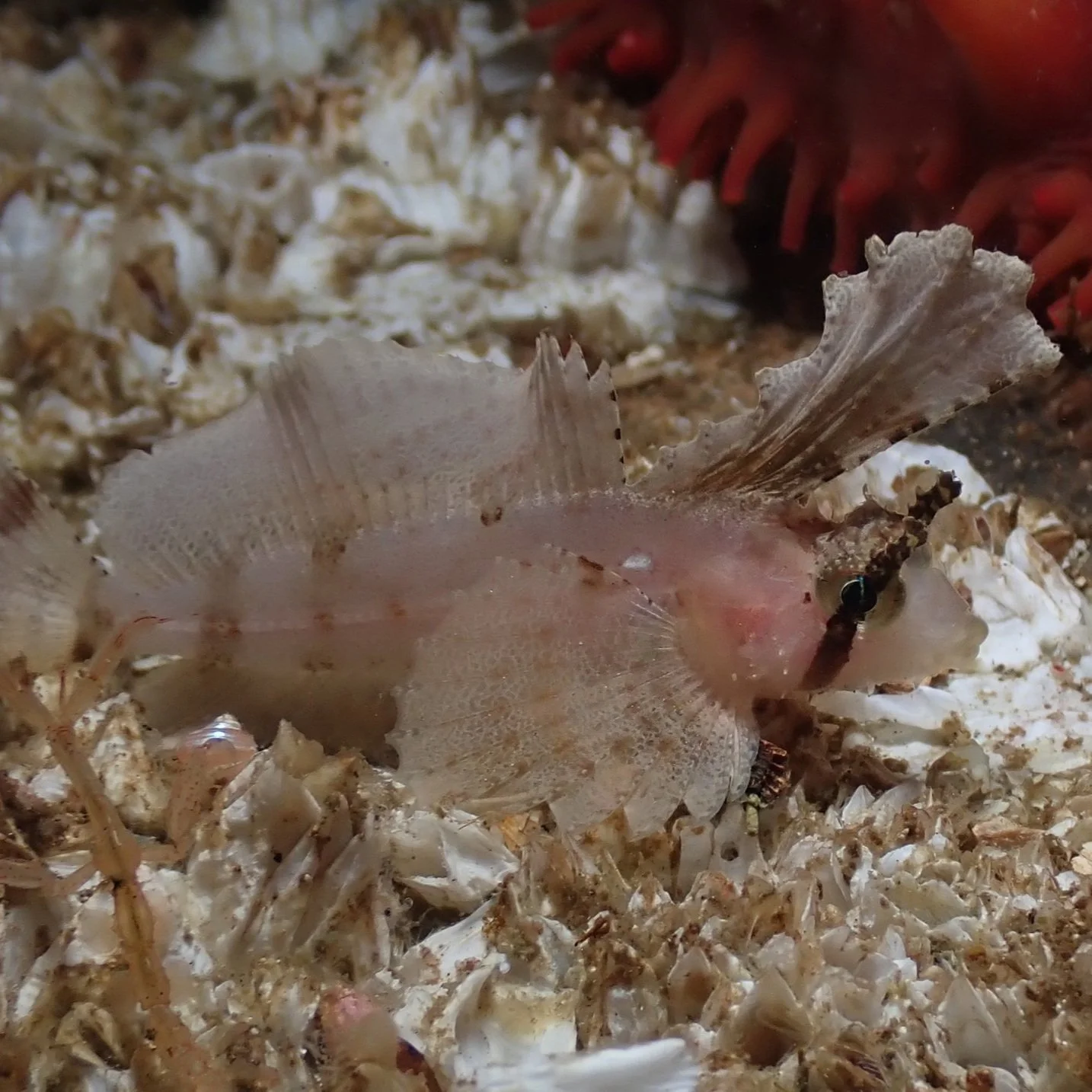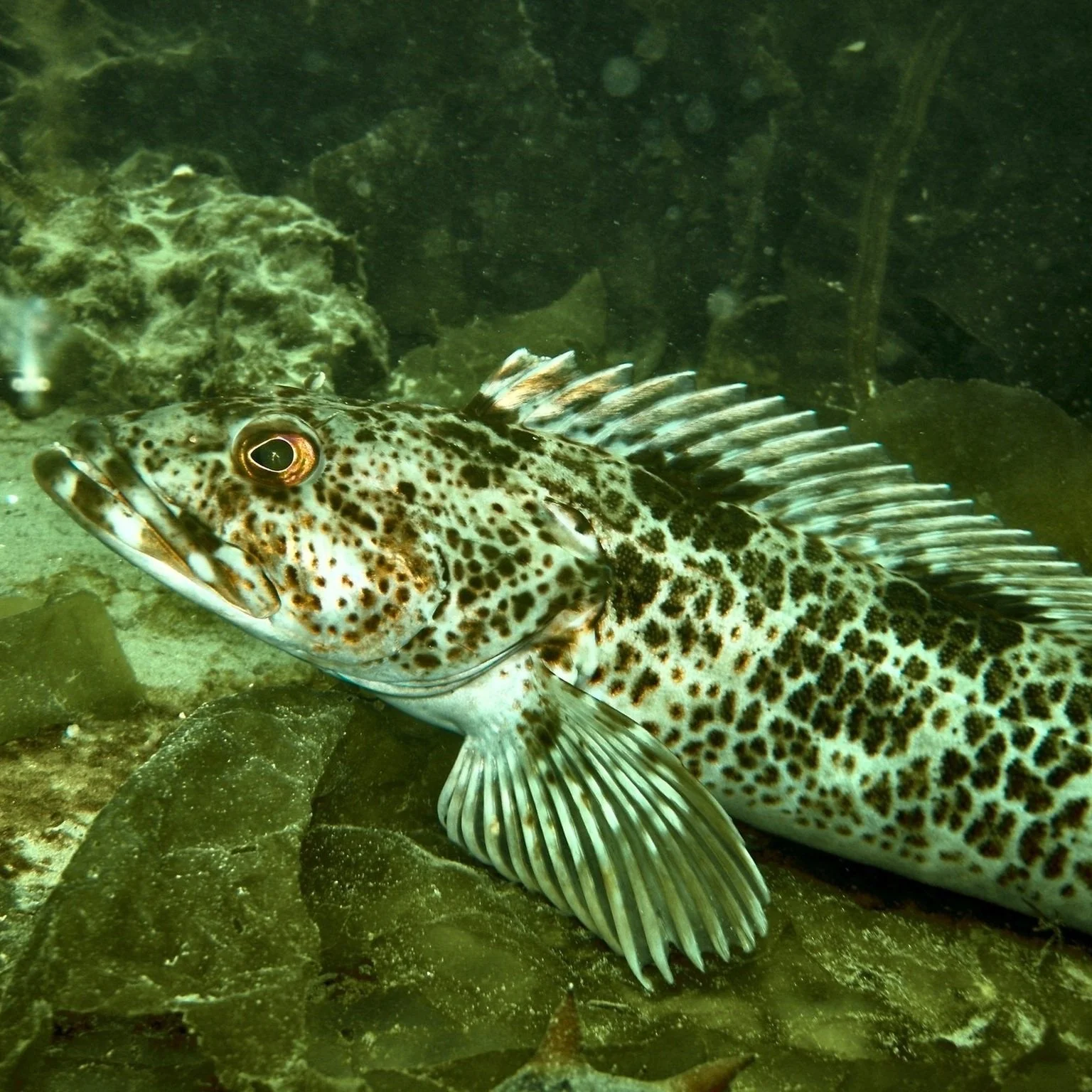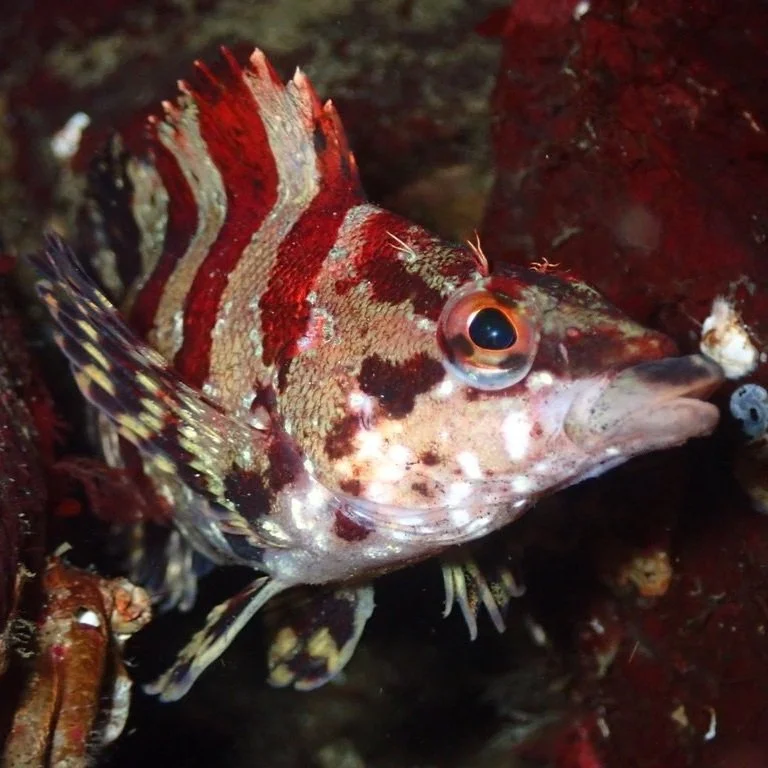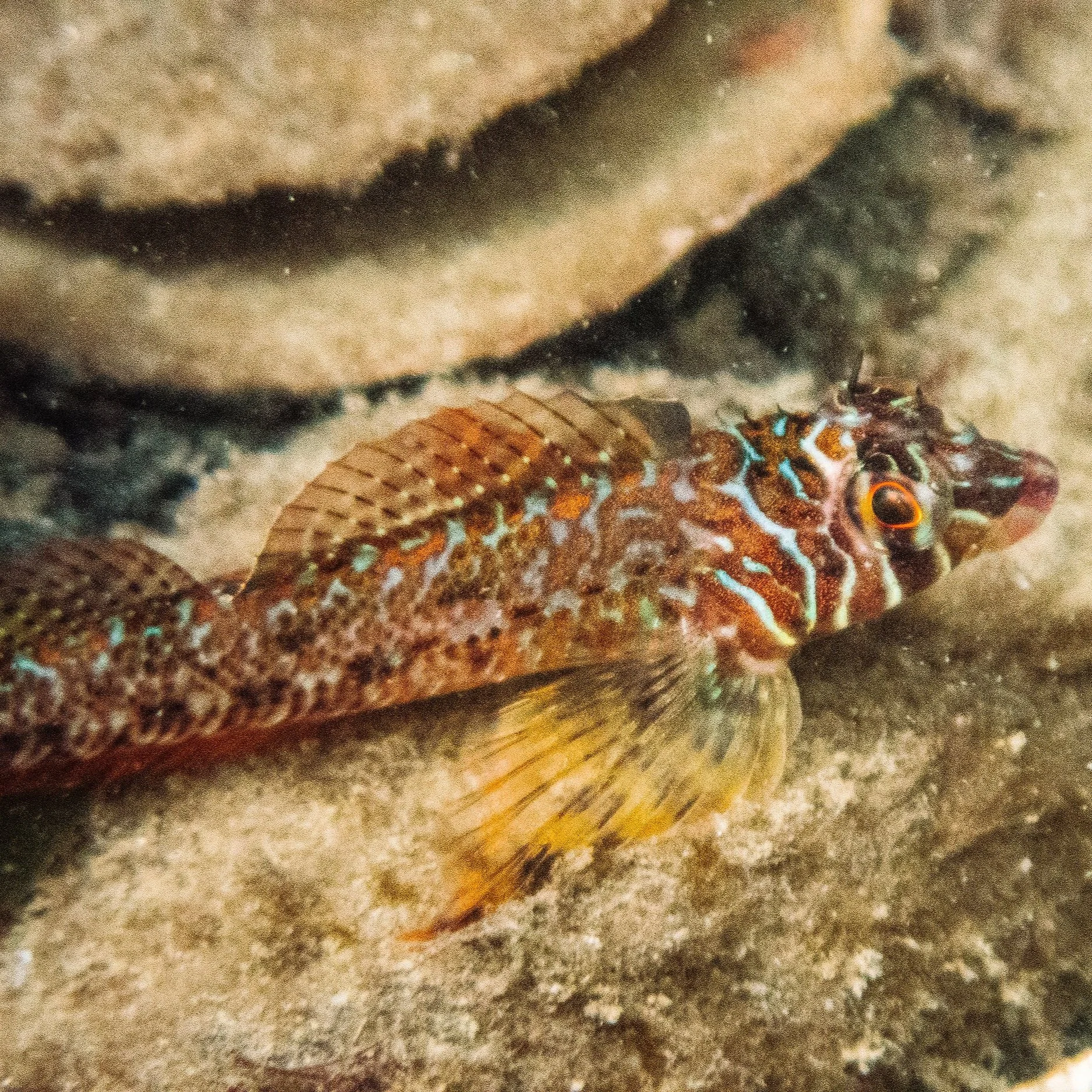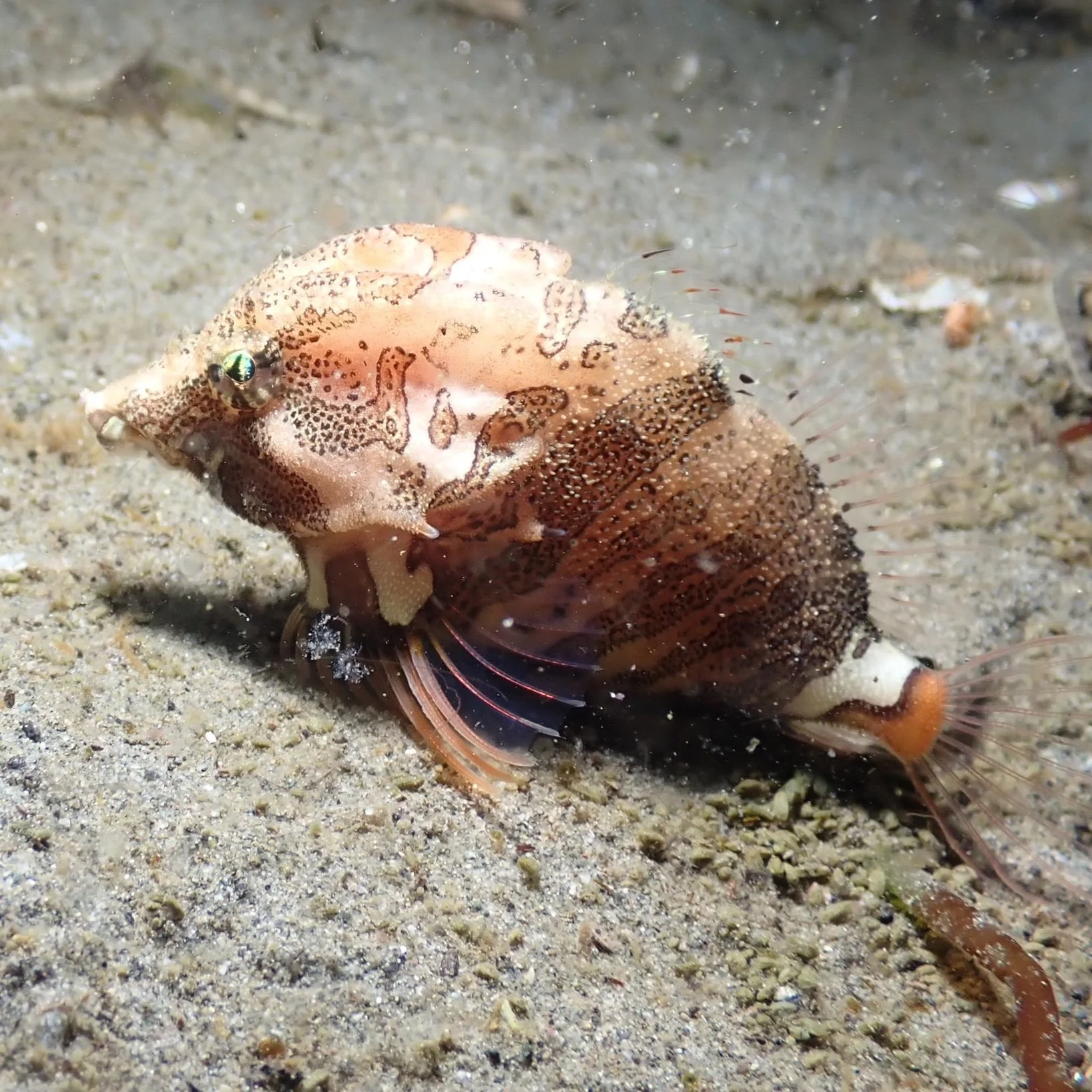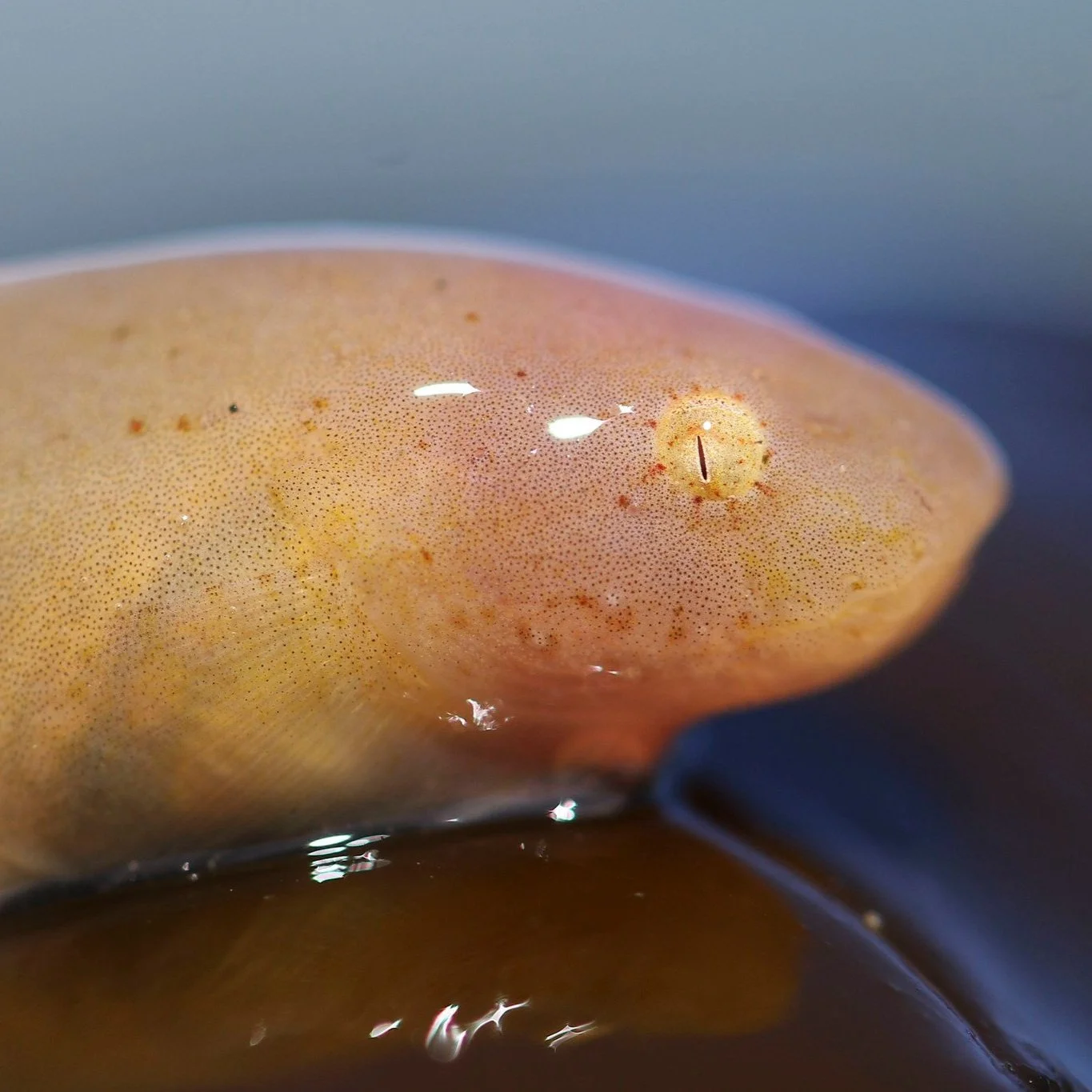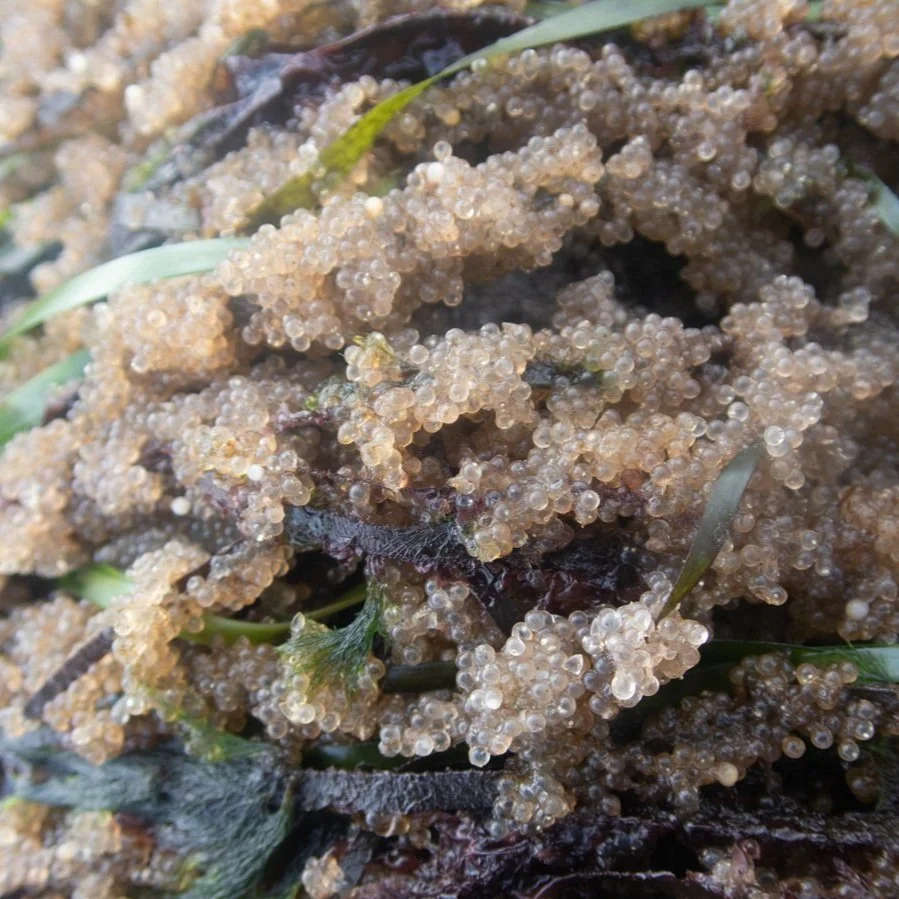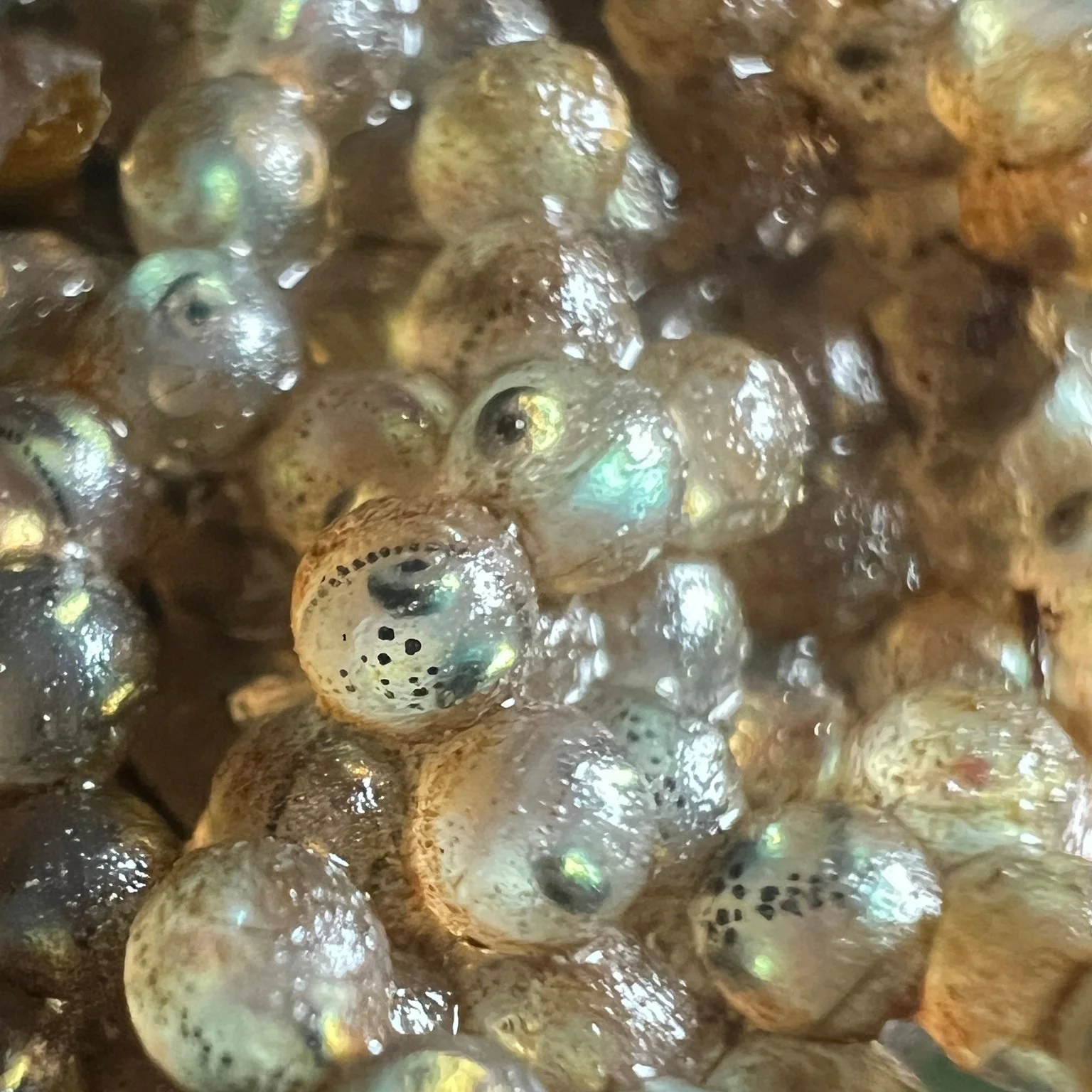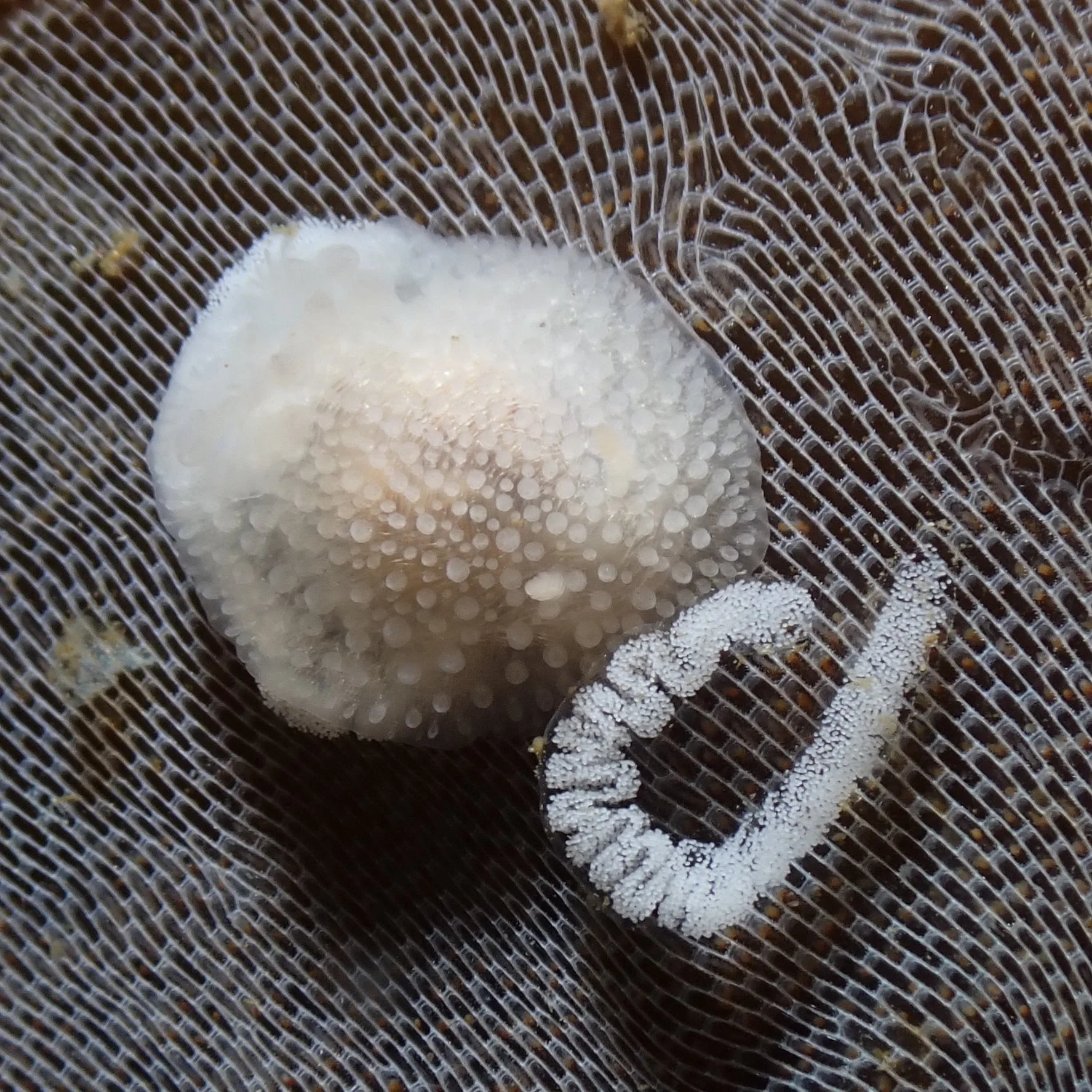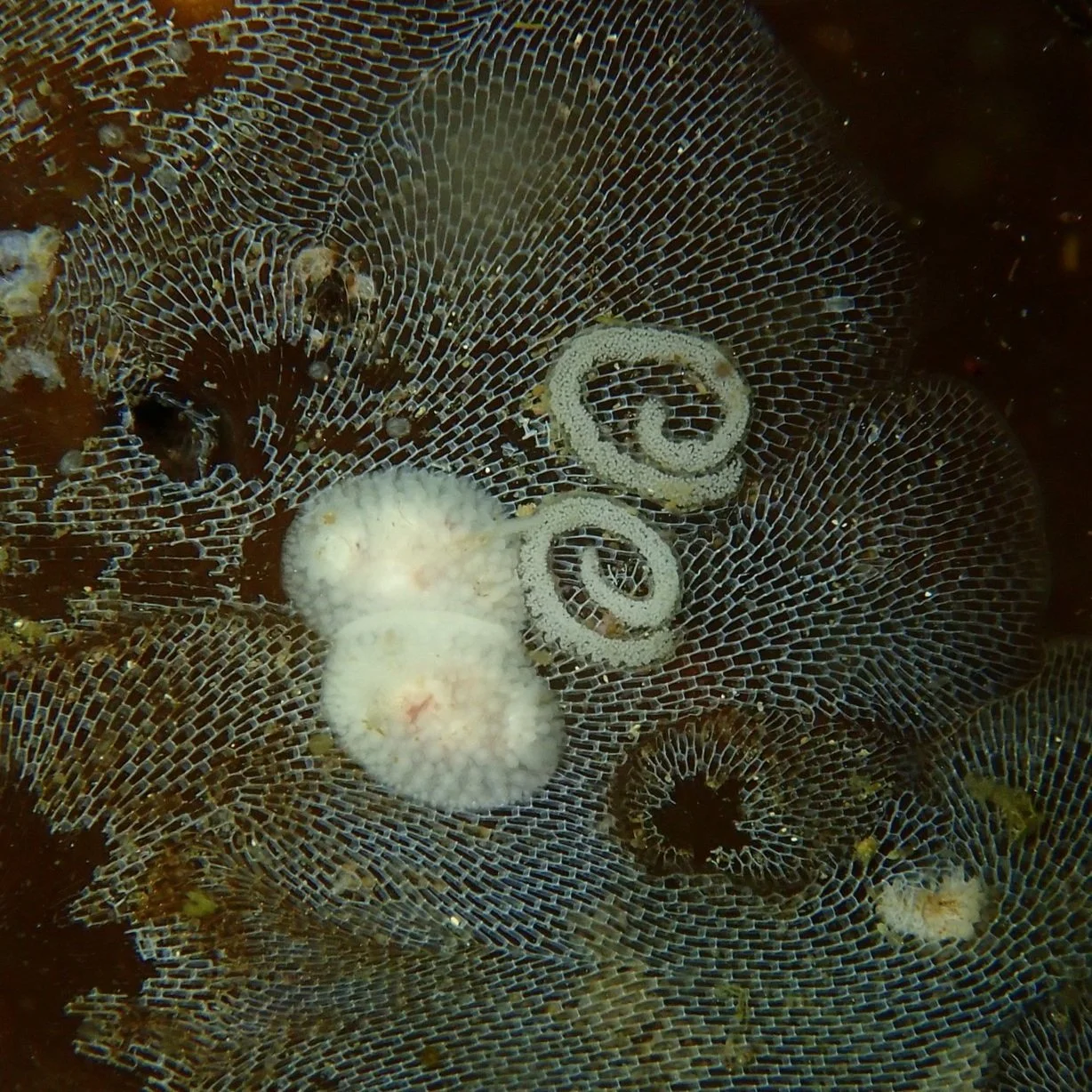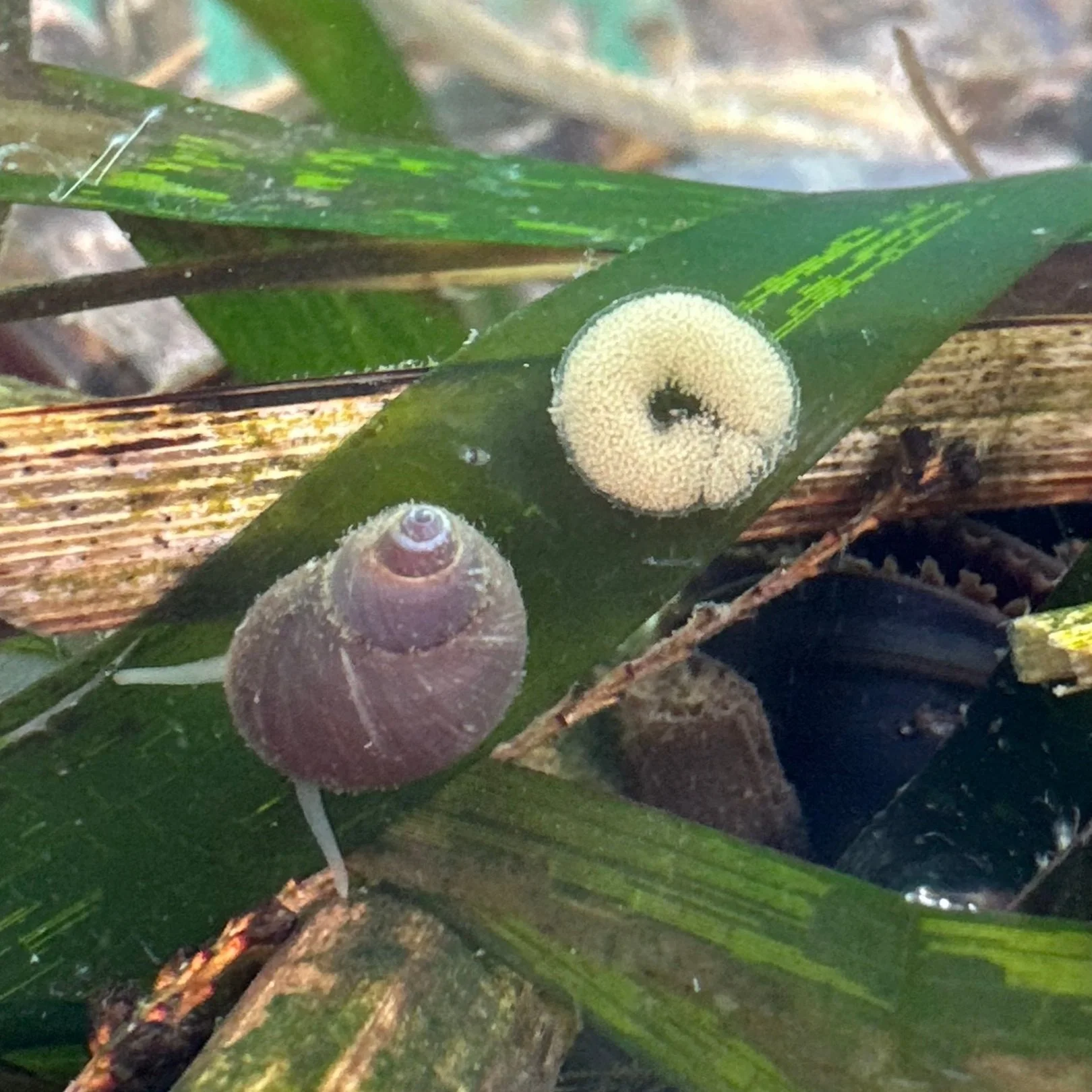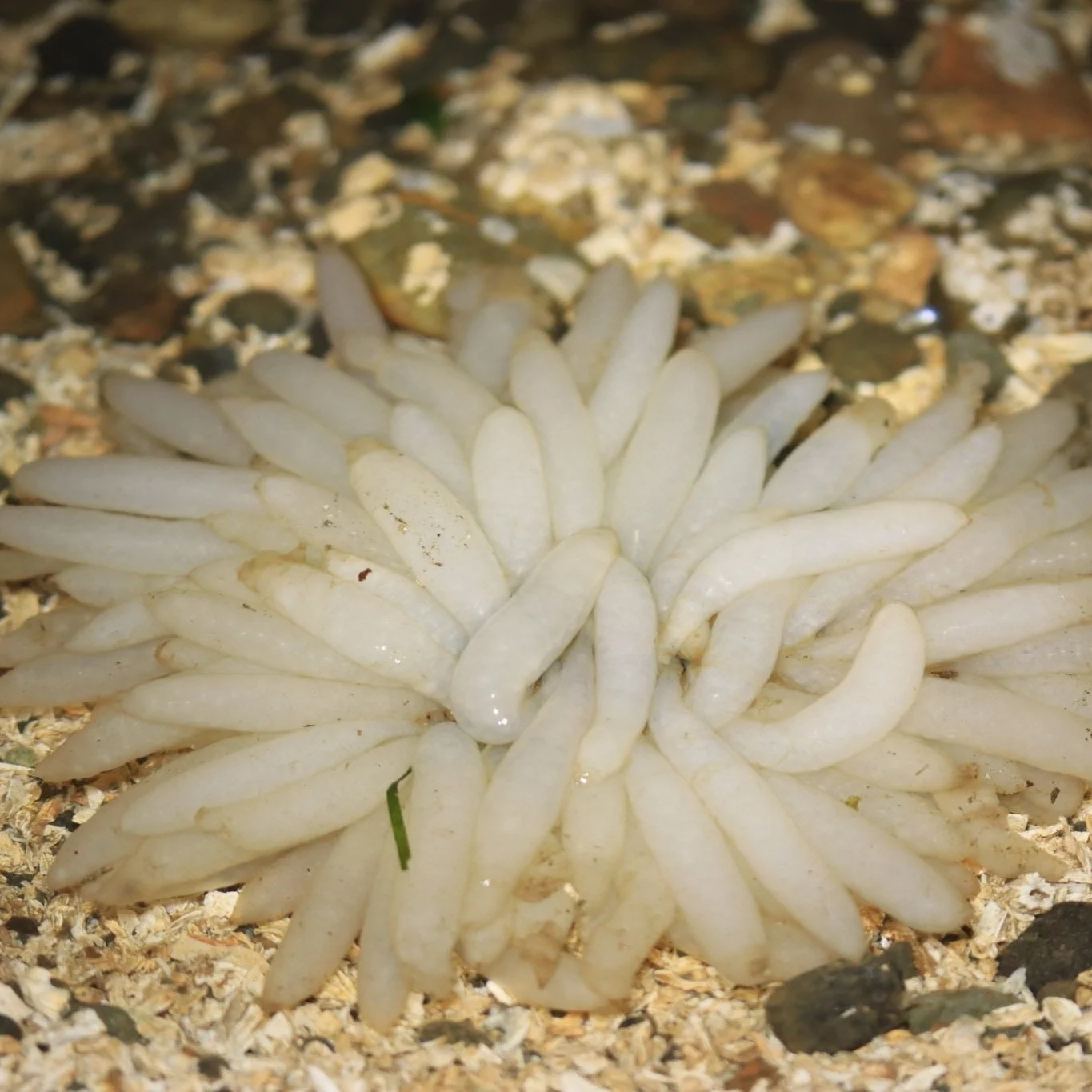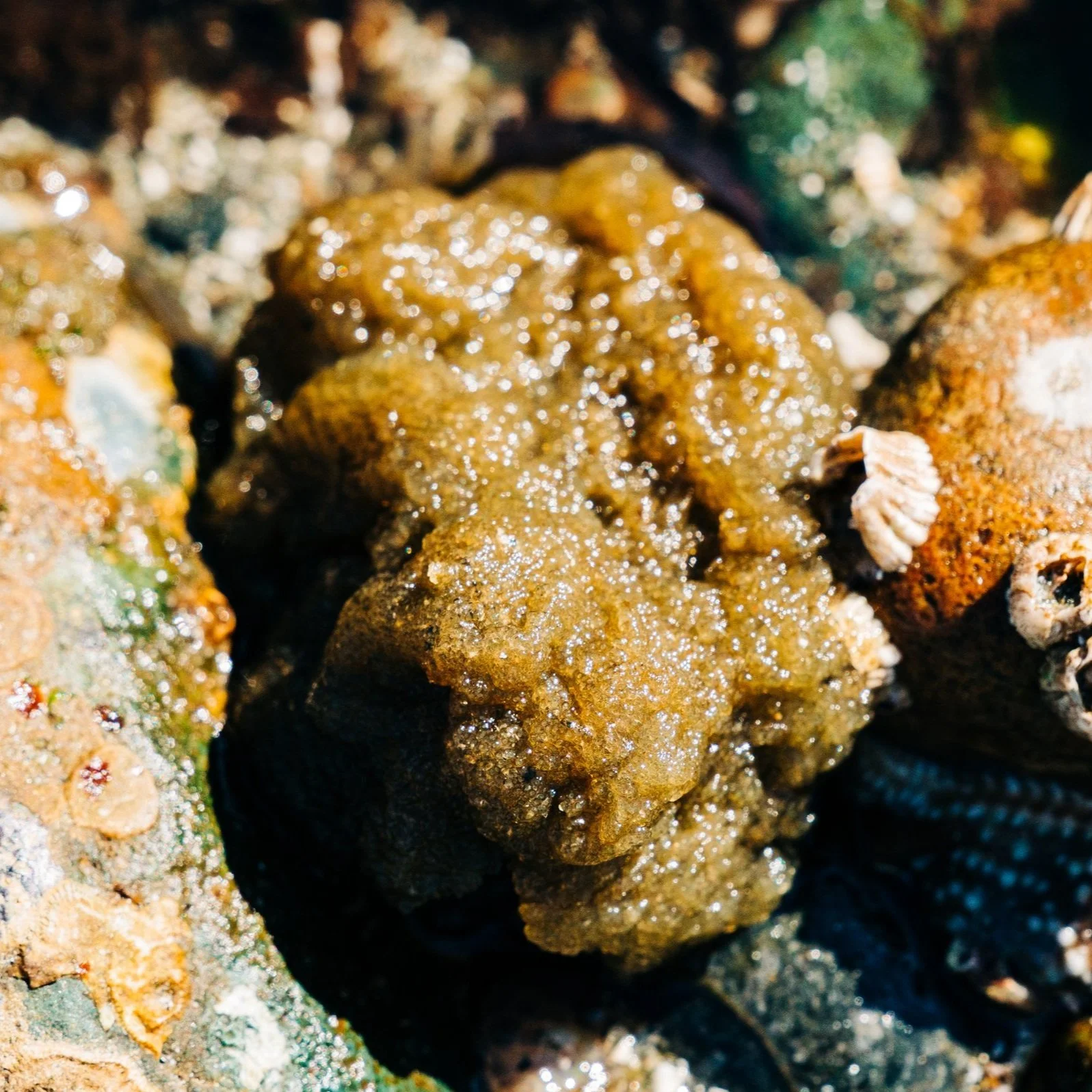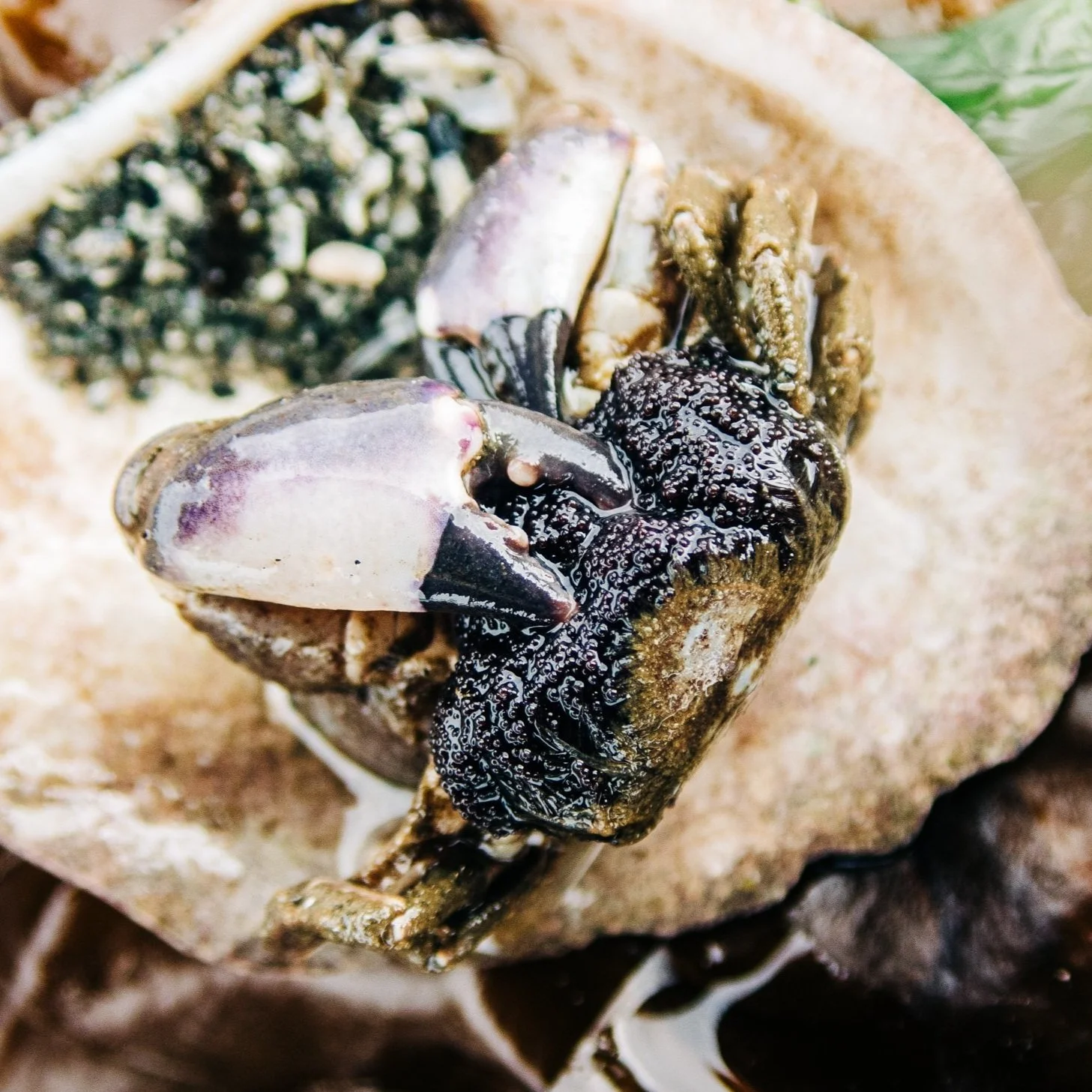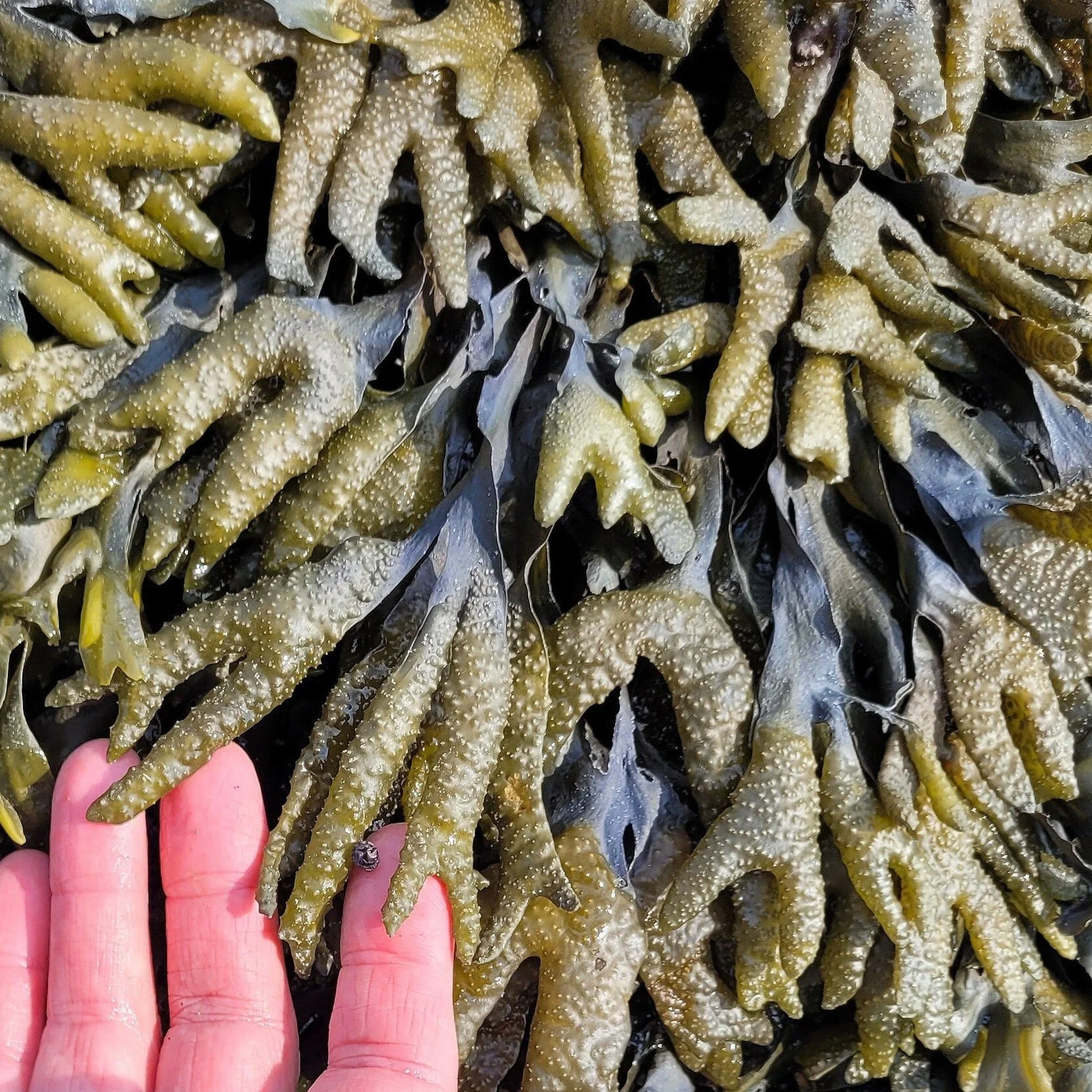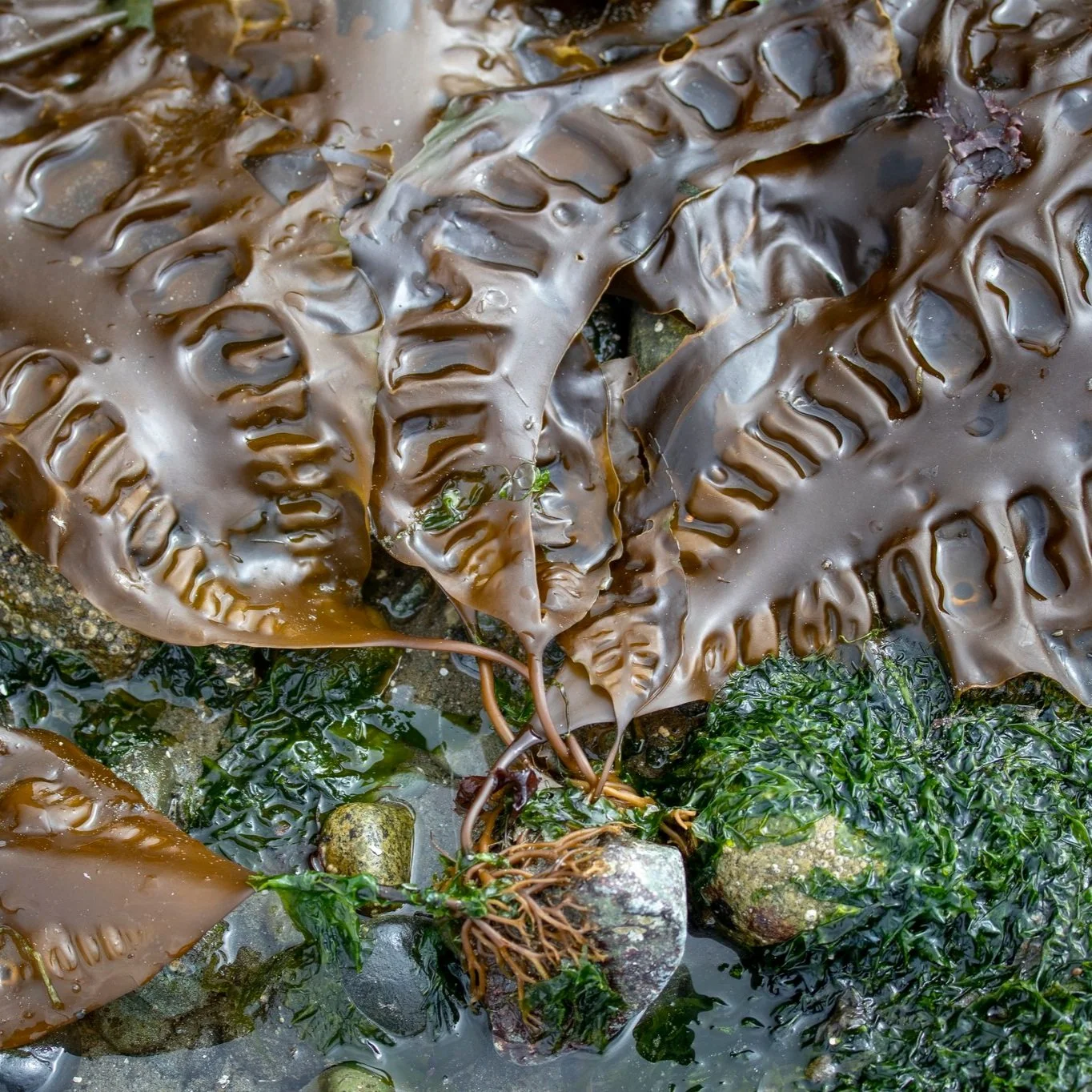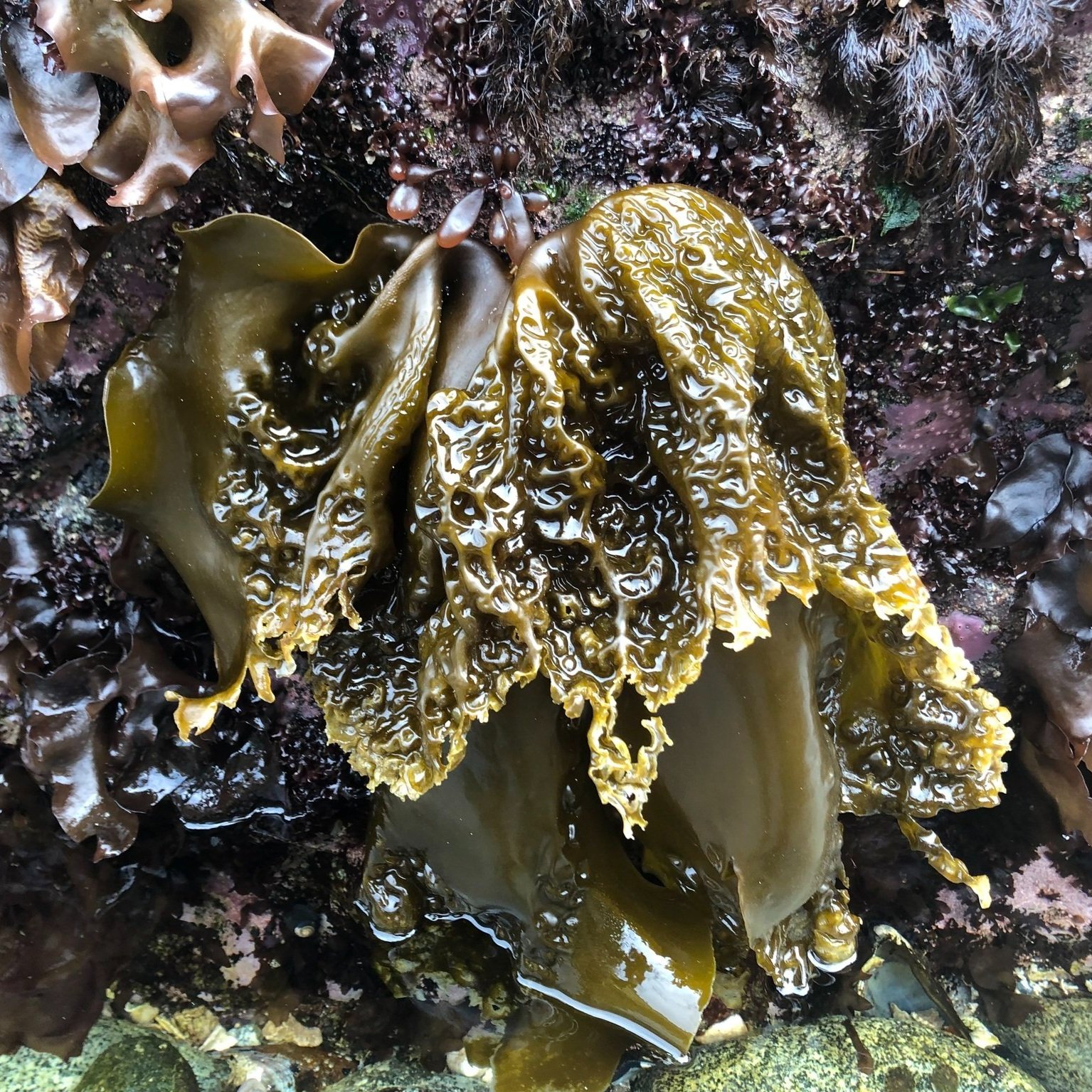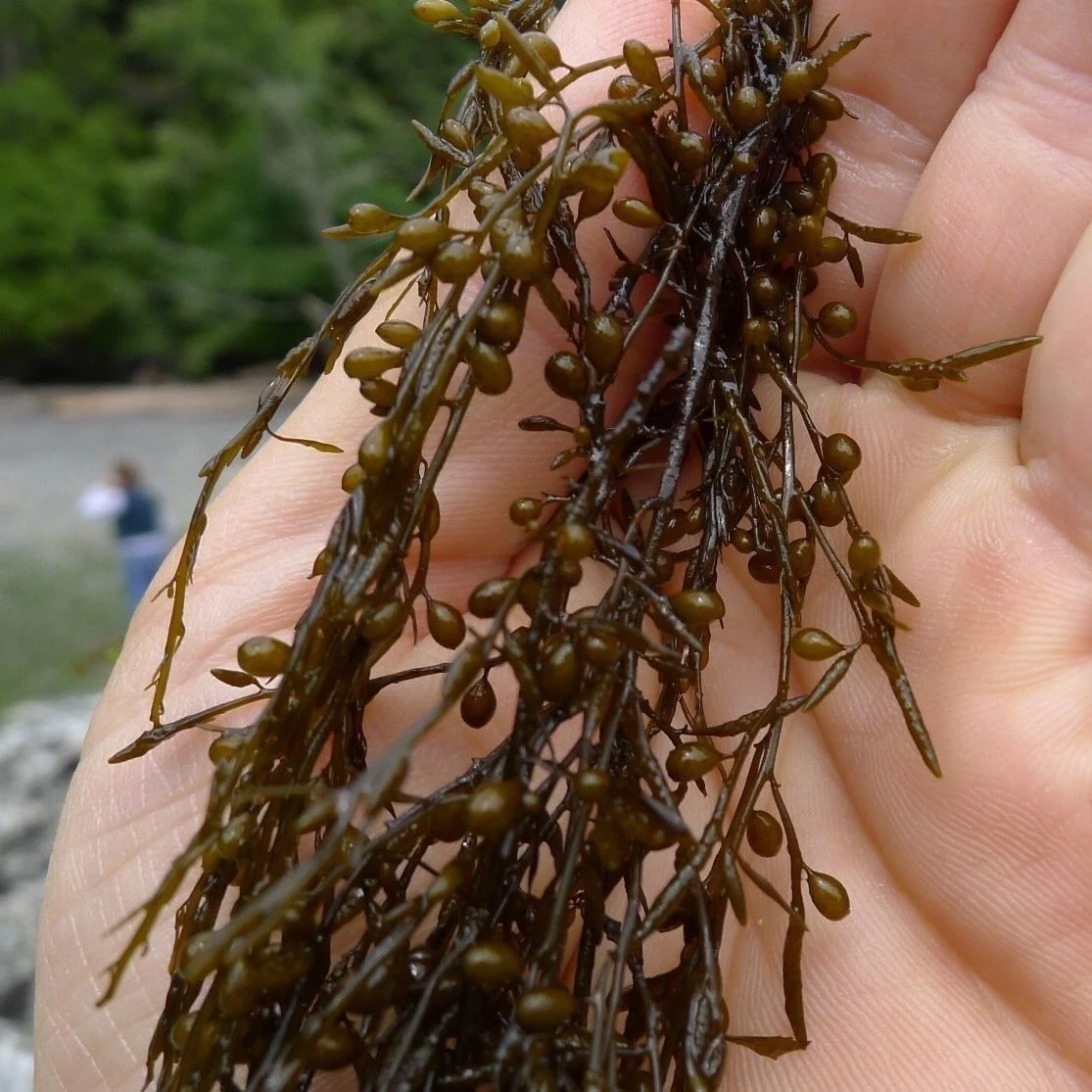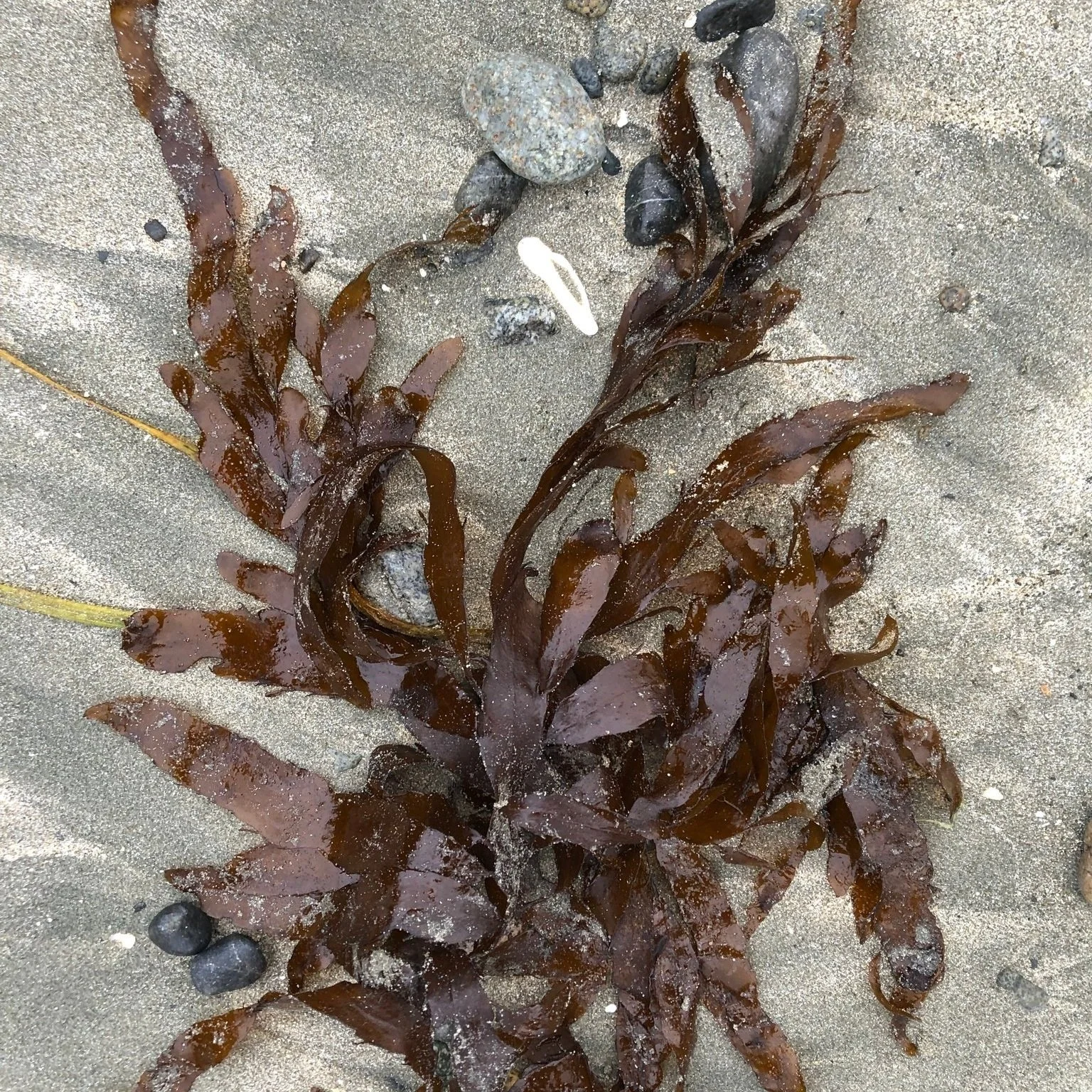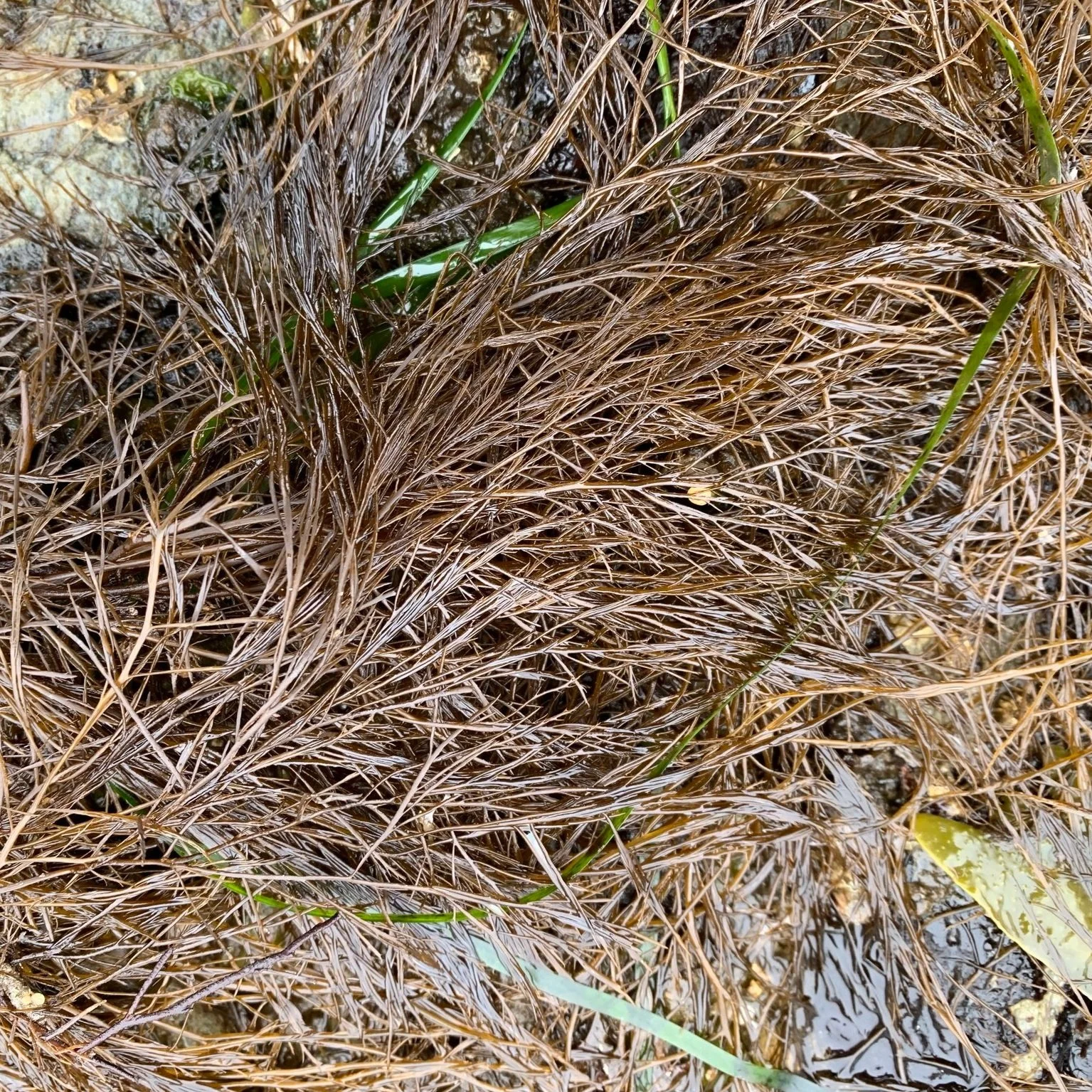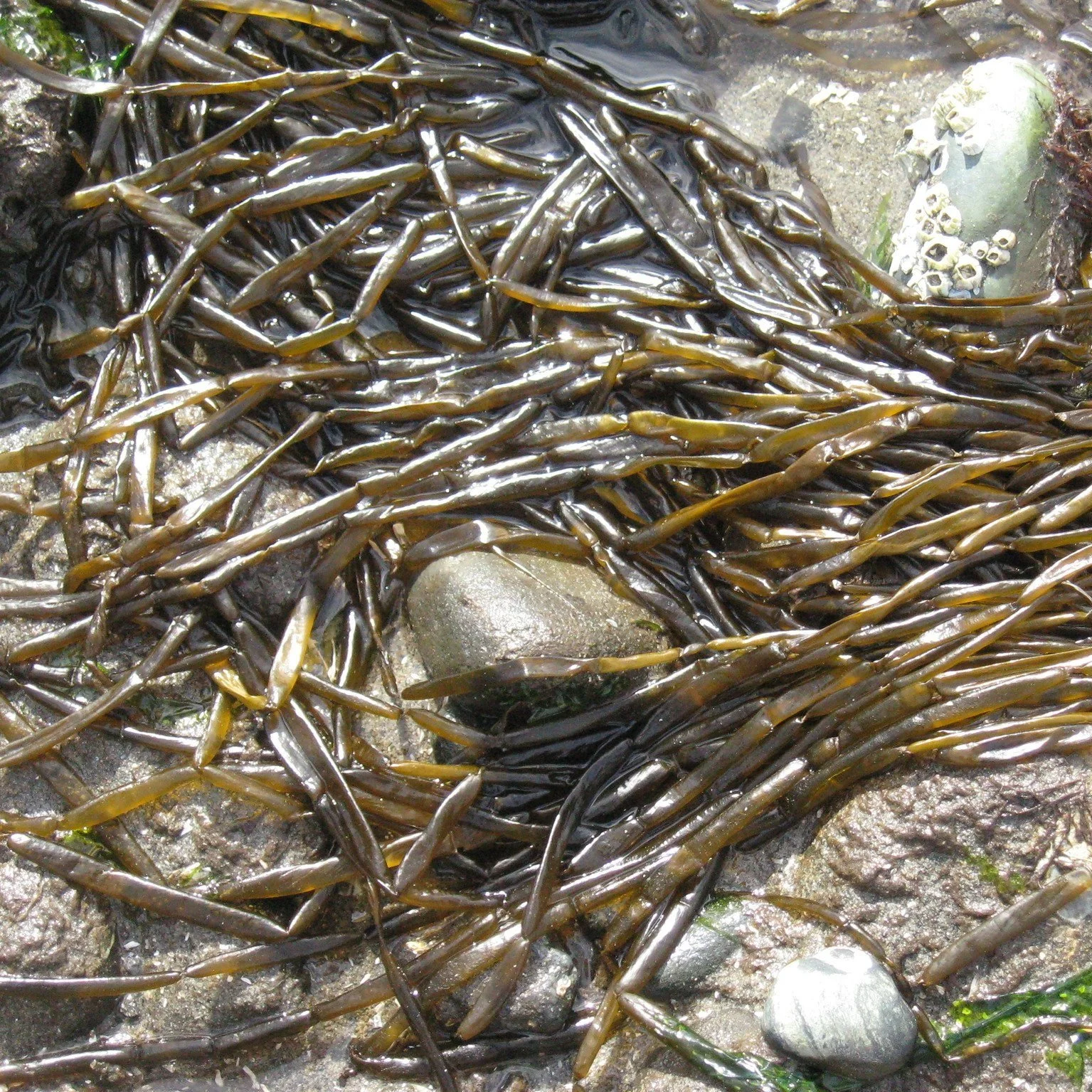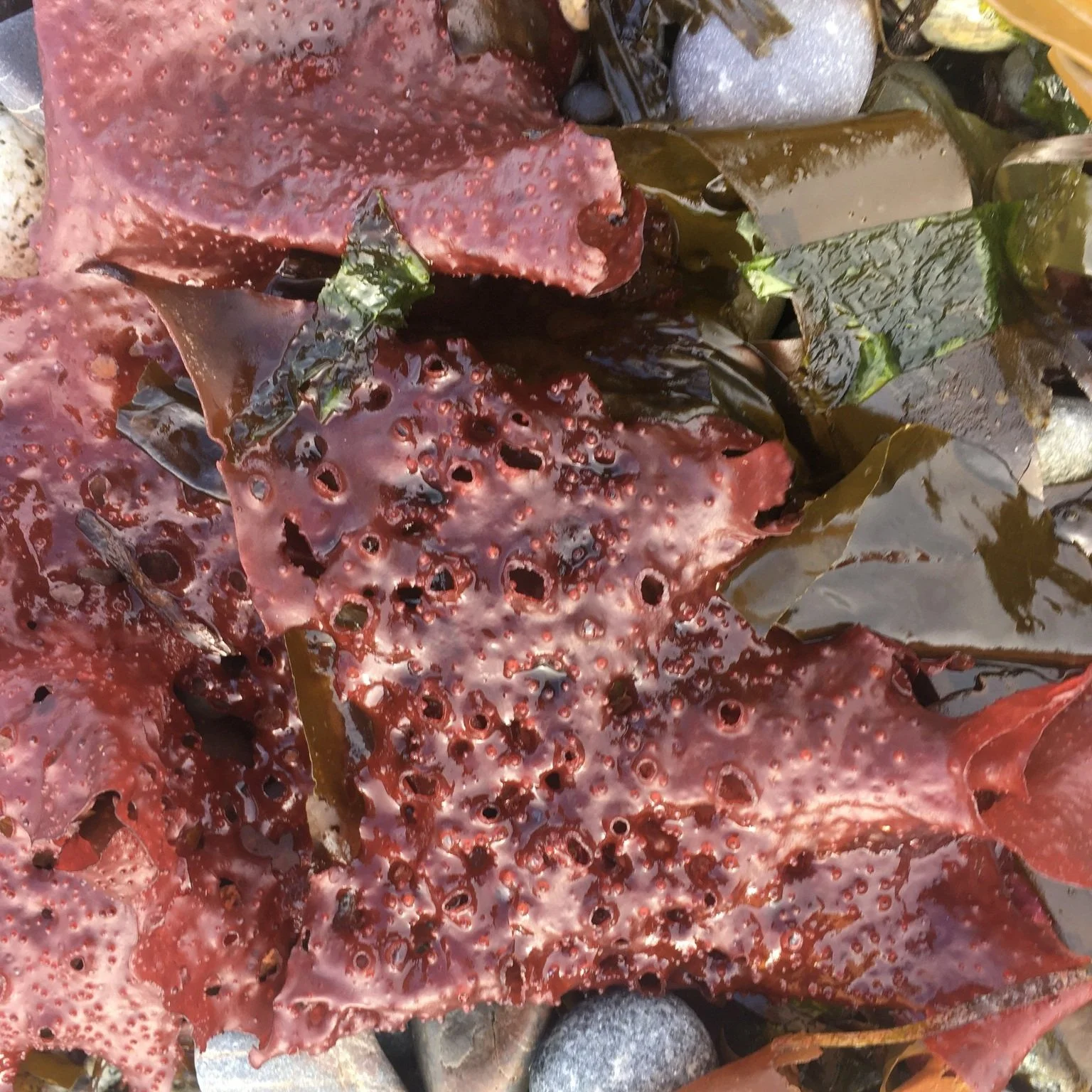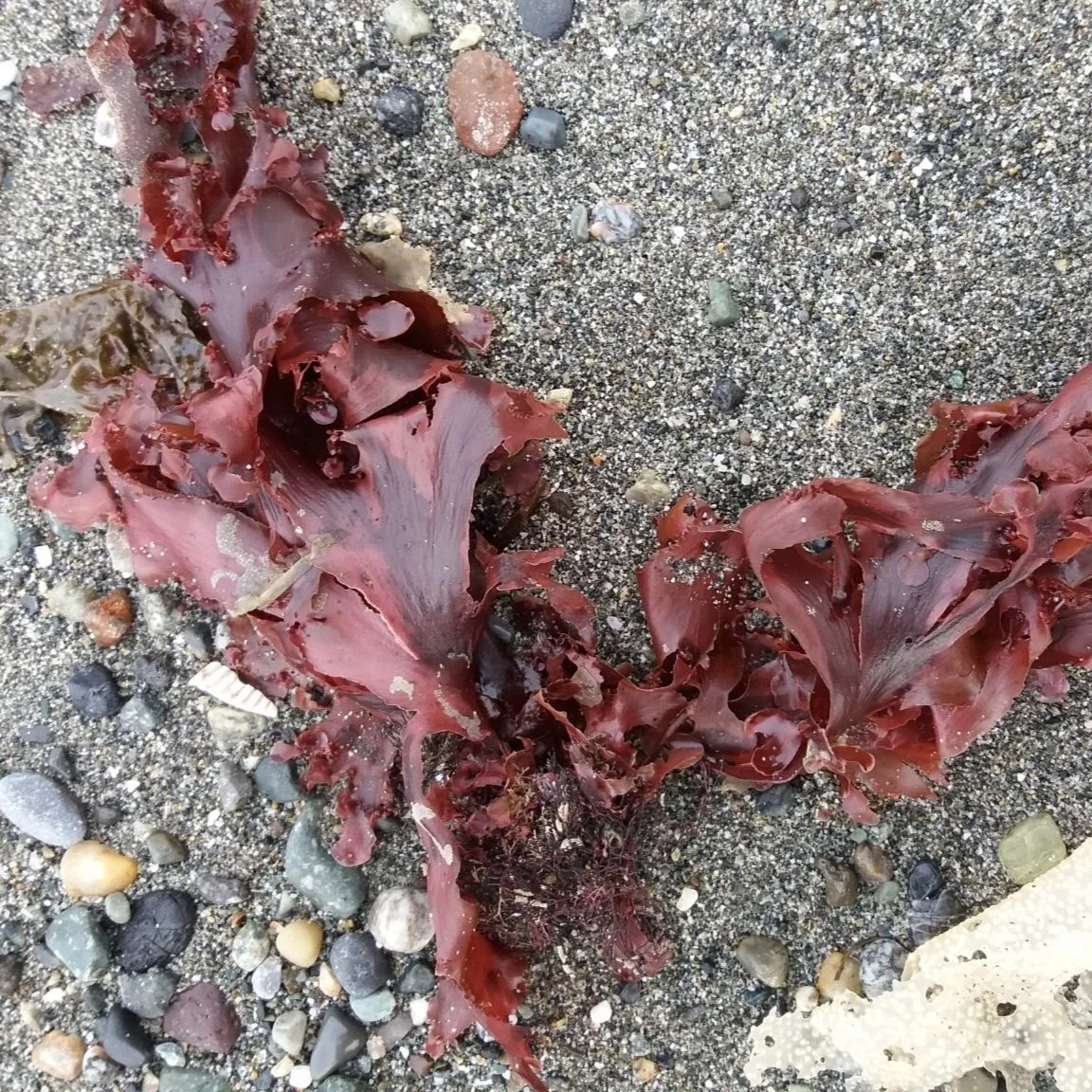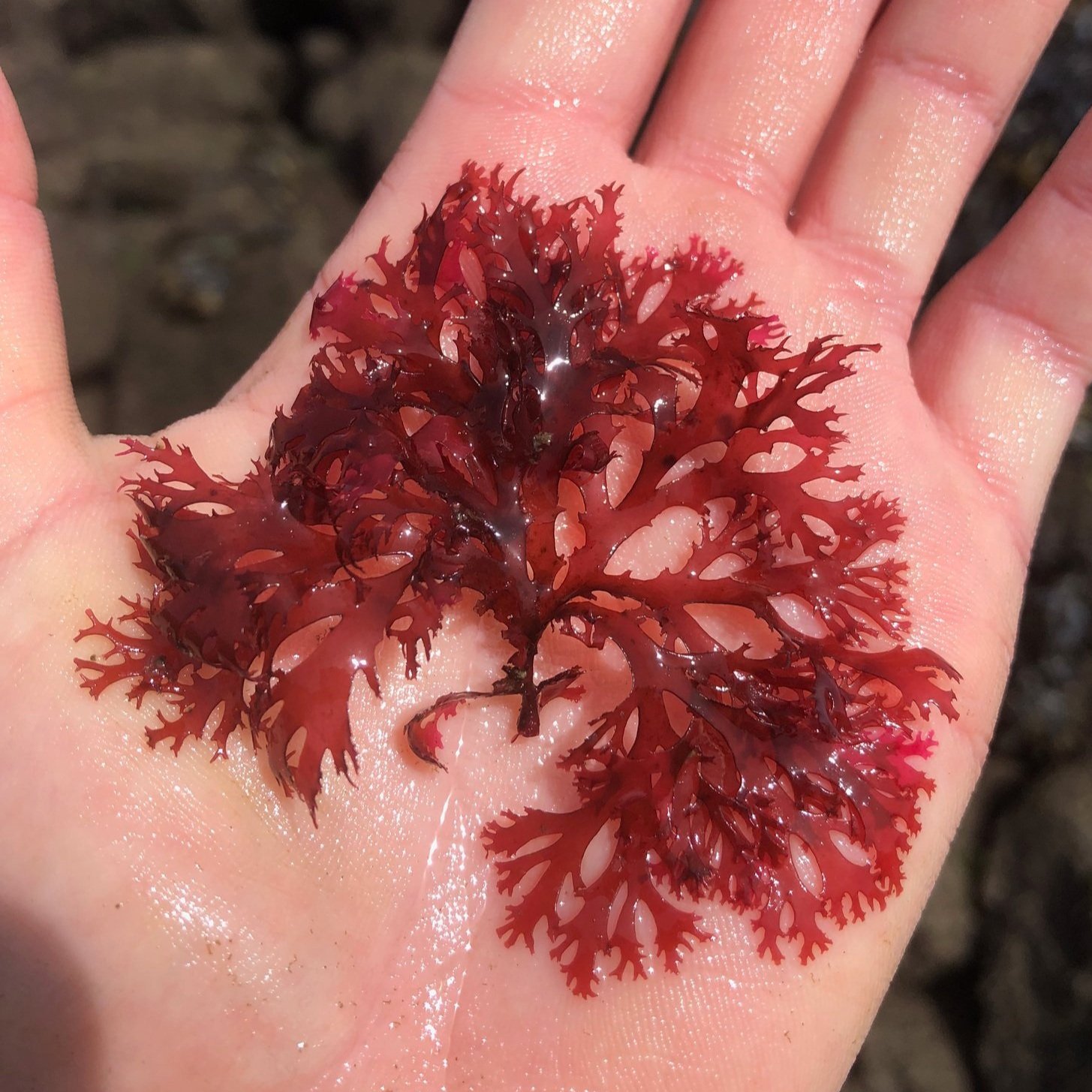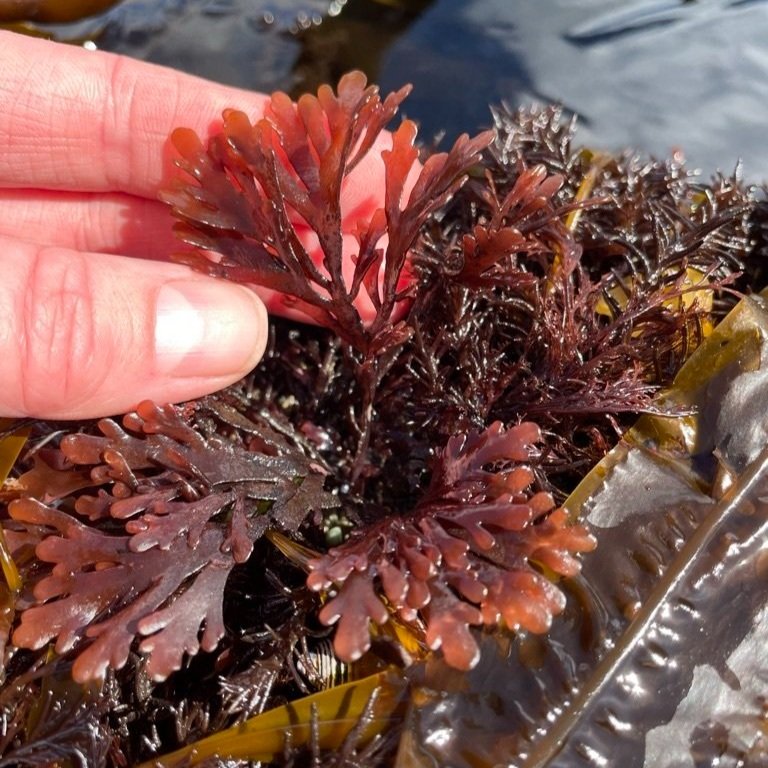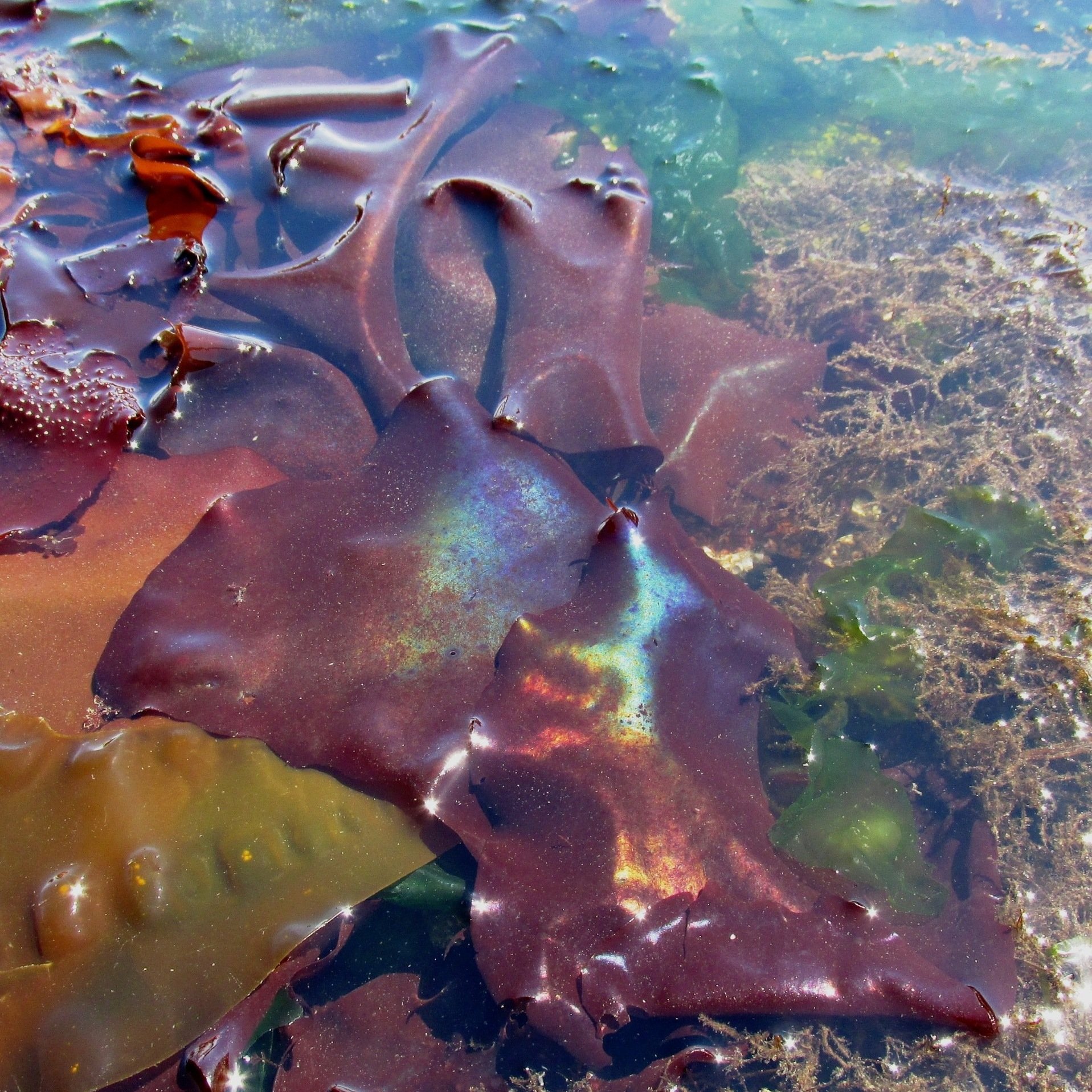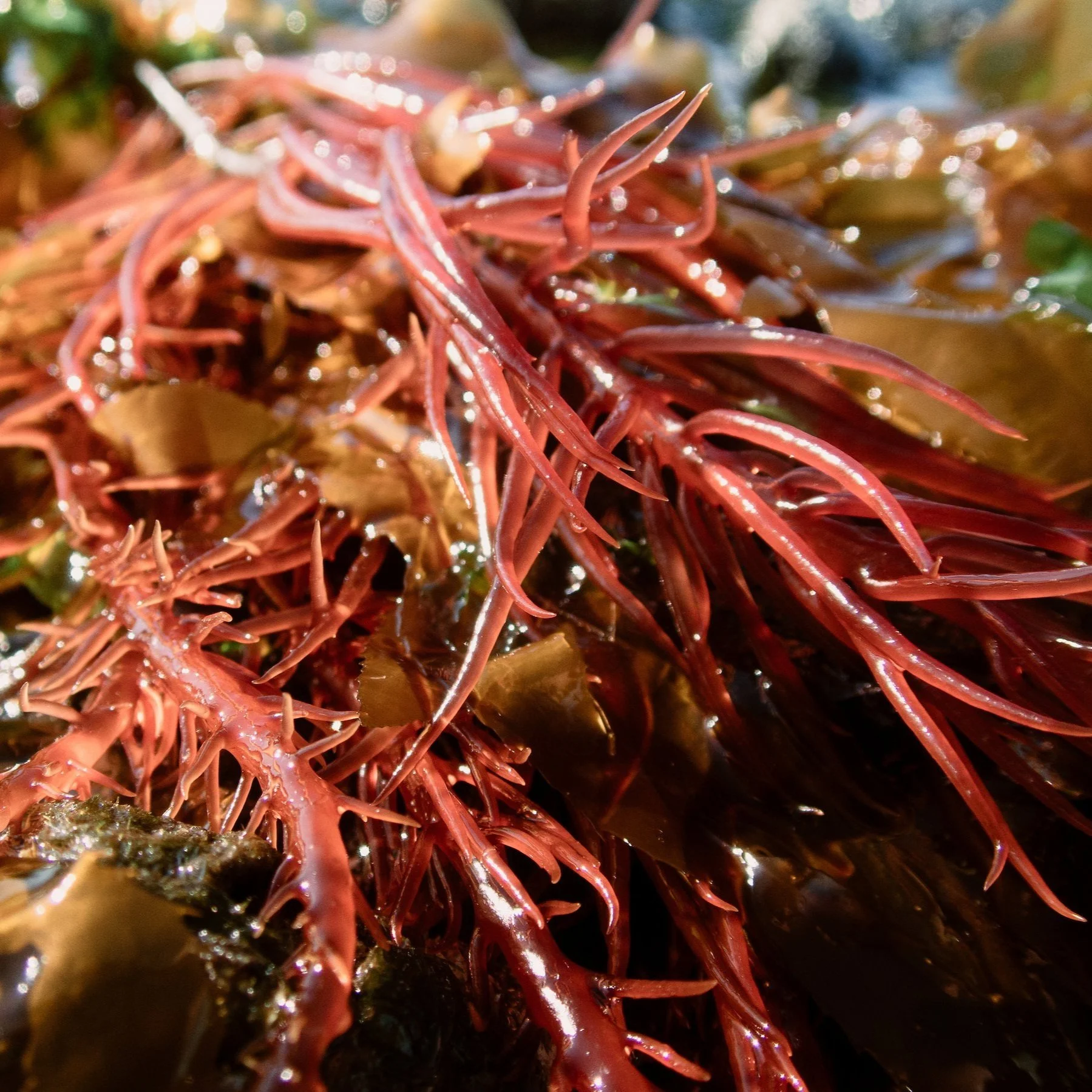Puget Sound Tide Pooling Guide
Where To Go
What To Do
Tread Lightly — We’re lucky enough to get to live in an area with endless opportunities for exploration. This is especially true during low tide, when the water is pulled away from the beach, revealing the ocean floor to us — for the coolest explanation of how tides work be sure to check out this video! While it’s understandable to want to race all over the beach, flipping over every rock in sight, it’s important to remember that most of these creatures aren’t used to being exposed to open air and hot sun, so it’s vital to be mindful of how we’re impacting these individual animals and the environment as a whole. On extreme low tide days it’s extra important to remember to tread lightly because these extremely low intertidal zones aren’t used to being exposed and are very sensitive to prolonged exposure, especially on very hot summer days.
Always Return Rocks To The Position You Found Them In — Rocks are a vital part of the intertidal zone and every medium to large-sized rock has a top and a bottom that plays an important role for creatures on the beach. The top of a rock may have barnacles or seaweed that need open sea above them to feed and the bottom of a rock may have thousands of eggs or homes for creatures that need a dark, wet place to thrive in. When lifting a rock do it slowly and gently, if you feel resistance stop and move on to a new rock, and gently replace it when you’re done. It’s also good practice not to lift rocks that need two hands to lift as those rocks are generally a more permanent part of the ecosystem and you may tear the creatures under them as you lift them away from the sediment.
Handle Gently — Part of the fascination of tide pooling is getting to see these creatures up close. When handling creatures do a little bit of research to make sure that species is safe to touch, and then use a wet, sunscreen-free hand to handle them, or bring a small bucket to the beach with you so you can get a closer look while giving them some extra water and protection. Never pull creatures off of rocks or structures, as you can damage them when doing so, especially soft-bodies creatures like sea stars.
Avoid Disturbing Eelgrass Beds — There’s a ton of restoration work being done to protect our eelgrass beds here in Puget Sound. They’re vital habitat for countless species, including salmon, and walking around an eelgrass bed instead of through it can go a long way towards protecting that specific bed.
Timing — Check those tides! While we have low tides every day, the best days for finding new creatures is on the extremely low tide days where the tide is negative. We generally recommend getting to the beach 1-2 hours before low tide so you have plenty of time to explore before the tide starts coming back in.
Find A Beach Naturalist — There are several great local organizations that station Beach Naturalists at local beaches on low tide days and they’re eager to help you make the most out of your low tide adventure. Keep a lookout for helpful friends in vests with a ton of knowledge!
Bring the Excitement Home with You and Get Involved! — There are countless groups doing important restoration work for Puget Sound’s intertidal zones and they’re always looking for volunteers, donations and extra voices to advocate for these important places. Some of our favorites include Communities for a Healthy Bay, Puget Sound Restoration Fund, Puget Soundkeeper, and many more.
*If you purchase anything from our shop remember to list one of these orgs during checkout and we’ll direct a portion of your purchase their way!
What You Could Find
Now let’s celebrate some of the incredible creatures you might encounter on your adventure!
Our guide below is generally organized by classification of species and then is loosely grouped by species based on commonality or frequency that they’re encountered so it’s most helpful for quickly identifying species by spotting the key differences. At the bottom we also have a guide to eggs that are commonly seen on our beaches and that section is organized by color for quick identification.
This guide is continually updated to keep it as current as possible, so check back often to see what’s new and if you see anything that looks like it needs to be updated or added absolutely let us know by commenting below or sending us an email.
We would also love to see what you find on your adventures, so feel free to share your finds with us on social media or by joining our project on iNaturalist.
INVERTEBRATES
The intertidal zone is teeming with thousands of fascinating invertebrates to keep your curiosity piqued. From teeny tiny isopods to the giant Pacific octopus invertebrates of every size are the lifeblood of the intertidal zone that keep that habitat thriving.
CNIDARIA: Anemones + Jellyfish + Sea Pens + Hydroids
ANEMONES
Aggregating Anemone | Anthopleura elegantissima
Size: Up to 3.5 inches in diameter when open
Habitat: Intertidal zone to depths of 60 feet
Description: Aggregating anemones are one of the most common to see in the intertidal zone. When the tide is out they tend to close up, grabbing nearby rocks and shells in the process to use as camouflage. The usually have a green, white or gray column with tentacles that have pinkish purple tips.
(Photo: Sara Montour Lewis)
Moonglow Anemone | Anthopleura artemisia
Size: Up to 3.5 inches in diameter when open
Habitat: Intertidal zone to depths of 100 feet
Description: Moonglow anemones are another very common anemone in Puget Sound. Their columns are usually fully buried in the sand, leaving only the tentacles and central oral disc exposed. Their tentacles can be a variety of colors — white, green, blue, orange, pink, or brown — but locally we generally see them in green, brown or white coloring with slight banding on the tentacles.
Alternate Names: Beach Sand Anemone, Buried Anemone, Burrowing Anemone
(Photo: Sara Montour Lewis)
Striped Green Sea Anemone | Diadumene lineata
Size: Up to 1.5 inches in diameter when open
Habitat: Intertidal zone to depths of 100 feet
Description: This anemone has a greenish brown column with distinct vertical lines that make it easy to identify.
Alternate Names: Lined Anemone
(Photo: Rosemary Glos)
Giant Green Anemone | Anthopleura xanthogrammica
Size: Up to 10 inches in diameter when open
Habitat: Intertidal zone to depths of 100 feet
Description: Giant green anemones are hard to miss with their neon green tentacles and sturdy deep green columns. They’re more common on the coasts, but can also be seen inland in Puget Sound.
Alternate Names: Giant Tidepool Anemone, Green Surf Anemone, Solitary Anemone
(Photo: Sara Montour Lewis)
Pacific Stubby Rose Anemone | Urticina clandestina
Size: Up to 6 inches in diameter when open
Habitat: Intertidal zone to depths of 50 feet
Description: The stubby rose anemone has a deep red column that’s usually buried deep in the sand and not visible. At low tide when the anemone is closed you can sometimes see it right one the surface with rocks + debris attached to it. The tentacles are short and stubby with red and gray bands.
Alternate Name: Buried Anemone, Red Beaded Anemone
(Photo: Karen L. Johnson)
Painted Anemone | Urticina grebelnyi
Size: Up to 10 inches in diameter when open
Habitat: Intertidal zone to depths of 100 feet
Description: Painted anemones are one of the most instantly recognizable with their red and olive-colored patterns on their columns.
Alternate Name: Christmas Anemone
(Photo: Sara Montour Lewis)
Brooding Anemone | Epiactis prolifera
Size: Up to 2 inches in diameter
Habitat: Intertidal zone to depths of 50 feet
Description: These small anemones range in color and are often seen in the intertidal zone with young of various ages still attached to their columns, giving them their “brooding anemone” name. When the young reach roughly 4mm in diameter they migrate away from their mothers and seek out a space of their own. All brooding anemones are born as females and then develop into hermaphrodites, having both male and female reproductive systems.
Alternate Name: Proliferating Anemone, Small Green Anemone
(Photo: Sara Montour Lewis)
Ten-tentacled Burrowing Anemone | Halcampa decemtentaculata
Size: Up to 1 inches in diameter
Habitat: Intertidal zone to depths of 1300 feet
Description:
(Photo: Gregory C Jensen)
Warty Columned Anemone | Aulactinia incubans
Size: Up to 1.5 inches in diameter
Habitat: Intertidal zone to depths of 30 feet
Description: These super small anemones range in color and can be various shades of green, orange, red and white. It has a distinctive white lined pattern that makes it easy to identify. These interesting anemones also brood their young internally and then release them, fully formed, through pores in the tip of their tentacles.
(Photo: Ellyne Geurts)
Tube Anemone | Pachycerianthus fimbriatus
Size: Up to 8 inches in diameter
Habitat: Intertidal zone to depths of 100 feet
Description: Tube dwelling anemones burrow into soft substrate, burying up to 2 feet of their tube under the sand. Our local species has very long outer tentacles with shorter inner tentacles.
(Photo: Isabelle Côté)
Plumose Anemone | Metridium farcimen
Size: Up to 4 inches tall
Habitat: Intertidal zone to depths of 1000 feet
Description: Plumose anemones are most easily viewed on docks and pilings where their bright, fine tentacles seem to glow underneath the water. Both M. giganteum and M. senile can be varying shades of white to brown and have a smooth column with dozens of fluffy-looking tentacles.
(Photo: Brenna Green)
Giant Plumose Anemone | Metridium farcimen
Size: Up to 3 feet tall
Habitat: Intertidal zone to depths of 650 feet
Description: Plumose anemones are most easily viewed on docks and pilings where their bright, fine tentacles seem to glow underneath the water. Both M. giganteum and M. senile can be varying shades of white to brown and have a smooth column with dozens of fluffy-looking tentacles.
(Photo: Brenna Green)
JELLYFISH
Stalked Jelly | Haliclystus sanjuanensis
Size: Up to 1 inch tall
Habitat: Intertidal zone to depths of 200 feet
Description: It feels appropriate to start the jellyfish section off with this little jelly that appears more like an anemone at first glance. Stalked jellies are very small, vary in color from brownish olive to orange and red, and have eight distinct lobes that are attached to a base. They’re usually seen on very low tide days attached to kelp or eelgrass.
(Photo: Alison Young)
Moon Jelly | Aurelia labiata
Size: Up to 16 inches in diameter
Habitat: Surface level to depths of 3500 feet
Description: These mesmerizing little jellies are frequently seen in Puget Sound, sometimes by themselves, but usually if you spot one you’ll spot many. They have a translucent bell that has four horseshoe-shapes in the middle that can vary in color from bright white to pink or brown. The bell is also lined by many short, fine tentacles.
(Photo: Em Lim)
Victoria’s Crystal Jelly | Aequorea victoria
Size: Up to 3.5 inches in diameter
Habitat: Surface level to depths of 20 feet
Description: In the water crystal jellies look similar to a moon jelly, but they don’t have the horseshoe shaped gonads in the middle of the bell. They also have 80 or more visible radial canals and very short tentacles. When they wash up on the beach they look kind of like the bottom of a discarded mason jar.
(Photo: Brenna Green)
Fried Egg Jellyfish | Phacellophora camtschatica
Size: Up to 24 inches in diameter
Habitat: Surface level to depths of 1100 feet
Description: One of the most iconic jellyfish species in the Pacific Northwest, the Fried Egg Jelly is always a fun surprise to spot with their distinct orange center that gives them their unique nickname. They can be mistaken with the Lion’s Mane Jellyfish, but the Fried Egg Jelly is always orange or pale yellow and doesn’t have the same red hue as the Lion’s Mane.
Alternate Names: Egg Yolk Jellyfish
(Photo: Sara Montour Lewis)
Lion’s Mane Jellyfish | Cyanea ferruginea
Size: Up to 7 feet in diameter and 120 feet long
Habitat: Surface level to depths of 75 feet
Description: The lion’s mane jellyfish is the largest in our area, and likely the world. There’s some discrepancy about whether Cyanea ferruginea and Cyanea capillata should be treated as one species or two, but currently the lion’s mane jelly in Puget Sound is categorized as Cyanea ferruginea. Small lion’s mane jellies can be a light yellow color and turn deep reddish purple as they get bigger. Their bell is made up of eight lobes and each lobe may have as many as 150 individual tentacles that are arranged in four rows. They also have shorter lacy arms that extend from the center of the bell.
Alternate Names: Giant Jellyfish, Sea Blubber
(Photo: Hannah Tilley)
Pacific Sea Nettle | Chrysaora fuscescens
Size: Up to 12 inches in diameter and 15 feet long
Habitat: Surface level to depths of 300 feet
Description: Sea nettles are more commonly seen on the coast, but can occasionally be seen inland in Puget Sound. They generally have a reddish-orange scalloped bell with roughly 24 long, thin tentacles around in the outside and four lacy arms that extend from the center of the bell.
Alternate Name: West Coast Sea Nettle
(Photo: Zach Hawn)
Cross Jelly | Mitrocoma cellularia
Size: Up to 4 inches in diameter
Habitat: Surface level to depths of 5500 feet
Description: Cross jellies have an unmistakeable X in the middle of their translucent bell, which is lined by hundreds of small tentacles.
(Photo: Zach Hawn)
Hanging Stomach Jelly | Stomotoca atra
Size: Up to 1 inch in diameter
Habitat: Surface level to depths of 950 feet
Description: It’s pretty easy to see how this small jelly got its common name. They have a translucent dome that’s lined with roughly eighty very short tentacles and also have two large tentacles on the sides.
(Photo: Zach Hawn)
Umbrella Jelly | Eutonina indicans
Size: Up to 1.5 inches in diameter
Habitat: Surface level to depths of 350 feet
Description: This small jelly has a transparent dome that’s lined with 200 small, fine tentacles. It has four radial canals, similar to the cross jelly, but the canals have more separation between them. They have a stomach that is suspended below the dome, but it’s smaller than the stomach of the hanging stomach jelly and is on a peduncle.
Alternate Name: Aggregating Jelly
(Photo: Zach Hawn)
SEA PENS + HYDROIDS
Orange Sea Pen | Ptilosarcus gurneyi
Size: Up to 19 inches tall
Habitat: Intertidal zone to depths of 350 feet
Description: Sea pens are so fascinating because, like corals, they’re actually colonies of individual tiny creatures (polyps) that form one organism. They start as one individual polyp and then add more and more as they grow. They’re generally pale yellow to bright orange and can be found on sandy or muddy substrate.
Alternate Names: Sea Feather
(Photo: Brenna Green)
Ostrich Plume Hydroid | Aglaophenia sp
Size: Up to 5 inches tall
Habitat: Intertidal zone to depths of 550 feet
Description: Like sea pens, hydroids are also colonial organisms made up of tiny polyps that resemble feather-like plumes. Hydroids prefer rocky areas with high energy currents.
Alternate Names: Feathery Hydroid
(Photo: Steven Hayward)
Pink-mouth Hydroid | Ectopleura marina
Size: Up to 2 inches tall
Habitat: Intertidal zone to depths of 650 feet
Description: These cute little hydroids resemble truffula trees (very scientific description, we know). Each bright pink polyp lives on its own stalk and the can often be seen on docks or rock structures near fast-moving current.
(Photo: Gregory C Jensen)
CRUSTACEANS: Barnacles, Crab, Isopods, Shrimp
BARNACLES — While barnacles on the beach look like sharp little bumps that exist only to cut you if you aren’t extra careful, underwater they’re fascinating little — or sometimes huge — creatures that perform a seemingly synchronized dance while filter feeding in the water around them through their feather-like cirri. Barnacles stick to surfaces by secreting one of the most powerful adhesives in the natural world and create hard calcium plates that surround them completely, giving them a protected place to retreat to when there’s a looming threat.
Giant Acorn Barnacle | Balanus nubilus
Size: Up to 6 inches wide and 12 inches in height
Habitat: Intertidal zone to 300 feet, prefers areas with strong current or heavy wave velocity
Description: Giant acorn barnacles are the largest barnacles in North America, and arguably the world. They are usually a dirty white color and can be covered with other organisms. Their empty shells are also often homes and hiding places for other small creatures.
(Photo: Gerald Corsi)
Pacific Acorn Barnacle | Balanus glandula
Size: Up to .5 inches wide
Habitat: High intertidal zone, commonly found on rocks and pilings
Description: Acorn barnacles are generally a dull white or light gray. They are usually a similar height and width, but if they’re crowded for space they can grow tall. The inside surface of the inner place is black, which is sometimes visible.
(Photo: Remington Jackson)
Wrinkled Barnacle | Balanus crenatus
Size: Up to .8 inches wide
Habitat: Intertidal zone to depths of 600 feet
Description: Wrinkled barnacles are similar to acorn barnacles, but tend to be a brighter white with smoother plates and is usually wider than it is tall. The base of the wrinkled barnacle is calcified, so it leaves a white scar when it’s removed from a surface
(Photo: Zach Hawn)
Thatched Barnacle | Semibalanus cariosus
Size: Up to 2.5 inches wide
Habitat: Intertidal zone
Description: Thatched barnacles are the most common large barnacles we encounter on the shores of Puget Sound. They have a stacked ribbed pattern going up the base, although that ribbing can get worn away over time or be covered with other barnacles and organisms. The plates form a wavy pattern where they come together, which is also a good identifier.
(Photo: Eric Running)
Gooseneck Barnacle | Pollicipes polymerus
Size: Up to 2.5 inches wide
Habitat: Intertidal zone, prefers areas with strong current and high wave velocity
Description: Gooseneck barnacles are immediately identifiable because they grow quite differently from our other barnacles. They have a long, flexible stalk that can be up to 6 inches tall and grow in very tight clusters. Gooseneck barnacles have an edible flesh inside their stalk that has a similar taste to lobster.
Alternate Names: Goose Barnacle, Leaf Barnacle
(Photo: Tobin Sparling)
Little Brown Barnacle | Chthamalus dalli
Size: Up to .5 inches wide
Habitat: High intertidal zone, prefers high intertidal areas with heavy splash zones
Description: Little brown barnacles are the smallest of the barnacles in our area. They’re a grayish brown in color and have a smooth shell with a handful of wide place sections. Can be confused with the Pacific Acorn Barnacle, but if you look closely at where the barnacle plates come together, the four sections of the Little Brown Barnacle line up almost exactly perpendicularly, forming a + shape, while the Pacific Acorn Barnacle comes together in more of a Y shape.
Alternate Names: Brown Barnacle, Brown Buckshot Barnacle, Small Acorn Barnacle, Small Northern Barnacle
(Photo: eebee)
CRABS — One of the creatures we can almost guarantee you’ll see on a low tide day is a crab. Gently lift a rock and dozens of shore crabs will likely start scurrying off, some for a nearby rock, some seeking shelter under your boots, some staying to fight like tiny little Rocky imposters (ADRIAN!), but if you look closer you might be able to identify many different species in just one outing.
Invasive European Green Crab | Carcinus maenas
Size: Up to ~4 inches wide
Habitat: Intertidal zone
Description: The European green crab is an invasive species that has been spotted in several locations around the northern areas of Puget Sound and should be reported immediately if seen.
Our native green shore crabs can easily confused with the highly invasive European green crab. The easiest way to tell the difference is that European green crabs will have a dramatically tapered shell and will have five notched marginal teeth behind their eyes instead of just three like our native shore crabs.
If you do come across an invasive European green crab while at the beach please leave it where it is, but report it to WDFW, the Washington Invasive Species Council and the Green Crab Team.
(Photo: WDFW)
Green Shore Crab | Hemigrapsus oregonensis
Size: Up to ~2 inches wide
Habitat: Intertidal zone
Alternate Name: Yellow Shore Crab
Description: These cute little crabs are abundant on the beach and, along with the purple shore crab, are usually the ones that go scurrying when you lift a rock that they’re hiding under. They’re very similar to the purple shore crab, but they have little bristly hairs on their back legs and don’t have spots on their front claws. The body is generally green or white and they have a rectangular shaped carapace with three notched ‘teeth’ behind each eye.
Our native green shore crabs can easily confused with the highly invasive European green crab. The easiest way to tell the difference is that European green crabs will have a dramatically tapered shell and will have five notched marginal teeth behind their eyes instead of just three like our native shore crabs.
Alternate Name: Yellow Shore Crab
(Photo: Sara Montour Lewis)
Purple Shore Crab | Hemigrapsus nudis
Size: Up to ~2 inches wide
Habitat: Intertidal zone
Description: These cute little crabs are abundant on the beach and are very easy to identify with the purple spots on their claws and hairless back legs. The body is usually purple, but it can also be red, brown or an olive green color. They have a rectangular shaped carapace and three notched marginal teeth behind each eye
(Photo: Sara Montour Lewis)
Black-clawed Crab | Lophopanopeus bellus
Size: Up to ~2 inches wide
Habitat: Intertidal zone to depths of ~250 feet
Description: These small crabs are another common shore crab in the intertidal zone. Their color can span the ranges of red, brown, gray and purple with very distinct black tips on their front claws. They have a tapered carapace with three marginal teeth, which is the easiest way to tell them apart from their doppelgänger, the Pygmy Rock Crab
(Photo: Sara Montour Lewis)
Pygmy Rock Crab | Glebocarcinus oregonensis
Size: Up to ~2 inches wide
Habitat: Intertidal zone to depths of ~1500 feet
Description: This reddish-brown small crab has a rounded carapace with many marginal teeth, very hairy back legs, and black-tipped front claws. It can be easily confused with the Black-clawed crab, but carapace shape and number of marginal teeth are a great way to distinguish the two
Alternate Names: Hairy Cancer Crab, Oregon Cancer Crab
(Photo: Zach Hawn)
Porcelain Crab | Petrolisthes eriomerus
Size: Up to ~2 inches wide
Habitat: Intertidal zone to depths of ~300 feet
Description: These cute little crabs are actually not true crabs at all, but are part of a group named anomurans, which are similar to hermit crabs. True crabs have five pairs of legs, where anomurans only have four pairs, which is a great way to identify these from other small crabs. Porcelain crabs also have a more rounded carapace and flatter claws with a blue thumb joint
Alternate Names: Flattop Crab
(Photo: Sara Montour Lewis)
Northern Kelp Crab | Pugettia producta
Size: Up to 4 inches long
Habitat: Intertidal zone to depths of ~250 feet
Description: These feisty crabs are commonly seen latched onto kelp or in eel grass beds. Their color can range from olive green to a deep red, and the colors will generally be locally specific to match the local seaweed that they thrive on. Their carapace is very smooth, they have two large marginal teeth behind each eye, and have a couple of comically small pinchers.
(Photo: Sara Montour Lewis)
Graceful Kelp Crab | Pugettia gracilis
Size: Up to 1.5 inches long
Habitat: Low intertidal zone to depths of ~450 feet
Description: Graceful kelp crabs are very similar to the northern kelp crab and can be difficult to distinguish. They’re less common to see on the beach unless the tide is very low, but they have a rougher carapace and also have blue claws with orange tips, making a great identifier.
(Photo: Zach Hawn)
Sharpnose Crab | Scyra acutifrons
Size: Carapace width up to 2 inches wide
Habitat: Low intertidal zone to depths of ~750 feet
Description: Sharpnose crabs can be light brown to a deep red in coloring and has a bumpy, pear-shaped carapace with a flattened leaf-like rostrum. The claws are generally red with white teeth.
(Photo: Zach Hawn)
Pacific Hairy Hermit Crab | Pagurus hirsutiusculus
Size: Carapace of up to .9 inches long
Habitat: Intertidal zone to depths of ~350 feet
Description: The Pacific Hairy Hermit Crab is the most abundant hermit found on beaches in Puget Sound. They’re found higher up in the intertidal zone, so are encountered on the beach more often than some of our deeper-dwelling hermits. They’re often seen in shells that seem much too small for them, have white bands on the lower portion of their legs and brownish banded antenna
(Photo: Sara Montour Lewis)
Grainy Hermit Crab | Pagurus granosimanus
Size: Carapace of up to .9 inches long
Habitat: Intertidal zone to depths of ~150 feet
Description: The Grainy Hermit Crab is generally found slightly lower in the intertidal zone than the Hairy Hermit Crab. To distinguish between the two look for the bright red antenna and speckled “grainy” legs of the Grainy Hermit Crab. They like to pick shells they can completely escape into, even if sometimes it seems like they’re much too large for them to carry
(Photo: Sara Montour Lewis)
Bering Hermit Crab | Pagurus beringanus
Size: Carapace of up to 1 inch long
Habitat: Intertidal zone to depths of ~1250 feet
Description: The Bering Hermit Crab also lives in the lower intertidal zone, is slightly larger than the hairy + grainy hermit crabs, and can be identified by its bright red claws, red and white banded walking legs, and small eyes
(Photo: Mieke A Lee)
Helmet Crab | Telmessus cheiragonus
Size: Up to 3.5 inches long
Habitat: Intertidal zone to depths of ~350 feet
Description: Helmet crabs look similar to kelp crabs at first, but if you look closer you’ll see a unique carapace shape with a rough texture and six lateral teeth on each side. Their color can range from green to red and their shells are covered with little rough hairs.
(Photo: Sara Montour Lewis)
Red Rock Crab | Cancer productus
Size: Up to 7 inches wide
Habitat: Intertidal zone to depths of ~250 feet
Description: This large crab is one of the most common you’ll encounter in the intertidal zone, from large adults to small juveniles. They look very similar to Dungeness Crab, but are a brighter red and have black tips on their pinchers. Juveniles can have a variety of colors, including very interesting striped shapes and patterns
(Photo: Sara Montour Lewis)
Dungeness Crab | Metacarcinus magister
Size: Up to 8 inches wide
Habitat: Low intertidal zone to depths of ~750 feet
Description: This large crab is generally seen deeper than the Red Rock Crab, but can occasionally be seen on the beach on very low tide days. It’s similar to the Red Rock, but generally has a deeper purple color with white-tipped claws
(Photo: Kelly vanDellen)
ISOPODS — Marine isopods are hardy little creatures that play an important role in the cycling of nutrients in any environment. They’re masters at breaking down organic matter and releasing nutrients back into the ecosystem, making them a vital part of our intertidal zones.
Eelgrass Isopod | Pentidotea resecata
Size: Up to 2 inches long
Habitat: Intertidal zone to depths of ~75 feet
Description: These little isopods tend to perfectly match the eelgrass or kelp that’s found locally. They have a distinct concave shape at their back end making them easily identifiable from other local species.
Alternate Names: Concave Isopod, Cut-tailed Isopod, Kelp Isopod, Transparent Isopod
(Photo: Sara Montour Lewis)
Rockweed Isopod | Pentidotea wosnesenskii
Size: Up to 2 inches long
Habitat: Intertidal zone to depths of ~50 feet
Description: The rockweed isopod is a robust isopod that can vary in color from olive green to black to deep red or even pink, depending on its habitat. It can be easily differentiated from the Eelgrass Isopod by its rounded back.
(Photo: critters_pnw)
Common Rock Louse | Ligia pallasii
Size: Up to 1.5 inches long
Habitat: Intertidal zone
Description: This isopod is most active at night, but can sometimes be seen during the day in rocky crevices. They’re usually mottled gray with two big eyes, long antennae, and a pair of antenna-looking uropods at its back end.
Alternate Names: Sea Slater
(Photo: Zach Hawn)
SHRIMP — There are more than 80 species of shrimp in Puget Sound, including the highly prized Spot Shrimp or Spot Prawn that’s a PNW delicacy. On the beaches, however, you’re more likely to encounter members of the Heptacarpus genus, which are commonly called “broken back shrimp” for their noticeable sharp hump on their backs.
Red-banded Transparent Shrimp | Heptacarpus sitchensis
Size: Up to 2 inches long
Habitat: Intertidal zone to 40 feet
Description: There are several shrimp in the genus Heptacarpus in Puget Sound that look very similar. They can be distinguished from other genuses by their signature “broken back” look with the large hump on their third segment that creates a noticeable angle. Red-banded transparent shrimp are generally a translucent green with red banding on the head and legs. To distinguish between other Heptacarpus species look at the rostrum, which extends past the first segment of the peduncle on the first antenna, but doesn’t reach the middle of the second antennal scale.
Alternate Names: Common Coastal Shrimp, Sitka Shrimp
(Photo: Sara Montour Lewis)
Stout Coastal Shrimp | Heptacarpus brevirostris
Size: Up to 2.5 inches long
Habitat: Intertidal zone to 450 feet
Description: There are several shrimp in the genus Heptacarpus in Puget Sound that look very similar. They can be distinguished from other genuses by their signature “broken back” look with the large hump on their third segment that creates a noticeable angle. Stout Coastal Shrimp vary widely in color, but it’s common to see them in the intertidal zone of Puget Sound with a semi-translucent green color with a large white spot near the back of their head. To distinguish between other Heptacarpus species look at the rostrum, is smooth and short, barely reaching the first segment of the antennal peduncle.
Alternate Names: Short-spined Shrimp, Stout Shrimp
(Photo: Marilynne Box)
Stiletto Coastal Shrimp | Heptacarpus stylus
Size: Up to 2 inches long
Habitat: Intertidal zone to 950 feet
Description: Stilleto shrimp are generally the color of the kelp found locally and have small blue spots on their bodies and a white line on top of their heads.
(Photo: Karolle Wall)
Candy-striped Shrimp | Lebbeus grandimanus
Size: Up to 2 inches long
Habitat: 20 to 600 feet; not generally seen on the beach, but they’re so cool that we had to include them — have been noted rarely by divers at Edmonds Underwater Park and in Burrow’s Pass
Description: Candy-striped shrimp are very distinct with their red, yellow, and blue bands.
Alternate Names: Clown Shrimp
(Photo: Susan Wise-Eagle)
Ghost Shrimp | Neotrypaea californiensis
Size: Up to 4.5 inches long
Habitat: Intertidal zone; lives in burrows on sandy or muddy beaches
Description: Ghost shrimp are instantly recognizable with their pale pink coloring and large size difference in claws. Ghost shrimp burrow in the sand and are responsible for the tall, volcano-shaped mounds of sand that can be seen on the beaches. These little guys are also a key food source for our beloved gray whales.
(Photo: Taylor Justason)
Dock Shrimp | Pandalus danae
Size: Up to 5.5 inches long
Habitat: Intertidal zone to 450 feet
Description: Dock shrimp are orange to brown in color with small red and white spots on the head and narrow red lines on the body that angle downward. It can also have blue stripes. The rostrum is curved upwards and extends past the carapace. Like other species in the Pandalus genus, Dock Shrimp are born male and transition into being female after their second year of life.
Alternate Names: Short-spined Shrimp, Stout Shrimp
(Photo: Darcy Kehler)
Humpback Shrimp | Pandalus hypsinotus
Size: Up to 7 inches long
Habitat: 15 to 1500 feet; not generally seen on the beach, but may be found on dock pilings on very low tide days
Description: Humpback shrimp are brownish red in color and have white patches on the lower portion of the head and body. They have a prominent spiny ridge on their head and a very long rostrum. Like other species in the Pandalus genus, Humpback Shrimp are born male and transition into being female after their second year of life.
Alternate Names: Coonstriped Shrimp, King Shrimp, Toyama Shrimp
(Photo: Oliver Barker)
ECHINODERMS: Brittle Stars, Sand Dollars, Sea Cucumbers, Sea Stars, and Sea Urchins
BRITTLE STARS — At first glance brittle stars look very similar to sea stars, but as you look closer you’ll notice quite a few drastic differences. Brittle stars have a distinct central disc that holds all of their vital organs and they have five skinny, flexible arms coming off of it. While brittle stars do have tube feet, they don’t have suction cups and they don’t use their tube feet to move like sea stars do, instead the use the entirety of their long legs to move around the ocean floor.
SAND DOLLARS — The Pacific Sand Dollar is our only species of sand dollar here in Washington and can most often be found in large colonies on sandy beaches.
Daisy Brittle Star | Ophiopholis aculeata
Size: Up to ~8 inches in diameter
Habitat: Intertidal zone to depths of ~6500 feet
Description: A red, brown, or tan brittle star with five long, skinny arms
Alternate Name: Painted Brittle Star, Painted Serpent Star, Red Brittle Star, Serpent Star, Ubiquitous Brittle Star
(Photo: Jen Strongin)
Long-armed Brittle Star | Amphiodia occidentalis
Size: Disk diameter of rough half an inch
Habitat: Intertidal zone to depths of ~6500 feet
Description: This brittle star has a muted color and very long arms
Alternate Name: Snaky-armed Brittle Star
(Photo: Sara Montour Lewis)
Pacific Sand Dollar | Dendraster excentricus
Size: Up to ~4 inches in diameter
Habitat: Intertidal zone to depths of ~600 feet
Description: A very flat relative of the sea urchin, covered in very short spines that are grayish purple. The Pacific Sand Dollar is the only sand dollar we have in Puget Sound.
Alternate Name: Eccentric Sand Dollar
(Photo: Sara Montour Lewis)
SEA CUCUMBERS — If you see someone giggle and point on a beach it’s likely that they’ve encountered a sea cucumber. These (totally) tubular creatures *bare* a resemblance to a certain part of the anatomy that’s hard not to giggle at, even as an adult. So crack those jokes and give your tidepooling friend a knowing side glance because nature is funny (we’re lookin’ at you, geoduck). Now that we’ve composed ourselves, sea cucumbers are a vital part of the ecosystem. Because they burrow in the sea floor they play an important role in cycling nutrients and maintaining the balanced health of the sediment. Sea cucumbers have been noted as a key component of coral reef restoration because of the work they do in breaking down calcium carbonate and increasing nitrogen levels in the ecosystem.
*When lifting up bigger rocks make sure to do so very gently and if you feel any resistance stop and carefully put it back down. Sea cucumbers can be attached to both the top and bottom and unfortunately on low tide days we frequently come across sea cucumbers that have been torn from over-eager rock flipping.
Red Sea Cucumber | Cucumaria miniata
Size: Up to 10 inches in length
Habitat: Intertidal zone to depths of 700 feet
Description: A red/pink/brown sea cucumber with five rows of tube feet and ten tentacles around their mouth. These are the most common sea cucumbers to see on the beaches around Puget Sound and are also very vulnerable on beaches.
(Photo: Sara Montour Lewis)
California Sea Cucumber | Apostichopus californicus
Size: Up to 20 inches in length
Habitat: Intertidal zone to depths of 800+ feet
Description: The largest sea cucumber on the west coast with dark red, yellow, or brown coloring and large, lighter colored bumps throughout its body. It has five rows of tube feet and the mouth is surrounded by 20 retractable tentacles
(Photo: Derek Holzapfel)
White Sea Cucumber | Eupentacta quinquesemita
Size: Up to 4 inches in length
Habitat: Intertidal zone to depths of 200 feet
Description: A light colored sea cucumber with 10 tentacles
(Photo: Brenna Green)
Armored Sea Cucumber | Psolus chitonoides
Size: Up to 3 inches in length
Habitat: Intertidal zone to depths of 800 feet
Description: This red and orange sea cucumber can be mistaken for a chiton, especially when seen out of the water when its 10 red tentacles are tucked away
(Photo: Brenna Green)
Burrowing Sea Cucumber | Leptosynapta
Size: Up to 6 inches in length
Habitat: Intertidal zone to depths of 250 feet
Description: Burrowing sea cucumbers can be easily mistaken for marine worms with their smooth skin and lack of tube feet. Looking closely you can tell the difference because these sea cucumbers will have 12 very small tentacles around their mouths
(Photo: Jen Strongin)
SEA STARS — Is there an intertidal creature that’s more beloved than a sea star? With good reason; these celestial-looking invertebrates add a little bit of lighthearted joy to the beach or to a casual walk along a pier. Along with their cuteness level, sea stars are also a keystone species in our waters that play a very important role in balancing the ecosystem. They prey on species like mussels and sea urchins that can get out of hand and take over quickly without a major predator preying on them. This is one of the reasons that Sea Star Wasting Syndrome was, and is, such a concern in our area as we saw so many sea stars displaying these symptoms, especially our huge sunflower sea stars that are instrumental in maintaining our healthy kelp forests.
Blood Star | Henricia leviuscula
Size: Up to ~10 inches in diameter
Habitat: Intertidal zone to depths of ~350 feet
Description: Generally bright red, orange or brown with a small central disc and five skinny arms. Can have gray-ish patches at the base of the arms. Feeds primarily on sponges and small bacteria
(Photo: Sara Montour Lewis)
Mottled Star | Evasterias troscheli
Size: Up to ~20 inches in diameter
Habitat: Intertidal zone to depths of ~250 feet
Description: Can be orange, brown, gray or blue in Puget Sound. Medium-sized central disc with long, medium-sized arms. Body is covered in hard, bumpy white spines. Easily confused with the ochre star, which is similar, but the mottled sea star has a smaller central disc, smaller arms, and less dramatic signs. Feeds on mussels, barnacles, snails, chitons, and other bivalves
(Photo: Sara Montour Lewis)
Ochre Star | Pisaster Ochraceus
Size: Up to ~20 inches in diameter
Habitat: Intertidal zone to depths of ~300 feet. Loves very rocky beaches with high wave surge
Description: Usually purple/ochre color, but can also be a dusky orange. Large central disc with five large arms. Body is covered with hard, bumpy white spines. Easily confused with the mottled star, which is similar, but the ochre star has a larger central disc, bigger arms and more dramatic spines. Feeds on mussels, barnacles, limpets, and snails
Alternate Name: Purple Sea Star
(Photo: Sara Montour Lewis)
Brooding Star | Leptasterias sp.
Size: Up to ~4 inches in diameter
Habitat: Intertidal zone — commonly found on the under-side of rocks
Description: Small, mottled, dull-colored star with six legs.
Alternate Name: Six-rayed Star
(Photo: Sara Montour Lewis)
Leather Star | Dermasterias imbricata
Size: Up to ~10 inches in diameter
Habitat: Intertidal zone to depths of ~300 feet
Description: A small mottled gray, red, or brown sea star with five, or occasionally six, wide arms.
(Photo: CS Perry Jr)
Cushion Star | Pteraster tesselatus
Size: Up to ~12 inches in diameter
Habitat: To depths of ~1500 feet. Cushion stars aren’t generally found above tide level, so they’re usually only seen on beaches during extreme low tide events
Description: A small gray, brown, orange, or yellow star with a central pore and five very thick, puffy arms. When stressed the cushion star releases a thick layer of slime
Alternate Name: Slime Star
(Photo: Em Lim)
Giant Pink Sea Star | Pisaster brevispinus
Size: Up to ~30 inches in diameter
Habitat: To depths of ~600 feet. Giant pink sea stars don’t like being out of the water, so they’re generally only seen on beaches during extreme low tide events
Description: A large, pink sea star with a soft texture and five medium-sized tapered arms.
Alternate Name: Pink short-spined Sea Star
(Photo: Mieke A Lee)
Rainbow Sea Star | Orthasterias koehleri
Size: Up to ~24 inches in diameter
Habitat: Intertidal zone to depths of ~800 feet
Description: Mottled body with colors spanning pink/red/tan/cream hues. Central disc with five long, slender arms. Body is covered in sharp white or purple spines
Alternate Name: Painted Star, Rayed Star, Red-banded Star
(Photo: Brenna Green)
Rose Star | Crossaster papposus
Size: Up to ~12 inches in diameter
Habitat: Intertidal zone to depths of ~4000 feet
Description: A small red and white sea star with an average of 11 short arms, but they can be seen with 8-16 arms
Alternate Name: Snowflake Star, Spiny Sun Star
(Photo: Brenna Green)
Morning Sunstar | Solaster dawsoni
Size: Up to ~16 inches in diameter
Habitat: Intertidal zone to depths of ~1400 feet — morning sunstars aren’t generally found above tide level, so they’re usually only seen on beaches during extreme low tide events
Description: A tan, yellow, or dark brown sunstar with a large central disc and11-13 arms
Alternate Name: Dawson’s Sunstar
(Photo: Brenna Green)
Striped Sunstar | Solaster stimpsoni
Size: Up to ~20 inches in diameter
Habitat: Intertidal zone to depths of ~600 feet
Description: A large orange or red sea star with a blueish-gray center that continues down each arm. Usually seen with 10 arms, but that number can range from 9-12.
Alternate Name: Stimpson’s Sunstar
(Photo: Alexia)
Sunflower Star | Pycnopodia helianthoides
Size: Up to ~40 inches in diameter
Habitat: Intertidal zone to depths of ~1400 feet
Description: One of the most recognizable sea stars in the Sound, and the largest in the Salish Sea. An orange or purple sea star with more than 20 arms
(Photo: Brenna Green)
SEA URCHINS
Green Sea Urchin | Strongylocentrotus droebachiensis
Size: Shell diameter of up to ~3 inches
Habitat: Intertidal zone
Description: A green and purple sea urchin with short spines and dark purple tube feet
(Photo: Derek Holzapfel)
Purple Sea Urchin | Strongylocentrotus purpuratus
Size: Shell diameter of up to ~4 inches
Habitat: Intertidal zone to a depth of 550 feet
Description: A purple and blue sea urchin with short spines
(Photo: Sean Lema)
Red Sea Urchin | Mesocentrotus franciscanus
Size: Shell diameter of up to ~6.5 inches
Habitat: Intertidal zone to a depth of 550 feet
Description: The red sea urchin is the largest urchin on the west coast and has a deep red, maroon color with long spines
Alternate Name: Giant Red Urchin
(Photo: Derek Holzapfel)
BRACHIOPODS
We’re sneaking brachiopods in here because, while they look suspiciously like clams, not only are they not a bivalve, but they aren’t even a mollusk, strangely enough (we know! We always say that the Sound is full of surprises and it never ever disappoints).
North Pacific Lampshell | Terebratalia transversa
Size: Up to 2.5 inches wide
Habitat: Intertidal zone to depths of 6000 feet
Alternate Names: Common Lamp Shell, Transverse Lamp Shell, Scalloped Lamp Shell
(Photo: Sara Montour Lewis)
Terebratulina unguicula
Habitat: Intertidal zone to depths of 600 feet
(Photo: MarineGEO + FLMNH)
MOLLUSKS: Cephalopods, Chitons, Clams, Limpets, Nudibranchs and Snails
CEPHALOPODS
Giant Pacific Octopus | Enteroctopus dolfleini
Size: Up to 20 feet across
Habitat: Intertidal zone to depths of 5,000 feet
Description: Here in Puget Sound we’re lucky enough to be the habitat for the world’s largest species of octopus, the beloved Giant Pacific Octopus. These fascinating creatures can occasionally be seen on the beach during extreme low tide days and are often confused with the similar-looking Pacific Red Octopus. Pacific Red Octopuses have three eye papillae underneath each eye that is a great identifier.
(Photo: Jason Mintzer)
Pacific Red Octopus | Octopus rubescens
Size: Up to 2 feet across
Habitat: Intertidal zone to depths of 1,000 feet
Description: This cute little octo is the most commonly seen octopus on our beaches here in Puget Sound. They’re very similar-looking to a young Giant Pacific Octopus, but the PRO has three distinct eye papillae under each eye.
It’s tempting to pick these creatures up when you see them on the beach. We advise against it, though. Not only can you stress them out while handling them, and introduce them to harmful chemicals and oils on your hands, but they also have a very sharp beak that can bite and PROs can also inject venom into the wound after they bite you. If you see one high up on the beach that looks like it’s struggling we recommend finding a wide piece of seaweed to gently scoop it up so you can safely transport it back to the water.
Alternate Names: Red Octopus, Ruby Octopus
(Photo: Sara Thiebaud)
Opalescent Inshore Squid | Doryteuthis opalescens
Size: Up to 12 inches long
Habitat: Intertidal zone to depths of 2,500 feet
Description: Opalescent squid are more commonly seen while tidepooling at night when their pulsating colors really put on a show. During the day it’s more common to see their rafts of long eggs on the beach.
Alternate Names: Market Squid, Opal Squid
(Photo: Zach Hawn)
CHITONS — These prehistoric-looking mollusks are commonly found attached to rocks in the intertidal zone. Their exposed tops are generally oval-shaped and have eight overlapping plates surrounded by a tough girdle, protecting their more vulnerable underside. Underneath they have a fleshy foot that they can use to move around, a visible mouth, and two rows of gills along each side.
Mossy Chiton | Mopalia muscosa
Size: Up to 3.5 inches long
Habitat: Intertidal zone
Description: The mossy chiton has a wide girdle with stiff bristles and is generally duller shades of brown to black.
(Photo: Sara Montour Lewis)
Hairy Chiton | Mopalia ciliata
Size: Up to 2.5 inches long
Habitat: Intertidal zone
Description: Hairy chiton are generally warmer colors of brown, red and yellow with highlights of white. They have a medium-wide girdle covered with soft brown hair and a small notch at the back end.
(Photo: Zach Hawn)
Woody Chiton | Mopalia lignosa
Size: Up to 3 inches long
Habitat: Intertidal zone
Description: Woody chitons tend to have more vibrant colors and patterns than hairy or mossy chitons. They can be brown, gray, blue and green and have a small girdle with small, soft hairs.
(Photo: Bolinas Frank)
Red-flecked Chiton | Mopalia spectabilis
Size: Up to 3 inches long
Habitat: Intertidal zone to depths of 100 feet
Description: Red-flecked chiton have distinct red and turquoise markings on the valves at the end of their plates and a wide, banded girdle with small hairs. Like the Hairy Chiton and Swan’s Mopalia, the Red-flecked Chiton also has a notch at the back end.
(Photo: Zach Hawn)
Swan’s Mopalia | Mopalia swanii
Size: Up to 2.5 inches long
Habitat: Intertidal zone
Description: Swan’s Mopalia is very similar to the Hairy Chiton and the Red-flecked Chiton, but Swan’s Mopalia has shorter, thinner, and more spread out girdle hairs. Like the Hairy Chiton, Swan’s Mopalia also has the distinct small notch at the back.
(Photo: Erin McKittrick)
Hind’s Chiton | Mopalia hindsii
Size: Up to 4 inches long
Habitat: Intertidal zone
Description: Similar to the Mossy Chiton and the Woody Chiton, Hind’s Chiton has a girdle with sparse, slender, soft, short hair. Like other Mopalia Hind’s Chiton has a small notch on the back end, but unlike several other species of chiton the underside of Hind’s Chiton is white or cream-colored rather than bright orange. This species may have very light blue lines on their plates.
(Photo: Christian Schwarz)
Smooth Chiton | Mopalia vespertina
Size: Up to 3 inches long
Habitat: Intertidal zone
Description: Smooth chitons have very smooth plates with color bands that can vary from greenish brown to deeper purple and white. They have a narrow girdle with short, fine bristles.
(Photo: Matthew Koons)
Blue Lined Chiton | Tonicella undocaerulea
Size: Up to 2 inches long
Habitat: Intertidal zone
Description: The blue lined chiton is very similar to the lined chiton, but has distinct blue wavy lines along its plates.
(Photo: Erin McKittrick)
Lined Chiton | Tonicella lineata
Size: Up to 2 inches long
Habitat: Intertidal zone
Description: On our chilly, gray beaches a lined chiton can feel downright tropical with their bright pink coloring, dramatic lined shells, and banded girdles.
(Photo: Lorri Gong)
White-line Chiton | Tonicella insignis
Size: Up to 2.5 inches long
Habitat: Intertidal zone
Description:
(Photo: Dan Hershman)
Veiled Chiton | Placiphorella velata
Size: Up to 2 inches long
Habitat: Intertidal zone to depths of 100 feet
Description: The veiled chiton is most commonly seen in coastal waters and rarely found inland. Its pinkish white girdle is dramatically larger at the front than the back and it is sparsely lined with long hair. Plates are wide and short with vibrant mottling.
(Photo: Jeff Goddard)
Black Leather Chiton | Katharina tunicata
Size: Up to 5 inches long
Habitat: Intertidal zone to depths of 150 feet
Description: This chiton is easy to distinguish by the dark, leathery portion that covers almost the entire animal except a small strip in the middle, exposing the plates underneath.
Alternate Names: Black Katy Chiton
(Photo: Gerald Corsi)
Gumboot Chiton | Cryptochiton stelleri
Size: Up to 14 inches long
Habitat: Intertidal zone to depths of 70 feet
Description: Gumboot chitons are the largest chiton in the world and are very easy to identify if you know about them, but also VERY confusing to stumble upon at the beach if you don’t. The can grow to over a foot long and their plates are completely covered by a rough, reddish brown girdle.
(Photo: Derek Holzapfel)
Merten’s Chiton | Lepidozona mertensii
Size: Up to 2 inches long
Habitat: Intertidal zone to depths of 300 feet
Description: Merten’s chiton has distinctly arched plates with a very narrow red and white-banded girdle.
Alternate Names: Ischnochiton mertensii, Mottled Red Chiton, Red Chiton, Red-scaled Chiton
(Photo: Sara Montour Lewis)
Dwarf Chiton | Leptochiton cascadiensis
Size: Up to .4 inches long
Habitat: Intertidal zone
Description: From the largest chitons to the smallest, the dwarf chiton is less than half an inch long and easy to miss. It’s generally a bright white to cream color and found under rocks on sandy beaches.
Alternate Names: Leptochiton rugatus (now split into two groups with l. rugatus making up the southern range of the habitat from Northern California to Baja California), Minute White Chiton
(Photo: Matt Goff)
Gould’s Baby Chiton | Cyanoplax dentiens
Size: Up to 1.2 inches long
Habitat: Intertidal zone
Description: As the name suggest, Gould’s baby chiton is an adorable small chiton. They’re long and narrow and range in color from olive green to a reddish brown with white speckling on the girdle.
(Photo: Phil Liff-Grieff)
CLAMS + OTHER BIVALVES — When identifying clams it’s helpful to look first at the direction of the lines on the shells and the overall size to start narrowing down possible species.
Heart Cockle | Clinocardium nuttallii
Size: Up to 5.5 inches long
Habitat: Intertidal zone to 700 feet in depth
Description: Heart cockles have a thick white, brown and pink mottled shell with dramatic rounded ribs that run radially outward from the hinge. They have two white siphons that are sometimes visible on the beach, with one being smaller than the other. Viewed from the side it forms the heart shape that it gets its nickname from.
Alternate Names: Basket Cockle, Nuttall’s Cockle
(Photo: Sara Montour Lewis)
Butter Clam | Saxidomus gigantea
Size: Up to 6 inches long
Habitat: Intertidal zone to 150 feet in depth
Alternate Names: Money Shell, Smooth Washington Clam, Washington Clam
Pacific Littleneck Clam | Leukoma staminea
Size: Up to 2.75 inches long
Habitat: Intertidal zone to 50 feet in depth
Alternate Names: Hardshell Clam, Ribbed Carpet Shell, Rock Clam, Rock Cockle
Japanese Littleneck Clam | Ruditapes philippinarum
Size: Up to 2.5 inches long
Habitat: Intertidal zone to 15 feet in depth
Purple Varnish Clam | Nuttallia obscurata
Size: Up to 2.55 inches long
Habitat: Intertidal zone
Pacific Gaper | Tresus nuttallii
Size: Up to 9.5 inches long
Habitat: Intertidal zone to depths of 175 feet
Fat Gaper | Tresus capax
Size: Up to 9.5 inches long
Habitat: Intertidal zone to depths of 100 feet
Soft-shelled Clam | Mya arenaria
Size: Up to 7 inches long
Habitat: Intertidal zone to depths of 230 feet
Arctic Hiatella | Hiatella arctica
Size: Up to 3 inches long
Habitat: Intertidal zone to depths of 2700 feet
Bent-nosed Clam | Macoma nasuta
Size: Up to 3 inches long
Habitat: Intertidal zone to depths of 175 feet
Baltic Macoma | Macoma balthica
Size: Up to 2 inches long
Habitat: Intertidal zone to depths of 150 feet
Alternate Name: Tiny Pink Clam
Pointed Macoma | Macoma inquinata
Size: Up to 1.75 inches long
Habitat: Intertidal zone to depths of 175 feet
White Macoma | Rexithaerus secta
Size: Up to 4.5 inches long
Rough Piddock | Zirfaea pilsbryi
Shell Size: Up to 6 inches long
Siphon Size: Up to 12 inches long
Habitat: Intertidal zone to depths of 400 feet
Pacific Geoduck | Panopea generosa
Shell Size: Up to 8 inches long
Siphon Size: Up to 3.5 feet long
Habitat: Intertidal zone to depths of 50 feet
Northwest Ugly Clam | Entodesma navicula
Shell Size: Up to 6 inches long
Habitat: Intertidal zone to depths of 75 feet
Sickle Jacknife | Solen sicarius
Size: Up to 5 inches long
Habitat: Intertidal zone to depths of 200 feet
Pacific Razor Clam | Siliqua patula
Size: Up to 5 inches long
Habitat: Intertidal zone to depths of 30 feet
California Mussel | Mytilus californianus
Size: Up to 6 inches long
Habitat: Intertidal zone to depths of 100 feet
Northern Bay Mussel | Mytilus trossulus
Size: Up to 5 inches long
Habitat: Intertidal zone to depths of 100 feet
Green Falsejingle | Pododesmus macrochisma
Size: Up to 5.5 inches long
Habitat: Intertidal zone to depths of 100 feet
(Photo: Sara Montour Lewis)
Spiny Scallop | Chlamys hastata
Size: Up to 3.5 inches long
Habitat: Intertidal zone to depths of 500 feet
Giant Rock Scallop | Crassadoma gigantea
Size: Up to 3.5 inches long
Habitat: Intertidal zone to depths of 500 feet
Pink Scallop | Chlamys rubida
Size: Up to 2.75 inches long
Habitat: Intertidal zone to depths of 1000 feet
Alternate Name: Reddish Scallop
Olympia Oyster | Ostrea Lurida
Size: Up to 3.5 inches long
Habitat: Intertidal zone to depths of 175 feet
(Photo: Deep Bay Marine Field Station at Vancouver Island University)
Pacific Oyster | Magallana gigas
Size: Up to 10 inches long
Habitat: Intertidal zone to depths of 150 feet
LIMPETS
Plate Limpet | Lottia scutum
Size: Up to 2 inches long
Habitat: Intertidal zone to depths of 50 feet
Mask Limpet | Lottia persona
Size: Up to 2 inches long
Shield Limpet | Lottia pelta
Size: Up to 1.75 inches long
File Limpet | Lottia limatula
Size: Up to 1.25 inches long
Fingered Limpet | Lottia digitalis
Size: Up to 1.25 inches long
Rough Keyhole Limpet | Diodora aspera
Size: Up to 3 inches long
Habitat: Intertidal zone to depths of 50 feet
(Photo: Sara Montour Lewis)
Whitecap Limpet | Acmaea mitra
Size: Up to 1.5 inches long
(Photo: Sara Montour Lewis)
Leather Limpet | Onchidella borealis
Size: Up to .75 inches long
SNAILS
Lewis’ Moonsnail | Neverita lewisii
Size: Up to 6 inches long
Habitat: Intertidal zone to depths of 450 feet
Description: The Lewis’ Moonsnail is undeniably one of the coolest beach finds. With a shell of 5+ inches and a fleshy foot of over 12 inches in diameter it dwarfs any other snail in our area. You’ll generally find these on sandy beaches during low tide days. Before you see one you’ll likely see evidence of their existence in the form of clam shells with perfectly circular holes drilled into their shells (the prey of moonsnails) and their distinct egg collars, which look like discarded plungers strewn along the beach. (View more about their egg colors below!)
View more information about these fascinating creatures on our journal, here
(Photo: Sara Montour Lewis)
Aleutian Moonsnail | Cryptonatica aleutica
Size: Up to 2.5 inches long
Habitat: Intertidal zone to depths of 1800 feet
Description: Aleutian Moonsnails are an adorably small moonsnail. They look very similar to the Lewis’ Moonsnail, but are much smaller and have a speckled foot.
Wrinkled Purple | Nucella lamellosa
Size: Up to 4 inches long
Habitat: Intertidal zone to depths of 1800 feet
Alternate Name: Frilled Dogwinkle, Wrinkled Dogwinkle
(Photo: Sara Montour Lewis)
Striped Dogwinkle | Nucella ostrina
Size: Up to 1.75 inches long
Habitat: Intertidal zone
Alternate Name: Emarginate Dogwinkle, Ribbed Dogwinkle, Rock Whelk
Channeled Dogwinkle | Nucella canaliculata
(Photo: samargison)
Checkered Periwinkle | Littorina scutulata
Blue-Ringed Top Snail | Calliostoma ligatum
(Photo: Sara Montour Lewis)
Northern Lacuna | Lacuna vincta
NUDIBRANCHS — It’s nearly impossible not to become fully obsessed with nudibranchs after you spot one for the first time. These magical little sea slugs capture everyone’s hearts with their bright colors and the way they transform from a bizarre blob out of the water to a perfect ballerina underneath the water. They give our murky water and gray days in the Pacific Northwest and extra little injection of color and we adore them for that.
Nudibranchs are generally divided into two categories, Aeolids and Dorids. We’ve organized them here first by category and then by color and other visual similarities to help with identification.
*The taxonomy of nudibranchs is ever-changing. We try to constantly update our guides with the newest information, but if anything looks off or if there’s new research that we haven’t seen yet, absolutely let us know!
Aeolids
Dorids
AEOLID NUDIBRANCHS — Aeolids are covered in long, skinny outgrowths called cerata that function as gills, can contain parts of the sea slug’s digestive system, and also may have stinging cells in their tips for protection. They have very sensitive rhinophores on top of their heads that are used for taste and smell and they have oral tentacles that they use for navigating around the ocean floor.
Warty Shag Rug Nudibranch | Aeolidia loui
Size: Up to 2.5 inches long
Habitat: Intertidal zone to depths of 2,000 feet
Description: There are a couple of members of the Aeolidia genus in Puget Sound that are commonly called Shag Rug Nudibranchs or Shaggy Mouse Nudibranchs. They range from pinkish brown to gray and if you squint a little you can see the resemblance to a furry mouse. For identification look to their rhinophores. The Shag Rug Nudibranchs (Aeolidia papillosa) have smooth rhinophores while the Warty Shag Rug Nudibranchs (Aeolidia loui) have warty, or bumpy, rhinophores. There’s a very slight difference and even the A. papillosa rhinophores look slightly bumpy.
(Photo: Sara Montour Lewis)
Shag Rug Nudibranch | Aeolidia papillosa
Size: Up to 2.5 inches long
Habitat: Intertidal zone to depths of 2,000 feet
Description: There are a couple of members of the Aeolidia genus in Puget Sound that are commonly called Shag Rug Nudibranchs or Shaggy Mouse Nudibranchs. They range from pinkish brown to gray and if you squint a little you can see the resemblance to a furry mouse. For identification look to their rhinophores. The Shag Rug Nudibranchs (Aeolidia papillosa) have smooth rhinophores while the Warty Shag Rug Nudibranchs (Aeolidia loui) have warty, or bumpy, rhinophores. There’s a very slight difference and even the A. papillosa rhinophores look slightly bumpy.
Alternate Names: Common Gray Sea Slug, Shaggy Mouse Nudibranch
(Photo: Sara Montour Lewis)
Opalescent Nudibranch | Hermissenda crassicornis
Size: Up to 3 inches long
Habitat: Intertidal zone to depths of 150 feet
Description: These little nudibranchs provide a fun pop of color in the intertidal zone. For identification look for the white lines on their cerata leading to an orange tip and also look for the orange strip on top of their heads that are usually lined with white or blue.
Alternate Name: Horned Nudibranch
(Photo: Sara Montour Lewis)
White and Orange-tipped Nudibranch | Antiopella fusca
Size: Up to 3 inches long
Habitat: Intertidal zone to depths of 100 feet
Description: This small nudi has a translucent white body with a lot of large cerata that have a brown core and are tipped with orange and white. It can be confused with the opalescent nudibranch, but look for the orange and white-tipped sea slug’s cerata in front of its rhinophores as a key identifier.
Alternate Name: Candy Corn Nudibranch, formerly Janolus fuscus
Rose-pink Cuthona | Cuthona divae
Size: Up to 1.5 inches long
Habitat: Intertidal zone to depths of 120 feet
Description: The white-lined dirona has a translucent body that can vary in color from bright white to a pinkish orange color. They have wide, flat cerata that are lined with white edges and the foot also has a distinct white line.
Alternate Name: Alabaster Nudibranch, Chalk-lined Dirona, Frosted Sea Slug
(Photo: Sara Thiebaud)
Red-fingered Coryphella | Flabellina verrucosa
Size: Up to 4 inches long
Habitat: Intertidal zone to depths of 1000 feet
Description: This small nudibranch is usually translucent white in color with long, then cerata that are pinkish in the middle and tipped with white. Their tentacles and rhinophores commonly have a solid white line and there can be a dotted line going down the center of its back.
Alternate Name: Red-gilled nudibranch, formerly Coryphella verrucosa
White-crusted Aeolid | Trinchesia albocrusta
Size: .5 inches long
Habitat: Intertidal zone to depths of 100 feet
Description: This small nudibranch has a translucent white body with robust cerata that can have white to pinkish orange centers. They have irregular white patches throughout their bodies and cerata, but the tips of the cerata is generally free of any patching.
White-lined Dirona | Dirona albolineata
Size: Up to 7.5 inches long
Habitat: Intertidal zone to depths of 120 feet
Description: The white-lined dirona has a translucent body that can vary in color from bright white to a pinkish orange color. They have wide, flat cerata that are lined with white edges and the foot also has a distinct white line.
Alternate Name: Alabaster Nudibranch, Chalk-lined Dirona, Frosted Sea Slug
(Photo: Sara Thiebaud)
Hammerhead Doto | Doto amyra
Size: Up to .75 inches long
Habitat: Intertidal zone to depths of 150 feet
Description: Hammerhead dotos have a translucent white body with orangish digestive glands visible through the cerata. Unlike Doto kya this species does not have dark flecks on the body. Like other Dotos their rhinophores have distinct sheaths and both the sheaths and the rhinophores themselves have white flecks. Specific species within the Doto genus can be very tricky to identify without examining the individual itself, or even their specific egg mass, so sometimes just saying “it’s a Doto” with a shrug is as close as we get.
(Photo: MarineGEO + TMON)
Seal Doto | Doto kya
Size: Up to .5 inches long
Habitat: Intertidal zone to depths of 150 feet
Description: This little nudibranch has a yellowish white body with black marks throughout. Their rhinophores have distinct sheaths and both the sheaths and the rhinophores themselves have bright white flecks. The cores of the cerata can vary in color depending on the food source. Specific species within the Doto genus can be very tricky to identify without examining the individual itself, or even their specific egg mass, so sometimes just saying “it’s a Doto” with a shrug is as close as we get.
(Photo: Sara Thiebaud)
Striped Nudibranch | Armina californica
Size: Up to 4 inches long
Habitat: Intertidal zone to depths of 800 feet
Description: There’s something so adorable about the striped nudibranch. It’s the humpback whale of sea slugs and we’re here for it. They have a dark cream to brown color with bright white lines along its body and its gills are located in between its back and its foot, which is usually also lined with white. The only outgrowths on the striped nudibranch are its rhinophores. Striped nudibranchs are commonly seen by their primary food source — sea pens.
Festive Tritonid | Tritonia festiva
Size: Up to 4 inches long
Habitat: Intertidal zone to depths of 150 feet
Description: The festive tritonid can range from white to a deeper pink color. It has yellow branchial tufts along the sides of its mantle and has white lines that form a broken diamond pattern down the mantle.
Alternate Name: Diamondback Tritonia
Giant Nudibranch | Dendronotus iris
Size: Up to 12 inches long
Habitat: Intertidal zone to depths of 600 feet
Description: These huge nudibranchs are always a surprise to stumble upon and some can be even bigger than your hand. Their bodies range in color from a translucent white to a deeper reddish orange and they can have white or brown spots with a line of white around their foot. Their cerata can be have white, orange or red tips and their rhinophores, which are fully retractable, are very large and look similar to the cerata. The giant nudibranch lays eggs in distinctive coils (view in our “eggs” section below!) that are commonly found at the base of anemones that are commonly eaten by this nudibranch.
Alternate Name: Rainbow Nudibranch
(Photo: Robin Gwen Agarwal)
Branched Dendronotid | Dendronotus venustus
Size: Up to 2 inches long
Habitat: Intertidal zone to depths of 1400 feet
Description: These small nudis are commonly translucent white with yellow spots throughout. They have large rhinophores with a branch coming off of each near the base, which is a key identifying feature for singling out this species.
Alternate Names: Bushy-backed Nudibranch, formerly Dendronotus frondosus
(Photo: Sonja Huc)
Lion’s Mane Nudibranch | Melibe leonina
Size: Up to 7 inches long
Habitat: Intertidal zone to depths of 120 feet
Description: Melibe are fascinating nudibranchs with their transparent bodies, large tentacle-lined hood, and bubble-like cerata on their backs.
Alternate Names: Hooded Nudibranch, Lion Nudibranch, Transparent Nudibranch
(Photo: Sara Montour Lewis)
DORID NUDIBRANCHS — Dorids don’t have cerata to for breathing like aeolids, but instead they have feather-like tufts of gills towards the back of their body. Many of our local species of dorids appear relatively flat and round with a bumpy, textured surface. Like aeolids, dorids have very sensitive rhinophores on top of their heads that are used for taste and smell. When dorids are out of the water they usually have their gills and rhinophores tucked in so they’re difficult to detect.
Monterey Sea Lemon | Doris montereyensis
Size: Up to 6 inches long
Habitat: Intertidal zone to depths of 200 feet
Description: Monterey sea lemons can vary in color from bright orange to a light cream color. They’re round with a rough texture and have black coloring and spots between and on the rough spots on its body. It’s very similar to the Pacific sea lemon and can be hard to tell apart, but the Pacific sea lemon doesn’t have black spots on the tubercles themselves, only inbetween. The Monterey sea lemon also usually has rhinophores and gills that are darker than their body while the Pacific sea lemon’s are generally lighter.
Alternate Name: False Sea Lemon, Monterey Dorid
(Photo: Sara Montour Lewis)
Pacific Sea Lemon | Peltodoris nobilis
Size: Up to 10 inches long
Habitat: Intertidal zone to depths of 200 feet
Description: The Pacific sea lemon is the largest nudibranch in our waters. While it’s usually around three inches long in the intertidal zone of Puget Sound it can grow past ten inches long. They’re generally bright orange but can also range in color to a very light yellow. They’re very similar to the Monterey sea lemon in that they have black spots and patches throughout their body, but unlike the Monterey dorid they never have black on their tubercles themselves. Their gills are generally more pale than the rest of their body and are tipped with white.
Alternate Name: Noble Dorid, Sea Lemon
(Photo: Sara Montour Lewis)
Heath’s Dorid | Geitodoris heathi
Size: Up to 2 inches long
Habitat: Intertidal zone to depths of 75 feet
Description: Heath’s dorid is similar to both the Monterey sea lemon and the Pacific sea lemon. Heath’s dorid usually has smaller brown spots than both of the others. The spots can be on the mantle, the tubercles, and the gills. There’s often a small patch on the mantle right in front of the gills.
Alternate Name: Noble Dorid, Sea Lemon
Red Sponge Dorid | Rostanga pulchra
Size: Up to 1.5 inches long
Habitat: Intertidal zone to depths of 350 feet
Description: This small dorid can often be seen on the red sponges that they feed on. They’re red to deep orange and can have a few dark spots. Their gills are surrounded in sheaths that they can be completely retracted into.
Alternate Names: Crimson Doris
(Photo: Sara Montour Lewis)
Sandalwood Dorid | Acanthodoris lutea
Size: Up to 1.5 inches long
Habitat: Intertidal zone to depths of 35 feet
Description: Sandalwood Dorids are generally a light to deep orange color and are covered with yellow specks. Their rhinophores usually have a color gradient that ends in a deep red color.
Alternate Names: Orange-peel Doris
(Photo: Sara Thiebaud)
Nanaimo Dorid | Acanthodoris nanaimoensis
Size: Up to 1.5 inches long
Habitat: Intertidal zone to depths of 35 feet
Description: Nanaimo dorids are usually white-ish, although at different stages of life they can be a deeper reddish brown color. Their rhinophores and gills have maroon-colored tips and they usually have 7-9 gills.
Alternate Names: Red-gilled Dorid, Rufous-tipped Nudibranch, Wine-Plumed Spiny Sea Slug
(Photo: Zach Hawn)
Giant White Dorid | Doris odhneri
Size: Up to 8 inches long
Habitat: Intertidal zone to depths of 100 feet
Description: These dorids are usually bright white, but can occasionally be more of a cream color. They don’t have the black patches and spots that can be seen on both the Monterey and Pacific dorids.
Alternate Name: Odhner’s Dorid, Snow White Dorid, White-knight Nudibranch
(Photo: Sara Thiebaud)
Hudson’s Horned Dorid | Acanthodoris hudsoni
Size: Up to 1.5 inches long
Habitat: Intertidal zone to depths of 35 feet
Description: Hudson’s horned dorids have a translucent white mantle that’s bordered in yellow and is covered with long, pointy yellow-tipped papillae. They’re similar to the Nanaimo dorid, but Hudson’s usually have five gills and lack the rust-coloring that the Nanaimo can present.
(Photo: Karin Fletcher)
Northern Leopard Dorid | Diaulula odonoghuei
Size: Up to 4 inches long
Habitat: Intertidal zone to depths of 120 feet
Description: These unique dorids are always fun finds. They have a brownish cream colored body with brown spots throughout their mantle.
Alternate Names: Spotted Leopard Nudibranch
(Photo: Zach Hawn)
Fuzzy Onchidoris | Onchidoris muricata
Size: Up to .5 inches long
Habitat: Intertidal zone to depths of 60 feet
Description: Fuzzy onchidoris look very similar to Janna’s dorid. The distinguishing external feature is that they have a triangular-shaped gland at the base of their gills vs the round-shaped gland of Janna’s dorid.
Alternate Name: Rough Doris
Janna’s Dorid | Atalodoris jannae
Size: Up to 1 inch long
Habitat: Intertidal zone to depths of 60 feet
Description: These small nudibranchs are a translucent bright white to cream color and usually have a darker-colored center which is visible through the mantle. They’re covered in bumpy tubercles and they frequently have a round white gland at the base of their gills, which sets it apart from the Fuzzy onchidoris, which has a triangular-shaped gland.
Alternate Name: formerly Knoutsodonta jannae
Barnacle-eating Nudibranch | Onchidoris bilamellata
Size: Up to 1.5 inches long
Habitat: Intertidal zone to depths of 60 feet
Description: These cute tiny nudibranchs vary in color, but are small, squat nudis with a knobby texture that are commonly found in the intertidal zone. When they’re in water you see them flatten out a bit more and show their antenna-like rhinophores and papillia on their backs.
Alternate Name: Rough-mantled Doris
(Photo: Sara Montour Lewis)
Clown Dorid | Triopha catalinae + Triopha modesta
Size: Up to 6 inches long
Habitat: Intertidal zone to depths of 120 feet
Description: It’s impossible not to smile when you see a clown nudibranch, and it’s nearly impossible not to scream at least just a little bit. They’re dorids with a nearly opaque white body with many orange spots, orange papillae, and orange rhinophores. T. modesta and T. catalinae were recently split into two distinct species with T. modesta having a more translucent or yellow appearance.
Alternate Name: Modest Clown Nudibranch, Orange Spotted Nudibranch, Sea Clown Nudibranch
(Photo: Minette Layne-Worthey)
Cockerell’s Dorid | Limacia cockerelli
Size: Up to 1 inch long
Habitat: Intertidal zone to depths of 120 feet
Description: Cockerell’s dorid looks suspicially like an aeolid, and also resembles a clown dorid at first glance. The main identifier for these little guys is their long, white papillae that has large, round orange tips.
(Photo: Sara Ellison)
Sponges | Phylum Porifera
Breadcrumb Sponge | Halichondria panicea
(Photo: Sara Montour Lewis)
Red Velvet Sponge | Clathria pennata
TUNICATES
While tunicates look like typical invertebrates they’re actually in the phylum Chordata with humans and other vertebrates. They have their own subphylum, Tunicata, and are the invertebrate species that is most closely related to humans. At some point in their lives all species in Chordata have a notochord, a dorsal nerve cord, pharyngeal gill slits and a post-anal tail. As humans develop our notochord is replaced by our vertebral column, the gill slits develop into parts of our inner ear, tonsils and jaw, and our tail disappears. At the larval stage Tunicates have all of these features, as well, but through development the notochord and tail are reabsorbed and they develop a filter sac and siphons. Their fully developed life is much different than ours as they transform from a free-roaming tadpole-like chordate into a stationary filter feeding blob-like creature. Nature is the coolest.
Chain Tunicate | Botrylloides violaceus
(Photo: Sara Montour Lewis)
Red Sea Squirt | Cnemidocarpa finmarkiensis
Taylor’s Social Tunicate | Metandrocarpa taylori
Bristly Tunicate | Boltenia villosa
Pacific Sea Pork | Aplidium californicum
Star Tunicate | Botryllus schlosseri
Mushroom Tunicate | Distaplia occidentalis
Icy Tunicate | Corella willmeriana
Corella inflata
Worms
Polychaete Worms | Class Polychaeta
Northern Feather Duster Worm | Eudistylia vancouveri
Split-branch Feather Duster Worm | Schizobranchia insignis
Red-trumpet Calcareous Tubeworm | Serpula columbiana
White-crowned Calcareous Tubeworm | Protula pacifica
Fringed Filament Worm | Dodecaceria fewkesi
Glassy Tubeworm | Spiochaetopterus costarum
Pile Worm | Nereis vexillosa
(Photo: Sara Montour Lewis)
Giant Pile Worm | Alitta williami
Size: Up to 5 inch long
Habitat: Intertidal zone to depths of 120 feet
Alternate Names: Giant Clam Worm, Giant Piling Sea-nymph, Nereis brandti, Nereis virens
Pacific Lugworm | Abarenicola pacifica
Eighteen-scaled Worm | Halosydna brevisetosa
Red-banded Commensal Scaleworm | Arctonoe vittata
(Photo: Sara Montour Lewis)
Frilled Commensal Scaleworm | Arctonoe fragilis
Red Commensal Scaleworm | Arctonoe pulchra
FISH
FLATFISH
Right-eyed Flatfish
English Sole | Parophrys vetulus
(Photo: Sara Montour Lewis)
Rock Sole | Lepidopsetta bilineata
C-O Sole | Pleuronichthys coenosus
Left-eyed Flatfish
Speckled Sanddab | Citharichthys stigmaeus
Pacific Sanddab | Citharichthys sordidus
Starry Flounder | Platichthys stellatus
Description: Most of the starry flounders locally are left-eyed, but occasionally they are seen as right-eyed.
FORAGE FISH
Pacific Herring | Clupea pallasii
(Photo: Sara Montour Lewis)
Northern Anchovy | Engraulis mordax
Surf Smelt | Hypomesus pretiosus
Pacific Sand Lance | Ammodytes personatus
Shiner Surfperch | Cymatogaster aggregata
GUNNELS
Crescent Gunnel | Pholis laeta
(Photo: Sara Montour Lewis)
Saddleback Gunnel | Pholis ornata
(Photo: Sara Montour Lewis)
Longfin Gunnel | Pholis clemensi
Red Gunnel | Pholis schultzi
Penpoint Gunnel | Apodichthys flavidus
PRICKLEBACKS
High Cockscomb | Anoplarchus purpurescens
(Photo: Sara Montour Lewis)
Slender Cockscomb | Anoplarchus insignis
Black Prickleback | Xiphister atropurpureus
Mosshead Warbonnet | Chirolophis nugator
Decorated Warbonnet | Chirolophis decoratus
Rock Eel | Xiphister mucosus
SCULPINS + OTHER COTTOIDEI
TYPICAL SCULPINS | Family Cottidae
Staghorn Sculpin | Leptocottus armatus
Size: Up to 19 inches long
Habitat: Intertidal zone to 550 feet deep
Description: Staghorn sculpin are slender and usually have a grayish green top with a white belly. They have a distinctive antler-like projection on their gill covers that make them easily identifiable.
(Photo: Stan Rullman)
FATHEAD SCULPINS | Family Psychrolutidae
Tidepool Sculpin | Oligocottus maculosus
Size: Up to 3.5 inches long
Habitat: Intertidal zone
Description: As their name may suggest, Tidepool Sculpin are one of the most common fish to see in the intertidal zone. They’re able to change colors to blend into the background, but always keep a white saddle patch on their back that starts in the middle of the first dorsal fin and ends at the second dorsal fin. The rest of the coloring is usually mottled with additional banding. They also have a large head, a tapered body and huge pectoral funs. Tidepool sculpin stay near their home pool for their whole lives and can remember their way back from over 300 feet away.
(Photo: Sara Montour Lewis)
Fluffy Sculpin | Oligocottus snyderi
Sharpnose Sculpin | Clinocottus acuticeps
Size: Up to 2.5 inches long
Habitat: Intertidal zone
Description: Sharpnose sculpin are easy to confuse with tidepool sculpin, but if you look closely you’ll notice that the sharpnose sculpin has cirri on top of their eyes and noses. Their white saddle patch also starts further up on their body, right behind their head, and creates a V shape, whereas the tidepool sculpin’s starts in the middle of the first dorsal fin and is a straighter bar-shape.
(Photo: Gregory C Jensen)
Saddleback Sculpin | Oligocottus rimensis
Spinynose Sculpin | Asemichthys taylori
Padded Sculpin | Artedius fenestralis
Size: Up to 6 inches long
Habitat: Intertidal zone to 200 feet deep
Description: Padded sculpins, scalyhead sculpins and smoothhead sculpins all look very similar and can be tricky to tell apart. A couple of key identifying features of the padded sculpins are that they have one cirrus at each corner of their mouth, they have much larger nasal spines and nostrils than the other two types of Artedius and they tend to have two dark blotches on their first dorsal fin.
Scalyhead Sculpin | Artedius harringtoni
Size: Up to 4 inches long
Habitat: Intertidal zone to 75 feet deep
Description: Male scalyhead sculpin like the one above are extra easy to identify with their large cirri in between their eyes. Other identifiers for scalyhead sculpins of both sexes are two small cirri in the corners of their mouth and orange gill linings. Juvenile scalyhead sculpins that we often see in the intertidal zone also have a tiny blue dot right on the top of their head.
Alternate Name: Plumose Sculpin
Smoothhead Sculpin | Artedius lateralis
Size: Up to 6 inches long
Habitat: Intertidal zone to 50 feet deep
Description: Padded sculpins, scalyhead sculpins and smoothhead sculpins all look very similar and can be tricky to tell apart. A couple of key identifying features of the smoothhead sculpins are that they usually have 2-3 cirri at each corner of their mouth, they have flatter nasal spines and nostrils than the other two types of Artedius and they have a much more pointed head shape.
Puget Sound Sculpin | Ruscarius meanyi
Northern Sculpin | Icelinus borealis
Ribbed Sculpin | Triglops pingelii
Rosylip Sculpin | Ascelichthys rhodorus
Roughback Sculpin | Chitonotus pugetensis
Tadpole Sculpin | Psychrolutes paradoxus
Buffalo Sculpin | Enophrys bison
Size: Up to 15 inches long
Habitat: Intertidal zone to 70 feet deep; although, the deepest recorded depth for a buffalo sculpin is 720 feet
Description: Buffalo sculpin are a local favorite. They have a mottled body that varies greatly in color, but generally includes dark saddle patches. They have a large, round head that tapers quickly to a short, slender tail and have a large spine on each cheek with raised plates along its lateral line.
(Photo: Sara Thiebaud)
Great Sculpin | Myoxocephalus polyacanthocephalus
POACHERS | Family Agonidae
Red Irish Lord | Hemilepidotus hemilepidotus
Sailfin Sculpin | Nautichthys oculofasciatus
Size: Up to 8 inches long
Habitat: Intertidal zone to 400 feet deep
Description: Sailfin sculpins are one of the coolest looking fish in the low intertidal zone. They have a distinct very tall dorsal fin and a dark band through their eye that makes them really stand out and easy to identify.
Rockhead | Bothragonus swanii
(Photo: Sara Montour Lewis)
Pygmy Poacher | Odontopyxis trispinosa
Size: Up to 4 inches long
Habitat: Intertidal zone to depths of 1300 feet
Description: The pygmy poacher can sometimes be spotted on low tide days. They’re the only species in their genus and look kind of like a very skinny sculpin. They have mottled markings, range in color from gray to brown to olive, and are lighter on the bottom than they are on top. A key identifying feature is that they have one cirrus on each side of their mouth.
Northern Spearnose Poacher | Agonopsis vulsa
Sturgeon Poacher | Podothecus accipenserinus
(Photo: canaryrockfish)
GREENLINGS | Hexagrammidae
Lingcod | Ophiodon elongatus
Painted Greenling | Oxylebius pictus
Whitespotted Greenling | Hexagrammos stelleri
Kelp Greenling | Hexagrammos decagrammus
LONGFIN SCULPINS | Family Jordaniidae
Longfin Sculpin | Jordania zonope
(Photo: Sara Montour Lewis)
LUMPFISH | Family Cyclopteridae
Grunt Sculpin | Rhamphocottus richardsonii
Size: Up to 4 inches long
Habitat: Intertidal zone to 550 feet deep
Description: These little fish are more frequently seen by divers and aren’t super common to see in the intertidal zone of Puget Sound, but they’re so cute that we couldn’t help but include them.
GRUNT SCULPINS | Family Rhamphocottus
Pacific Spiny Lumpsucker | Eumicrotremus orbis
Tidepool Snailfish | Liparis florae
Marbled Snailfish | Liparis dennyi
Showy Snailfish | Liparis pulchellus
CLINGFISH | Family Gobiesocidae
Northern Clingfish | Gobiesox maeandricus
Size: Up to 6 inches long
Habitat: Intertidal zone to 35 feet in depth
Description: Northern clingfish are the only species of clingfish in Puget Sound and are common to see in the intertidal zone, clung to the underside of a rock. Clingfish can be confused with snailfish (above), but to identify a Northern clingfish look for the large adhesive disc underneath and their eye, which has a round pupil and a dark line going through the center of the eye. Northern clingfish are also short and squat, resembling the shape of a tadpole, while snailfish are more elongated.
Alternate Name: Flathead Clingfish
(Photo: Sara Montour Lewis)
TOADFISH | Family Batrachoididae
Plainfin Midshipman | Porichthys notatus
Size: Up to 15 inches long
Habitat: Intertidal zone to depths of 1200 feet
Description: Plainfin midshipman are frequently confused with sculpin, but a quick closer look shows distinct differences. Their eyes are much wider set than a sculpins, they have flatter bodies with smooth, irridescent skin and wide mouths. If you flip them over you’ll also notice a line of photophores that is unique to this species. Midshipman are frequently seen on the beaches in the spring when the males ascend from the depths and utilize a distinct droning sound to attract females. Once a clutch of eggs is laid the male stays with the eggs to protect the nest until they hatch.
View more information about plainfin midshipman on our journal
(Photo: Sara Montour Lewis)
EGGS
Lingcod Eggs | Ophiodon elongatus
Pacific Herring Eggs | Clupea pallasii
Whitespotted Greenling | Hexagrammos stelleri
Shaggy Mouse Nudibranch Eggs | Aeolida loui
(Photo: Sara Montour Lewis)
Janna’s Dorid Eggs | Atalodoris jannae
Fuzzy Onchidoris Eggs | Onchidoris muricata
Northern Lacuna Snail Eggs | Lacuna vincta
Giant Nudibranch Eggs | Dendronotus iris
(Photo: Kathleen R)
Branched Dendronotid Eggs | Dendronotus venustus
White and Orange-tipped Nudibranch | Antiopella fusca
Barnacle-eating Nudibranch Eggs |
(Photo: Sara Montour Lewis)
Heath’s Dorid Eggs | Geitodoris heathi
Opalescent Inshore Squid Eggs | Doryteuthis opalescens
(Photo: Zach Hawn)
Wrinkled Purple Snail Eggs | Nucella lamellosa
(Photo: Sara Montour Lewis)
Sailfin Sculpin?
(Photo: Sara Montour Lewis)
Plainfin Midshipman Eggs | Porichthys notatus
(Photo: Aquatic Reserves)
Bristle Worm Eggs?
(Photo: Sara Montour Lewis)
Sculpin Eggs?
(Photo: Sara Montour Lewis)
Black-clawed Crab | Lophopanopeus bellus
(Photo: Sara Montour Lewis)
Lewis’ Moon Snail Eggs | Neverita lewisii
If you come across what looks like a discarded rubber plunger on the beach, don’t worry, you haven’t found a litter-filled beach, this is just the egg collar of a moon snail! Female moon snails lay their eggs by cementing sand and mucous together and laying millions of eggs in between two layers. When the full egg case is complete she detaches herself, carries on, and the eggs hatch a few weeks later.
(Photo: Sara Montour Lewis)
SEAWEED
BROWN ALGAE | Class Phaeophyceae
Rockweed | Fucus distichus
Bull Kelp | Nereocystis luetkeana
Stalked Kelp | Pterygophora californica
Three-ribbed Kelp | Cymathaere triplicata
Giant Kelp | Macrocystis pyrifera
Sea Cabbage Kelp | Hedophyllum sessile
Feather Boa Kelp | Egregia menziesii
Japanese Wireweed | Sargassum muticum
Studded Sea Balloon | Soranthera ulvoidea
Flattened Acid Kelp | Desmarestia ligulata
Stringy Acid Kelp | Desmarestia viridis
Witch’s Hair | Desmarestia aculeata
Beanweed | Scytosiphon lomentaria
Sea Cauliflower | Leathesia marina
Oyster Thief | Colpomenia peregrina
Green Algae | Phylum Chlorophyta
Broadleaf Sea Lettuce | Ulva lactuca
Gutweed | Ulva intestinalis
Green Pincushion Algae | Cladophora columbiana
Green Rope | Acrosiphonia coalita
Dead Man’s Fingers | Codium fragile
Red Algae | Phylum Rhodophyta
Turkish Towel | Chondracanthus exasperatus
Turkish Washcloth | Mastocarpus papillatus
Red Eyelet Silk | Sparlingia pertusa
Grape Tongue | Cryptopleura ruprechtiana
Red Sea Fan | Callophyllis flabellulata
Sea Laurel | Osmundea spectabilis
Flat Sea Brush | Odonthalia washingtoniensis
Sea Comb | Plocamium cartilagineum
Splendid Iridescent Seaweed | Mazzaella splendens
Seagrass Laver | Smithora naiadum
Succulent Seaweed | Sarcodiotheca gaudichaudii
(Photo: Sara Montour Lewis)
Crustose Coralline Algae | Genus Lithothamnion






